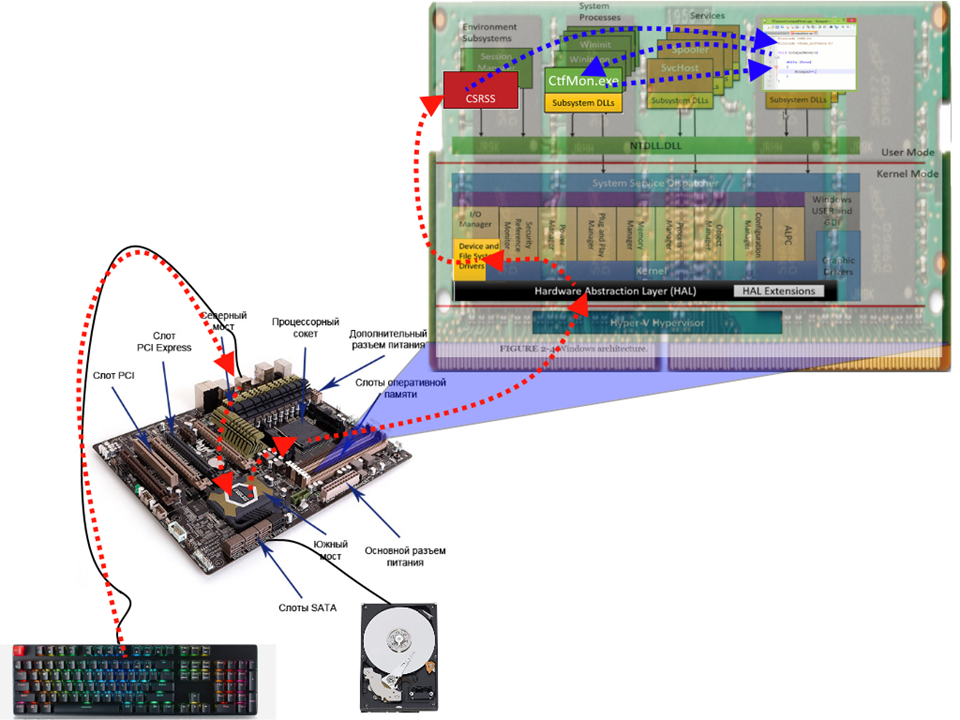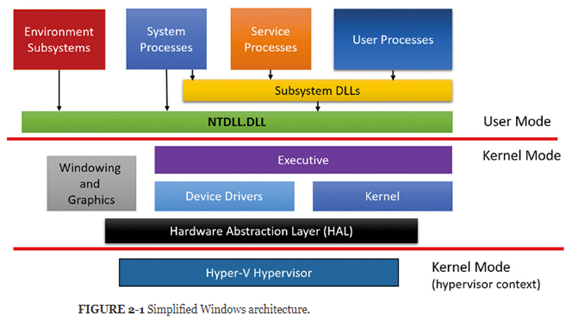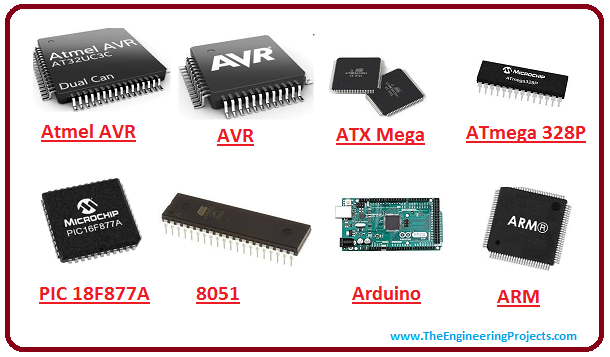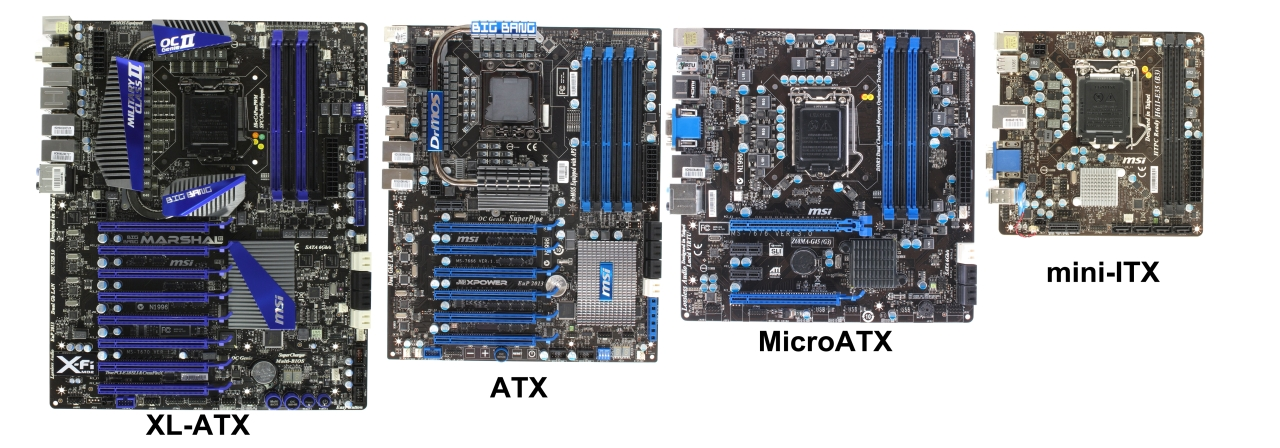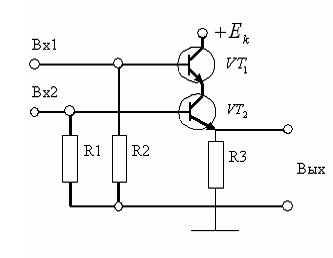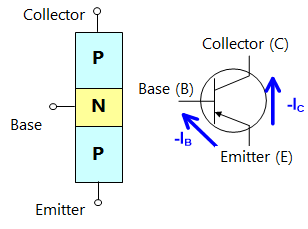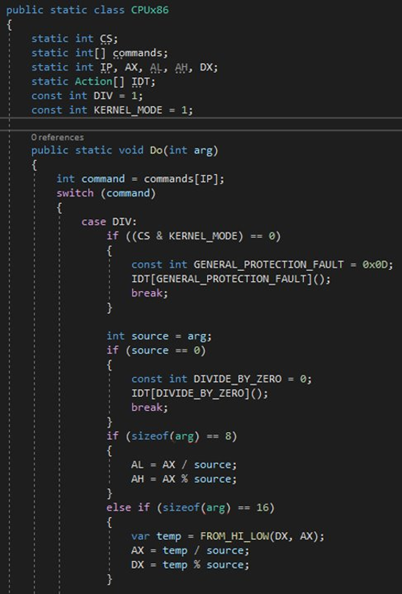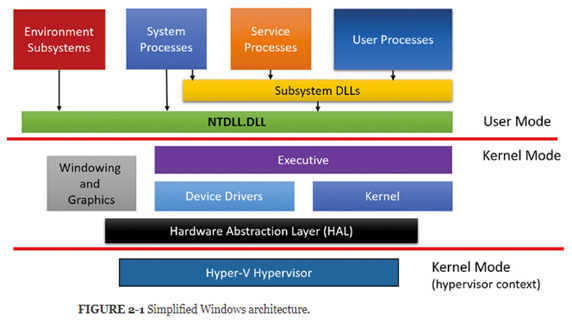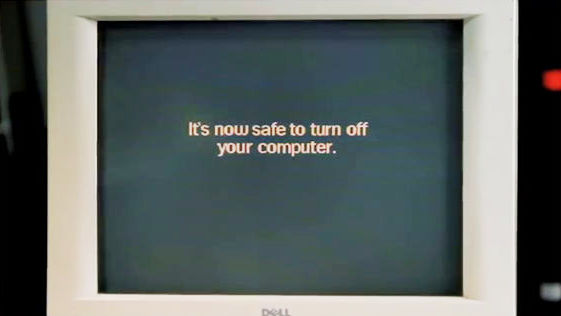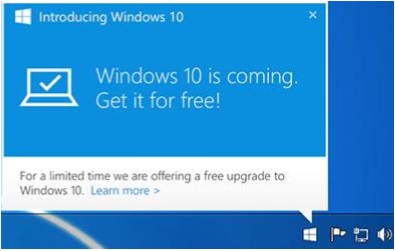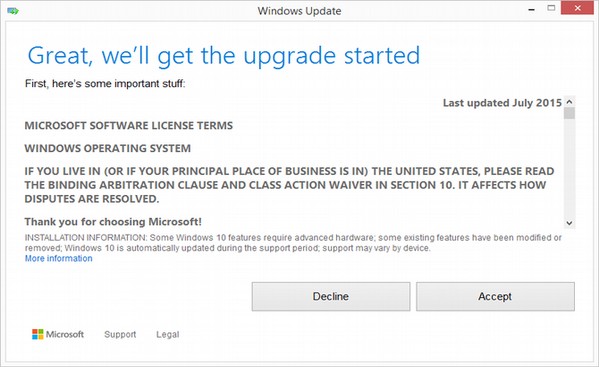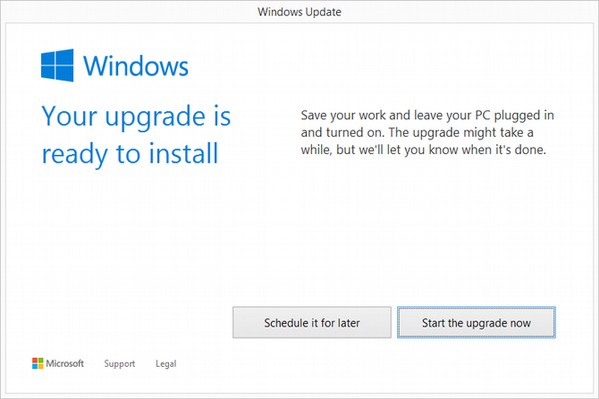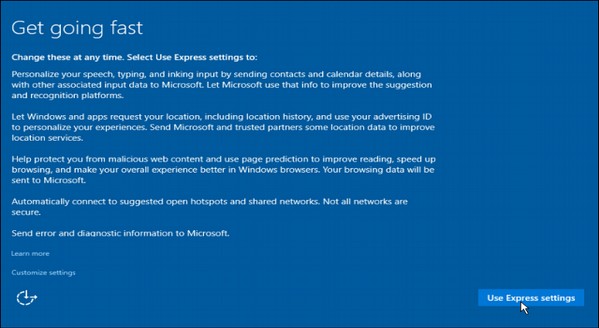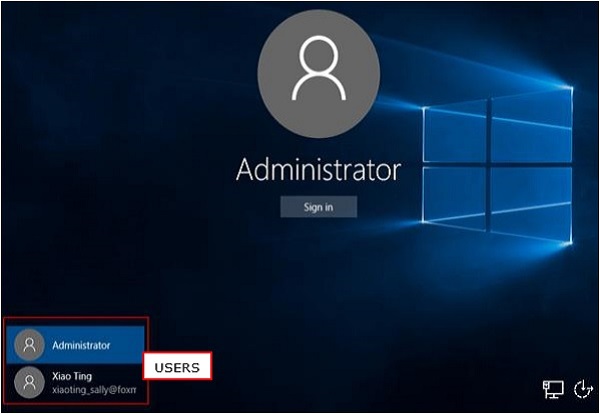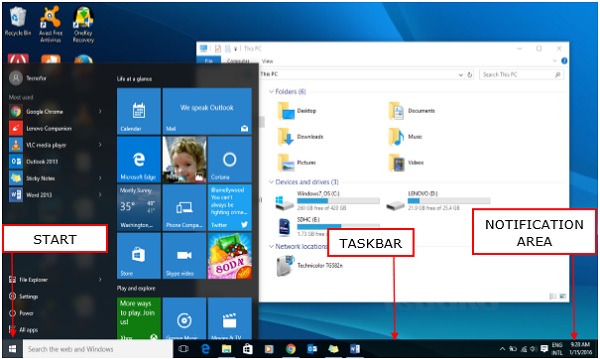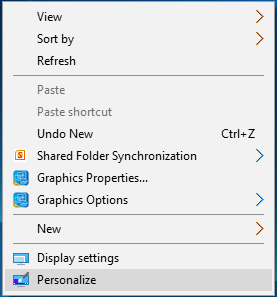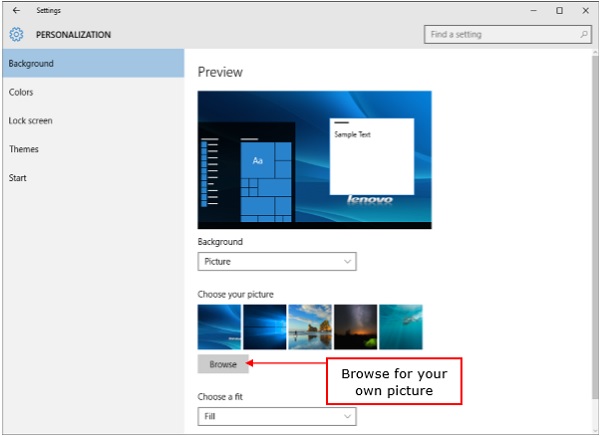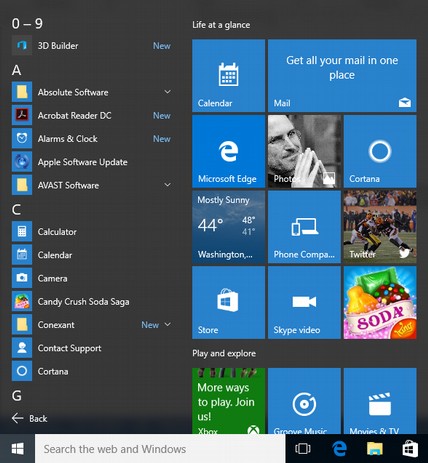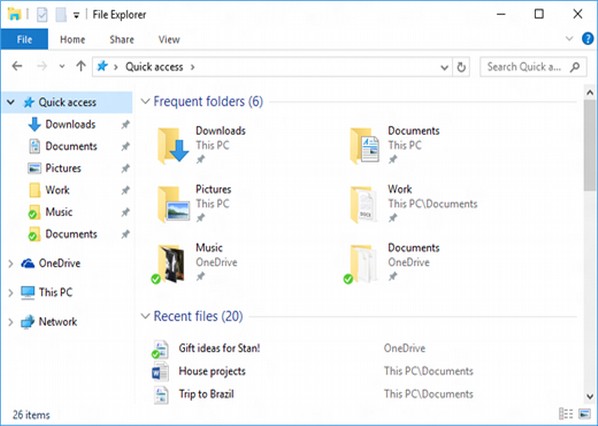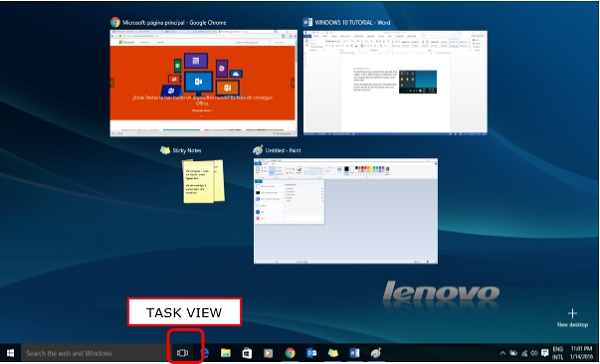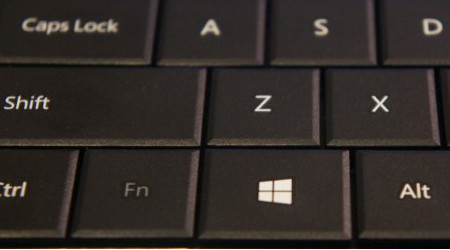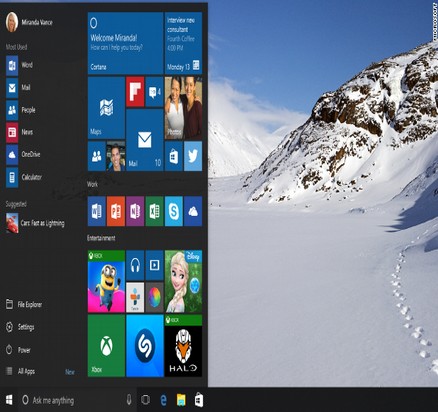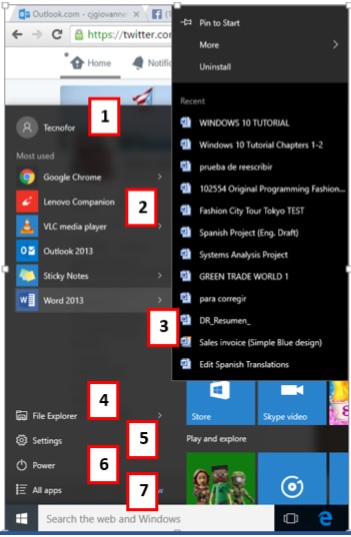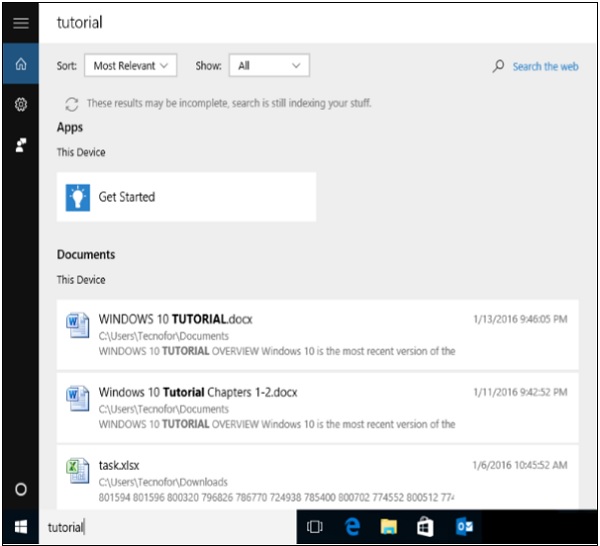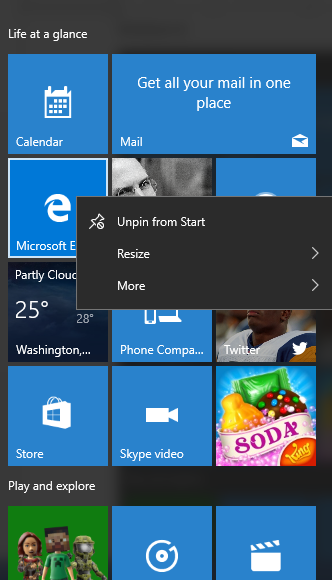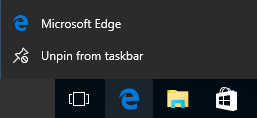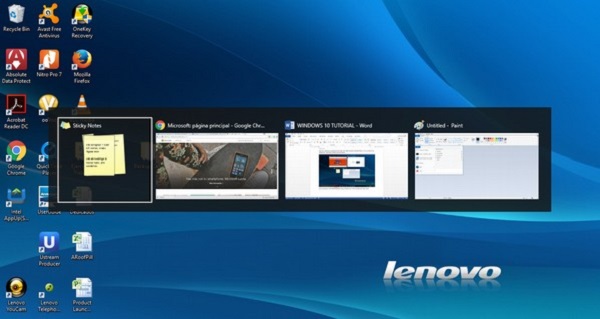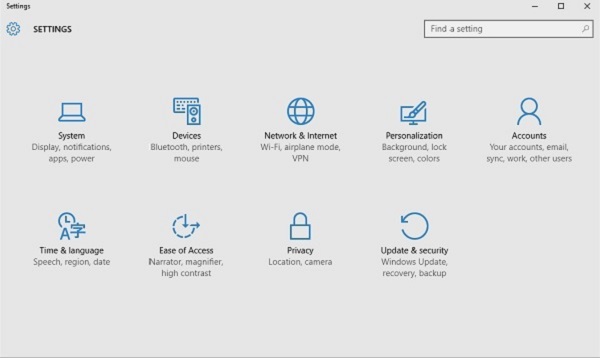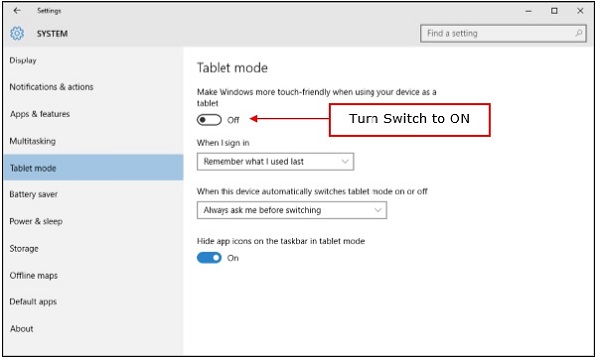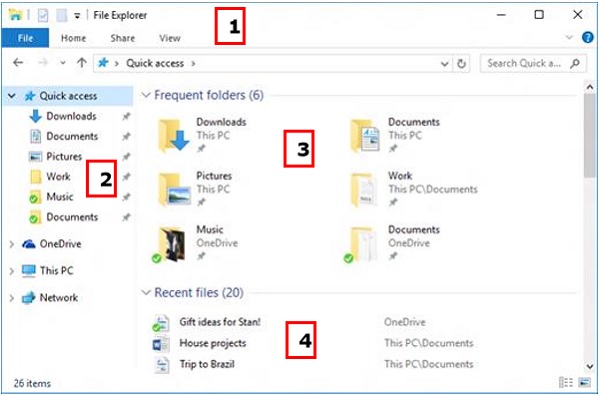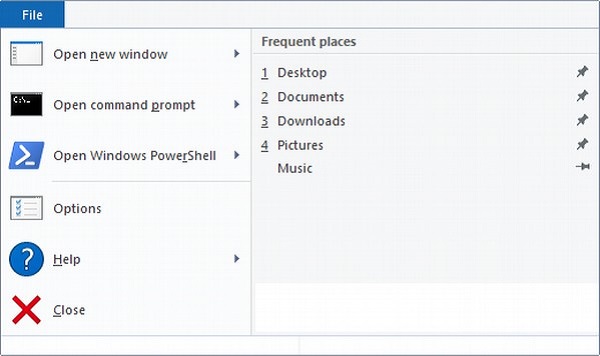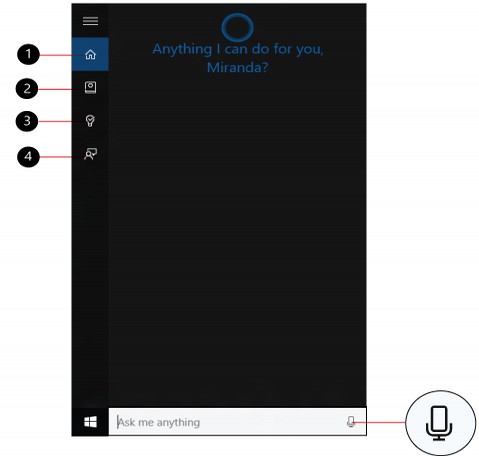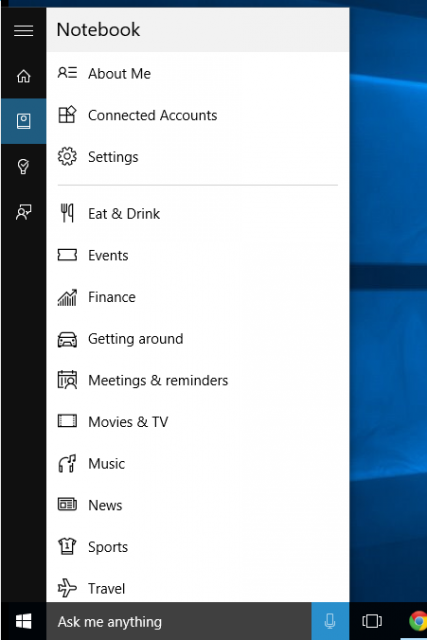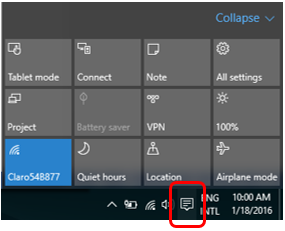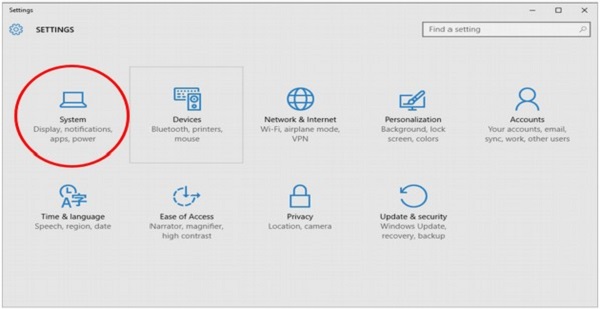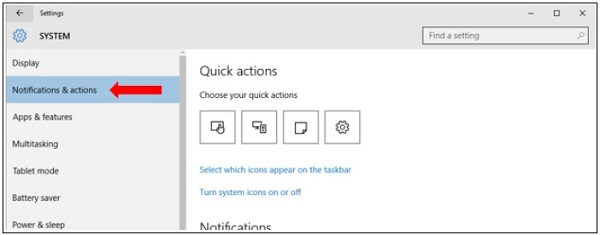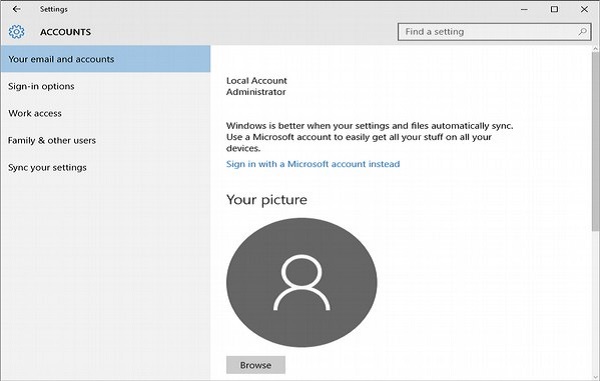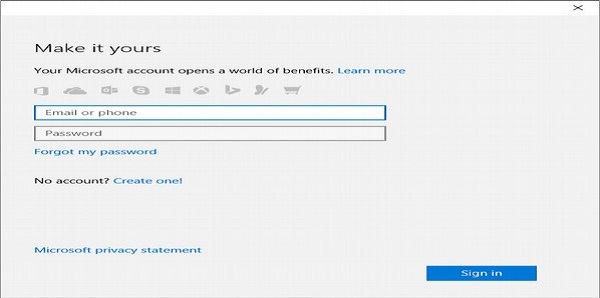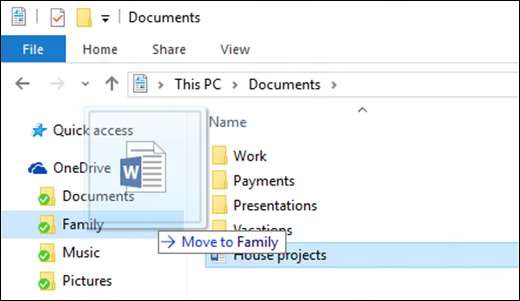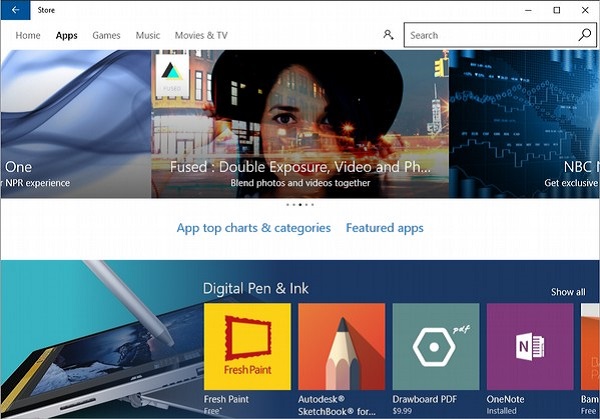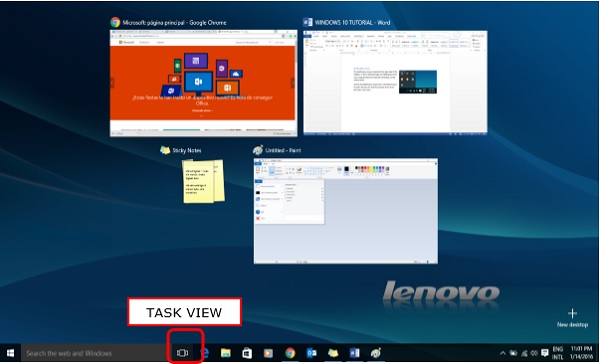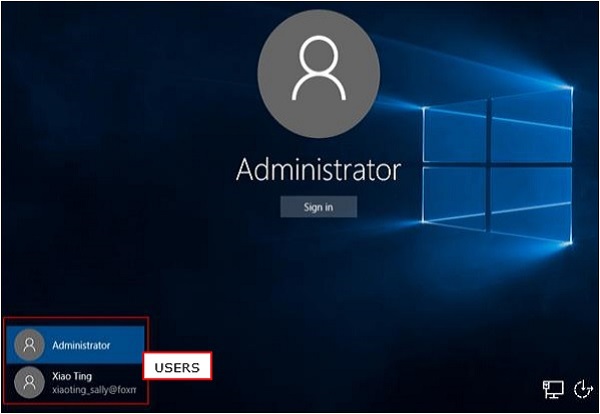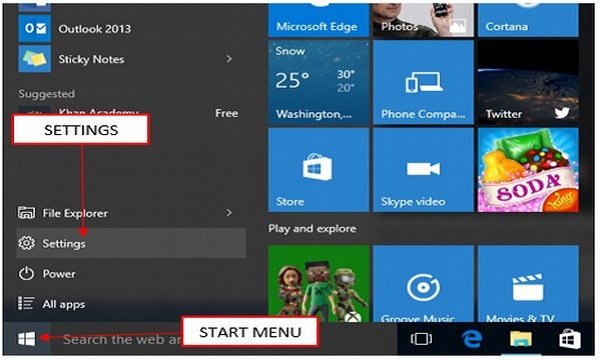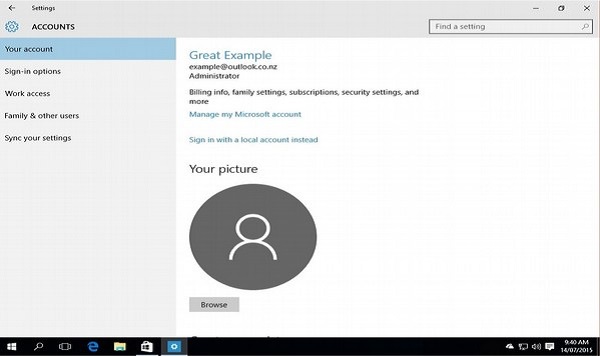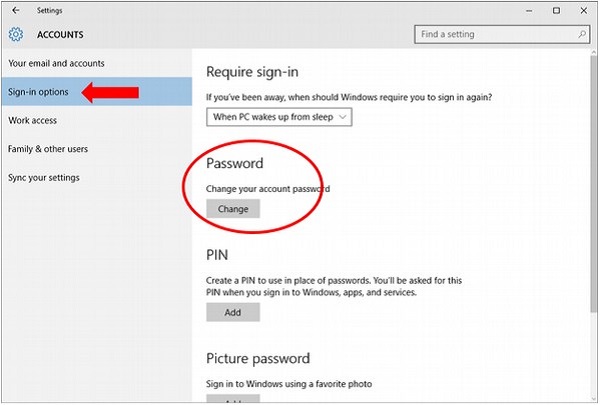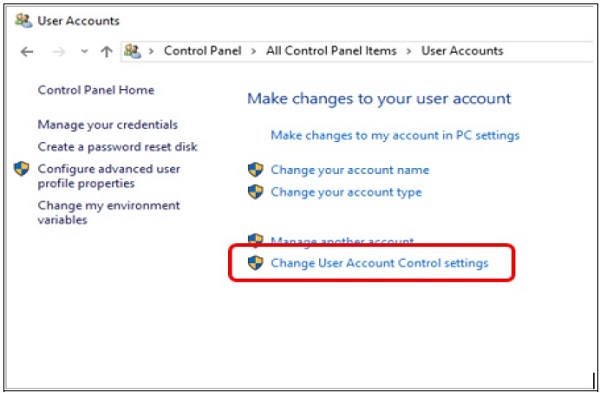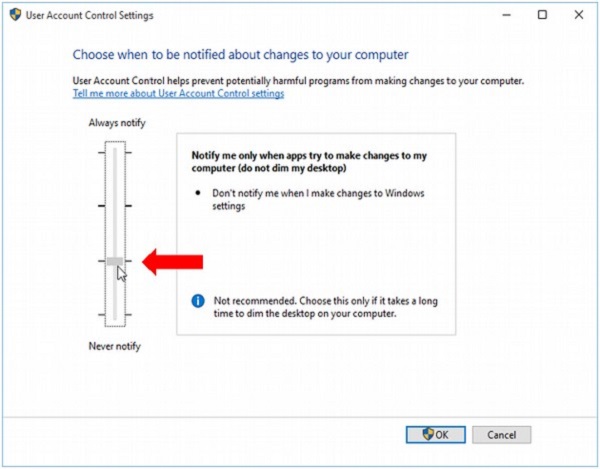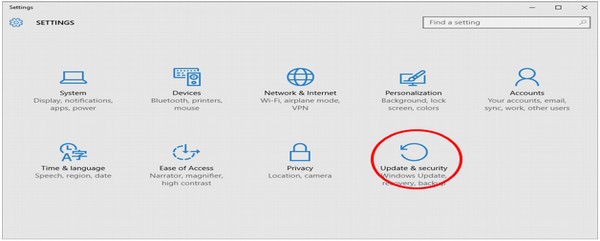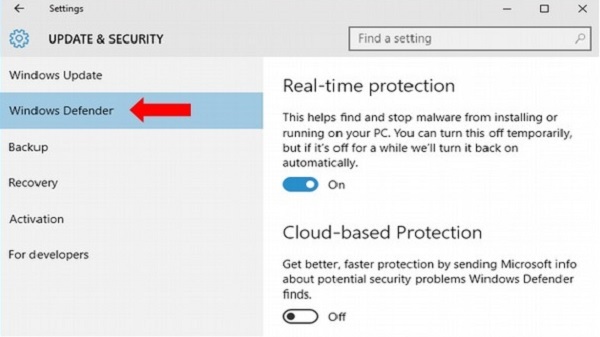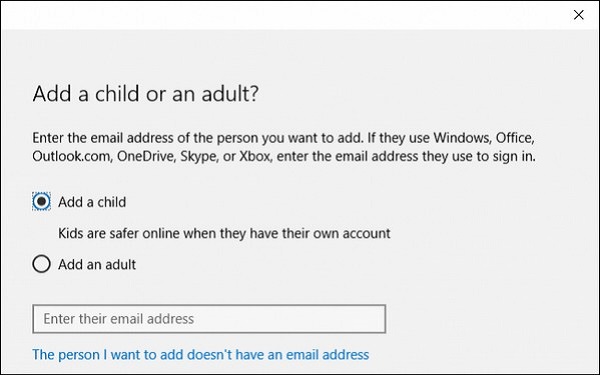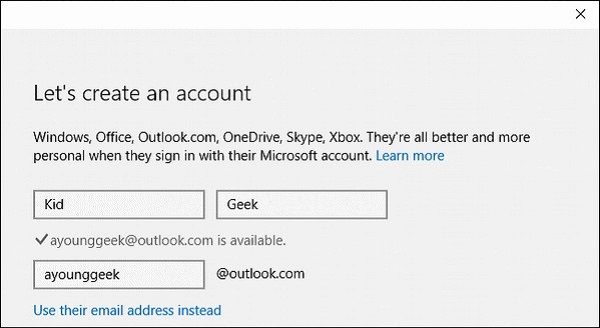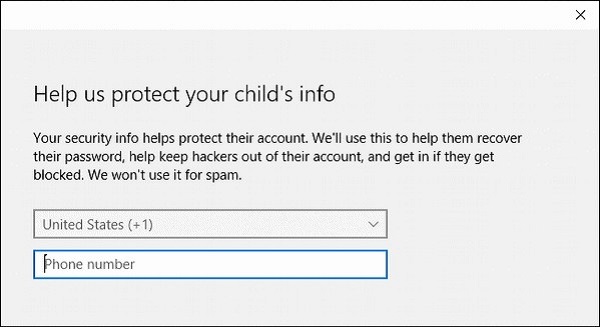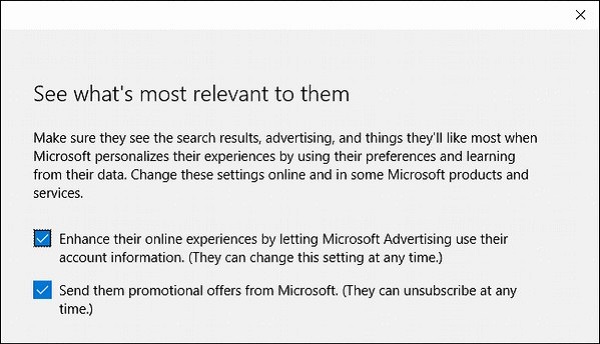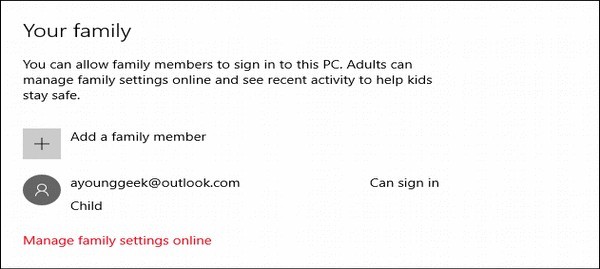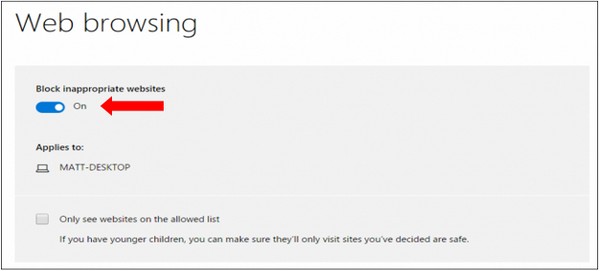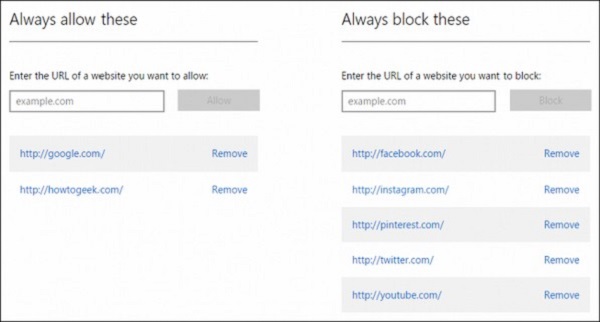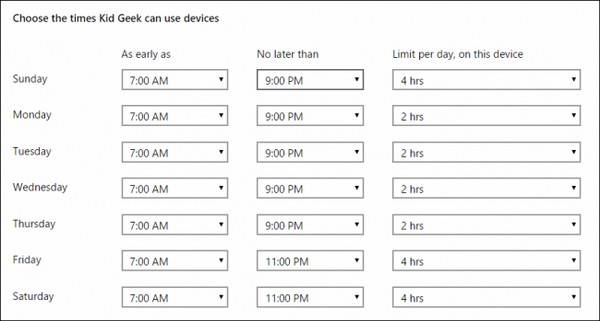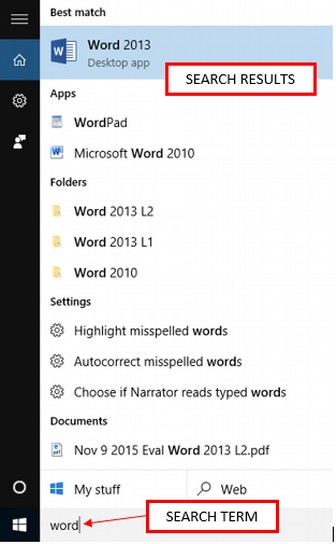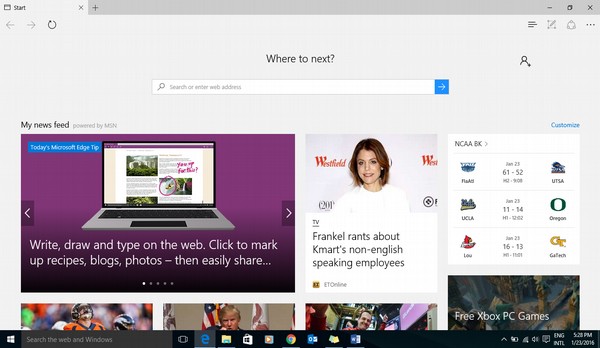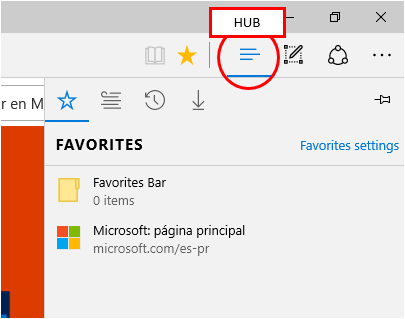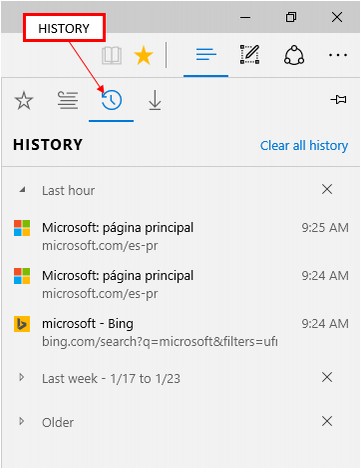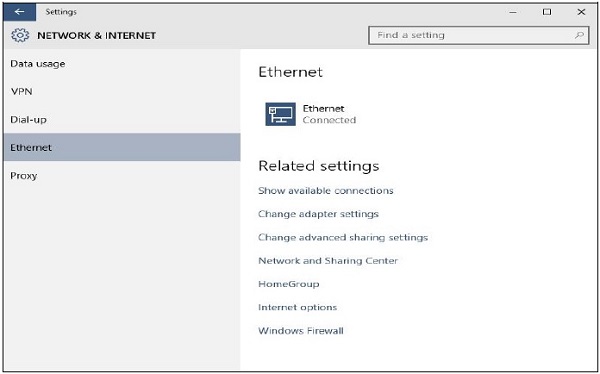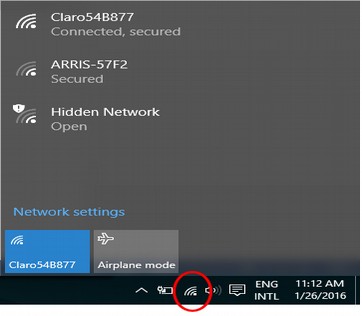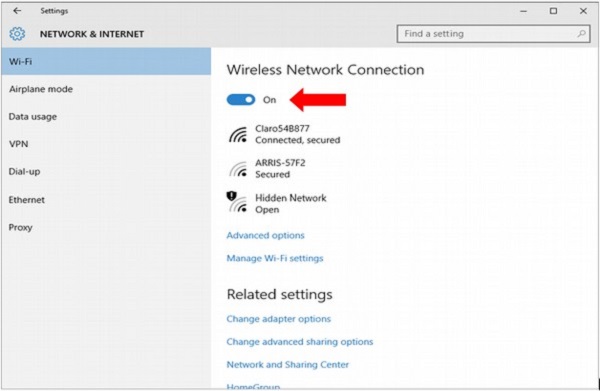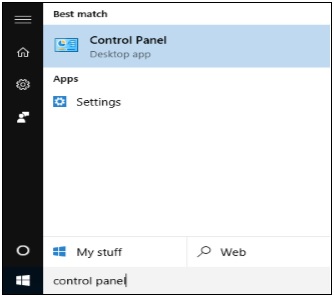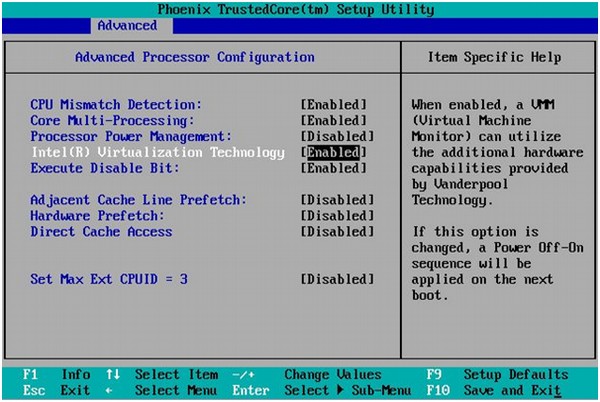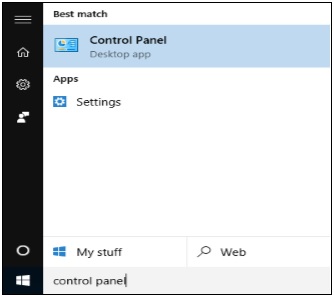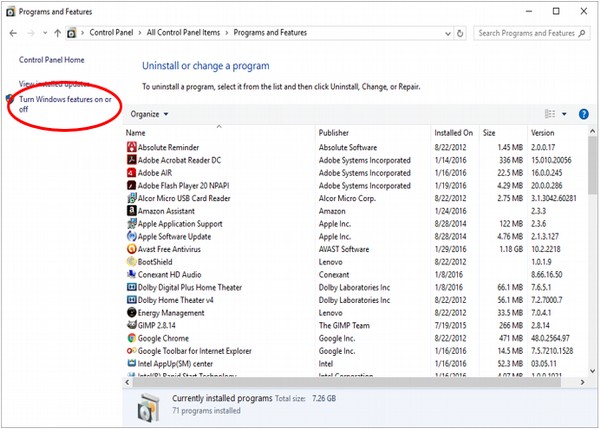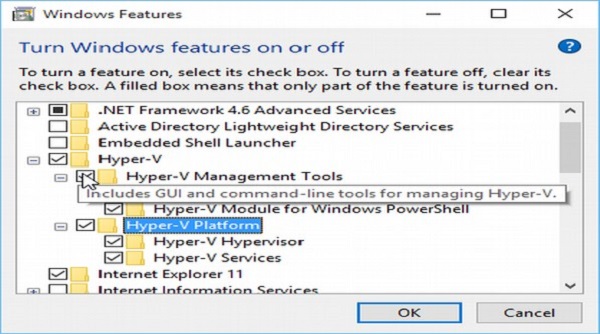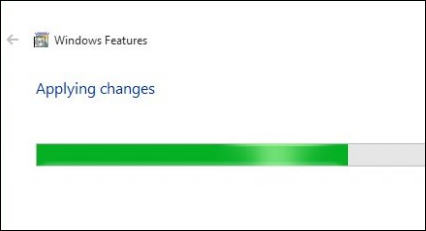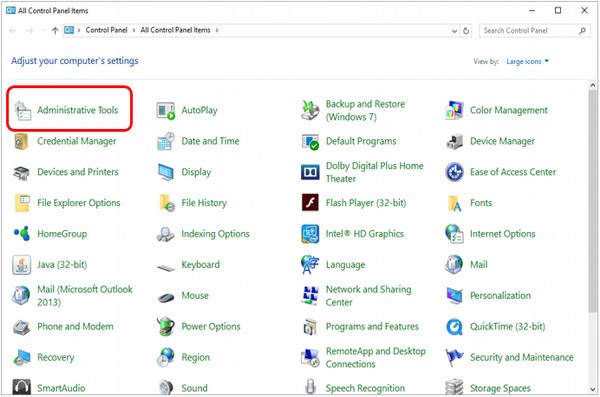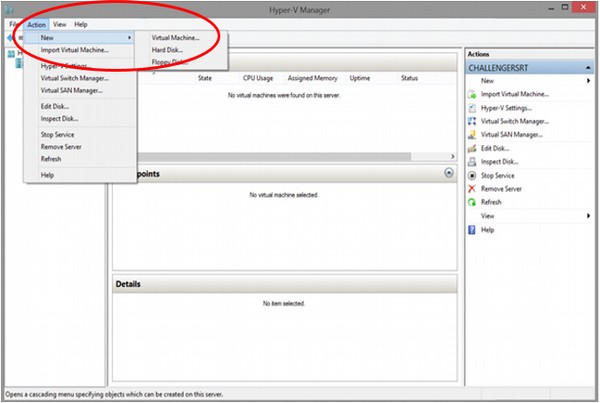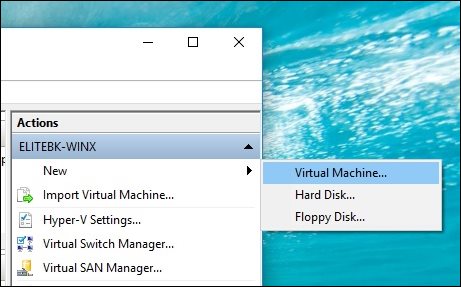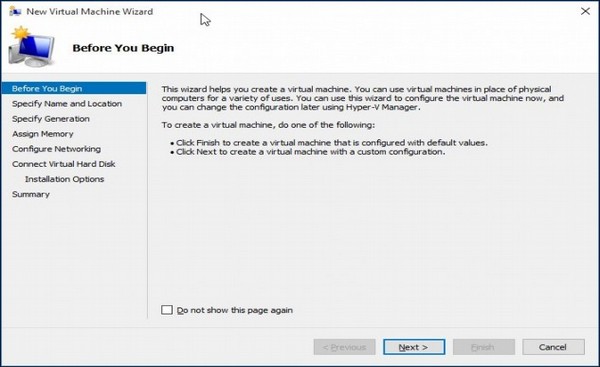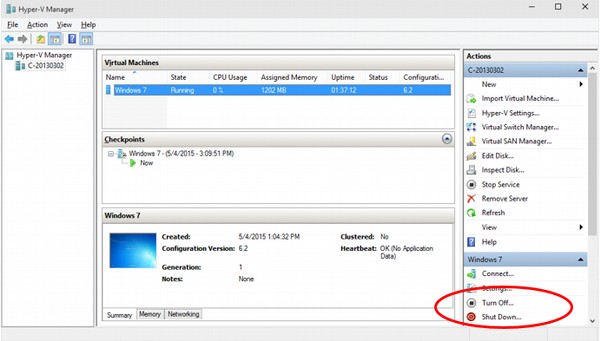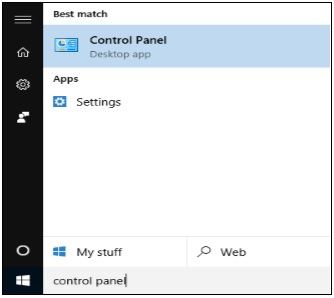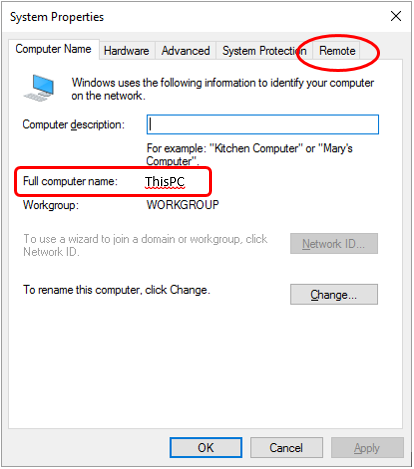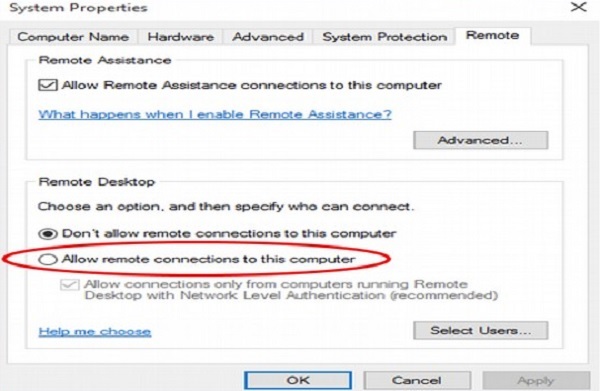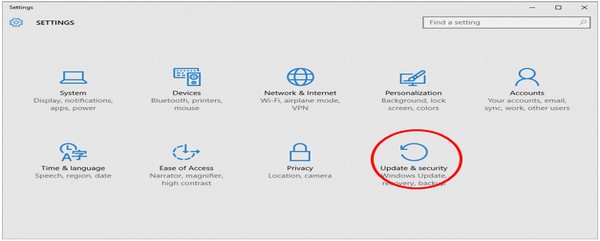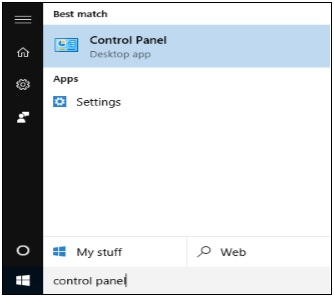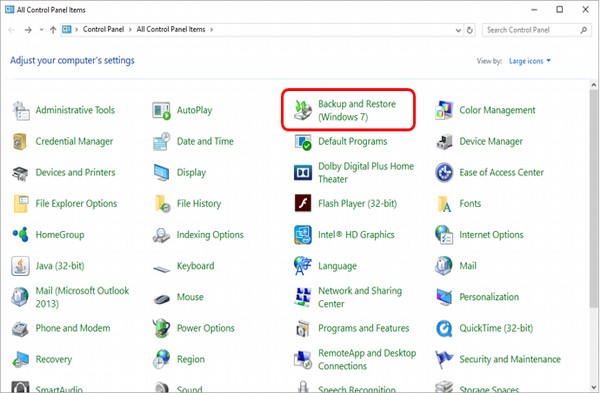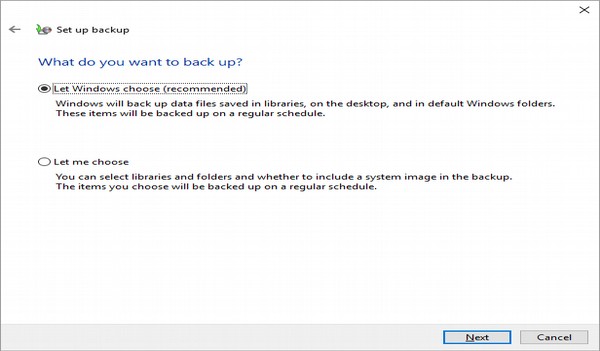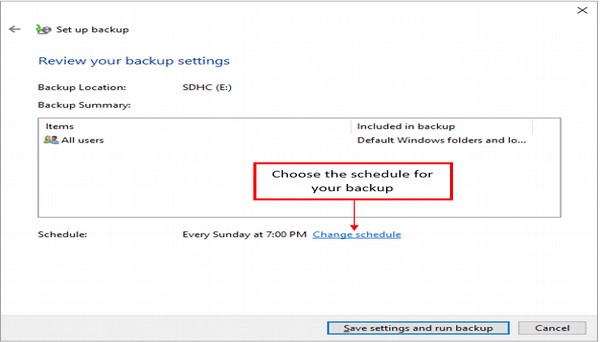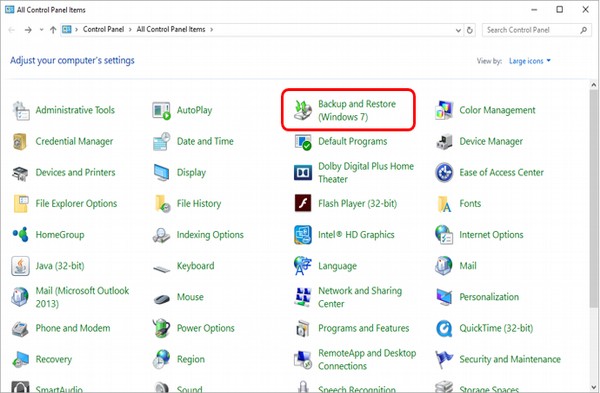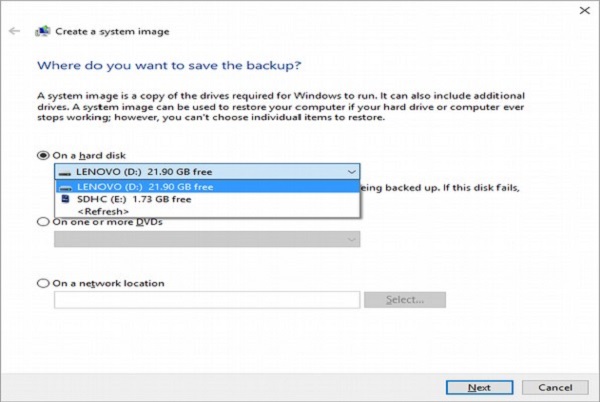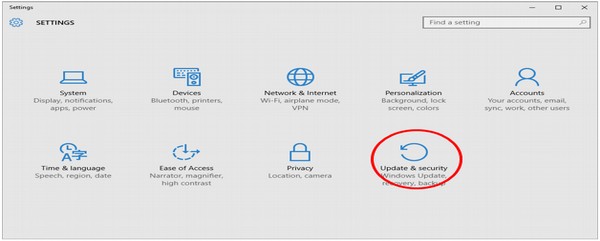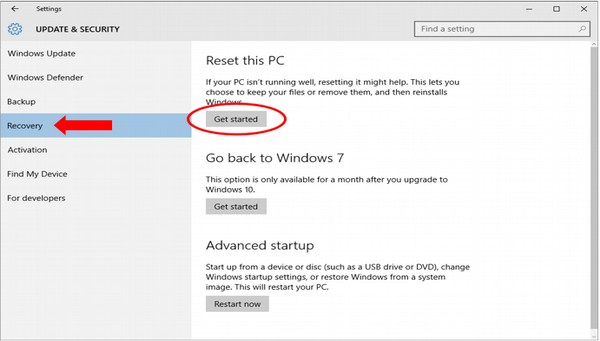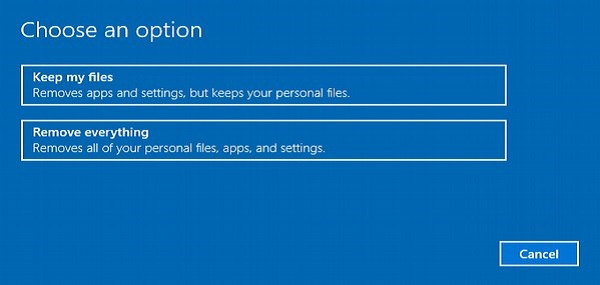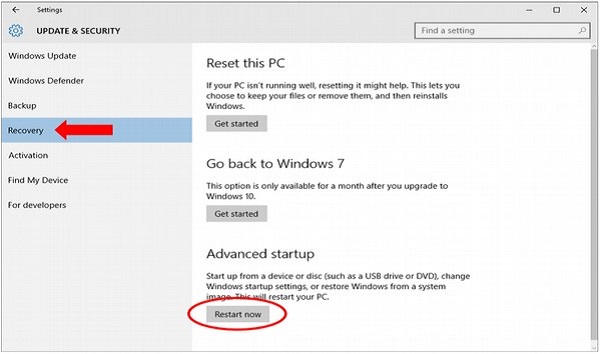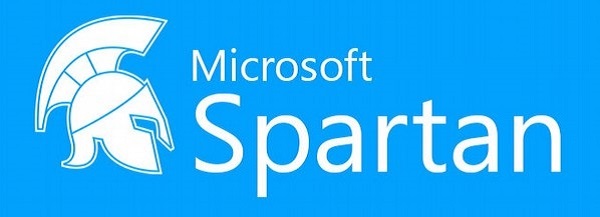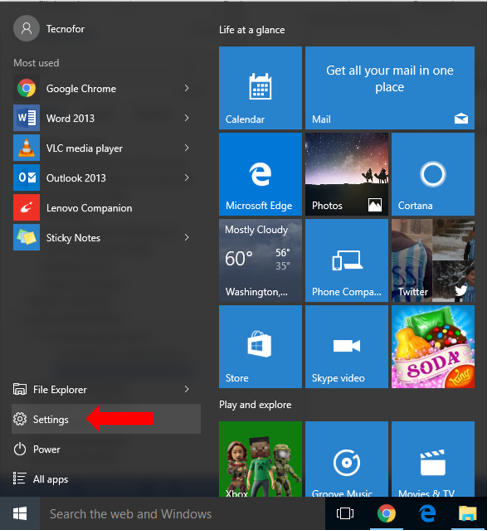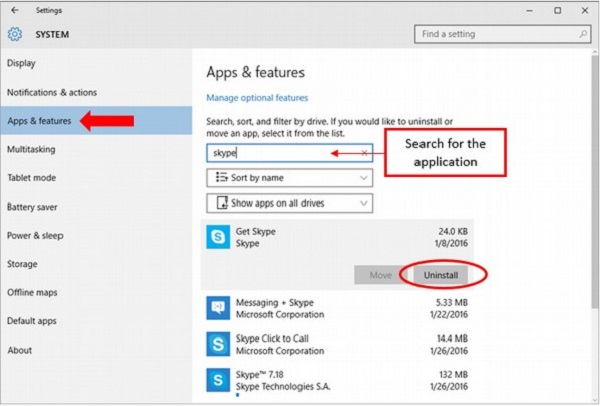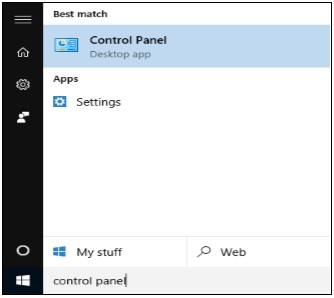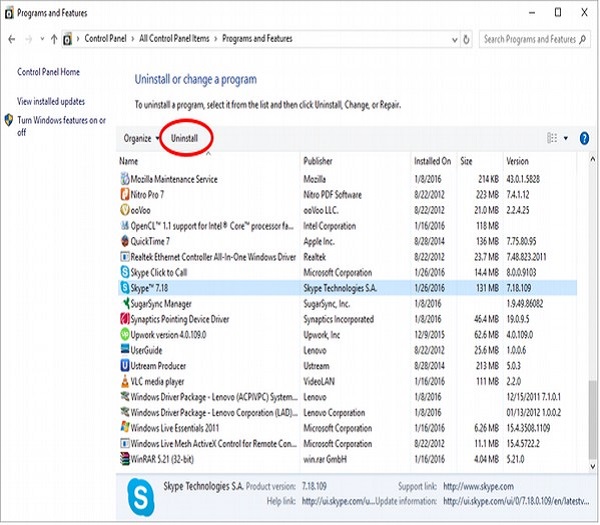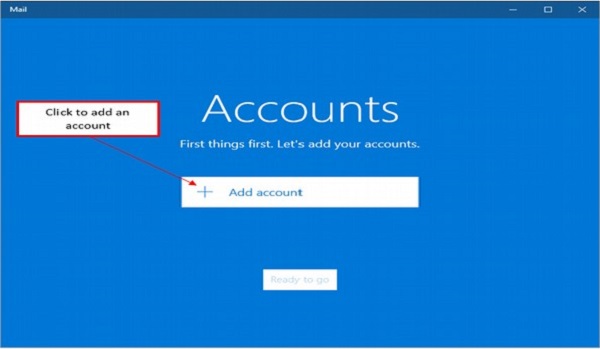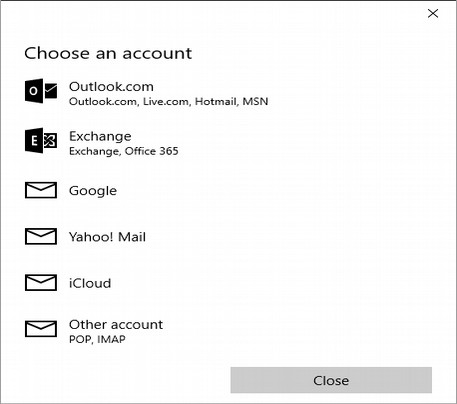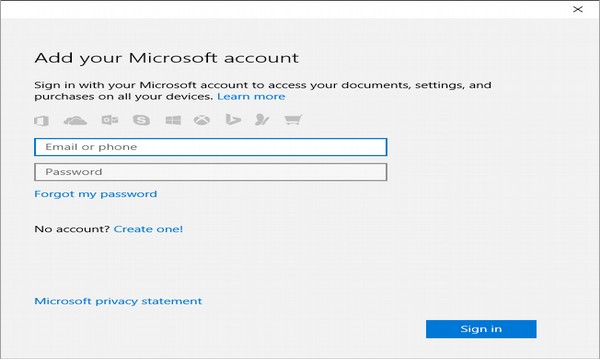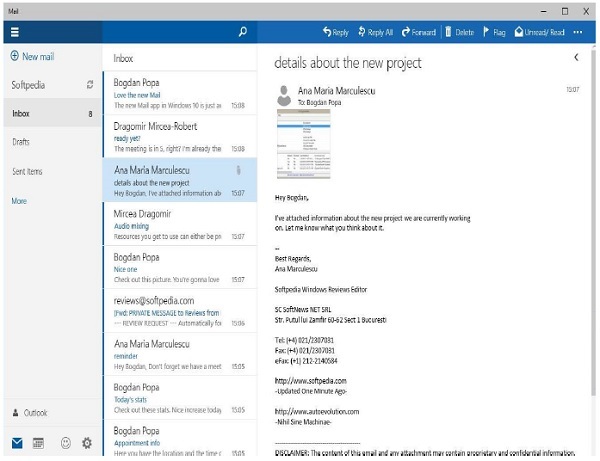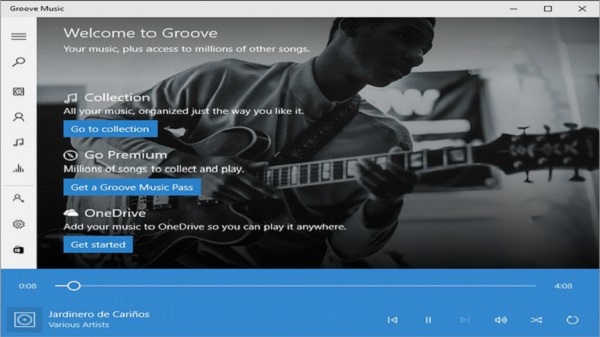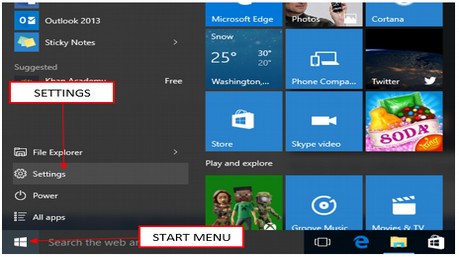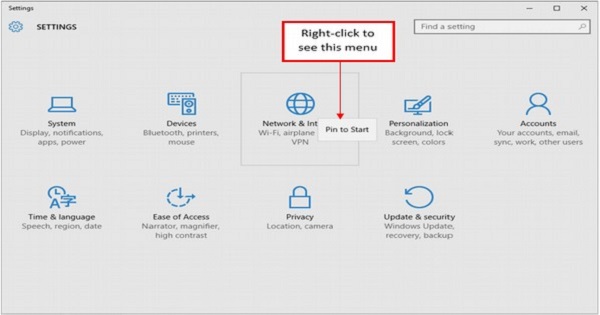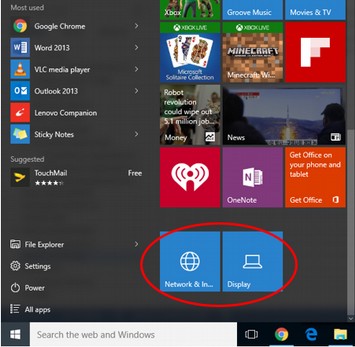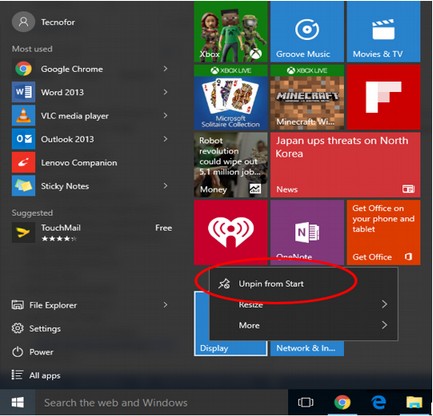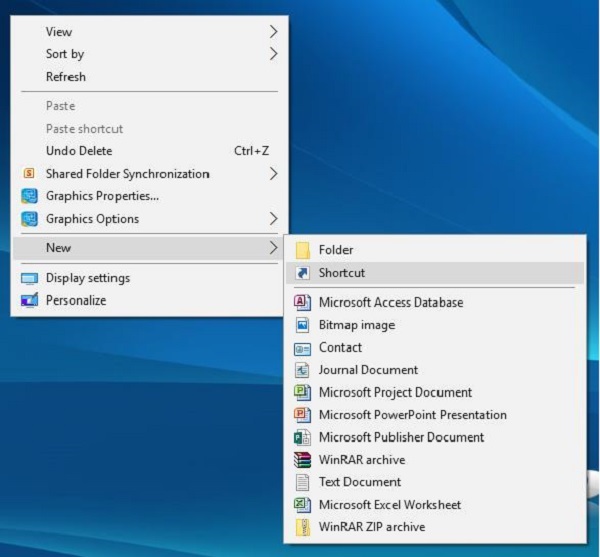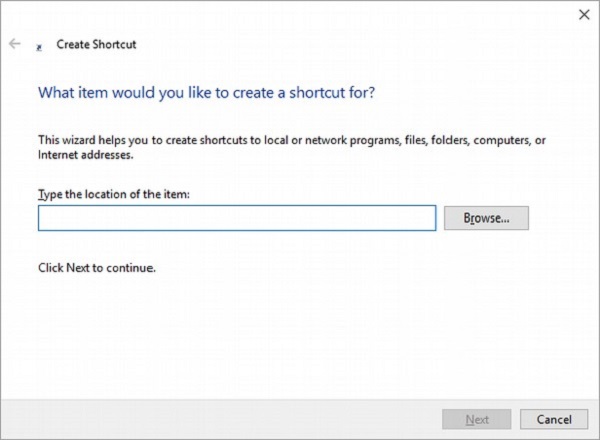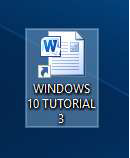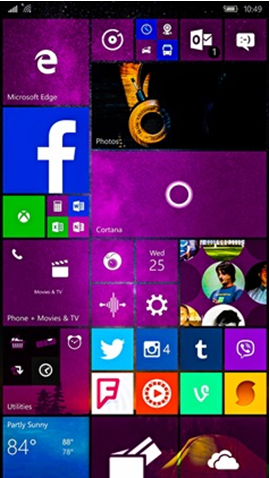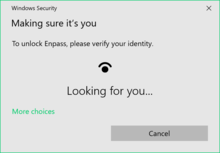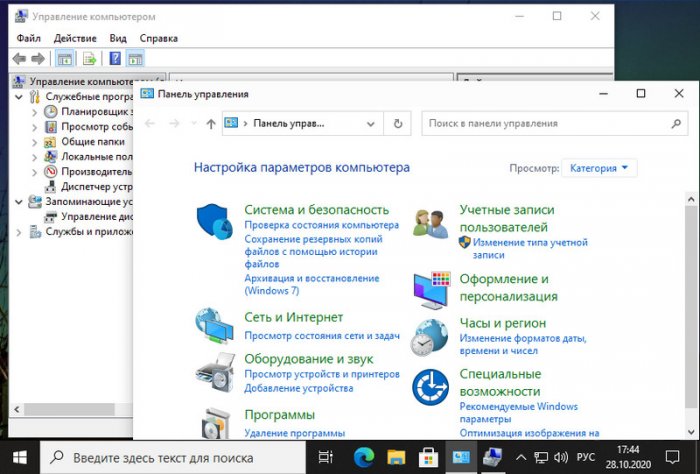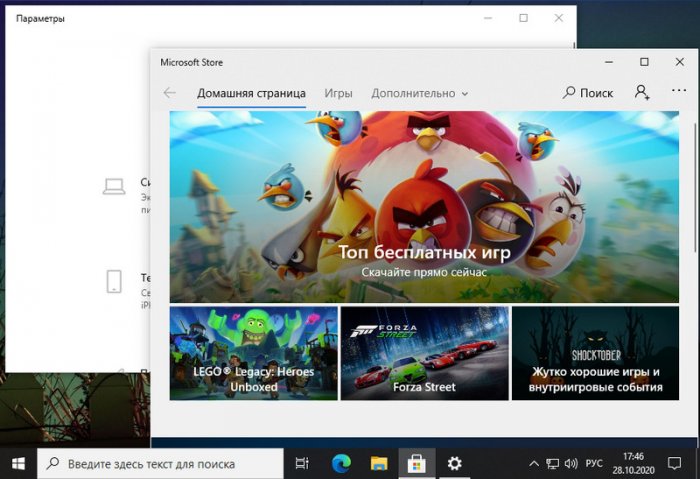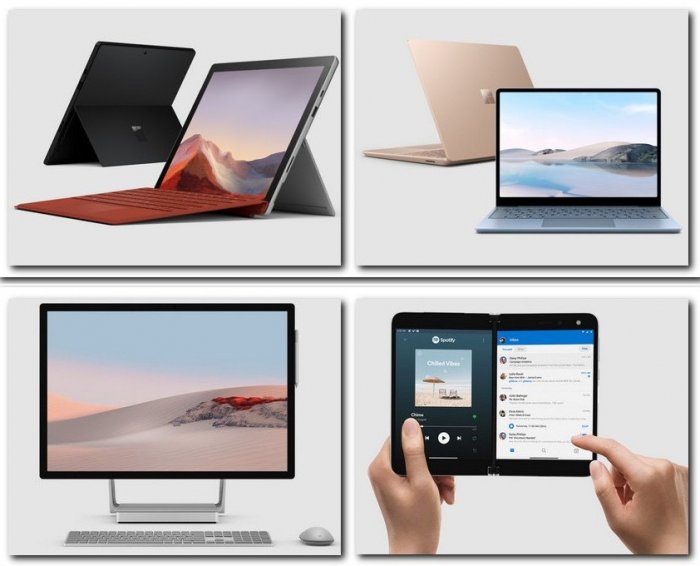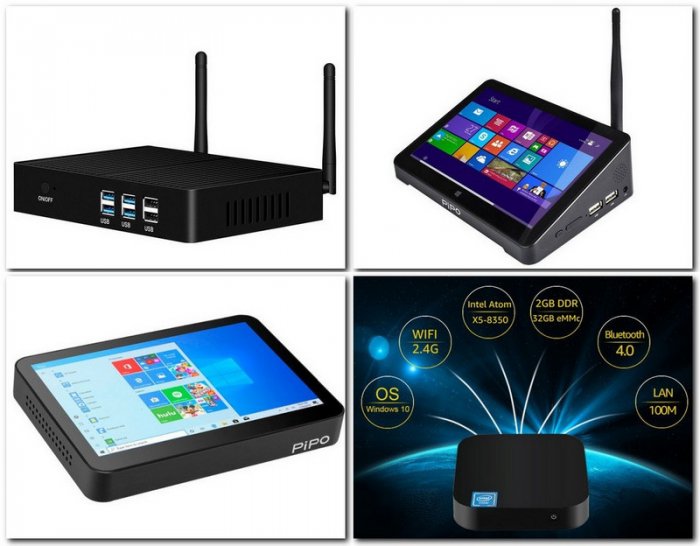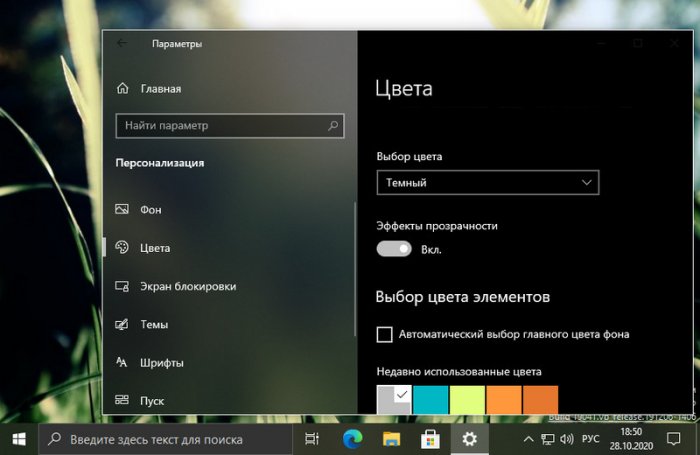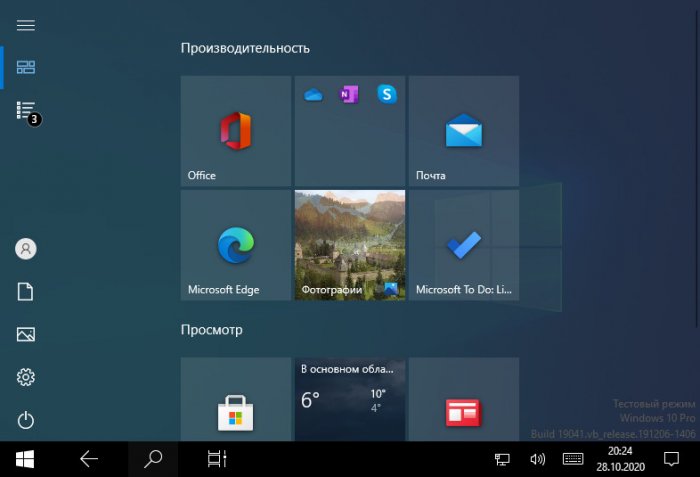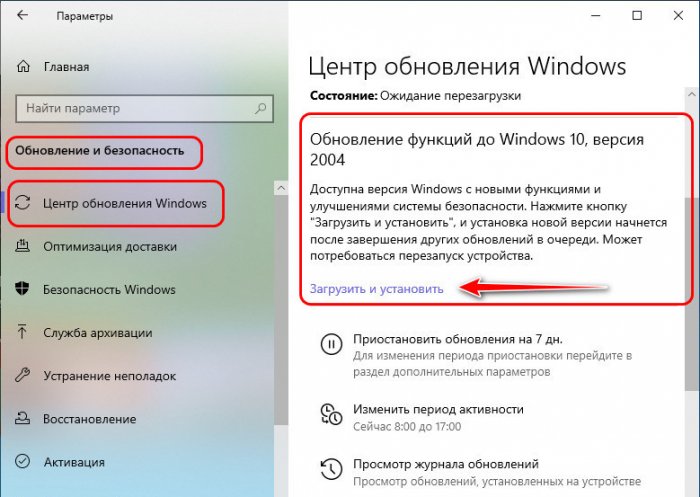Время прочтения
16 мин
Просмотры 99K
Меня зовут Андрей Артемьев, я работаю в Microsoft над ядром ОС Windows 10, ранее я работал над Windows 10x (WCOS), XBox, Windows Phone и Microsoft Edge. Я хочу популярно в образовательных целях рассказать о том как работает компьютер на примере клавиатурного ввода и Windows 10. Данный цикл статей рассчитан в первую очередь на студентов технических специальностей. Мы рассмотрим какой путь проходит информация о нажатой клавише от клавиатуры до отображения в Notepad.exe. В виду обширности и междисциплинарности темы в статьях могут быть неточности, о которых сообщайте в комментариях. Какая-то информация может быть устаревшей в виду скорости с которой развивается Windows.
Насколько глубоко мы погрузимся в тему?
Давайте для начала в общих чертах поговорим об уровнях на которых можно рассматривать компьютер. Каждый уровень основывается на предыдущем. Начнём с самого верха.
Уровень прикладных программ. Здесь находятся все пользовательские приложения, это браузер, Microsoft Office, блокнот, а также веб-сервер IIS, SQL Server, различное middleware вроде Java и .Net и все скриптовые языки, будь то Ruby, PHP или Bat-файлы.
Уровень операционной системы. ОС можно рассматривать как:
- Менеджер ресурсов — память, жёсткие диски, принтеры, экран, клавиатура ограниченные ресурсы которые совместно используются запущенными на компьютере программами.
- Виртуальная машина — файл это наглядный пример виртуального объекта. Он представляет абстракцию данных на диске, API для работы с ним и так же добавляет концепцию прав доступа. Вместо файла могла быть концепция контейнера данных и совершенно другого API. Таких виртуальных объектов в ОС много.
- Платформа — ОС предоставляет программные модели и примитивы для построения программ. К примеру Windows Drivers Framework позволяет быстро разрабатывать драйвера, окна в Windows используются для построения сложных пользовательских интерфейсов. Dll — предоставляет модель расширения функционала программы через плагины, а так же механизм для реализации читалки экрана через ловушки клавиатуры (см. LowLevelKeyboard hook).
Операционная система разбита на слои и компоненты. В общем виде архитектура Windows 10 выглядит так. О ней мы поговорим подробно чуть позже.
Уровень архитектуры компьютера. Он представлен материнской платой, которая имеет определённый форм-фактор, встроенные функции закодированные в микросхемах называемых чип-сетом и порты, через которые можно расширять функционал компьютера подключив графическую карту, сетевую карту, дополнительную оперативную память (RAM), жёсткие диски, клавиатуру и пр. Порты влияют на скорость работы и возможности компьютера, что и будет определять его назначение будь то сервер для обработки тысяч запросов в секунду, планшет для пользования Интернетом или игровой ПК с несколькими видеокартами. ОС абстрагирует особенности материнской платы.
Микросхемы выглядят как на картинке ниже и представляют собой мини-компьютер выполняющий простые программы для низкоуровневых задач, к примеру прочитать данные от клавиатуры и передать их дальше чтобы они достигли в конечном счёте процессора. Как правило реализованы в виде аналоговой непрограммируемой микросхемы или микроконтроллера, программируемого на языке С.
Материнскую плату можно рассматривать как колонию микросхем которые общаются между собой через шины и через них циркулируют данные от подключенных устройств к процессору и обратно. Чип-сет — это своего рода нервная система компьютера. Все чипы на материнской плате были изначально созданы чтобы работать друг с другом. Некоторые из них могут иметь особые функции, к примеру таймер или хранение настроек BIOS. Пожалуй самый важный из них тот что имеет встроенную программу (прошивку, BIOS, UEFI) которая начинает выполняться как только появляется электричество. Она находит жёсткий диск с загрузчиком Windows и передаёт тому управление который в свою очередь запускает исполняемый файл ОС, который можно назвать Windows10.exe, на самом деле NtOsKrnl.exe. BIOS знает что искать благодаря соглашению между производителями железа и операционных систем.
Вокруг материнской платы можно собрать мобильный телефон, игровую приставку, серверную станцию или умное устройство. На картинке ниже распространённые форм-факторы материнских плат.
Уровень микроархитектуры представлен процессором (CPU), это сердце материнки и весь чип-сет нужен для обслуживания CPU. Процессор это компьютер в компьютере, более мощный и продвинутый микроконтроллер которому не нужна прошивка, потому как поток команд подаётся на лету, когда планировщик потоков поменял контекст процессора. Функционал процессора делится на подсистемы, к примеру компонент занимающийся математическими и логическими операциями, математический сопроцессор, кэш. Какие-то из них раньше были отдельным чипом на материнской плате, но сейчас их сделали частью ЦПУ, например контроллер прерывания и микросхема под названием “Северный мост” что увеличило скорость работы.
Микроархитектура это не то же самое что архитектура. Весь функционал CPU разделён на компоненты, которые работают сообща. Эти компоненты и их взаимодействие и есть микроархитектура. На блок-схеме ниже они представлены цветными прямоугольниками и квадратиками.
Архитектура процессора это по сути документ который описывает какой функциональностью он должен обладать для того чтобы соответствовать к примеру архитектуре x86, x64 или ARM применяемой на мобильных устройствах. В этом документе описано какие должны поддерживаться команды, назначения регистров и логика работы. Создатели процессоров Intel, AMD, Эльбрус могут реализовывать эту функциональность как угодно и добавлять к ней новые возможности в виде команд, регистров, флагов, прерываний и если ОС знает о них то может использовать. В терминах ООП архитектура ЦПУ — это интерфейс, а микроархитектура — его реализация.
Логические схемы. Цветные прямоугольники с блок-схемы CPU состоят из логических схем, которые производят свои операции на последовательностях нулей и единиц. Процессор видит все данные и команды в виде битов (0 и 1), по формуле любое десятичное число можно представить в виде последовательности 0 и 1, а вот что значит конкретное число зависит от контекста. Это может быть код, цифра, буква. Арифметическое и логическое устройство (ALU) умеет производить сложение двух чисел через побитовые операции. Побитовые алгоритмы сложения, вычитания, умножения и деления давно известны, разработчикам логической схемы их только надо эффективно реализовать.
Цифровые схемы работают с данными на уровне нулей и единиц, а аналоговые полагаются на эксплуатирование законов физики. Они выполняют простейшие манипуляции над битами, такие как сдвиги, AND, OR, XOR. Через эти примитивы реализуются более сложные операции. На картинке ниже представлен аналоговый оператор AND реализованный через транзисторы. На выходе схемы ненулевое напряжение будет только если оно есть на обоих входных контактах (Вх1 и Вх2), иначе ноль вольт. Точно так же работает оператор && в C#. Цифровые схемы в конечном счёте основаны на аналоговых. Физически логические элементы в логических схемах могут быть реализованы не только электронными но и механическими, гидравлическими, оптическими и другими способами.
Уровень радиоэлементов. Физически аналоговые схемы полагаются на радиоэлементы, которые собственно и эксплуатируют законы физики. Преимущественно это полупроводники, т.е. в определённых условиях они могут проводить электричество, а могут и нет. Диод проводит ток только в одном направлении, если его выпаять, развернуть на 180 и впаять обратно, то ток через него проходить не будет. Транзистор пропускает ток только если есть напряжение на управляющей ножке. Человечество научилось делать транзисторы микроскопическими и потому их можно размещать на маленькой плате миллионами. На картинках ниже полупроводниковые радиоэлементы и обычный транзистор рядом с нано транзистором под электронным микроскопом.
Уровень законов физики. И наконец самый нижний уровень — это уровень законов физики которые заключены в полупроводниковые радиоэлементы.
Мы будем много говорить про уровень ОС и чуть меньше про архитектуру компьютера, микроархитектуру, аналоговые схемы и радиоэлементы. К последней части у вас должно быть понимание как это всё работает вместе.
Основы Операционной Системы
Когда мы проходили в универе программирование на ассемблере у многих студентов был ступор от таких умных слов как “режимы ядра и пользователя”, под которыми на самом деле скрывается хорошо всем известная ролевая система аутентификации, на всех сайтах есть как минимум “Админ” имеющий доступ ко всем страницам и “Пользователь” имеющий ограниченный доступ. Точно так же роль “Ядро” имеет доступ ко всем возможностям CPU, а роль “Пользователь” может вызывать не все команды процессора и не со всеми аргументами. Поверх этой ролевой модели по принципу клиент-серверной архитектуры построена операционная система, где сервер это ядро, которое и реализовывает функционал ОС, а клиент — это пользовательские программы. В мире Web клиент и сервер разделены физически — это два разных компьютера общающихся по сети. В ОС клиент и сервер живут на одной машине и на одном железе. У сервера есть некий API который позволяет клиентам изменять его состояние, к примеру Twitter API позволяет создавать посты, логиниться и загружать ленту твитов в мобильный клиент. У Windows есть Win API, только более громоздкий в виду более широкого круга задач, на сегодняшний день у винды примерно 330 000 API плюс API для UWP apps. Если концепции Твитера более менее всем понятны — пост, пользователь, фид — то концепции ОС могут потребовать некоторого углубления в её внутренности. Поэтому API Windows могут быть трудно понятными без понимания внутреннего устройства ОС.
На самом деле под ядром понимают три разные вещи. Ядро как весь код ОС. Ядро как подсистема которая отвечает за механизмы ОС, такие как планировщик потоков, переключение контекста, обработка прерываний, свап виртуальный памяти на физическую (Kernel) и ядро подсистемы для поддержки других ОС — CSRSS.exe (Windows), PSXSS.exe (POSIX), OS2SS.exe (OS/2) или WSL (Windows SubSystem for Linux). В данном контексте понимается первый смысл — весь код ОС.
Когда на экране появляется окно, то в серверной части ОС (режим ядра) появляется структура данных которая описывает это окно — его положение на экране, размеры, текст заголовка, оконная функция через которую ОС даёт приложению среагировать на события. Поскольку подсистем в ОС много, то и структур данных описывающих один объект может быть несколько, к примеру информация о пользовательском процессе есть в компонентах:
- Executive — здесь логика работы ОС. В этом слое проверяется что могут и не могут делать процессы. Здесь хранится инфа о родительском процессе, параметры старта процесса (Process Environment Block), привязанный аккаунт пользователя, имя exe файла процесса.
- Kernel — здесь реализованы механизмы ОС, такие как планировщик потоков. Здесь хранится сколько времени процесс проводит в режиме пользователя и ядра, к каким процессорам привязаны его потоки, базовый приоритет потоков процесса.
- Windowing subsystem — инфа о GDI объектах которые используются для рисования в окне. Это такие примитивы как кисти, pen и пр.
- DirectX — всё что имеет отношение к DirectX: шейдеры, поверхности, DX-объекты, счётчики производительности GPU, настройки памяти графической памяти.
- Подсистема Windows которая представлена процессом CSRSS.exe (Client Server Runtime SubSystem). Windows ранее поддерживал ОС POSIX (процесс PSXSS.exe) и OS/2 (OS2SS.exe). В те времена возникла идея сделать и Windows такой же подсистемой, но эта было медленно и поэтому скоро часть CSRSS.exe перенесли в win32k.sys, который сейчас разбит на несколько файлов — win32k.sys, win32kbase.sys и win32kfull.sys. Здесь хранится информация о Process Group Data, Shutdown level, Session Data и пр.
Поддержка POSIX и OS/2 скорее была формальной, потому как для переноса программы с этих ОС нужно было найти исходный код и перекомпилировать его специальным образом чтобы получился exe-файл в котором все вызовы к API ОС перенаправлялись в PSXdll.dll (NETAPI.DLL и DOSCALLS.DLL для OS/2 и User32.dll для Windows приложений), которая была тонкой обёрткой над API Windows. Состояние некоторых API хранилось в процессе подсистемы PSXSS.exe (OS2SS.exe). Поскольку не все API можно сопоставить 1 к 1, то работала такая программа нестабильно. В Windows 10 была добавлена поддержка Linux и она работает совсем по-другому. Подсистема Linux хостится в режиме ядра и разница между Windows Subsystem for Linux и Linux примерно как между разными билдами. Специально для WSL был введён новый тип процессов — PICO-process.
Что такое компонент? Это логически сгруппированный функционал. Компонентом можно назвать ООП-класс, dll, папку, набор функций с общим префиксом, пространство имён, слой в архитектуре.
Более подробно о разделении на клиент-сервер
Разделение на клиент и сервер реализовано при помощи встроенной функциональности CPU, разделения памяти и программных проверок.
Производители оборудования сотрудничают с разработчиками ОС, поэтому в процессоре есть механизмы созданные с учётом потребностей создателей операционных систем. Во всех современных процессорах реализован механизм ролей пользователя, где под пользователем понимается исполняемый в данный момент код. В веб приложениях роль залогиненого пользователя хранится в какой-то переменной и помимо понятного названия Admin или User имеет Id этой роли который чаще и используется при авторизации, потому как сравнивать числа быстрее и проще чем строки. В процессоре роль текущего пользователя хранится в поле которое называется “кольцо безопасности” (Security Ring), а не “CurrentUser.Role.Id”. В большинстве процессоров это поле принимает четыре значения от 0 до 3. Windows использует 0 для роли которая называется “Режим Ядра”, потому как это самый привилегированный режим и самое большое значение для роли “Режим Пользователя”, потому как это самая ограниченная роль. Остальные роли не используются потому как различие между 0 и 1, 2 и 3 незначительное. Эти роли ограничивают страницы памяти которые могут быть адресованы, нельзя вызывать некоторые инструкции или же нельзя их вызывать с определёнными аргументами. Так же есть ограничения на использование технологии I/O Ports для обмена данными с устройствами такими как клавиатура, но она уже лет 10 не используется. Переключение в режим ядра происходит через команду syscall, которая по индексу находит в массиве указателей на APIs Windows функцию которую надо вызвать. Указатель на этот массив сохраняется в специальном регистре процессора во время загрузки ОС.
Я специально назвал регистр ЦПУ полем. Когда вы пишете программу на C#, то можете добавлять сколько угодно полей в свой класс и давать им понятные названия. У процессоров и микроконтроллеров поля называются регистрами. Когда вы проектируете железку то нужно уже на этом этапе понять сколько регистров (полей) надо, какого размера они должны быть и какой функционал на них возложить, чтобы этого хватало на все случаи жизни для всех мыслимых и немыслимых ситуаций. Представьте, что вам надо написать программу на C#-подобном языке программирования у которого в классе 16 предопределённых полей и вы не можете использовать локальные переменные. Т.е. одно и то же поле может использоваться для хранения залогиненного пользователя, отсортированного массива, временных данных или результата выполнения метода. Имена таких полей должны быть максимально общими, вместо tempData, funcResult будут странные имена EAX, AH, AL, DX и пр. Если бы вы писали на C# эмулятор процессора на архитектуре x86, то код мог бы выглядеть примерно так (DIV — divide, команда целочисленного деления):
Для иллюстрации я добавил проверку на режим ядра. Если происходит ошибка деления на ноль, то процессор уведомляет об этому ОС через прерывание (выбрасывает событие). Во время загрузки ОС предоставляет процессору одномерный массив указателей на функцию, который называется вектор прерываний, где каждому индексу соответствует какое-то событие к примеру деление на ноль. ОС знает архитектуру процессора на котором исполняется и может соответствующим образом упорядочить в массиве указатели на функции. CPU вызывает эту функцию и ОС свой код. К примеру Windows смотрит в реестре установлен ли отладчик и показывает сообщение о том что произошла ошибка и есть возможность запустить дебаггер чтобы посмотреть на место где она произошла. Прерывание называется прерыванием потому как оно вклинивается в нормальный ход выполнения программы и даёт возможность выполнится обработчику прерывания и только после его завершения процессор может вернуться к исполнению программы.
Прерывания могут генерироваться не только процессором но и внешними устройствами (клавиатура, мышь) или программным кодом. Планировщик потоков устанавливает таймер который с интервалами равными одному кванту (по умолчанию около 15мс, в Windows Server больше) генерирует прерывание чтобы по внутреннему алгоритму назначить другой поток на исполнение. Пошаговое исполнение программы в Visual Studio так же полагается на механизм прерываний — у процессора устанавливается флаг, который после каждой команды вызывает прерывание которое обрабатывает Windows Debugging Engine и уведомляет через API Visual Studio.
Разделение памятью реализовано благодаря виртуальной памяти. Ранее я говорил что ОС это менеджер ресурсов и виртуальная машина. Даже если у вас 1Гб RAM 32х битный Windows будет работать так как если бы у вас было 4Гб оперативки, т.е. реально у вас 1Гб, а виртуально 4Гб. Современные компьютеры основаны на теоретической модели машины Тьюринга или же архитектуре фон Неймана (с некоторыми изменениями). Согласно этим моделям память в компьютере это лента состоящая из ячеек размером один байт. Эти ячейки сгруппированы в страницы как правило по 4096 байт (4Кб), потому как:
- С т. зр. CPU нет разницы между кодом и данными, что приводит к трудновыявляемым ошибкам и возможностям для взлома. Если регионы памяти пометить атрибутами по которым можно сказать, что здесь находится код, а здесь данные только для чтения, а сюда можно писать, то это решит указанные проблемы. Так же можно пометить страницы доступные только в режиме ядра.
- Поддержка виртуальной памяти процессором, который умеет копировать страницу виртуальной памяти в физическую. Физическая память RAM так же представлена в виде страниц по 4Кб. Кэш процессора считывает память из RAM страницами, потому как часто программа читает расположенные рядом данные.
- Кажется что процесс владеет всей доступной ему памятью, хотя реально его запросы на выделение динамической памяти (оператор new в С++) ОС удовлетворяет только когда процесс попытается прочитать/записать её. Exe-файл полностью не загружается в память, а отображается с диска и когда нужно исполнить код или считать данные они загружаются в память c диска. Эти механизмы основаны на страницах.
- Имитация эксклюзивного пользования RAM каждым процессом. Когда планировщик потоков назначает поток на выполнение он загружает в регистры процессора информацию о мапинге виртуальных страниц процесса в физические страницы и когда код потока пытается прочитать/записать какой-то адрес процессор правильно его транслирует. Помимо процессов на эмуляцию эксклюзивности пользования RAM полагаются сессии, которые содержат код и данные специфичные для отдельного пользователя, к примеру глобальная очередь сообщений. В Windows 10 есть контекст потока, процесса и сессии.
Windows 10 использует ячейки вначале ленты для пользовательского пространства, а в конце — для самого себя (пространство режима ядра), в котором и хранятся объекты описывающие состояние системы.
64 битный адрес позволяет адресовать 16 экзабайт, это 18,446,744,073,709,551,616 ячеек памяти. Современные процессоры пока что не поддерживают так много RAM и поэтому используют только младшие 48 бит адреса, остальные 16 заполняются старшим разрядом. Поэтому Win x64 попросту не использует часть адресов, которые помечены на рисунке выше чёрным. Но это не значит, что 64х битный Windows “видит” 256 Tb оперативки. Максимум 8TB виртуальной памяти на архитектуре IA64 и 7TB на x64. Предел физической памяти поддерживаемой Windows 10 — 2TB, потому как с большим количеством Винда не тестировалась. Объём поддерживаемой RAM в Windows 10 определяется во многом редакцией ОС, чем дороже тем больше.
Почему ячейки памяти пронумерованы шестнадцатиричными (HEX) числами, а не десятичными или двоичными? Адрес ячейки это не просто порядковый номер, в нём закодировано три числа по которым эту ячейку можно отобразить на физическую память. Первые два это индексы по которым находится конкретная страница виртуальной памяти, а третье число — смещение от начала страницы. CPU и ОС здесь работают в связке — ОС предоставляет структуру данных по которой CPU находит страницу виртуальной памяти и копирует её в физическую. По HEX номеру можно сразу увидеть как выровнен в памяти адрес. Формат двоичного числа слишком громоздкий, 32 бита (или 64) трудны для восприятия. Десятичный формат — показывает слишком мало информации, тогда как HEX удобный компромисс между десятичной и двоичной системами, средами людей и машин.
Программный способ разделения на клиент-сервер (режим ядра-режим пользователя) гораздо скучнее перечисленных выше механизмов. Процессы и потоки могут быть помечены специальными аттрибутами или же мы можем хранить список указателей на потоки/процессы и проверять их в коде. Если вы хоть раз делали авторизацию в веб-приложении, то хорошо понимаете о чём я говорю.
Из чего состоит Windows?
Абстракция или же разбиение на компоненты есть во всех сферах программирования и интуитивно понятно что Windows тоже делится на какие-то компоненты. Под компонентом понимается какая-то единица функциональности — ООП класс, файл, dll, папка. Компоненты на диаграмме ниже могут быть как индивидуальными *.sys, *.dll файлами, так и просто набором API сгруппированным логически через добавление префикса к имени функции, старая часть системы написана на C, а он не поддерживает классы. Новые части пишутся нередко на C++. В укрупнённом виде Винда выглядит так:
Давайте быстренько пробежимся по её компонентам снизу вверх:
- Hyper-V Hypervisor — слой виртуализации благодаря которому в Windows можно создать виртуальную машину. Иногда говорят, что Hyper-V это минус первый уровень привилегий, однако реализован он в одном уровне привилегий и адресном пространстве что и ядро ОС, за счёт использования слоёной архитектуры ОС ничего не знает о нём.
- HAL.dll — Hardware Abtraction Layer — изначально задумывался как абстракция над железом — чипсет, материнская плата, процессор — для того чтобы можно было перенести Windows на новую платформу реализовав новый HAL.dll, который будет выбран и скопирован во время установки. По сути это драйвер к устройствам материнской платы, к примеру таймерам, контроллеру прерываний. Сейчас его роль снижена, потому как многие драйвера материнки и чип-сета реализованы в ACPI.sys.
Что такое Advanced Configuration and Power Interface? До 1996 года когда вы выключали компьютер через UI, ОС сохраняла состояние системы и потом показывала сообщение что можно отключать питание нажав кнопку на корпусе.
В 1996м году появился стандарт ACPI, который реализовывался производителями материнской платы и позволял софту управлять питанием всей машины, т.е. Самостоятельно отключать питание на компьютере либо пробуждать его ото сна. ACPI так же позволяет контролировать питание отдельных компонентов, таких как CD drive, т.к. большую часть времени он не работает.
- Device Drivers — говорит само за себя. Драйвер это код скомпилированный в файл с расширением *.sys, он может содержать как код который работает со внешним устройством, так и к примеру код антивируса который сканирует процессы и системную память. Process Explorer от SysInternals так же полагается на драйвер для получения информации о процессах.
- Kernel — Kernel Mode Execution Environment, содержит обработчики прерываний, работа с таймерами, планировщик потоков, объекты синхронизации и пр. Здесь реализованы все механизмы ОС.
- Executive — Реализовывает логику работы ОС, можно сказать что это уровень бизнес-логики ОС.
- Windowing & Graphics — Система окон и DirectX для отрисовки всего что видно на экране.
- NtDll.dll — Эта библиотека выделена большим зелёным прямоугольником потому что загружается в память только один раз и потом отображается в память всех остальных процессов. В этой dll находится загрузчик программ, который отвечает за инициализацию запущенного процесса (в т.ч. загрузку dll) и потоков в нём. Nt понимается как Native, в том же смысле что и Native American. Т.е. это API ядра ОС, которое отделено от режима пользователя. Все функции экспортируемые из этой dll имеют префикс Nt (NtDestroyMenu). Некоторые Win API реализованы в режиме пользователя и они являются частью User32.dll. Как правило пользовательские приложения не используют напрямую функции из NtDll.dll, они обращаются к Nt* функциям через ещё один уровень абстракции (level of indirection) — subsystem dll такую как User32.dll или PSXdll.dll и DOSCALLS.DLL доступных в более старых версиях Windows. NtDll.dll предназначена в первую очередь для системных процессов (Session Management Sub System.exe, WindowsInititialize.exe и пр.), которые запускаются ещё во время загрузки ОС.
- SubSystem dlls — о них я уже сказал в предыдущем пункте. Все Windows приложения обращаются к ОС через User32.dll. Какие-то API реализованы в режиме пользователя и к примеру могут обращаться к системным процессам, другие же вызывают Nt* функции из NtDll.dll, к примеру CreateFile в конечном счёте вызывает NtCreateFile).
- Environment Subsystems — CSRSS.exe, подсистема Windows. Ранее тут были ОС POSIX (процесс PSXSS.exe) и OS/2 (OS2SS.exe). Windows Subsystem for Linux реализована совершенно по-другому.
- System Processes — это процессы которые выполняют различные системные фунции, к примеру LSASS.exe (Local Security Authority SubSystem) который отвечает за аутентификацию пользователей и другие.
- Service Processes — Раньше сервисы Windows (например Plug and Play Manager) работали в своих процессах и были *.exe файлами. Со временем появился процесс SvcHost.exe который может хостить сразу несколько компонентов, реализованных в виде *.dll-файлов. Поэтому почти все системные компоненты и переехали в SvcHost’ы.
- User Processes — пользовательские процессы. Те самые которые мы используем каждый день — браузеры, игры, офисные программы и пр. Они полагаются на описанную в предыдущих пунктах инфраструктуру.
На этом первую часть закончу. В следующей посмотрим откуда начинается путь клавиши.
Часть 2
Windows 10 – Обзор
Windows 10 является самой последней версией операционной системы от Microsoft. Официально он был выпущен в 2015 году и изначально предлагался бесплатно законным пользователям Windows 7 и Windows 8.1. Эта новая версия сочетает в себе функции этих двух предыдущих выпусков, чтобы лучше подходить пользователям как для настольных компьютеров / ноутбуков, так и для мобильных устройств.
Наиболее заметным изменением в Windows 10 является то, что Microsoft заменила плитки экрана «Пуск» в Windows 8 и вернула меню «Пуск». Они также убрали вертикальные панели инструментов (или «обереги»), которые появились с боков экрана. Эти изменения облегчают использование этой версии Windows для пользователей как настольных компьютеров / ноутбуков, так и мобильных устройств.
Windows 10 – Установка
Существует два подхода к установке Windows 10 на компьютер: обновление или чистая установка.
Как правило, при обновлении операционной системы все ваши документы и приложения остаются без изменений, тогда как при чистой установке вы начинаете снова с нуля. Но сначала нужно проверить одну важную вещь: есть ли на вашем компьютере необходимое оборудование для поддержки Windows 10.
Системные Требования
Хотя большинство компьютеров в настоящее время, вероятно, предъявляют необходимые требования для Windows 10. Их, безусловно, будет полезно знать на случай, если вы захотите выполнить обновление со старой системы.
Основными требованиями являются –
- Процессор (CPU) с тактовой частотой не менее 1 ГГц.
- Как минимум от 1 до 2 ГБ памяти (RAM), но Microsoft рекомендует 4 ГБ.
- Не менее 16 ГБ свободного места на вашем жестком диске.
Важно отметить, что сам процесс установки проверит аппаратное обеспечение вашего компьютера и сообщит вам, подходит ли он для обновления Windows 10 или нет. Если нет, то вам нужно будет обновить ваше оборудование.
Обновить
Если ваш компьютер соответствует требованиям для обновления до Windows 10, вы можете выполнить следующие шаги для выполнения обновления:
Шаг 1 – Найдите уведомление Windows 10 в правом нижнем углу экрана. Это предложение на один год, которое Microsoft распространяется на действительных пользователей Windows 7 и Windows 8.1.
Шаг 2 – Нажав на уведомление, он запустит процесс загрузки и установки Windows 10 в вашей системе.
Загрузка, необходимая для обновления, достаточно велика, поэтому убедитесь, что у вас стабильное подключение к Интернету и постоянное питание компьютера, чтобы избежать сбоев во время процесса.
Шаг 3. После завершения загрузки вам будет предложено принять условия лицензии Microsoft.
Шаг 4 – После того, как вы согласитесь с условиями, вам будет предложено установить обновление в этот момент или запланировать его на более поздний срок.
Поскольку процесс обновления может занять около 2 часов, полезно запланировать его на время, которое будет более подходящим для вас.
Шаг 5 – После запуска обновления система выполнит ряд задач, во время которых вы увидите следующий экран.
За это время ваш компьютер перезагрузится пару раз, так что не беспокойтесь. Сам процесс проведет вас через шаги для завершения обновления.
Шаг 6 – Когда обновление подходит к концу, вам будет предложено настроить некоторые основные параметры Windows. Вы можете использовать экспресс-настройки , которые будут применять наиболее распространенные или рекомендуемые настройки, или вы можете настроить их по своему усмотрению.
Шаг 7. После завершения обновления вы увидите экран приветствия Windows.
Чистая установка
Если на вашем компьютере установлена более старая операционная система, такая как Windows XP или Vista, вы не сможете выполнить обновление бесплатно. В этих случаях вам нужно будет купить коробочную копию Windows 10, чтобы иметь действующую лицензию для установки. Начальная цена Windows 10 составит 119 долларов.
Но учтите, что на старых компьютерах с установленной XP или Vista могут быть устаревшие аппаратные компоненты, которые могут не подходить для Windows 10. В этом случае обязательно просмотрите системные требования, перечисленные в начале этой главы, чтобы убедиться, что компьютер подходит для обновления до Windows 10.
Если вы выбираете этот тип установки, просто вставьте диск в компьютер и включите его. Большинство компьютеров попросят вас нажать определенную клавишу для загрузки с CD / DVD, но большинство систем используют клавишу F12. Получив доступ к диску, вы просто должны выполнить шаги, которые очень похожи на те, которые были описаны в обновлении.
Windows 10 – Начало работы
После установки или обновления Windows вы получите экран приветствия с указанием времени и даты. Просто нажмите в любом месте, чтобы перейти к экрану учетных записей пользователей.
Этот экран позволяет вам выбрать пользователя, в которого вы хотите войти, из нижнего левого угла. После выбора правильного пользователя и ввода пароля, если необходимо, вы увидите рабочий стол Windows.
Рабочий стол Windows – это просто главный экран операционной системы. Здесь у вас есть доступ к множеству инструментов, таких как меню «Пуск», панель задач и другие значки. Windows 10 также вводит окно поиска на панели задач, которое облегчает просмотр как вашего компьютера, так и Интернета.
Windows 10 – Основы графического интерфейса
Когда вы перейдете на экран рабочего стола Windows, вот несколько основных функций, которые вы увидите.
Одна из самых важных частей вашего рабочего стола – панель задач. По умолчанию он находится внизу экрана, предоставляя вам доступ к меню «Пуск», нескольким значкам приложений и области уведомлений.
Windows
В Windows 10, если приложение активно или открыто, под его значком вы увидите зеленую линию. Нажатие на значок откроет окно приложения.
Каждое открытое окно имеет три кнопки в правом верхнем углу. Они используются, чтобы свернуть, развернуть или закрыть окно –
- Минимизация означает, что окно будет скрыто в панели задач.
- Максимизация приведет окно к полноэкранному размеру.
Окна могут быть перемещены или изменены по своему усмотрению –
-
Чтобы переместить окно, просто нажмите на его строку заголовка в верхней части окна и перетащите его.
-
Чтобы изменить размер окна, переместите указатель мыши в любой угол, пока не увидите двухстороннюю стрелку. Затем нажмите и перетащите, пока не достигнете желаемого размера.
Чтобы переместить окно, просто нажмите на его строку заголовка в верхней части окна и перетащите его.
Чтобы изменить размер окна, переместите указатель мыши в любой угол, пока не увидите двухстороннюю стрелку. Затем нажмите и перетащите, пока не достигнете желаемого размера.
Иконки
Большинство версий Windows будут иметь различные значки на фоне. Значок – это просто графическое представление приложения или файла. Чтобы открыть или получить доступ к значку, просто дважды щелкните по нему.
Хотя количество и тип значков могут различаться в зависимости от компьютера, вы можете добавить дополнительные значки, выполнив следующие действия:
Шаг 1 – Щелкните правой кнопкой мыши по фону рабочего стола.
Шаг 2 – Выберите «Новый» и «Ярлык».
Шаг 3 – Найдите приложение или файл, для которого вы хотите создать ярлык.
Шаг 4 – Присвойте имя ярлыку и нажмите «Готово».
Значки также можно перемещать, нажимая на них и перетаскивая их в другое место на экране.
Фон рабочего стола
Еще один компонент вашего рабочего стола – это фон. Это просто изображение, которое появляется в задней части экрана. Большинство компьютеров поставляются с предварительно выбранным фоном, но вы можете изменить его на любое изображение.
Чтобы изменить фон, выполните следующие действия.
Шаг 1 – Щелкните правой кнопкой мыши на фоне и выберите «Персонализация».
Шаг 2 – В окне «Персонализация» выберите одну из предварительно выбранных картинок или найдите свои собственные.
После выбора картинки фон изменится автоматически.
Windows 10 – Навигация
Для навигации по Windows, вы можете просто ввести то, что вы ищете, на панели задач поиска. Это может быть имя документа или приложения, или просто любая информация, которую вы ищете.
Стартовое меню
Если вы ищете конкретное приложение, вы также можете открыть меню «Пуск» и нажать «Все приложения». Откроется алфавитный список всех приложений, установленных на вашем компьютере.
Проводник
Если вы ищете конкретный документ, другой альтернативой является использование Проводника, нажав на значок папки на панели задач.
В окне проводника вы можете просматривать все ваши папки и документы.
Виртуальные рабочие столы
Одной из новых функций Windows 10 является добавление виртуальных рабочих столов. Это позволяет вам иметь несколько экранов рабочего стола, где вы можете сохранять открытые окна организованными.
Чтобы добавить виртуальный рабочий стол, выполните следующие действия.
Шаг 1 – Нажмите «Просмотр задач» на панели задач.
Шаг 2 – Нажмите «Новый рабочий стол» в правом нижнем углу. Вы можете получить доступ к новому рабочему столу или удалить его, нажав « Просмотр задач» еще раз.
Windows 10 – меню Пуск
Меню «Пуск» является основной точкой доступа к вашим приложениям. Есть два основных способа открыть его –
Шаг 1 – С помощью мыши щелкните значок Windows в левом нижнем углу панели задач.
Шаг 2 – Нажмите клавишу Windows на клавиатуре.
В меню «Пуск» Windows 10 имеется две панели.
Левая панель напоминает традиционное меню «Пуск» в Windows 7 и более ранних версиях, тогда как правая панель содержит живые плитки, которые использовались в Windows 8.
Левая панель
Среди вещей, которые вы можете сделать на левой панели:
-
Нажмите на имя пользователя в верхней части меню, чтобы изменить настройки учетной записи или войти в систему с другим пользователем.
-
Доступ к приложениям, которые вы используете чаще.
-
Небольшая стрелка рядом с приложением откроет подменю со списком последних документов, открытых этим приложением.
-
Откройте «Проводник», чтобы перемещаться по папкам и файлам.
-
Измените настройки вашего компьютера, такие как подключение к Интернету или изменение фона.
-
Смотрите разные варианты выключения компьютера.
-
Смотрите список всех приложений, установленных на вашем компьютере.
Нажмите на имя пользователя в верхней части меню, чтобы изменить настройки учетной записи или войти в систему с другим пользователем.
Доступ к приложениям, которые вы используете чаще.
Небольшая стрелка рядом с приложением откроет подменю со списком последних документов, открытых этим приложением.
Откройте «Проводник», чтобы перемещаться по папкам и файлам.
Измените настройки вашего компьютера, такие как подключение к Интернету или изменение фона.
Смотрите разные варианты выключения компьютера.
Смотрите список всех приложений, установленных на вашем компьютере.
Поисковая строка
«Окно поиска» на панели задач позволит вам искать в своих документах и файлах или в Интернете все, что вы пишете. Первоначальные результаты появятся в самом меню Пуск.
Результаты будут сгруппированы в соответствии с ближайшим совпадением (или совпадениями), помеченным как « Лучшее совпадение » в верхней части списка.
Остальные результаты будут сгруппированы в соответствии с их местоположением или местоположением.
- Веб-результаты
- Документы или папки
- Программы
- Настройки системы
Значки в левой части меню делают следующее –



Нажатие «Мои материалы» или «Интернет» в нижней части развернет меню «Пуск» и ограничит ваши результаты выбранным местоположением, а также упростит поиск.
Правая панель
На правой панели представлен разнообразный набор плиток, похожих на те, что были видны на начальном экране Windows 8.
Эти плитки можно перемещать и перетаскивать в разные места, удерживая кнопку мыши.
Вы также можете настроить их, щелкнув правой кнопкой мыши по ним, чтобы увидеть опции для изменения их размера или «открепить» их (удалить их) из меню.
Можно изменить размер всего меню «Пуск», перетаскивая границы мышью до нужного размера.
Windows 10 – панель задач
Панель задач Windows 10 находится внизу экрана, предоставляя пользователю доступ к меню «Пуск», а также к значкам часто используемых приложений. Справа на панели задач находится область уведомлений, которая информирует пользователя о различных вещах, таких как состояние подключения к Интернету или заряд батареи ноутбука.
Значки в середине панели задач являются «закрепленными» приложениями, что позволяет получить быстрый доступ к часто используемым приложениям. «Закрепленные» приложения будут оставаться на панели задач, пока вы не «открепите» их.
Закрепить приложение на панели задач
Шаг 1 – Найдите приложение, которое вы хотите закрепить в меню «Пуск».
Шаг 2 – Щелкните правой кнопкой мыши на приложении.
Шаг 3 – Выберите «Дополнительно» в верхней части меню.
Шаг 4 – Выберите опцию «Закрепить на панели задач».
Это прикрепит или «закрепит» значок приложения на панели задач Windows.
Открепить приложение от панели задач
Чтобы «открепить» его, просто щелкните правой кнопкой мыши значок на панели задач и выберите «Открепить от панели задач». Вы можете «закрепить» его снова в любое время.
Область уведомлений
Область уведомлений расположена в правой части панели задач. Он показывает различные типы уведомлений с вашего компьютера, такие как подключение к Интернету или уровень громкости.
Сначала в области уведомлений отображается ограниченное количество значков. Но вы можете щелкнуть стрелку вверх на левой стороне, чтобы увидеть и другие значки.
Просмотр задач
Представление задач позволяет быстро перемещаться в открытых окнах и приложениях. Вы можете получить к нему доступ, нажав кнопку «Просмотр задач» на панели задач.
Вы также можете нажать и удерживать клавишу Windows, а затем нажать клавишу Tab, чтобы добиться того же результата.
Нажатие сочетания клавиш Alt + Tab также служит аналогичной цели.
Windows 10 – планшетный режим
Режим планшета – это новая функция в Windows 10, которая позволяет пользователю переключать интерфейс системы всякий раз, когда планшет отсоединяется от базы или док-станции. Когда режим планшета активируется, меню «Пуск» переходит в полноэкранный режим. В режиме планшета многие другие окна, такие как проводник или окно настроек, также открываются в полноэкранном режиме.
Как активировать режим планшета?
Шаг 1 – Откройте меню «Пуск» и выберите «Настройки».
Шаг 2 – Выберите опцию «Система».
Шаг 3 – Установите переключатель режима планшета в положение «Выкл.» В положение «Вкл.».
Windows 10 – Проводник
File Explorer – это приложение для управления файлами, используемое операционными системами Windows для просмотра папок и файлов. Он предоставляет графический интерфейс для пользователя для навигации и доступа к файлам, хранящимся на компьютере.
Основной способ получить доступ к Проводнику – щелкнуть значок папки на панели задач. После нажатия на значок откроется окно проводника.
Начальное окно проводника состоит из следующих разделов:
-
Лента «Проводник» , напоминающая ленту в Microsoft Office. Лента содержит кнопки для выполнения общих задач с файлами и папками.
-
Панель навигации предоставляет вам доступ к вашим библиотекам документов и изображений, а также к вашим устройствам хранения. Это также показывает часто используемые папки и сетевые устройства.
-
В разделе « Частые папки » справа показаны папки, с которыми вы работали в последнее время, чтобы обеспечить быстрый доступ к ним.
-
В разделе « Последние файлы» в нижней части окна представлены файлы и документы, которые вы недавно открыли.
Лента «Проводник» , напоминающая ленту в Microsoft Office. Лента содержит кнопки для выполнения общих задач с файлами и папками.
Панель навигации предоставляет вам доступ к вашим библиотекам документов и изображений, а также к вашим устройствам хранения. Это также показывает часто используемые папки и сетевые устройства.
В разделе « Частые папки » справа показаны папки, с которыми вы работали в последнее время, чтобы обеспечить быстрый доступ к ним.
В разделе « Последние файлы» в нижней части окна представлены файлы и документы, которые вы недавно открыли.
Лента проводника
В Windows 10 в проводнике файлов появилась новая ленточная панель инструментов, аналогичная той, что была в последних версиях Microsoft Office. Эта лента содержит кнопки и команды для наиболее распространенных задач.
Лента имеет четыре вкладки, каждая из которых имеет свои команды. Среди задач, которые вы можете выполнить на вкладке « Главная », –
- Копирование и вставка файлов и папок из одного места в другое.
- Перемещение файлов и папок в другое место.
- Копирование файлов и папок в другое место.
- Удаление файла или папки навсегда или отправка их в корзину.
- Переименование файла или папки.
- Создание новой папки или других новых элементов.
- Проверка или изменение свойств документа или папки.
- Открытие файла или папки.
- Различные варианты выбора одного или нескольких файлов и папок.
Лента « Поделиться» предоставляет различные возможности для обмена файлами и папками. Например –
- Отправка файла по электронной почте или обмен сообщениями.
- Сжатие («Zip») папки, чтобы занять меньше места.
- Печать или отправка документов по факсу.
- Поделиться с другими пользователями или сетями.
Лента « Вид» позволяет изменить способ отображения файлов и папок в Windows. Некоторые из изменений, которые вы можете сделать здесь:
- Добавление дополнительных панелей для отображения предварительного просмотра или сведений о ваших файлах.
- Изменение макета файлов и папок от значков к списку и др.
- Сортировка и упорядочение содержимого вашей папки.
- Скрытие выбранных папок или файлов.
На вкладке Файл открывается меню с различными параметрами, такими как –
- Открытие дополнительного окна проводника.
- Открытие командных окон для опытных пользователей.
- Изменение или настройка параметров поведения проводника.
Windows 10 – Кортана
Кортана – интеллектуальный личный помощник Microsoft. Он включен в Windows 10, а также в другие системы и устройства Microsoft, такие как Windows Phones и Xbox.
Cortana поможет вам найти вещи на вашем компьютере, назначать встречи, отвечать на вопросы и многое другое.
Чтобы использовать Cortana, просто введите вопрос в поле поиска на панели задач или щелкните значок микрофона и поговорите с Cortana.
Значки слева предназначены для –
- Главная
- Ноутбук
- Напоминания
- Обратная связь
Home – это начальное окно Cortana, где вы можете вводить или задавать вопросы.
Активация Кортана
Если Cortana не активна, вы можете включить ее, набрав «Cortana» в поиске на панели задач, чтобы получить доступ к настройкам Cortana, или просто щелкнув по значку «Gear» в левой части меню.
После активации Cortana он начнет собирать информацию о вас, чтобы персонализировать ваш опыт.
Вы также можете настроить реакцию Cortana на вас.
Персонализация Кортаны
Для дальнейшей настройки Cortana и персонализации ваших взаимодействий с ним вы также можете получить доступ к Cortana Notebook.
В этой записной книжке хранится то, что Кортана знает о вас.
Вы также можете добавить напоминания, набрав их или поговорив с Кортаной.
Windows 10 – Уведомления
В Windows 10 появился новый способ представления уведомлений. Вы можете увидеть их в области уведомлений в правом нижнем углу экрана.

В верхней части боковой панели находятся уведомления о подсказках и приложениях , а в нижней части боковой панели представлена серия кнопок быстрого действия .
Настройка уведомлений
Вы можете настроить уведомления, которые Windows 10 представляет на боковой панели, выполнив следующие действия:
Шаг 1 – Перейдите в окно НАСТРОЙКИ и выберите Система .
Шаг 2 – В окне SYSTEM выберите Уведомления и действия . Затем на экране отобразятся различные настройки, где вы можете настроить то, что будут отображать уведомления Windows 10.
Windows 10 – быстрые действия
Быстрые действия – это набор плиток, которые дают вам доступ к часто используемым настройкам и задачам (например, соединение Wi-Fi или яркость экрана).
Большинство действий можно настроить, просто щелкнув или нажав на плитку. Дополнительные настройки и параметры можно получить, если щелкнуть правой кнопкой мыши плитку.
Выбор плитки Все настройки приведет вас прямо к окну НАСТРОЙКИ .
Настройка быстрых действий
С помощью этих уведомлений вы можете настроить плитки быстрых действий , перейдя в окно НАСТРОЙКИ .
После открытия настроек вы можете выбрать SYSTEM, а затем выбрать Уведомления и действия .
Windows 10 – Облако
Windows 10 позволяет войти в систему с помощью учетной записи Outlook. Делая это, Windows синхронизирует ваши документы, контакты и другие вещи в облаке. Чтобы войти в Outlook, выполните следующие действия.
Шаг 1 – Зайдите в НАСТРОЙКИ и выберите Учетные записи .
Шаг 2 – В окне АККАУНТЫ выберите «Войти вместо учетной записи Microsoft».
Шаг 3 – После этого Windows запросит ваше имя пользователя и пароль. Если у вас нет учетной записи Microsoft или Outlook, она также предоставит ссылку для ее создания. Использование учетной записи Microsoft позволит вам синхронизировать ваши документы и личные файлы с любым совместимым устройством, где вы используете эту учетную запись.
Использование OneDrive
Входя в систему с учетной записью Microsoft или Outlook, вы получаете доступ к OneDrive из Windows 10. OneDrive – это свободное место в облаке, предоставляемое каждому пользователю учетной записи Microsoft.
Чтобы получить доступ к OneDrive из Windows, просто нажмите значок проводника на панели задач.
Когда откроется окно проводника, вы увидите ссылку на OneDrive в левой части экрана.
Вы можете перемещать документы из локальных папок в OneDrive, перетаскивая их мышью или пальцем.
OneDrive использует различные значки, чтобы показать вам состояние ваших файлов и папок –



Windows 10 – универсальные приложения
С Windows 10 Microsoft выступила с инициативой обеспечения универсальности приложений на разных платформах. Это означает, что приложение, разработанное для вашего компьютера, также может работать на Windows Phone, Xbox или любых других Windows-совместимых устройствах.
Чтобы добиться этого, Windows разработала универсальную платформу Windows (UWP) и улучшила Магазин Windows, чтобы он служил унифицированным хранилищем для всех приложений Windows. Чтобы получить доступ к Магазину Windows, пользователи могут щелкнуть значок на панели задач. Это откроет Магазин Windows, позволяющий пользователю искать любое приложение, которое он хочет.
Windows также допускает «перекрестные покупки», что означает, что покупка лицензии для приложения на одном устройстве также распространяется на любое другое совместимое устройство, которое есть у пользователя.
Windows 10 – несколько рабочих столов
Одной из инновационных функций операционной системы Windows 10 является добавление виртуальных рабочих столов . Это позволяет вам иметь несколько экранов рабочего стола, где вы можете сохранять открытые окна организованными.
Чтобы добавить виртуальный рабочий стол, выполните следующие действия.
Шаг 1 – Щелкните значок « Просмотр задач» на панели задач.
Шаг 2 – Нажмите «Новый рабочий стол» в правом нижнем углу. Вы можете получить доступ к новому рабочему столу или удалить его, повторно щелкнув значок « Просмотр задач» .
Windows 10 – Управление пользователями
Как и большинство версий Windows, начиная с XP, Windows 10 позволяет вам входить в различные учетные записи пользователей при использовании вашего компьютера. Как мы уже говорили ранее, вы можете выбрать, в какую учетную запись вы хотите войти после включения компьютера.
Но вы также можете настроить или управлять своей учетной записью после входа в систему. Для этого выполните следующие действия:
Шаг 1 – Откройте меню «Пуск».
Шаг 2 – Нажмите на Настройки .
Шаг 3 – В окне НАСТРОЙКИ выберите опцию Учетные записи .
Шаг 4 – В окне АККАУНТЫ выберите настройку учетной записи, которую вы хотите настроить.
Если вы хотите изменить параметры входа, например пароль, выберите Параметры входа .
В разделе « Параметры входа» Windows 10 позволяет изменить пароль. Это также позволяет вам выбрать, когда компьютер попросит вас войти.
Windows 10 – Безопасность
Windows 10 содержит ряд инструментов, которые помогут вам защитить компьютер от таких угроз, как вирусы и другие вредоносные программы. Три основных инструмента безопасности –
- Контроль учетной записи пользователя
- Защитник Windows
- Брандмауэр Windows
Контроль учетной записи пользователя
Контроль учетных записей Windows – это инструмент, который предупреждает вас, когда кто-то или что-то пытается изменить настройки системы вашего компьютера. Когда это произойдет, на экране появится предупреждение, пока администратор не сможет подтвердить изменение. Это помогает защитить ваш компьютер от случайных изменений или вредоносных программ, изменяющих ваши настройки.
Первоначально этот Контроль учетных записей пользователей установлен на уровне от среднего до высокого, что означает, что он будет уведомлять вас только тогда, когда приложение пытается внести изменения в ваш компьютер. Однако вы можете изменить этот параметр до желаемого уровня, выполнив следующие действия:
Шаг 1 – Откройте панель управления, выполнив поиск в панели поиска.
Шаг 2 – После того, как Панель управления открыта, выберите Учетные записи пользователей .
После выбора учетных записей, нажмите «Изменить настройки контроля учетных записей».
В настройках контроля учетных записей вы можете переместить ползунок в нужное положение. Windows 10 даст вам краткую информацию о том, как ваша система будет вести себя на этом уровне.
Защитник Windows
Защитник Windows – это защита от вирусов и вредоносных программ, включенная в вашу операционную систему. Он позволяет сканировать компьютер на наличие вредоносных программ, а также проверять каждый файл или программу, которую вы открываете.
Чтобы настроить Защитник Windows, выполните следующие действия.
Шаг 1 – Зайдите в НАСТРОЙКИ и выберите Обновление и безопасность .
Шаг 2 – В окне ОБНОВЛЕНИЕ И БЕЗОПАСНОСТЬ выберите Защитник Windows .
Здесь вы можете настроить такие параметры, как отключение защиты в режиме реального времени или активация облачной защиты, что позволяет Защитнику отправлять Microsoft информацию об обнаруженных угрозах безопасности.
Брандмауэр Windows
Брандмауэр Windows предотвращает несанкционированный доступ извне к вашему компьютеру. По умолчанию он включен для защиты вашего компьютера и вашей сети.
Если вы хотите настроить брандмауэр, выполните следующие действия.
Шаг 1 – Откройте панель управления, выполнив поиск в панели поиска.
Шаг 2 – Когда панель управления открыта, выберите Брандмауэр Windows .
Шаг 3 – В окне брандмауэра Windows вы можете настроить его параметры, включив или выключив его или выбрав время для защиты компьютера.
Windows 10 – Родительский контроль
Windows 10 позволяет настроить учетную запись ребенка для ваших детей. Эта учетная запись позволит вам установить ограничения на использование учетной записи и отслеживать, что делает ваш ребенок.
Чтобы создать учетную запись ребенка, выполните следующие действия.
Шаг 1 – Зайдите в НАСТРОЙКИ и выберите Учетные записи .
Шаг 2 – В СЧЕТАХ выберите вариант « Семья и другие пользователи» .
Шаг 3 – Нажмите кнопку «Добавить члена семьи».
Шаг 4 – Выберите, какого члена семьи вы хотите добавить (ребенка или взрослого)
Шаг 5 – Затем вам будет предложено создать учетную запись для вашего ребенка. Если у них нет учетной записи электронной почты, вы можете создать для них учетную запись Outlook.
Шаг 6 – Укажите номер телефона для безопасности аккаунта. Это будет использоваться в случае, если учетная запись взломана или недоступна.
Шаг 7. Выберите один из вариантов уведомлений и опыта, например, если вы хотите получать рекламные предложения от Microsoft.
После создания ваш ребенок может войти в свою учетную запись Windows 10.
Кроме того, вы можете отслеживать, что ваш ребенок делает в своем аккаунте, включив отчеты о его деятельности –
Вы также можете заблокировать «неприемлемые веб-сайты», чтобы ограничить просмотр вашего ребенка только разрешенными веб-сайтами.
Наконец, вы также можете установить, когда вашему ребенку разрешено входить в систему, установив расписание.
Windows 10 – Приложения
Windows 10 позволяет получить доступ к вашим приложениям несколькими способами. Самый простой способ – найти название приложения с помощью поля поиска на панели задач .
Другой основной вариант – открыть меню «Пуск» и нажать « Все приложения» .
После выбора « Все приложения» Windows 10 представит алфавитный список всех приложений, установленных на вашем компьютере.
Windows 10 – просмотр веб-страниц
Windows 10 включает первую версию нового браузера Microsoft – Edge . По умолчанию доступ к Edge можно получить, щелкнув значок на панели задач.
Когда Edge открывается, он представляет окно, похожее на большинство браузеров.
Панель инструментов, однако, более проста, чем Internet Explorer.
Он имеет следующие кнопки –
-
Назад – переводит вас на предыдущую веб-страницу.
-
Вперед – переводит вас на следующую веб-страницу.
-
Обновить – Перезагрузка веб-страницы.
-
Новая вкладка – добавьте еще одну вкладку, чтобы увидеть другую веб-страницу.
-
Hub (Избранное и история) – просмотр списков избранных веб-страниц и истории посещенных веб-страниц.
-
Веб-заметки – Создание веб-заметок на веб-странице.
-
Поделиться – Поделиться веб-страницей по электронной почте или другими способами.
-
Дополнительные параметры – см. Дополнительные параметры для настройки браузера.
Назад – переводит вас на предыдущую веб-страницу.
Вперед – переводит вас на следующую веб-страницу.
Обновить – Перезагрузка веб-страницы.
Новая вкладка – добавьте еще одну вкладку, чтобы увидеть другую веб-страницу.
Hub (Избранное и история) – просмотр списков избранных веб-страниц и истории посещенных веб-страниц.
Веб-заметки – Создание веб-заметок на веб-странице.
Поделиться – Поделиться веб-страницей по электронной почте или другими способами.
Дополнительные параметры – см. Дополнительные параметры для настройки браузера.
Добавление веб-страницы в избранное
Как и большинство браузеров, Edge позволяет хранить страницы, которые вы часто посещаете, как «Избранное». Для этого выполните следующие действия –
Шаг 1 – Перейдите на страницу, которую вы хотите добавить в «Избранное».
Шаг 2 – Нажмите кнопку «Звезда» в правой части браузера.
Затем вы можете получить доступ к списку избранных веб-сайтов, нажав кнопку «Hub» в своем браузере.
Просмотр истории просмотров
Та же кнопка «Hub» также может отображать список или «историю» посещенных вами веб-страниц.
Если вы хотите, вы можете очистить историю, нажав на «Очистить всю историю» в меню.
Windows 10 – Сеть
Как и в предыдущей версии Windows, Windows 10 сообщит вам о состоянии вашего сетевого подключения в области уведомлений.
Если соединение беспроводное, вы увидите этот значок.
Если подключение проводное, вы увидите этот значок.
Проводное соединение (Ethernet)
Если ваше сетевое соединение осуществляется через кабель, вы можете получить доступ к его настройкам, перейдя в окно НАСТРОЙКИ и выбрав Сеть и Интернет .
В окне СЕТЬ И ИНТЕРНЕТ нажмите на Ethernet, чтобы увидеть настройки вашего соединения.
Беспроводное соединение (Wi-Fi)
Если ваше соединение беспроводное, нажмите на значок беспроводного соединения, чтобы узнать подробности вашего соединения и других доступных беспроводных сетей.
При нажатии на « Настройки сети» вы попадете в окно «Сеть и Интернет», в котором представлены более подробные сведения о вашем соединении и варианты его настройки.
В окне СЕТЬ И ИНТЕРНЕТ вы можете включить или выключить беспроводное сетевое соединение.
Windows 10 – виртуализация
Одной из функций Windows 10 является возможность создания виртуальных машин. Виртуальная машина – это программная эмуляция компьютерной системы. Они создаются на реальном или физическом компьютере, что позволяет вам создавать несколько отдельных «компьютеров», на которых могут работать разные операционные системы и программы. Эти виртуальные машины обрабатываются с помощью специального программного обеспечения, называемого гипервизором . В этом случае Microsoft Hyper-V.
Из-за развитой природы виртуализации не все компьютеры могут работать с виртуальными машинами. В прошлом эта функция была зарезервирована для серверов. Но с такими операционными системами, как Windows 10, пользователи также могут создавать свои собственные виртуальные машины.
Предварительные условия в Windows 10
Основные предварительные условия для создания и запуска виртуальных машин в Windows 10 следующие:
-
64-разрядная версия Windows 10 Pro или Windows Enterprise. Hyper-V недоступен для Windows 10 Home.
-
Процессор вашего компьютера должен поддерживать виртуализацию или, в частности, SLAT (преобразование адресов второго уровня).
-
Виртуализация должна быть включена в BIOS вашего компьютера. Это небольшая программа, которая управляет загрузкой вашего компьютера, следя за тем, чтобы все было в нужном месте.
64-разрядная версия Windows 10 Pro или Windows Enterprise. Hyper-V недоступен для Windows 10 Home.
Процессор вашего компьютера должен поддерживать виртуализацию или, в частности, SLAT (преобразование адресов второго уровня).
Виртуализация должна быть включена в BIOS вашего компьютера. Это небольшая программа, которая управляет загрузкой вашего компьютера, следя за тем, чтобы все было в нужном месте.
Какая версия Windows у вас есть?
Чтобы узнать, какая у вас версия Windows, выполните следующие действия:
Шаг 1 – Откройте панель управления, выполнив поиск в панели поиска.
Шаг 2 – После того, как Панель управления открыта, выберите Система .
Шаг 3 – В окне « Система» вы можете увидеть, какая конкретная версия Windows и какой тип процессора (ЦП) установлен на вашем компьютере.
Включение виртуализации в BIOS
BIOS – это небольшая программа, которая запускается при каждом включении компьютера. Его основная функция – помочь компьютеру загрузиться, убедившись, что все работает правильно. Тем не менее, он также контролирует некоторые расширенные функции вашего компьютера, некоторые из которых должны быть включены, чтобы работать. Одним из примеров является виртуализация .
Чтобы включить виртуализацию, выполните следующие действия.
Шаг 1 – Перезагрузите компьютер и войдите в настройки BIOS. Это делается нажатием клавиши, как только компьютер включен. Клавиша, которую вы должны нажать, варьируется от одной системы к другой, но обычно это F2, F10 или Delete. Большинство систем сообщают вам, какую клавишу нажимать для входа в настройки, или вы можете обратиться к руководству по вашему компьютеру.
Шаг 2 – После входа в настройки BIOS, вы должны включить все настройки виртуализации. BIOS также сильно варьируется от системы к системе, в зависимости от марки.
Шаг 3 – После включения всех необходимых настроек сохраните и выйдите из настройки BIOS. Обычно это делается нажатием клавиши F10. После этого компьютер перезагрузится.
Настройка Hyper-V
Для создания виртуальных машин и управления ими вам необходимо настроить Microsoft Hyper-V. Для этого выполните следующие действия –
Шаг 1 – Откройте панель управления, выполнив поиск в панели поиска.
Шаг 2. После открытия панели управления выберите « Программы и компоненты» .
Шаг 3 – В окне « Программы и компоненты» нажмите «Включить или отключить функции Windows».
Шаг 4 – В окне «Функции Windows» найдите функцию Hyper-V и установите все флажки.
Затем Windows установит и настроит Hyper-V, после чего попросит вас перезагрузить компьютер и подтвердить изменения. Затем он завершит серию перезагрузок, чтобы завершить настройку вашей системы.
Использование Hyper-V для создания виртуальной машины
После завершения установки Hyper-V вы можете открыть его и использовать для создания виртуальных машин на компьютере с Windows 10. Чтобы запустить Hyper-V и создать виртуальную машину, выполните следующие действия.
Шаг 1 – Войдите в Панель управления и выберите Администрирование .
Шаг 2. В окне « Администрирование» нажмите « Диспетчер Hyper-V» .
Шаг 3. Когда Hyper-V запустится, вы увидите имя вашего компьютера в левой части приложения. Выберите компьютер для работы на нем.
Шаг 4 – В меню « Действие» выберите « Новая и виртуальная машина» .
Вы также можете сделать это на боковой панели справа от приложения в разделе Действия .
Шаг 5. Hyper-V откроет мастер создания новой виртуальной машины, который поможет вам в процессе создания виртуальной машины. Здесь вы можете нажать кнопку Готово , чтобы создать виртуальную машину с некоторыми базовыми конфигурациями. Опытные пользователи могут щелкнуть Далее, чтобы выполнить шаги по созданию настраиваемой виртуальной машины.
Шаг 6 – После создания виртуальной машины вы увидите ее в окне Hyper-V.
Как и на реальных физических компьютерах, для работы на виртуальных машинах должна быть установлена операционная система. Hyper-V позволяет вам включать или выключать их с помощью кнопок на правой стороне.
Windows 10 – Удаленный доступ
Удаленный рабочий стол – это функция, которая позволяет вам получить доступ к другому компьютеру в удаленном месте с вашего компьютера.
Разрешение удаленного доступа к вашему компьютеру
Чтобы использовать удаленный доступ, сначала необходимо настроить удаленный компьютер на прием удаленных подключений. Этот параметр по умолчанию отключен, чтобы избежать нежелательных подключений, но чтобы включить его, выполните следующие действия.
Шаг 1 – Откройте панель управления, выполнив поиск в панели поиска.
Шаг 2 – После того, как Панель управления открыта, выберите Система .
Шаг 3 – В окне «Система» запишите «Имя компьютера»; это понадобится тебе позже.
Шаг 4 – После этого нажмите ссылку «Изменить настройки», чтобы открыть окно « Свойства системы» .
Шаг 5 – В окне «Свойства системы» вы снова можете просмотреть «Имя компьютера», а затем нажать на вкладку « Удаленный доступ».
Шаг 6 – На вкладке «Удаленный» выберите параметр «Разрешить удаленное подключение к этому компьютеру».
Шаг 7 – После выбора соответствующей опции обязательно нажмите Применить или ОК, чтобы сохранить изменения. Это позволит другим пользователям получать доступ к вашему компьютеру удаленно.
Используйте удаленный рабочий стол для доступа к другому компьютеру
Теперь, когда вы убедились, что удаленный компьютер разрешит ваше соединение, выполните следующие действия для удаленного доступа к нему.
Шаг 1 – Откройте окно подключения к удаленному рабочему столу, выполнив поиск на панели задач.
Шаг 2. В окне «Подключение к удаленному рабочему столу» введите имя компьютера, к которому вы хотите получить доступ, и нажмите « Подключиться» .
Шаг 3 – После этого вы увидите рабочий стол удаленного компьютера, позволяющий вам работать на нем.
Windows 10 – Резервное копирование и восстановление
В Windows 10 есть несколько инструментов, которые помогут вам выполнять резервное копирование ваших документов. Вот некоторые из этих инструментов.
История файлов
История файлов будет выполнять резервное копирование файлов, расположенных в ваших библиотеках (Документы, Изображения, Музыка и т. Д.). Это позволит вам выбрать диск, на котором вы сможете сделать резервную копию ваших файлов, а затем спросит вас, когда это сделать.
Чтобы настроить резервную копию истории файлов, выполните следующие действия.
Шаг 1 – Зайдите в НАСТРОЙКИ и выберите Обновление и безопасность .
Шаг 2 – В окне ОБНОВЛЕНИЕ И БЕЗОПАСНОСТЬ выберите Резервное копирование .
Шаг 3 – Нажмите «Добавить диск», чтобы выбрать, где хранить резервную копию.
Резервное копирование и восстановление (Windows 7)
Этот инструмент, который был удален в Windows 8 и 8.1, был возвращен, позволяя вам выполнять резервное копирование и восстанавливать данные из старых резервных копий Windows 7. Тем не менее, он также позволяет создавать резервные копии ваших обычных документов в Windows 10.
Чтобы открыть Резервное копирование и восстановление, выполните следующие действия.
Шаг 1 – Откройте панель управления, выполнив поиск в панели поиска.
Шаг 2. После открытия панели управления выберите « Резервное копирование и восстановление» (Windows 7) .
Шаг 3 – В окне «Резервное копирование и восстановление» вы можете выбрать «Настройка резервного копирования».
Шаг 4 – В окне « Настройка резервной копии» выберите, где вы хотите сохранить резервную копию.
При выборе любого из перечисленных устройств хранения Windows 10 предоставит вам информацию об этом конкретном устройстве. После выбора желаемого пункта назначения нажмите Далее .
Шаг 5 – В следующем окне вы можете выбрать, какие файлы вы хотите сделать резервную копию.
По умолчанию Windows хранит все в ваших библиотеках (Документы, Изображения и т. Д.) И на рабочем столе, но вы также можете выбрать определенные файлы и папки для резервного копирования. Сделав свой выбор, нажмите кнопку Далее .
Шаг 6 – В последнем окне вы можете просмотреть настройки вашей резервной копии и установить расписание, в котором вы хотите ее выполнить.
Шаг 7 – В конце нажмите Сохранить настройки и запустите резервное копирование . Резервное копирование будет выполнено в назначенное время.
Создание образа системы
В случае сбоя вашего компьютера, Windows 10 предлагает вам несколько альтернатив, чтобы восстановить его до определенного состояния. Одной из таких альтернатив является создание так называемого образа системы. Системный образ – это копия всех ваших системных и программных файлов, необходимых для правильной работы вашего компьютера.
Вы можете использовать эту опцию, чтобы сохранить образ вашего компьютера в определенный момент, и использовать его для восстановления вашего компьютера до этого состояния позже. Возможность создания системного образа находится в том же окне резервного копирования и восстановления, которое мы обсуждали ранее.
Шаг 1 – Откройте окно резервного копирования и восстановления из панели управления.
Шаг 2 – В окне « Резервное копирование и восстановление» выберите параметр «Создать образ системы» слева.
Шаг 3 – В окне Создать образ системы вы можете выбрать место хранения резервной копии из трех мест: на жестком диске, на DVD-диске или в сети.
После выбора места хранения резервной копии нажмите « Далее» .
Шаг 4 – В следующем окне просто подтвердите настройки своего образа и нажмите « Начать резервное копирование» .
Перезагрузка ПК
Другая альтернатива Windows 10, предлагаемая вам для восстановления системы, называется просто «Перезагрузить этот компьютер». Эта опция позволит вам вернуть ваш компьютер к заводским настройкам по умолчанию. Это также даст вам возможность сохранить ваши файлы или удалить все. Чтобы перезагрузить компьютер, выполните следующие действия.
Шаг 1 – Зайдите в НАСТРОЙКИ и выберите Обновление и безопасность .
Шаг 2 – В окне ОБНОВЛЕНИЕ И БЕЗОПАСНОСТЬ выберите Восстановление .
Шаг 3 – В окне восстановления вы можете нажать кнопку «Начать» в разделе « Перезагрузить этот компьютер» .
Шаг 4 – В следующем окне вас спросят, хотите ли вы сбросить настройки и приложения, но при этом сохранить личные файлы или просто удалить все и вернуть компьютер в состояние по умолчанию.
Расширенные настройки
Windows 10 имеет несколько дополнительных параметров для восстановления вашего ПК. Хотя они предназначены для опытных пользователей, доступ к ним можно получить из того же окна « Обновление и безопасность», которое мы обсуждали ранее.
Шаг 1 – Откройте окно настроек и выберите ОБНОВЛЕНИЕ И БЕЗОПАСНОСТЬ .
Шаг 2 – В окне ОБНОВЛЕНИЕ И БЕЗОПАСНОСТЬ выберите Восстановление . В разделе « Расширенный запуск» нажмите кнопку « Перезагрузить сейчас».
Шаг 3 – Когда Windows 10 перезапустится, она представит вам меню параметров для выбора.
Это же меню появится, когда Windows попытается загрузиться безуспешно.
Windows 10 – Проект Спартанский
Project Spartan был кодовым названием, назначенным для нового браузера Microsoft. Кодовое имя было раскрыто в 2014 году, когда Microsoft сообщила, что работает над новым браузером, отдельным от Internet Explorer.
Браузер Spartan был включен в первые технические сборки Windows 10, выпущенные в начале 2015 года. Однако в апреле 2015 года Microsoft объявила, что Spartan будет переименован в Edge.
Windows 10 – Управление приложениями
Windows 10 предлагает вам несколько способов доступа к вашим приложениям. Как обсуждалось ранее, один из самых простых способов – открыть меню «Поиск» и нажать « Все приложения» .
Это представит алфавитный список всех приложений, установленных на вашем компьютере. Если есть приложение, которое было недавно установлено, оно будет помечено как «Новое» в меню.
Удаление приложений
Есть три способа удалить нежелательное приложение:
- Из меню «Пуск»
- Из окна настроек
- Из панели управления
Вот шаги для каждого пути.
Удаление приложения из меню «Пуск»
Возможно, самый простой способ удалить приложение из меню «Пуск». Для этого выполните следующие действия –
Шаг 1 – Откройте меню «Пуск» и нажмите « Все приложения» .
Шаг 2 – Найдите приложение, которое вы хотите удалить, в списке и щелкните его правой кнопкой мыши.
Шаг 3 – В меню выберите Удалить . После этого выполните шаги, необходимые для завершения процесса. Эти шаги будут отличаться для каждого приложения.
Удаление приложения из окна настроек
Новый и другой способ удаления приложения – в новом окне «Настройки». Для этого выполните следующие действия –
Шаг 1 – Откройте меню «Пуск» и нажмите « Настройки» .
Шаг 2 – В окне НАСТРОЙКИ выберите Система .
Шаг 3 – В окне SYSTEM выберите Приложения и функции .
Шаг 4. В окне « Приложения и функции» найдите приложение, которое вы хотите удалить, в окне поиска.
Шаг 5 – Из результатов нажмите на приложение и выберите Удалить .
Удаление приложений из панели управления
Третий способ удаления приложения более традиционный, поскольку он использует популярное окно панели управления. Чтобы использовать этот метод, выполните следующие действия.
Шаг 1 – Откройте панель управления, выполнив поиск в панели поиска.
Шаг 2. После открытия панели управления выберите « Программы и компоненты» .
Шаг 3 – Окно « Программы и компоненты» представит список всех приложений, установленных на вашем компьютере. Чтобы удалить приложение, просто нажмите на него и используйте кнопку Удалить .
Альтернативный способ – щелкнуть правой кнопкой мыши приложение в списке.
Это окно также дает вам другие подробности о приложениях, которые вы установили, как –
- Дата его установки.
- Размер, который он занимает на жестком диске.
- Конкретная версия этого приложения.
Windows 10 – Управление электронной почтой
В Windows 10 имеется новое почтовое приложение, которое поможет вам обрабатывать ваши электронные письма. Вы можете получить доступ к приложению Почта прямо из меню «Пуск».
Если вы подключены к Windows с учетной записью электронной почты, приложение « Почта» автоматически настроится на отображение ваших сообщений электронной почты. Но, если вы используете локальную учетную запись, приложение «Почта» попросит вас настроить ее.
Настройка почтового приложения
При первом доступе к учетной записи Почты вы увидите это окно.
Чтобы настроить его, выполните следующие действия.
Шаг 1 – Нажмите на кнопку « Начать» .
Шаг 2 – В следующем окне добавьте учетную запись, которую вы хотите использовать с почтой .
Шаг 3 – В окне Выберите учетную запись выберите тип учетной записи, которую вы хотите настроить. Почта совместима с большинством существующих почтовых провайдеров.
Шаг 4 – Если вы используете учетную запись Microsoft , введите имя пользователя и пароль.
Шаг 5 – Через некоторое время приложение Почта начнет загружать ваши электронные письма.
Windows 10 – сочетания клавиш
Как и большинство приложений Windows, есть несколько сочетаний клавиш, которые вы можете использовать для облегчения или ускорения выполнения определенных задач.
Большинство новых ярлыков Windows используют ключ Windows ( 
| SHORTCUT | ДЕЙСТВИЯ |
|---|---|
Ключ Windows  |
Откройте меню «Пуск» |
Ключ Windows  + S + S |
Откройте Windows Search |
Ключ Windows  + C + C |
Открыть Кортана |
Ключ Windows  + Tab + Tab |
Открыть представление задач |
Ключ Windows  + D + D |
Показать или скрыть рабочий стол |
Ключ Windows  + L + L |
Заблокировать свой аккаунт |
Ключ Windows  + А + А |
Откройте боковую панель Центра действий |
Ключ Windows  + Я + Я |
Откройте окно настроек |
Ключ Windows  + E + E |
Откройте окно проводника |
Ключ Windows  + PrintScreen + PrintScreen |
Делает скриншот всего вашего дисплея и сохраняет его в меню Изображения> Снимки экрана |
Привязка окон
Другие полезные ярлыки, введенные в Windows 10, – это те, которые используются для привязки Windows. Окна привязки были введены в Windows 7 и позволяют автоматически упорядочивать окна, облегчая работу с несколькими приложениями одновременно.
Хотя вы можете сделать это с помощью мыши, перетаскивая окна на каждую сторону экрана, в Windows 10 появились ярлыки для выполнения этой задачи.
| SHORTCUT | ДЕЙСТВИЯ |
|---|---|
Ключ Windows  + Стрелка влево + Стрелка влево |
Привязать активное окно в левой части экрана |
Ключ Windows  + Стрелка вправо + Стрелка вправо |
Привязать активное окно на правой стороне экрана |
Ключ Windows  + Стрелка вверх + Стрелка вверх |
Привязать активное окно в верхней части экрана |
Ключ Windows  + Стрелка вниз + Стрелка вниз |
Привязать активное окно в нижней части экрана |
Windows 10 – системный трей
Системный трей – это еще одно имя, данное области уведомлений, которую мы можем найти в правой части панели задач Windows. В системном трее представлены различные типы уведомлений и оповещений с вашего компьютера, например, подключение к Интернету или уровень громкости.
Однако вы можете выбрать, какие значки и уведомления будут отображаться здесь. Для дальнейшей настройки системного трея выполните следующие действия:
Шаг 1 – Перейдите в окно НАСТРОЙКИ и выберите Система .
Шаг 2 – В окне SYSTEM выберите Уведомления и действия . Здесь вы можете выбрать опцию, которая гласит «Выбрать, какие значки появляются на панели задач».
Шаг 3 – В ВЫБРАТЬ, КОТОРЫЕ ЯВЛЯЮТСЯ ЗНАЧКАМИ В окне TASKBAR , вы можете включать или выключать значки любым удобным для вас способом.
Windows 10 – Управление мультимедиа
Windows 10 предлагает несколько способов работы с медиафайлами (музыкой и видео). Некоторые функции, необходимые для работы с этими файлами, были интегрированы в Windows для облегчения доступа к ним. Например, если вы выберете музыкальный файл, вы увидите следующую ленту в верхней части окна вашей папки.
Вы увидите похожие параметры при выборе видеофайла.
Медиа-приложения
Хотя на вашем компьютере может быть несколько мультимедийных программ, в Windows 10 есть несколько вариантов использования.
Для музыкальных файлов Windows включает традиционный проигрыватель Windows Media. Тем не менее, новые версии Windows также включают приложение Groove Music (ранее известное как Xbox Music).
Для видеофайлов Windows также использует Windows Media Player, но теперь также включает приложение « Фильмы и ТВ» .
Windows 10 также включает в себя приложение Windows DVD Player для воспроизведения DVD на вашем компьютере.
Вы также можете выбрать, какое приложение вы хотите использовать для открытия медиа-файла, выполнив следующие действия:
Шаг 1 – Щелкните правой кнопкой мыши любой медиа-файл (музыка или видео).
Шаг 2 – Выберите опцию Открыть с помощью .
Шаг 3 – Выберите, какое приложение вы хотите использовать, чтобы открыть файл мультимедиа.
Windows 10 – любимые настройки
Как мы уже видели, Windows 10 использует новое приложение « Настройки» для большей части своей конфигурации. И хотя к приложению «Настройки» можно легко получить доступ через меню «Пуск», Windows 10 также позволяет «закрепить» ваши любимые приложения с настройками в меню «Пуск» для еще более легкого доступа. «Прикрепленное» приложение настройки появится прямо на плитках вашего меню «Пуск».
Прикрепите ваши любимые настройки
Чтобы «закрепить» ваши любимые настройки в меню «Пуск», выполните следующие действия:
Шаг 1 – Откройте окно настроек из меню «Пуск».
Шаг 2 – В окне настроек укажите ваши любимые настройки и щелкните правой кнопкой мыши.
Шаг 3 – В появившемся небольшом меню выберите Pin to Start .
Шаг 4 – Нажмите Да на экране, чтобы подтвердить действие. После этого вы увидите приложение « Сеть и Интернет» прямо в меню «Пуск».
Вы также можете закрепить более конкретные настройки приложений. Для этого выполните следующие действия –
Шаг 1 – Снова откройте окно настроек .
Шаг 2 – В окне НАСТРОЙКИ нажмите Система .
Шаг 3 – В окне SYSTEM щелкните правой кнопкой мыши на Display .
Шаг 4 – В маленьком меню выберите Pin to Start . Как и в предыдущем примере, это установит настройку дисплея в меню «Пуск».
Открепите ваши любимые настройки
Кроме того, вы можете удалить любое закрепленное приложение из меню «Пуск», просто щелкнув его правой кнопкой мыши и выбрав « Открепить» из меню «Пуск» .
Windows 10 – ярлыки
В Windows 10 ярлык – это просто значок, который направляет вас к элементу (документу, приложению или изображению), который находится где-то еще на вашем компьютере. Как следует из названия, ярлыки облегчают вам доступ к этому элементу, делая его более доступным (обычно на рабочем столе). Ярлыки обозначены маленькой стрелкой в углу значка.
Создание ярлыка
Чтобы создать ярлык на рабочем столе, выполните следующие действия.
Шаг 1 – Наведите указатель мыши на пустое место и щелкните правой кнопкой мыши.
Шаг 2 – В меню выберите New, а затем Shortcut .
Шаг 3 – В окне «Создать ярлык» вы можете просмотреть или указать местоположение элемента, к которому вы хотите получить доступ.
Выбор « Обзор» откроет другое окно, в котором вы сможете выполнить поиск элемента на вашем компьютере.
Шаг 4 – После выбора элемента и нажатия кнопки « Далее» вы можете назначить или изменить имя, с которым будет идентифицирован ярлык.
Шаг 5 – После внесения любых изменений, нажмите Готово . Затем вы увидите ярлык на рабочем столе.
Удаление ярлыка не приведет к удалению файла, к которому он обращается.
Windows 10 – телефоны
Windows Phone 10 – это мобильная операционная система, продаваемая Microsoft как выпуск Windows 10. Это часть плана Microsoft по объединению всех своих платформ под одним брендом.
Windows Phone 10 был выпущен в ноябре 2015 года и входит в состав смартфонов и планшетов Microsoft. Он поддерживает приложения Microsoft Office, а также позволяет синхронизировать уведомления между несколькими устройствами.
This article is about the operating system for personal computers. For the related (now discontinued) operating system for mobile devices, see Windows 10 Mobile.
«Windows 9» redirects here. For the series of operating systems produced from 1995 to 2000, see Windows 9x.
| Version of the Windows NT operating system | |
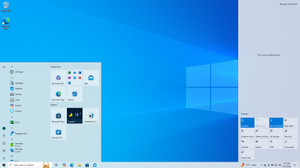
Screenshot of Windows 10 version 22H2, showing the Start menu and Action Center in light theme |
|
| Developer | Microsoft |
|---|---|
| Written in |
|
| OS family | Microsoft Windows |
| Source model |
|
| Released to manufacturing |
July 15, 2015; 7 years ago |
| General availability |
July 29, 2015; 7 years ago |
| Latest release | 22H2 (10.0.19045.2546) (January 19, 2023; 18 days ago[5]) [±] |
| Latest preview | 22H2 (10.0.19045.2546) (January 19, 2023; 18 days ago[6][7]) [±] |
| Marketing target | Personal computing |
| Available in | 110 languages[8][9] (Specific language packs included on the device depend on the mobile operator (for cellular connected devices) or device manufacturer. Additional language packs are available for download on the Microsoft Store, pursuant to manufacturer and carrier support.) |
|
List of languages Afrikaans, Albanian, Amharic, Arabic, Armenian, Assamese, Azerbaijani, Bangla (Bangladesh), Bangla (India), Basque, Belarusian, Bosnian, Bulgarian, Catalan, Central Kurdish, Cherokee, Chinese (Simplified), Chinese (Traditional), Croatian, Czech, Danish, Dari — Persian (Afghanistan), Dutch, German, Greek, English (United Kingdom), English (United States), Estonian, Finnish, Filipino, French (Canada), French (France), Galician, Georgian, Gujarati, Hausa, Hebrew, Hindi, Hungarian, Icelandic, Igbo, Indonesian, Irish, Italian, Japanese, Kannada, Kazakh, Khmer, K’iche’, Kinyarwanda, Konkani, Korean, Kyrgyz, Lao, Latvian, Lithuanian, Luxembourgish, Macedonian, Malay, Malayalam, Maltese, Maori, Marathi, Mongolian, Nepali, Northern Sotho, Norwegian Bokmål, Norwegian Nynorsk, Odia, Persian (Iran), Punjabi (Arabic), Punjabi (Gurmukhi), Polish, Portuguese (Brazil), Portuguese (Portugal), Quechua, Romanian, Russian, Scottish Gaelic, Serbian (Cyrillic, Bosnia & Herzegovina), Serbian (Cyrillic, Serbia), Serbian (Latin), Sindhi (Arabic), Sinhala, Slovak, Slovenian, Spanish (Spain), Spanish (Mexico), Swahili, Swedish, Tajik, Tamil, Tatar, Telugu, Thai, Tigrinya, Tswana, Turkish, Turkmen, Ukrainian, Urdu, Uyghur, Uzbek, Valencian, Vietnamese, Welsh, Wolof, Xhosa, Yoruba, Zulu |
|
| Update method |
|
| Platforms | IA-32, x86-64, ARMv7,[10][11] ARMv8[12][13][14] |
| Kernel type | Hybrid (Windows NT kernel) |
| Userland | Native API Windows API .NET Framework Universal Windows Platform Windows Subsystem for Linux NTVDM (IA-32 only) |
| Default user interface |
Windows shell (graphical) |
| License | Trialware,[15] Microsoft Software Assurance, MSDN subscription, Microsoft Imagine |
| Preceded by | Windows 8.1 (2013) |
| Succeeded by | Windows 11 (2021) |
| Official website | Windows 10 (archived at Wayback Machine) |
| Support status | |
All non-LTSC versions:
All LTSC IoT variants, and all LTSC variants from 2019 and older:
LTSC (non-IoT) variants from 2021 and later:
See § Support lifecycle for details. |
Windows 10 is a major release of Microsoft’s Windows NT operating system. It is the direct successor to Windows 8.1, which was released nearly two years earlier. It was released to manufacturing on July 15, 2015, and later to retail on July 29, 2015.[18] Windows 10 was made available for download via MSDN and TechNet, as a free upgrade for retail copies of Windows 8 and Windows 8.1 users via the Windows Store, and to Windows 7 users via Windows Update. Windows 10 receives new builds on an ongoing basis, which are available at no additional cost to users, in addition to additional test builds of Windows 10, which are available to Windows Insiders. Devices in enterprise environments can receive these updates at a slower pace, or use long-term support milestones that only receive critical updates, such as security patches, over their ten-year lifespan of extended support.[19][20] In June 2021, Microsoft announced that support for Windows 10 editions which are not in the Long-Term Servicing Channel (LTSC) will end on October 14, 2025.[16]
Windows 10 received generally positive reviews upon its original release. Critics praised Microsoft’s decision to provide the desktop-oriented interface in line with previous versions of Windows, contrasting the tablet-oriented approach of Windows 8, although Windows 10’s touch-oriented user interface mode was criticized for containing regressions upon the touch-oriented interface of its predecessor. Critics also praised the improvements to Windows 10’s bundled software over Windows 8.1, Xbox Live integration, as well as the functionality and capabilities of the Cortana personal assistant and the replacement of Internet Explorer with Microsoft Edge. However, media outlets have been critical of the changes to operating system behaviors, including mandatory update installation, privacy concerns over data collection performed by the OS for Microsoft and its partners, and adware-like tactics used to promote the operating system on its release.[21]
Microsoft initially aimed to have Windows 10 installed on over one billion devices within three years of its release;[19] that goal was ultimately reached almost five years after release on March 16, 2020,[22] and is by now most used version in virtually all countries. By January 2018, Windows 10 surpassed Windows 7 as the most popular version of Windows worldwide. As of August 2022, Windows 10 is estimated to have a 72% share of Windows PCs, still 6.2× the share of its successor Windows 11 (and 6.0× of Windows 7). The share has been declining from a January 2022 peak of 82%,[24] since Windows 11, which is now the second most popular Windows version in many countries. Windows 10 has a 58% share of all PCs (the rest being other Windows editions and other operating systems such as macOS and Linux), and a 22% share of all devices (including mobile, tablet and console)[25] are running Windows 10. On June 24, 2021, Microsoft announced Windows 10’s successor, Windows 11, which was released on October 5, 2021.[26]
Windows 10 is the final version of Windows that supports 32-bit processors (IA-32 and ARMv7-based) and devices with BIOS firmware. Its successor, Windows 11, requires a device that uses UEFI firmware and a 64-bit processor in any supported architecture (x86-64 for x86 and ARMv8 for ARM).[27]
Development
At the Microsoft Worldwide Partner Conference in 2011, Andrew Lees, the chief of Microsoft’s mobile technologies, said that the company intended to have a single software ecosystem for PCs, smartphones, tablets, and other devices: «We won’t have an ecosystem for PCs, and one for phones, and one for tablets—they’ll all come together.»[28][29]
In December 2013, technology writer Mary Jo Foley reported that Microsoft was working on an update to Windows 8 codenamed «Threshold», after a planet in its Halo franchise.[30] Similarly to «Blue» (which became Windows 8.1),[31] Foley described Threshold, not as a single operating system, but as a «wave of operating systems» across multiple Microsoft platforms and services, quoting Microsoft sources, scheduled for the second quarter of 2015. She also stated that one of the goals for Threshold was to create a unified application platform and development toolkit for Windows, Windows Phone and Xbox One (which all use a similar kernel based on Windows NT).[30][32]
At the Build Conference in April 2014, Microsoft’s Terry Myerson unveiled an updated version of Windows 8.1 (build 9697) that added the ability to run Windows Store apps inside desktop windows and a more traditional Start menu in place of the Start screen seen in Windows 8. The new Start menu takes after Windows 7’s design by using only a portion of the screen and including a Windows 7-style application listing in the first column. The second column displays Windows 8-style app tiles. Myerson said that these changes would occur in a future update, but did not elaborate.[33][34] Microsoft also unveiled the concept of a «universal Windows app», allowing Windows Store apps created for Windows 8.1 to be ported to Windows Phone 8.1 and Xbox One while sharing a common codebase, with an interface designed for different device form factors, and allowing user data and licenses for an app to be shared between multiple platforms. Windows Phone 8.1 would share nearly 90% of the common Windows Runtime APIs with Windows 8.1 on PCs.[33][35][36][37]
Screenshots of a Windows build purported to be Threshold were leaked in July 2014, showing the previously presented Start menu and windowed Windows Store apps,[32] followed by a further screenshot of a build identifying itself as «Windows Technical Preview», numbered 9834, in September 2014, showing a new virtual desktop system, a notification center, and a new File Explorer icon.[38]
Announcement
«Windows 9» redirects here. For the Windows versions produced from 1995 to 2000, see Windows 9x. For the Windows version following Windows 8, see Windows 8.1.
On September 30, 2014, Microsoft officially announced that Threshold would be unveiled during a media event as Windows 10. Myerson said that Windows 10 would be Microsoft’s «most comprehensive platform ever», providing a single, unified platform for desktop and laptop computers, tablets, smartphones, and all-in-one devices.[39][40][41] He emphasized that Windows 10 would take steps towards restoring user interface mechanics from Windows 7 to improve the experience for users on non-touch devices, noting criticism of Windows 8’s touch-oriented interface by keyboard and mouse users.[42][43] Despite these concessions, Myerson noted that the touch-optimized interface would evolve as well on 10.[44]
In regards to Microsoft naming the new operating system Windows 10 instead of Windows 9, Terry Myerson said that «based on the product that’s coming, and just how different our approach will be overall, it wouldn’t be right to call it Windows 9.»[45] He also joked that they could not call it «Windows One» (referring to several recent Microsoft products with a similar brand, such as OneDrive, OneNote, and the Xbox One) because Windows 1.0 already existed.[46] At a San Francisco conference in October 2014, Tony Prophet, Microsoft’s Vice President of Windows Marketing, said that Windows 9 «came and went», and that Windows 10 would not be «an incremental step from Windows 8.1», but «a material step. We’re trying to create one platform, one eco-system that unites as many of the devices from the small embedded Internet of Things, through tablets, through phones, through PCs and, ultimately, into the Xbox.»[47]
Further details surrounding Windows 10’s consumer-oriented features were presented during another media event held on January 21, 2015, entitled «Windows 10: The Next Chapter». The keynote featured the unveiling of Cortana integration within the operating system, new Xbox-oriented features, Windows 10 Mobile, an updated Office Mobile suite, Surface Hub—a large-screened Windows 10 device for enterprise collaboration based upon Perceptive Pixel technology,[48] along with HoloLens‑augmented reality eyewear and an associated platform for building apps that can render holograms through HoloLens.[49]
Additional developer-oriented details surrounding the «Universal Windows Platform» concept were revealed and discussed during Microsoft’s Build developers’ conference. Among them were the unveiling of «Islandwood», which provides a middleware toolchain for compiling Objective-C-based software (particularly iOS) to run as universal apps on Windows 10 and Windows 10 Mobile. A port of Candy Crush Saga made using the toolkit, which shared much of its code with the iOS version, was demonstrated, alongside the announcement that the King-developed game would be bundled with Windows 10 at launch.[50][51][52][53]
At the 2015 Ignite conference, Microsoft employee Jerry Nixon stated that Windows 10 would be the «last version of Windows», a statement that Microsoft confirmed was «reflective» of its view of the operating system being a «service» with new versions and updates to be released over time.[54][55][56] In 2021, however, Microsoft announced that Windows 10 would be succeeded on compatible hardware by Windows 11–and that Windows 10 support will end on October 14, 2025.[57][58]
Release and marketing
On June 1, 2015, Microsoft announced that Windows 10 would be released on July 29, 2015.[18] On July 20, 2015, Microsoft began «Upgrade Your World», an advertising campaign centering on Windows 10, with the premiere of television commercials in Australia, Canada, France, Germany, Japan, the United Kingdom, and the United States. The commercials focused on the tagline «A more human way to do», emphasizing new features and technologies supported by Windows 10 that sought to provide a more «personal» experience to users.[59][60] The campaign culminated with launch events in thirteen cities on July 29, 2015, which celebrated «the unprecedented role our biggest fans played in the development of Windows 10».[61]
Features
Windows 10 makes its user experience and functionality more consistent between different classes of device, and addresses most of the shortcomings in the user interface that were introduced in Windows 8.[42][43][62] Windows 10 Mobile, the successor to Windows Phone 8.1, shared some user interface elements and apps with its PC counterpart.[63]
Windows 10 supports universal apps, an expansion of the Metro-style first introduced in Windows 8. Universal apps can be designed to run across multiple Microsoft product families with nearly identical code—including PCs, tablets, smartphones, embedded systems, Xbox One, Surface Hub and Mixed Reality. The Windows user interface was revised to handle transitions between a mouse-oriented interface and a touchscreen-optimized interface based on available input devices—particularly on 2-in-1 PCs. Both interfaces include an updated Start menu which incorporates elements of Windows 7’s traditional Start menu with the tiles of Windows 8. Windows 10 also introduced the Microsoft Edge web browser, a virtual desktop system, a window and desktop management feature called Task View, support for fingerprint and face recognition login, new security features for enterprise environments, and DirectX 12.
The Windows Runtime app ecosystem was revised into the Universal Windows Platform (UWP).[35][64][65] These universal apps are made to run across multiple platforms and device classes, including smartphones, tablets, Xbox One consoles, and other devices compatible with Windows 10. Windows apps share code across platforms, have responsive designs that adapt to the needs of the device and available inputs, can synchronize data between Windows 10 devices (including notifications, credentials, and allowing cross-platform multiplayer for games), and are distributed through the Microsoft Store (rebranded from Windows Store since September 2017).[66] Developers can allow «cross-buys», where purchased licenses for an app apply to all of the user’s compatible devices, rather than only the one they purchased on (e.g., a user purchasing an app on PC is also entitled to use the smartphone version at no extra cost).[36][67][68]
The ARM version of Windows 10 allows running applications for x86 processors through 32-bit software emulation.[69]
On Windows 10, the Microsoft Store serves as a unified storefront for apps, video content, and eBooks.[70] Windows 10 also allows web apps and desktop software (using either Win32 or .NET Framework) to be packaged for distribution on the Microsoft Store. Desktop software distributed through Windows Store is packaged using the App-V system to allow sandboxing.[71][72]
User interface and desktop
The «Task View» display is a new feature to Windows 10, allowing the use of multiple workspaces.
A new iteration of the Start menu is used on the Windows 10 desktop, with a list of places and other options on the left side, and tiles representing applications on the right. The menu can be resized, and expanded into a full-screen display, which is the default option in Tablet mode.[42][62][73] A new virtual desktop system was added by a feature known as Task View, which displays all open windows and allows users to switch between them, or switch between multiple workspaces.[42][62] Universal apps, which previously could be used only in full screen mode, can now be used in self-contained windows similarly to other programs.[42][62] Program windows can now be snapped to quadrants of the screen by dragging them to the corner. When a window is snapped to one side of the screen, Task View appears and the user is prompted to choose a second window to fill the unused side of the screen (called «Snap Assist»).[62] The Windows system icons were also changed.[73]
Charms have been removed; their functionality in universal apps is accessed from an App commands menu on their title bar.[42][62] In its place is Action Center, which displays notifications and settings toggles. It is accessed by clicking an icon in the notification area, or dragging from the right of the screen. Notifications can be synced between multiple devices.[63][73] The Settings app (formerly PC Settings) was refreshed and now includes more options that were previously exclusive to the desktop Control Panel.
Windows 10 is designed to adapt its user interface based on the type of device being used and available input methods. It offers two separate user interface modes: a user interface optimized for mouse and keyboard, and a «Tablet mode» designed for touchscreens. Users can toggle between these two modes at any time, and Windows can prompt or automatically switch when certain events occur, such as disabling Tablet mode on a tablet if a keyboard or mouse is plugged in, or when a 2-in-1 PC is switched to its laptop state. In Tablet mode, programs default to a maximized view, and the taskbar contains a back button and hides buttons for opened or pinned programs by default; Task View is used instead to switch between programs. The full screen Start menu is used in this mode, similarly to Windows 8, but scrolls vertically instead of horizontally.[43][76][77][78]
System security
Windows 10 incorporates multi-factor authentication technology based upon standards developed by the FIDO Alliance.[79] The operating system includes improved support for biometric authentication through the Windows Hello platform. Devices with supported cameras (requiring infrared illumination, such as Intel RealSense) allow users to log in with iris or face recognition, similarly to Kinect. Devices with supported readers allow users to log in through fingerprint recognition. Support was also added for palm-vein scanning through a partnership with Fujitsu in February 2018.[80] Credentials are stored locally and protected using asymmetric encryption.[81]
In 2017, researchers demonstrated that Windows Hello could be bypassed on fully-updated Windows 10 version 1703 with a color printout of a person’s picture taken with an IR camera.[82] In 2021, researchers were again able to bypass the Windows Hello functionalities by using custom hardware disguised as a camera, which presented an IR photo of the owner’s face.[83]
In addition to biometric authentication, Windows Hello supports authentication with a PIN. By default, Windows requires a PIN to consist of four digits, but can be configured to permit more complex PINs. However, a PIN is not a simpler password. While passwords are transmitted to domain controllers, PINs are not. They are tied to one device, and if compromised, only one device is affected. Backed by a Trusted Platform Module (TPM) chip, Windows uses PINs to create strong asymmetric key pairs. As such, the authentication token transmitted to the server is harder to crack. In addition, whereas weak passwords may be broken via rainbow tables, TPM causes the much-simpler Windows PINs to be resilient to brute-force attacks.[84]
When Windows 10 was first introduced, multi-factor authentication was provided by two components: Windows Hello and Passport (not to be confused with the Passport platform of 1998). Later, Passport was merged into Windows Hello.[85][81]
The enterprise edition of Windows 10 offers additional security features; administrators can set up policies for the automatic encryption of sensitive data, selectively block applications from accessing encrypted data, and enable Device Guard—a system which allows administrators to enforce a high-security environment by blocking the execution of software that is not digitally signed by a trusted vendor or Microsoft. Device Guard is designed to protect against zero-day exploits, and runs inside a hypervisor so that its operation remains separated from the operating system itself.[79][86]
Command line
The console windows based on Windows Console (for any console app, not just PowerShell and Windows Command Prompt) can now be resized without any restrictions, can be made to cover the full screen by pressing Alt+↵ Enter, and can use standard keyboard shortcuts, such as those for cut, copy, and paste. Other features such as word wrap and transparency were also added. These functions can be disabled to revert to the legacy console if needed.[87]
The Anniversary Update added Windows Subsystem for Linux (WSL), which allows the installation of a user space environment from a supported Linux distribution that runs natively on Windows. The subsystem translates Linux system calls to those of the Windows NT kernel (only claims full system call compatibility as of WSL 2, included in a later Windows update). The environment can execute the Bash shell and 64-bit command-line programs (WSL 2 also supports 32-bit Linux programs and graphics, assuming supporting software installed,[88] and GPUs support for other uses[89]). Windows applications cannot be executed from the Linux environment, and vice versa. Linux distributions for Windows Subsystem for Linux are obtained through Microsoft Store. The feature initially supported an Ubuntu-based environment; Microsoft announced in May 2017 that it would add Fedora and OpenSUSE environment options as well.[90][91][92][93][94][95][96]
Storage requirements
To reduce the storage footprint of the operating system, Windows 10 automatically compresses system files. The system can reduce the storage footprint of Windows by approximately 1.5 GB for 32-bit systems and 2.6 GB for 64-bit systems. The level of compression used is dependent on a performance assessment performed during installations or by OEMs, which tests how much compression can be used without harming operating system performance. Furthermore, the Refresh and Reset functions use runtime system files instead, making a separate recovery partition redundant, allowing patches and updates to remain installed following the operation, and further reducing the amount of space required for Windows 10 by up to 12 GB. These functions replace the WIMBoot mode introduced on Windows 8.1 Update, which allowed OEMs to configure low-capacity devices with flash-based storage to use Windows system files out of the compressed WIM image typically used for installation and recovery.[97][better source needed][98][99] Windows 10 also includes a function in its Settings app that allows users to view a breakdown of how their device’s storage capacity is being used by different types of files, and determine whether certain types of files are saved to internal storage or an SD card by default.[100]
Online services and functionality
Windows 10 introduces Microsoft Edge, a new default web browser. It initially featured a new standards-compliant rendering engine derived from Trident, and also includes annotation tools and integration with other Microsoft platforms present within Windows 10.[101][102][103] Internet Explorer 11 is maintained on Windows 10 for compatibility purposes, but is deprecated in favor of Edge and, since mid-June 2022, is no longer supported on editions which follow Microsoft’s Modern Lifecycle Policy.[104][105][106][107] The initial version of Edge was later succeeded by a new iteration derived from the Chromium Project and Blink layout engine,[108] which replaced the previous EdgeHTML-based version of Edge (renamed «Microsoft Edge Legacy»),[109] and is bundled with the OS by default from build 20H2 onwards.[110]
Windows 10 incorporates a universal search box located alongside the Start and Task View buttons, which can be hidden or condensed into a single button.[111][112] Previous versions featured Microsoft’s intelligent personal assistant Cortana, which was first introduced with Windows Phone 8.1 in 2014, and supports both text and voice input. Many of its features are a direct carryover from Windows Phone, including integration with Bing, setting reminders, a Notebook feature for managing personal information, as well as searching for files, playing music, launching applications and setting reminders or sending emails.[113][114][73] Since the November 2019 update, Microsoft has begun to downplay Cortana as part of a repositioning of the product towards enterprise use, with the May 2020 update removing its Windows shell integration and consumer-oriented features.[115][116][111][117]
Microsoft Family Safety is replaced by Microsoft Family, a parental controls system that applies across Windows platforms and Microsoft online services. Users can create a designated family, and monitor and restrict the actions of users designated as children, such as access to websites, enforcing age ratings on Microsoft Store purchases, and other restrictions. The service can also send weekly e-mail reports to parents detailing a child’s computer usage. Unlike previous versions of Windows, child accounts in a family must be associated with a Microsoft account—which allows these settings to apply across all Windows 10 devices that a particular child is using.[118][119]
Windows 10 also offers the Wi-Fi Sense feature originating from Windows Phone 8.1; users can optionally have their device automatically connect to suggested open hotspots, and share their home network’s password with contacts (either via Skype, People, or Facebook) so they may automatically connect to the network on a Windows 10 device without needing to manually enter its password. Credentials are stored in an encrypted form on Microsoft servers and sent to the devices of the selected contacts. Passwords are not viewable by the guest user, and the guest user is not allowed to access other computers or devices on the network. Wi-Fi Sense is not usable on 802.1X-encrypted networks. Adding «_optout» at the end of the SSID will also block the corresponding network from being used for this feature.[120]
Universal calling and messaging apps for Windows 10 are built in as of the November 2015 update: Messaging, Skype Video, and Phone. These offer built-in alternatives to the Skype download and sync with Windows 10 Mobile.[121][122]
Multimedia and gaming
Windows 10 provides greater integration with the Xbox ecosystem. Xbox SmartGlass is succeeded by the Xbox Console Companion (formerly the Xbox app), which allows users to browse their game library (including both PC and Xbox console games), and Game DVR is also available using a keyboard shortcut, allowing users to save the last 30 seconds of gameplay as a video that can be shared to Xbox Live, OneDrive, or elsewhere.[123][124] Windows 10 also allows users to control and play games from an Xbox One console over a local network.[125] The Xbox Live SDK allows application developers to incorporate Xbox Live functionality into their apps, and future wireless Xbox One accessories, such as controllers, are supported on Windows with an adapter.[126] Microsoft also intends to allow cross-purchases and save synchronization between Xbox One and Windows 10 versions of games; Microsoft Studios games such as ReCore and Quantum Break are intended as being exclusive to Windows 10 and Xbox One.[127]
Candy Crush Saga and Microsoft Solitaire Collection are also automatically installed upon installation of Windows 10.[128][129]
Windows 10 adds native game recording and screenshot capture ability using the newly introduced Game Bar. Users can also have the OS continuously record gameplay in the background, which then allows the user to save the last few moments of gameplay to the storage device.[130]
Windows 10 adds FLAC and HEVC codecs and support for the Matroska media container, allowing these formats to be opened in Windows Media Player and other applications.[131][132][133] Windows Media Center is no longer bundled.[134]
Windows 10 includes DirectX 12, alongside WDDM 2.0.[135][136] Unveiled March 2014 at GDC, DirectX 12 aims to provide «console-level efficiency» with «closer to the metal» access to hardware resources, and reduced CPU and graphics driver overhead.[137][138] Most of the performance improvements are achieved through low-level programming, which allow developers to use resources more efficiently and reduce single-threaded CPU bottlenecking caused by abstraction through higher level APIs.[139][140] DirectX 12 will also feature support for vendor agnostic multi-GPU setups.[141] WDDM 2.0 introduces a new virtual memory management and allocation system to reduce workload on the kernel-mode driver.[135][142]
Font support
Windows 10 adds three new default typefaces compared to Windows 8, but omits several others. The removed typefaces are available in supplemental packs and may be added manually over a non-metered internet connection.
Editions and pricing
Windows 10 is available in five main editions for personal computing devices; the Home and Pro editions of which are sold at retail in most countries, and as pre-loaded software on new computers. Home is aimed at home users, while Pro is aimed at power users and small businesses. Each edition of Windows 10 includes all of the capabilities and features of the edition below it, and adds additional features oriented towards its market segments; for example, Pro adds additional networking and security features such as BitLocker, Device Guard, Windows Update for Business, and the ability to join a domain. Enterprise and Education, the other editions, contain additional features aimed towards business environments, and are only available through volume licensing.[143][144]
As part of Microsoft’s unification strategies, Windows products that are based on Windows 10’s common platform but meant for specialized platforms are marketed as editions of the operating system, rather than as separate product lines. An updated version of Microsoft’s Windows Phone operating system for smartphones, and also tablets, was branded as Windows 10 Mobile.[145] Editions of Enterprise and Mobile will also be produced for embedded systems, along with Windows 10 IoT Core, which is designed specifically for use in small footprint, low-cost devices and Internet of Things (IoT) scenarios and is similar to Windows Embedded.[143][144]
On May 2, 2017, Microsoft unveiled Windows 10 S (referred to in leaks as Windows 10 Cloud), a feature-limited edition of Windows 10 which was designed primarily for devices in the education market (competing, in particular, with ChromeOS netbooks), such as the Surface Laptop that Microsoft also unveiled at this time. The OS restricts software installation to applications obtained from Microsoft Store; the device may be upgraded to Windows 10 Pro for a fee to enable unrestricted software installation. As a time-limited promotion, Microsoft stated that this upgrade would be free on the Surface Laptop until March 31, 2018.[146] Windows 10 S also contains a faster initial setup and login process, and allows devices to be provisioned using a USB drive with the Windows Intune for Education platform.[147][148][149][150][151] In March 2018, Microsoft announced that Windows 10 S would be deprecated because of market confusion and would be replaced by «S Mode», an OEM option wherein Windows defaults to only allowing applications to be installed from Microsoft Store, but does not require payment in order to disable these restrictions.[152][153]
Preview releases
A public beta program for Windows 10 known as the Windows Insider Program began with the first publicly available preview release on October 1, 2014. Insider preview builds are aimed towards enthusiasts and enterprise users for the testing and evaluation of updates and new features.[154] Users of the Windows Insider program receive occasional updates to newer preview builds of the operating system and will continue to be able to evaluate preview releases after general availability (GA) in July 2015—this is in contrast to previous Windows beta programs, where public preview builds were released less frequently and only during the months preceding GA.[42][44][155][154][156] Windows Insider builds continued being released after the release to manufacturing (RTM) of Windows 10.[157][158]
Public release
On July 29, 2015, Microsoft officially announced that Windows 10 would be released for retail purchase as a free upgrade from earlier versions of Windows. In comparison to previous Windows releases, which had a longer turnover between the release to manufacturing (RTM) and general release to allow for testing by vendors (and in some cases, the development of «upgrade kits» to prepare systems for installation of the new version), an HP executive explained that because it knew Microsoft targeted the operating system for a 2015 release, the company was able to optimize its then-current and upcoming products for Windows 10 in advance of its release, negating the need for such a milestone.[159][better source needed]
The general availability build of Windows 10, numbered 10240, was first released to Windows Insider channels for pre-launch testing on July 15, 2015, prior to its formal release.[160][161] Although a Microsoft official said there would be no specific RTM build of Windows 10, 10240 was described as an RTM build by media outlets because it was released to all Windows Insider members at once (rather than to users on the «Fast ring» first), it no longer carried pre-release branding and desktop watermark text, and its build number had mathematical connections to the number 10 in reference to the operating system’s naming.[162][163][164][165][166][167] The Enterprise edition was released to volume licensing on August 1, 2015.[168]
Windows 10 is distributed digitally through the «Media Creation Tool», which is functionally identical to the Windows 8 online installer, and can also be used to generate an ISO image or USB install media.[169] In-place upgrades are supported from most editions of Windows 7 with Service Pack 1 and Windows 8.1 with Update 1, while users with Windows 8 must first upgrade to Windows 8.1. Changing between architectures (e.g., upgrading from 32-bit edition to a 64-bit editions) via in-place upgrades is not supported; a clean install is required.[170][171] In-place upgrades may be rolled back to the device’s previous version of Windows, provided that 30 days have not passed since installation, and backup files were not removed using Disk Cleanup.
Windows 10 was available in 190 countries and 111 languages upon its launch, and as part of efforts to «re-engage» with users in China, Microsoft also announced that it would partner with Qihoo and Tencent to help promote and distribute Windows 10 in China, and that Chinese PC maker Lenovo would provide assistance at its service centers and retail outlets for helping users upgrade to Windows 10.[172][173][174] At retail, Windows 10 is priced similarly to editions of Windows 8.1, with U.S. prices set at $119 and $199 for Windows 10 Home and Pro respectively. A Windows 10 Pro Pack license allows upgrades from Windows 10 Home to Windows 10 Pro.[175][176] Retail copies only ship on USB flash drive media; however, system builder copies still ship as DVD-ROM media.[177] New devices shipping with Windows 10 were also released during the operating system’s launch window.[178]
Windows RT devices cannot be upgraded to Windows 10.[171][179]
Free upgrade offer
During its first year of availability,[180] upgrade licenses for Windows 10 could be obtained at no charge for devices with a genuine license for an eligible edition of Windows 7 or 8.1.[176][181][182]
This offer did not apply to Enterprise editions, as customers under an active Software Assurance (SA) contract with upgrade rights are entitled to obtain Windows 10 Enterprise under their existing terms. All users running non-genuine copies of Windows, and those without an existing Windows 7 or 8 license, were ineligible for this promotion; although upgrades from a non-genuine version were possible, they result in a non-genuine copy of 10.[157][172][182][183][184]
On the general availability build of Windows 10 (the original release), to activate and generate the «digital entitlement» for Windows 10, the operating system must have first been installed as an in-place upgrade. During the free upgrade, a genuineticket.xml file is created in the background and the system’s motherboard details are registered with a Microsoft Product Activation server. Once installed, the operating system can be reinstalled on that particular system via normal means without a product key, and the system’s license will automatically be detected via online activation — in essence, the Microsoft Product Activation Server will remember the system’s motherboard and give it the green light for product re-activation.[170][185][186] Because of installation issues with Upgrade Only installs, the November Update (version 1511) included additional activation mechanisms. This build treated Windows 7 and Windows 8/8.1 product keys as Windows 10 product keys, meaning they could be entered during installation to activate the free license, without the need to upgrade first to «activate» the hardware with Microsoft’s activation servers.[187] For major Original Equipment Manufacturers (OEMs), Windows 8/8.1 and Windows 10 OEM product keys are embedded in the firmware of the motherboard and if the correct edition of Windows 10 is present on the installation media, they are automatically inputted during installation. Since the release of the Fall Creators Update (version 1709), Microsoft decided to release multi-edition installation media, to alleviate installation and product activation issues users experienced because of accidentally installing the wrong edition of Windows 10.
The Windows Insider Preview version of Windows 10 automatically updated itself to the generally released version as part of the version progression and continues to be updated to new beta builds, as it had throughout the testing process. Microsoft explicitly stated that Windows Insider was not a valid upgrade path for those running a version of Windows that is ineligible for the upgrade offer; although, if it was not installed with a license carried over from an in-place upgrade to 10 Insider Preview from Windows 7 or 8, the Insider Preview does remain activated as long as the user does not exit the Windows Insider program.[157][158]
The offer was promoted and delivered via the «Get Windows 10″ application (also known as GWX), which was automatically installed via Windows Update ahead of Windows 10’s release, and activated on systems deemed eligible for the upgrade offer. Via a notification area icon, users could access an application that advertised Windows 10 and the free upgrade offer, check device compatibility, and «reserve» an automatic download of the operating system upon its release.[188][189] On July 28, a pre-download process began in which Windows 10 installation files were downloaded to some computers that had reserved it. Microsoft said that those who reserved Windows 10 would be able to install it through GWX in a phased rollout process. The operating system could alternatively be downloaded at any time using a separate «Media Creation Tool» setup program, that allows for the creation of DVD or USB installation media.[169][178][190][191]
In May 2016, Microsoft announced that the free upgrade offer would be extended to users of assistive technologies; however, Microsoft did not implement any means of certifying eligibility for this offer, which some outlets thereby promoted as being a loophole to fraudulently obtain a free Windows 10 upgrade. Microsoft said that the loophole is not intended to be used in this manner.[192][193][194] In November 2017, Microsoft announced that this program would end on December 31, 2017.[195]
However, another loophole was found that allowed Windows 7 and 8.1 users upgrade to Windows 10 using existing licenses, even though the free upgrade offers officially ended in 2017. No word from Microsoft was given whether it will be closed[196] and some outlets have continued to promote it as a free method of upgrading from the now-unsupported Windows 7.[197]
Licensing
During upgrades, Windows 10 licenses are not tied directly to a product key. Instead, the license status of the system’s current installation of Windows is migrated, and a «Digital license» (known as «Digital entitlement» in version 1511 or earlier) is generated during the activation process, which is bound to the hardware information collected during the process. If Windows 10 is reinstalled cleanly and there have not been any significant hardware changes since installation (such as a motherboard change), the online activation process will automatically recognize the system’s digital entitlement if no product key is entered during installations. However, unique product keys are still distributed within retail copies of Windows 10. As with previous non-volume-licensed variants of Windows, significant hardware changes will invalidate the digital entitlement, and require Windows to be re-activated.[170][185]
Updates and support
Unlike previous versions of Windows, Windows Update does not allow the selective installation of updates, and all updates (including patches, feature updates, and driver software) are downloaded and installed automatically. Users can only choose whether their system will reboot automatically to install updates when the system is inactive, or be notified to schedule a reboot.[198][199] If a wireless network is designated as «Metered»—a function which automatically reduces the operating system’s background network activity to conserve limits on Internet usage—most updates are not downloaded until the device is connected to a non-metered network. Version 1703 allows wired (Ethernet) networks to be designated as metered, but Windows may still download certain updates while connected to a metered network.[200][201]
In version 2004, by installing the August 2020 security update and later versions, driver and non-security updates pushed via Windows Update that are considered optional are no longer automatically downloaded and installed in their devices. Users can access them on Settings > Update & Security > Windows Update > View optional update.[202]
Updates can cause compatibility or other problems; a Microsoft troubleshooter program allows bad updates to be uninstalled.[203][204]
Under the Windows end-user license agreement, users consent to the automatic installation of all updates, features and drivers provided by the service, and implicitly consent «without any additional notice» to the possibility of features being modified or removed.[205][206][207] The agreement also states, specifically for users of Windows 10 in Canada, that they may pause updates by disconnecting their device from the Internet.[208]
Windows Update can also use a peer-to-peer system for distributing updates; by default, users’ bandwidth is used to distribute previously downloaded updates to other users, in combination with Microsoft servers. Users can instead choose to only use peer-to-peer updates within their local area network.[209]
| Version | Codename | Marketing name | Build | Release date | Supported until (and support status by color) | |||
|---|---|---|---|---|---|---|---|---|
| GAC[a] | LTSC[b] | Mobile | ||||||
|
|
Enterprise | IoT Enterprise | |||||
| 1507 | Threshold | — | 10240 | July 29, 2015 | May 9, 2017 | October 14, 2025[c] | — | |
| 1511 | Threshold 2 | November Update | 10586 | November 10, 2015 | October 10, 2017 | April 10, 2018 | — | January 9, 2018 |
| 1607 | Redstone | Anniversary Update | 14393 | August 2, 2016 | April 10, 2018[d] | April 9, 2019[d] | October 13, 2026[e] | October 9, 2018 |
| 1703 | Redstone 2 | Creators Update | 15063 | April 5, 2017[f] | October 9, 2018 | October 8, 2019[g] | — | June 11, 2019 |
| 1709 | Redstone 3 | Fall Creators Update | 16299[h] | October 17, 2017 | April 9, 2019 | October 13, 2020[i] | January 14, 2020 | |
| 1803 | Redstone 4 | April 2018 Update | 17134 | April 30, 2018 | November 12, 2019 | May 11, 2021[j] | — | |
| 1809 | Redstone 5 | October 2018 Update | 17763 | November 13, 2018[k] | November 10, 2020[l] | January 9, 2029[m] | ||
| 1903 | 19H1 | May 2019 Update | 18362 | May 21, 2019 | December 8, 2020 | — | ||
| 1909 | 19H2 | November 2019 Update | 18363 | November 12, 2019 | May 11, 2021 | May 10, 2022 | ||
| 2004 | 20H1 | May 2020 Update | 19041 | May 27, 2020 | December 14, 2021 | |||
| 20H2 | 20H2 | October 2020 Update | 19042 | October 20, 2020 | May 10, 2022 | May 9, 2023 | ||
| 21H1 | 21H1 | May 2021 Update | 19043 | May 18, 2021 | December 13, 2022 | |||
| 21H2 | 21H2 | November 2021 Update | 19044 | November 16, 2021 | June 13, 2023 | June 11, 2024 | January 12, 2027 | January 13, 2032[n] |
| 22H2 | 22H2 | 2022 Update | 19045 | October 18, 2022 | May 14, 2024 | May 13, 2025 | — | |
| Legend: Old version, not maintained[o] Older version, still maintained[p] Current stable version[q] | ||||||||
Notes:
|
Support lifecycle
| Expiration date | |
|---|---|
| Mainstream support | October 13, 2020[210][211] |
| Extended support | October 14, 2025[210][211] |
| Applicable Windows 10 editions Excluding LTSB and LTSC editions, unless otherwise noted: |
|
| Home, Pro, Pro for Workstations, S, Education, Pro Education, Enterprise, IoT Enterprise, IoT Core, Team, Enterprise 2015 LTSB, and IoT Enterprise 2015 LTSB.[212] | |
| Exceptions | |
| Windows 10 Mobile, Mobile Enterprise, and IoT Mobile | Unsupported as of January 14, 2020[213] |
| Windows 10 Enterprise and IoT Enterprise 2016 LTSB | Mainstream support ended on October 12, 2021[211] Extended support until October 13, 2026[211] |
| Windows 10 Enterprise, IoT Enterprise, and IoT Core (via IoT Core Services)[214] 2019 LTSC | Mainstream support until January 9, 2024[211] Extended support until January 9, 2029[211] |
| Windows 10 Enterprise 2021 LTSC | Supported until January 12, 2027[211] |
| Windows 10 IoT Enterprise 2021 LTSC | Mainstream support until January 12, 2027[211] Extended support until January 13, 2032[211] |
The original release of Windows 10 receives mainstream support for five years after its original release, followed by five years of extended support, but this is subject to conditions. Microsoft’s support lifecycle policy for the operating system notes that updates «are cumulative, with each update built upon all of the updates that preceded it», that «a device needs to install the latest update to remain supported», and that a device’s ability to receive future updates will depend on hardware compatibility, driver availability, and whether the device is within the OEM’s «support period»—a new aspect not accounted for in lifecycle policies for previous versions.[215][182][216][217] This policy was first invoked in 2017 to block Intel Clover Trail devices from receiving the Creators Update, as Microsoft asserts that future updates «require additional hardware support to provide the best possible experience», and that Intel no longer provided support or drivers for the platform. Microsoft stated that these devices would no longer receive feature updates, but would still receive security updates through January 2023.[218] Microsoft will continue to support at least one standard Windows 10 release until October 14, 2025.[16][17]
The following table collects current status of the aforementioned updating and support of different branches of Windows 10:
| Update branch | Microsoft internal channels (more information here) Alpha software |
Windows Insider Preview Branch (WIPB) Beta software |
Annual Channel (formerly CB and SAC) «End user» |
Long-term Servicing channel (formerly LTSB) «Mission critical» |
| Edition | Home | Enterprise LTSC | ||
|---|---|---|---|---|
| Pro | ||||
| Education | ||||
| Enterprise | ||||
| Critical updates Security patches and stability updates |
Continuous | Discontinued | Automatic | User can defer updates indefinitely |
| Feature upgrades Non-critical functionality and feature updates |
Automatic or defer[223] | Only through LTSC in-place upgrades | ||
| Feature upgrades cadence | Continuous | Discontinued | Continuous, deferrable for 12 months at a time; once a deferral period is past, no further deferrals possible until latest updates are installed | LTSC releases are stable ‘snapshots’ of AC |
| Upgrade support | Continuous updating, features come and go silently with new builds | Discontinued | Continuous updating or in-place upgrade to supported LTSC builds | In-place upgrade support for the three most recent LTSC builds |
| Update support | Only the latest build is supported | Unsupported; Windows 10 no longer in Insider program, Insider effort shifted to Windows 11 instead | 10 years (or ~6 months from deferring build upgrade or until future builds require hardware support the old device doesn’t have.) | 5 years (for 2021 and newer, non-IoT) or 5 years mainstream + 5 years extended (for 2019 and older, all IoT versions) |
| Update methods | Windows Update | Windows Update Windows Update for Business Windows Server Update Services |
Feature updates
Windows 10 is often described by Microsoft as being a «service», as it receives regular «feature updates» that contain new features and other updates and fixes.[182][224][225][226] In April 2017, Microsoft stated that these updates would be released twice a year every March and September in the future, which eventually continued until version 21H2.[227] Mainstream builds of Windows 10, until and including 2004, were labeled «YYMM», with «YY» representing the two-digit year and «MM» representing the month of release. For example, version 1809 was released in September (the ninth month) of 2018. This was changed with the 20H2 release where «MM» represents the half of the year in which the update was released, for example H1 for the first half and H2 for the second half.[228]
Before version 1903, the pace at which feature updates are received by devices was dependent on which release channel was used. The default branch for all users of Windows 10 Home and Pro was «Semi-Annual Channel (Targeted)» (formerly «Current Branch», or «CB»),[226] which received stable builds after they were publicly released by Microsoft. Each build of Windows 10 is supported for 18 months after its original release.[226] In enterprise environments, Microsoft officially intended that this branch was used for «targeted» deployments of newly released stable versions so that they could be evaluated and tested on a limited number of devices before a wider deployment. Once a stable build is certified by Microsoft and its partners as being suitable for broad deployment, the build is then released on the «Semi-Annual Channel» (formerly «Current Branch for Business», or «CBB»), which is supported by the Pro and Enterprise editions of Windows 10.[226][199][229] Semi-Annual Channel receives stable builds on a four-month delay from their release on the Targeted channel.[226] Administrators can also use the «Windows Update for Business» system, as well as existing tools such as WSUS and System Center Configuration Manager, to organize structured deployments of feature updates across their networks.[226][199]
The Windows Insider branches receive unstable builds as they are released; it is divided into two channels, «Dev» (which receives new builds immediately after their release), and «Beta» (whose releases are slightly delayed from their «Dev» release).[226]
Enterprise licensees may use the Windows 10 Enterprise LTSC (formerly LTSB) edition, where «LTSC» stands for «Long-Term Servicing Channel», which only receive quality of life updates (i.e. security patches), and has a full, 5 or 10-year support lifecycle for each build.[226][229][222] This edition is designed for «special-purpose devices» that perform a fixed function (such as automated teller machines and medical equipment). For this reason, it excludes Cortana, Microsoft Store, and all bundled Universal Windows Platform apps (including but not limited to Microsoft Edge, hence these builds ship only with Internet Explorer as browser).[230][231][226][182][232][233] Microsoft director Stella Chernyak explained that «we have businesses [that] may have mission-critical environments where we respect the fact they want to test and stabilize the environment for a long time.»[234] Four LTSC builds have been released, correlating with the 1507, 1607, 1809, and 21H2 versions of Windows 10, respectively.[235][236][237]
In July 2017, Microsoft announced changes in the terminology for Windows branches as part of its effort to unify the update cadence with that of Office 365 ProPlus and Windows Server 2016.[238][226] The branch system now defines two paces of upgrade deployment in enterprise environments, «targeted» initial deployment of a new version on selected systems immediately after its stable release for final testing, and «broad» deployment afterwards. Hence, «Current Branch» is now known as «Semi-Annual Channel (Targeted)», and «Current Branch for Business» for broad deployment is now referred to as «Semi-Annual Channel».[239][226]
In February 2019, Microsoft announced changes again in delivering updates in beginning of release of version 1903: a single SAC will be released and SAC-T will be retired, and users are no longer able to switch to different channels. Instead, these updates can be deferred from 30 to 90 days, or depending how the device was configured to deferred the updates.[240][241] In April 2019, it was announced that, in addition, feature updates will no longer be automatically pushed to users.[242] However, after the release of version 2004, the update only pushed for those running a feature update version that is nearing end of service or it can be paused for up to 35 days.[243][244] In November 2021, following the launch of version 21H2, Microsoft made a commitment to deliver feature updates every October or November.[245] Thus, Microsoft rebranded the «Semi-Annual Channel» to the «General Availability Channel».[246][247]
Feature updates prior to version 1909 were distributed solely as an in-place upgrade installation, requiring the download of a complete operating system package (approximately 3.5 GB in size for 64-bit systems). Unlike previous builds, version 1909 was designed primarily as an update rollup version of 1903, which focused primarily on minor feature additions and enhancements. For upgrades to 1909 from 1903, a new delivery method was used where its changes were delivered as part of the monthly cumulative update, but were left in a dormant state until the 1909 update «enablement» patch is installed. The full upgrade process was still used for those using builds prior to 1903.[248][249]
Features in development
In May 2017, Microsoft unveiled Fluent Design System (previously codenamed «Project Neon»), a revamp of Microsoft Design Language 2 that will include guidelines for the designs and interactions used within software designed for all Windows 10 devices and platforms. The new design language will include the more prominent use of motion, depth, and translucency effects. Microsoft stated that the implementation of this design language would be performed over time, and it had already started to implement elements of it in Creators Update and Fall Creators Update.[250]
On December 7, 2016, Microsoft announced that, as part of a partnership with Qualcomm, it planned to introduce support for running Win32 software on ARM architecture with a 32-bit x86 processor emulator, in 2017. Terry Myerson stated that this move would enable the production of Qualcomm Snapdragon-based Windows devices with cellular connectivity and improved power efficiency over Intel-compatible devices, and still capable of running the majority of existing Windows software (unlike the previous Windows RT, which was restricted to Windows Store apps). Microsoft is initially targeting this project towards laptops.[69] Microsoft launched the branding Always Connected PCs in December 2017 to market Windows 10 devices with cellular connectivity, which included two ARM-based 2-in-1 laptops from Asus and HP featuring the Snapdragon 835 system-on-chip, and the announcement of a partnership between AMD and Qualcomm to integrate its Snapdragon X16 gigabit LTE modem with AMD’s Ryzen Mobile platform.[251][252]
In August 2019, Microsoft began testing changes to its handling of the user interface on convertible devices—downplaying the existing «Tablet Mode» option in favor of presenting the normal desktop with optimizations for touch when a keyboard is not present, such as increasing the space between taskbar buttons and displaying the virtual keyboard when text fields are selected.[253]
In April 2021, the ability to run Linux applications using a graphical user interface, such as Audacity, directly in Windows, was introduced as a preview.[254] This feature would later be included as part of the updated Windows Subsystem for Linux 2 for Windows 11 only.
System requirements
| Component | Minimum | Recommended |
|---|---|---|
| Processor | 1 GHz clock rate IA-32 or x86-64 architecture with support for PAE, NX and SSE2 x86-64 CPUs must also support CMPXCHG16B, PrefetchW and LAHF/SAHF instructions. |
|
| Memory (RAM) | IA-32 edition: 1 GB x86-64 edition: 2 GB |
4 GB |
| Graphics card | DirectX 9 graphics device WDDM 1.0 or higher driver |
WDDM 1.3 or higher driver |
| Display | 800×600 pixels | — |
| Input device | Keyboard and mouse | Multi-touch display |
| Storage space | 32 GB | — |
The basic hardware requirements to install Windows 10 were initially the same as those for Windows 8 and Windows 8.1, and only slightly higher than for Windows 7 and Windows Vista. As of the May 2019 update, the minimum disk space requirement has been increased to 32 GB. In addition, on new installations, Windows permanently reserves up to 7 GB of disk space in order to ensure proper installation of future feature updates.[256][257]
The 64-bit variants require a CPU that supports certain instructions.[258] Devices with low storage capacity must provide a USB flash drive or SD card with sufficient storage for temporary files during upgrades.[259]
Some pre-built devices may be described as «certified» by Microsoft. Certified tablets must include Power, Volume up, and Volume down keys; ⊞ Win and Rotation lock keys are no longer required.[260]
As with Windows 8, all certified devices must ship with UEFI Secure Boot enabled by default. Unlike Windows 8, OEMs are no longer required to make Secure Boot settings user-configurable, meaning that devices may optionally be locked to run only Microsoft-signed operating systems.[261] A supported infrared-illuminated camera is required for Windows Hello face authentication, and a supported fingerprint reader is required for Windows Hello fingerprint authentication.[181] Device Guard requires a UEFI system with no third-party certificates loaded, and CPU virtualization extensions (including SLAT and IOMMU) enabled in firmware.
Beginning with Intel Kaby Lake and AMD Bristol Ridge, Windows 10 is the only version of Windows that Microsoft will officially support on newer CPU microarchitectures.[262][263] Terry Myerson stated that Microsoft did not want to make further investments in optimizing older versions of Windows and associated software for newer generations of processors.[264][265] These policies were criticized by the media, who especially noted that Microsoft was refusing to support newer hardware (particularly Intel’s Skylake CPUs, which was also originally targeted by the new policy with a premature end of support that was ultimately retracted)[266][267] on Windows 8.1, a version of Windows that was still in mainstream support until January 2018.[268][269] In addition, an enthusiast-created modification was released that disabled the check and allowed Windows 8.1 and earlier to continue to work on the platform.[270]
Windows 10 version 1703 and later do not support Intel Clover Trail system-on-chips, per Microsoft’s stated policy of only providing updates for devices during their OEM support period.[218][271]
Starting with Windows 10 version 2004, Microsoft will require new OEM devices to use 64-bit processors, and will therefore cease the distribution of x86 (32-bit) variants of Windows 10 via OEM channels. The 32-bit variants of Windows 10 will remain available via non-OEM channels, and Microsoft will continue to «[provide] feature and security updates on these devices».[272] This was later followed by Windows 11 dropping 32-bit hardware support altogether, and thus making Windows 10 the final version of Windows to have a 32-bit version.[273]
Physical memory limits
The maximum amount of RAM that Windows 10 can support varies depending on the product edition and the processor architecture. All 32-bit editions of Win10, including Home and Pro, support up to 4 GB.[274] 64-bit editions of Windows 10 Education and Pro support up to 2 TB, 64-bit editions of Windows 10 Pro for Workstations and Enterprise support up to 6 TB, while the 64-bit edition of Windows 10 Home is limited to 128 GB.[274]
Processor limits
Windows 10 supports up to two physical processors.[275] A maximum of 32 cores is supported in 32-bit versions of Windows 8, whereas up to 256 cores are supported in the 64-bit versions.[275]
Reception
Windows 10 received generally positive reviews, with most reviewers considering it superior to its predecessor Windows 8.[276][277][278] CNN Business praised every aspect of Windows 10.[279] TechRadar felt that it could be «the new Windows 7», citing the operating system’s more familiar user interface, improvements to bundled apps, performance improvements, a «rock solid» search system, and the Settings app being more full-featured than its equivalents on 8 and 8.1. The Edge browser was praised for its performance, although it was not in a feature-complete state at launch. While considering them a «great idea in principle», concerns were shown for Microsoft’s focus on the universal app ecosystem:
It’s by no means certain that developers are going to flock to Windows 10 from iOS and Android simply because they can convert their apps easily. It may well become a no-brainer for them, but at the moment a conscious decision is still required.[280]
Engadget was similarly positive, noting that the upgrade process was painless and that Windows 10’s user interface had balanced aspects of Windows 8 with those of previous versions with a more mature aesthetic. Cortana’s always-on voice detection was considered to be its «true strength», also citing its query capabilities and personalization features, but noting that it was not as pre-emptive as Google Now. Windows 10’s stock applications were praised for being improved over their Windows 8 counterparts, and for supporting windowed modes. The Xbox app was also praised for its Xbox One streaming functionality, although recommending its use over a wired network because of inconsistent quality over Wi-Fi. In conclusion, it was argued that «Windows 10 delivers the most refined desktop experience ever from Microsoft, and yet it’s so much more than that. It’s also a decent tablet OS, and it’s ready for a world filled with hybrid devices. And, barring another baffling screwup, it looks like a significant step forward for mobile. Heck, it makes the Xbox One a more useful machine.»[281]
On the other hand Ars Technica panned the new Tablet mode interface for removing the charms and app switching, making the Start button harder to use by requiring users to reach for the button on the bottom-left rather than at the center of the screen when swiping with a thumb, and for making application switching less instantaneous through the use of Task View. Microsoft Edge was praised for being «tremendously promising», and «a much better browser than Internet Explorer ever was», but criticized it for its lack of functionality on-launch. In conclusion, contrasting Windows 8 as being a «reliable» platform albeit consisting of unfinished concepts, Windows 10 was considered «the best Windows yet», and was praised for having a better overall concept in its ability to be «comfortable and effective» across a wide array of form factors, but that it was buggier than previous versions of Windows were on-launch.[282] ExtremeTech felt that Windows 10 restricted the choices of users, citing its more opaque setting menus, forcing users to give up bandwidth for the peer-to-peer distribution of updates, and for taking away user control of specific functions, such as updates, explaining that «it feels, once again, as if Microsoft has taken the seed of a good idea, like providing users with security updates automatically, and shoved the throttle to maximum.»[283] Windows 10 has also received criticism because of deleting files without user permission after auto updates.[284]
Critics have noted that Windows 10 heavily emphasizes freemium services, and contains various advertising facilities. Some outlets have considered these to be a hidden «cost» of the free upgrade offer.[285][286][287] Examples of these have included microtransactions in bundled games such as Microsoft Solitaire Collection,[288][285][289][290] default settings that display promotions of «suggested» apps in the Start menu, «tips» on the lock screen that may contain advertising,[286][287] ads displayed in File Explorer for Office 365 subscriptions on Creators’ Update,[287] and various advertising notifications displayed by default which promote Microsoft Edge when it is not set as the default web browser (including, in a September 2018 build, nag pop-ups displayed to interrupt the installation process of competitors).[291][292]
Due to the high system requirements of its Windows 10’s successor Windows 11, some critics have cited Windows 10 being better than its successor and have warned not to switch to Windows 11 given its high system requirement despite very limited new features compared to Windows 10.[293][294][295]
| Windows PC market share (of Windows) statistics | ||
|---|---|---|
| Windows 10 | 71.76% | |
| Windows 7 | 13.06% | |
| Windows 11 | 10.07% | |
| Windows 8.1 | 3.07% | |
| Windows 8 | 1.38% | |
| Windows XP | 0.40% | |
| Other | 0.26% | |
| Worldwide market share of desktop Windows versions (as of June 9, 2022) according to Statcounter.[296] Note: the values shown are percentages of Windows marketshare only; StatCounter tracks Windows vs. other operating systems separately. |
Up to August 2016, Windows 10 usage was increasing, with it then plateauing,[297] while eventually in 2018, it became more popular than Windows 7[298][299] (though Windows 7 was still more used in some countries in Asia and Africa in 2019). As of March 2020, the operating system is running on over a billion devices, reaching the goal set by Microsoft two years after the initial deadline.[22]
Twenty-four hours after it was released, Microsoft announced that over 14 million devices were running Windows 10.[300] On August 26, Microsoft said over 75 million devices were running Windows 10, in 192 countries, and on over 90,000 unique PC or tablet models.[301] According to Terry Myerson, there were over 110 million devices running Windows 10 as of October 6, 2015.[302] On January 4, 2016, Microsoft reported that Windows 10 had been activated on over 200 million devices since the operating system’s launch in July 2015.[303][304]
According to StatCounter, Windows 10 overtook Windows 8.1 in December 2015.[305][306] Iceland was the first country where Windows 10 was ranked first (not only on the desktop, but across all platforms),[307] with several larger European countries following. For one week in late November 2016, Windows 10 overtook first rank from Windows 7 in the United States, before losing it again.[308] By February 2017, Windows 10 was losing market share to Windows 7.[309]
In mid-January 2018, Windows 10 had a slightly higher global market share than Windows 7,[298] with it noticeably more popular on weekends,[310] while popularity varies widely by region, e.g. Windows 10 was then still behind in Africa[311] and far ahead in some other regions e.g. Oceania.[312]
Update system changes
Windows 10 Home is permanently set to download all updates automatically, including cumulative updates, security patches, and drivers, and users cannot individually select updates to install or not.[313] Microsoft offers a diagnostic tool that can be used to hide updates and prevent them from being reinstalled, but only after they had been already installed, then uninstalled without rebooting the system.[314][315] Tom Warren of The Verge felt that, given web browsers such as Google Chrome had already adopted such an automatic update system, such a requirement would help to keep all Windows 10 devices secure, and felt that «if you’re used to family members calling you for technical support because they’ve failed to upgrade to the latest Windows service pack or some malware disabled Windows Update then those days will hopefully be over.»[316]
Concerns were raised that because of these changes, users would be unable to skip the automatic installation of updates that are faulty or cause issues with certain system configurations—although build upgrades will also be subject to public beta testing via Windows Insider program.[314][316] There were also concerns that the forced installation of driver updates through Windows Update, where they were previously designated as «optional», could cause conflicts with drivers that were installed independently of Windows Update. An example of such a situation occurred prior to the general release of the operating system, when an Nvidia graphics card driver that was automatically pushed to Windows 10 users via Windows Update caused issues that prevented the use of certain functions, or prevented their system from booting at all.[314]
Criticism was also directed towards Microsoft’s decision to no longer provide specific details on the contents of cumulative updates for Windows 10.[317] On February 9, 2016, Microsoft retracted this decision and began to provide release notes for cumulative updates on the Windows website.[318]
Some users reported that during the installation of the November upgrade, some applications (particularly utility programs such as CPU-Z and Speccy) were automatically uninstalled during the upgrade process, and some default programs were reset to Microsoft-specified defaults (such as Photos app, and Microsoft Edge for PDF viewing), both without warning.[319][320]
Further issues were discovered upon the launch of the Anniversary Update («Redstone»), including a bug that caused some devices to freeze (but addressed by cumulative update KB3176938, released on August 31, 2016),[321][322] and that fundamental changes to how Windows handles webcams had caused many to stop working.[323]
In June 2017, a Redstone 3 Insider build (RS_EDGE_CASE in PC and rs_IoT on Mobile) was accidentally released to both Insider and non-Insider users on all Windows 10 devices, but the update was retracted, with Microsoft apologizing and releasing a note on their Windows Insider Program blog describing how to prevent the build from being installed on their device.[324] According to Dona Sarkar, this was due to «an inadvertent deployment to the engineering system that controls which builds/which rings to push out to insiders.»[325]
A Gartner analyst felt that Windows 10 Pro was becoming increasingly inappropriate for use in enterprise environments because of support policy changes by Microsoft, including consumer-oriented upgrade lifecycle length, and only offering extended support for individual builds to Enterprise and Education editions of Windows 10.[326]
Critics have acknowledged that Microsoft’s update and testing practices had been affecting the overall quality of Windows 10. In particular, it was pointed out that Microsoft’s internal testing departments had been prominently affected by a major round of layoffs undertaken by the company in 2014. Microsoft relies primarily on user testing and bug reports via the Windows Insider program (which may not always be of sufficient quality to identify a bug), as well as correspondence with OEMs and other stakeholders. In the wake of the known folder redirection data loss bug in the version 1809, it was pointed out that bug reports describing the issue had been present on the Feedback Hub app for several months prior to the public release. Following the incident, Microsoft updated Feedback Hub so that users may specify the severity of a particular bug report. When announcing the resumption of 1809’s rollout, Microsoft stated that it planned to be more transparent in its handling of update quality in the future, through a series of blog posts that will detail its testing process and the planned development of a «dashboard» that will indicate the rollout progress of future updates.[327][328][329][330][331]
Distribution practices
Microsoft was criticized for the tactics that it used to promote its free upgrade campaign for Windows 10, including adware-like behaviors,[332] using deceptive user interfaces to coax users into installing the operating system,[333][334][335][336] downloading installation files without user consent,[337][332] and making it difficult for users to suppress the advertising and notifications if they did not wish to upgrade to 10.[337][332][338] The upgrade offer was marketed and initiated using the «Get Windows 10» (GWX) application, which was first downloaded and installed via Windows Update in March 2015.[333][336] Registry keys and group policies could be used to partially disable the GWX mechanism, but the installation of patches to the GWX software via Windows Update could reset these keys back to defaults, and thus reactivate the software.[337][332][339][338][334] Third-party programs were also created to assist users in applying measures to disable GWX.[340]
In September 2015, it was reported that Microsoft was triggering automatic downloads of Windows 10 installation files on all compatible Windows 7 or 8.1 systems configured to automatically download and install updates, regardless of whether or not they had specifically requested the upgrade. Microsoft officially confirmed the change, claiming it was «an industry practice that reduces the time for installation and ensures device readiness.» This move was criticized by users with data caps or devices with low storage capacity, as resources were consumed by the automatic downloads of up to 6 GB of data. Other critics argued that Microsoft should not have triggered any downloading of Windows 10 installation files without user consent.[332][337][341]
In October 2015, Windows 10 began to appear as an «Optional» update on the Windows Update interface, but pre-selected for installation on some systems. A Microsoft spokesperson said that this was a mistake, and that the download would no longer be pre-selected by default.[335] However, on October 29, 2015, Microsoft announced that it planned to classify Windows 10 as a «recommended» update in the Windows Update interface sometime in 2016, which would cause an automatic download of installation files and a one-time prompt with a choice to install to appear.[342][343] In December 2015, it was reported that a new advertising dialog had begun to appear, only containing «Upgrade now» and «Upgrade tonight» buttons, and no obvious method to decline installation besides the close button.[334]
In March 2016, some users also alleged that their Windows 7 and 8.1 devices had automatically begun upgrading to Windows 10 without their consent.[344] In June 2016, the GWX dialog’s behavior changed to make closing the window imply a consent to a scheduled upgrade.[345][346] Despite this, an InfoWorld editor disputed the claims that upgrades had begun without any consent at all; testing showed that the upgrade to Windows 10 would only begin once the user accepts the end-user license agreement (EULA) presented by its installer, and that not doing so would eventually cause Windows Update to time out with an error, thus halting the installation attempt. It was concluded that these users may have unknowingly clicked the «Accept» prompt without full knowledge that this would begin the upgrade.[347] In December 2016, Microsoft’s chief marketing officer Chris Capossela admitted that the company had «gone too far» by using this tactic, stating, «we know we want people to be running Windows 10 from a security perspective, but finding the right balance where you’re not stepping over the line of being too aggressive is something we tried and for a lot of the year I think we got it right.»[348]
On January 21, 2016, Microsoft was sued in small claims court by a user whose computer had attempted to upgrade to Windows 10 without her consent shortly after the release of the operating system. The upgrade failed, and her computer was left in a broken state thereafter, which disrupted the ability to run her travel agency. The court ruled in favor of the user and awarded her $10,000 in damages, but Microsoft appealed. However, in May 2016, Microsoft dropped the appeal and chose to pay the damages. Shortly after the suit was reported on by the Seattle Times, Microsoft confirmed it was updating the GWX software once again to add more explicit options for opting out of a free Windows 10 upgrade;[349][350][346] the final notification was a full-screen pop-up window notifying users of the impending end of the free upgrade offer, and contained «Remind me later», «Do not notify me again» and «Notify me three more times» as options.[351]
In March 2019, Microsoft announced that it would display notifications informing users on Windows 7 devices of the upcoming end of extended support for the platform, and direct users to a website urging them to upgrade to Windows 10 or purchase new hardware. This dialog will be similar to the previous Windows 10 upgrade prompts, but will not explicitly mention Windows 10.[352]
Privacy and data collection
Privacy advocates and other critics have expressed concern regarding Windows 10’s privacy policies and its collection and use of customer data.[353] Under the default «Express» settings, Windows 10 is configured to send various information to Microsoft and other parties, including the collection of user contacts, calendar data, and «associated input data» to personalize «speech, typing, and inking input», typing and inking data to improve recognition, allowing apps to use a unique «advertising ID» for analytics and advertising personalization (functionality introduced by Windows 8.1)[354] and allow apps to request the user’s location data and send this data to Microsoft and «trusted partners» to improve location detection (Windows 8 had similar settings, except that location data collection did not include «trusted partners»[283]). Users can opt out from most of this data collection,[283][353] but telemetry data for error reporting and usage is also sent to Microsoft, and this cannot be disabled on non-Enterprise editions of Windows 10.[283] Microsoft’s privacy policy states, however, that «Basic»-level telemetry data is anonymized and cannot be used to identify an individual user or device.[355] The use of Cortana also requires the collection of data «such as Your PC location, data from your calendar, the apps you use, data from your emails and text messages, who you call, your contacts and how often you interact with them on Your PC» to personalize its functionality.[353][356]
Rock Paper Shotgun writer Alec Meer argued that Microsoft’s intent for this data collection lacked transparency, stating that «there is no world in which 45 pages of policy documents and opt-out settings split across 13 different settings screens and an external website constitutes ‘real transparency’.»[353] Joel Hruska of ExtremeTech wrote that «the company that brought us the ‘Scroogled’ campaign now hoovers up your data in ways that would make Google jealous.»[283] However, it was also pointed out that the requirement for such vast usage of customer data had become a norm, citing the increased reliance on cloud computing and other forms of external processing, as well as similar data collection requirements for services on mobile devices such as Google Now and Siri.[353][356] In August 2015, Russian politician Nikolai Levichev called for Windows 10 to be banned from use within the Russian government, as it sends user data to servers in the United States. The Russian government had passed a federal law requiring all online services to store the data of Russian users on servers within the country by September 2016 or be blocked.[357][358] Writing for ZDNet, Ed Bott said that the lack of complaints by businesses about privacy in Windows 10 indicated «how utterly normal those privacy terms are in 2015.»[359] In a Computerworld editorial, Preston Gralla said that «the kind of information Windows 10 gathers is no different from what other operating systems gather. But Microsoft is held to a different standard than other companies».[360]
The Microsoft Services agreement reads that the company’s online services may automatically «download software updates or configuration changes, including those that prevent you from accessing the Services, playing counterfeit games, or using unauthorized hardware peripheral devices.» Critics interpreted this statement as implying that Microsoft would scan for and delete unlicensed software installed on devices running Windows 10.[361] However, others pointed out that this agreement was specifically for Microsoft online services such as Microsoft account, Office 365, Skype, as well as Xbox Live, and that the offending passage most likely referred to digital rights management on Xbox consoles and first-party games, and not plans to police pirated video games installed on Windows 10 PCs.[361][362] Despite this, some torrent trackers announced plans to block Windows 10 users, also arguing that the operating system could send information to anti-piracy groups that are affiliated with Microsoft.[363] Writing about these allegations, Ed Bott of ZDNet compared Microsoft’s privacy policy to Apple’s and Google’s and concluded that he «[didn’t] see anything that looks remotely like Big Brother.»[359] Columnist Kim Komando argued that «Microsoft might in the future run scans and disable software or hardware it sees as a security threat», consistent with the Windows 10 update policy.[364]
In September 2019, Microsoft hid the option to create a local account during a fresh installation if a PC is connected to the internet. This move was criticized by users who did not want to use an online Microsoft account.[365][366] Additionally, in Windows 10 Home, the first Microsoft account linked to the primary user’s account can no longer be unlinked, but other users can unlink their own Microsoft accounts from their user accounts.
In late-July 2020, Windows Defender began to classify modifications of the hosts file that block Microsoft telemetry servers as being a severe security risk.[367]
See also
- Comparison of operating systems
- History of operating systems
- List of operating systems
- Microsoft Windows version history
References
- ^ «Programming language tools: Windows gets versatile new open-source terminal». ZDNet. Retrieved August 31, 2020.
- ^ «Microsoft is open-sourcing Windows Calculator on GitHub». ZDNet. Retrieved August 31, 2020.
- ^ «GitHub — microsoft/Windows-Driver-Frameworks». Microsoft. Retrieved August 31, 2020.
- ^ «windows forms». Microsoft. Retrieved August 31, 2020.
- ^ «January 19, 2023—KB5019275 (OS Builds 19042.2546, 19044.2546, and 19045.2546) Preview». Microsoft Support. Microsoft.
- ^ «Releasing Windows 10 Build 19045.2301 to Release Preview Channel». Windows Insider Blog. November 10, 2022.
- ^ «January 19, 2023—KB5019275 (OS Builds 19042.2546, 19044.2546, and 19045.2546) Preview». Microsoft Support. Microsoft.
- ^ «Local Experience Packs — Microsoft Store». microsoft.com. Microsoft.
- ^ «Microsoft Volume Licensing Center». microsoft.com. Microsoft.
- ^ saraclay. «SoCs and Custom Boards for Windows 10 IoT Core — Windows IoT». docs.microsoft.com. Retrieved June 13, 2019.
- ^ «.NET Core 3.0 — Supported OS versions». .NET Foundation. June 5, 2019. Retrieved June 13, 2019.
- ^ Thurrottfeed (November 16, 2018). «Microsoft Opens Its Store to 64-Bit ARM Apps». Thurrott.com. Retrieved June 13, 2019.
- ^ «HP, Asus announce first Windows 10 ARM PCs: 20 hour battery life, gigabit LTE». Ars Technica. Condé Nast. December 5, 2017.
- ^ «2017-10 Cumulative Update for Windows 10 Version 1709 for ARM64-based Systems (KB4043961)». Microsoft Update Catalog. Microsoft. October 16, 2017. Archived from the original on October 23, 2017.
- ^ «Windows 10». Windows Evaluations. Microsoft. Retrieved November 27, 2015.
- ^ a b c «Windows 10 Home and Pro Lifecycle». docs.microsoft.com. Retrieved June 27, 2021.
- ^ a b «Windows 10 Enterprise and Education Lifecycle». docs.microsoft.com. Retrieved June 27, 2021.
- ^ a b «Hello World: Windows 10 Available on July 29». windows.com. June 1, 2015. Retrieved June 1, 2015.
- ^ a b Bott, Ed. «Microsoft’s big Windows 10 goal: one billion or bust». ZDNet. CBS Interactive. Retrieved May 14, 2019.
- ^ Bott, Ed (July 22, 2016). «Is the Windows 10 Long-Term Servicing Branch right for you?». TechProResearch. Retrieved September 10, 2017.
- ^ Chacos, Brad (May 22, 2016). «How Microsoft’s tricky new Windows 10 pop-up deceives you into upgrading». PC World. IDG. Retrieved May 14, 2019.
- ^ a b «Microsoft hits its goal of 1 billion devices running Windows 10». March 16, 2020.
- ^ «Desktop Windows Version Market Share Worldwide». StatCounter Global Stats. Retrieved April 1, 2022.
- ^ «Operating System Market Share Worldwide». StatCounter Global Stats. Retrieved December 10, 2021.
- ^ «Upgrade to the New Windows 11 OS | Microsoft». Windows. Retrieved July 30, 2021.
- ^ «Windows 11 Requirements — What’s new in Windows». Docs. Microsoft. January 6, 2022. Retrieved May 2, 2022.
- ^ Silverman, Dwight (July 15, 2011). «Microsoft envisions a universal OS, but it might not be called Windows». Houston Chronicle. Hearst Corporation. Archived from the original on July 22, 2011. Retrieved May 14, 2019.
- ^ Patel, Nilay (July 14, 2011). «Microsoft says it will have a ‘single ecosystem’ for PCs, tablets, phones, and TVs… and is ‘Windows’ dead?». The Verge. Vox Media. Retrieved May 26, 2015.
- ^ a b Foley, Mary Jo (December 2, 2013). «Microsoft codename ‘Threshold’: The next major Windows wave takes shape». ZDNet. CBS Interactive. Retrieved April 22, 2019.
- ^ Chacos, Brad (February 8, 2013). «Is ‘Windows Blue’ a set of coordinated updates for all Microsoft products?». PC World. IDG. Retrieved April 7, 2015.
- ^ a b Warren, Tom (July 21, 2014). «Leaked ‘Windows 9’ screenshots offer a closer look at the new Start Menu». The Verge. Vox Media. Retrieved September 30, 2014.
- ^ a b Chacos, Brad (April 2, 2014). «Rejoice! The Start menu is coming back to Windows». PC World. IDG. Retrieved May 14, 2019.
- ^ Cunningham, Andrew (April 2, 2014). «Future Windows 8.1 update will finally bring back the Start menu». Ars Technica. Retrieved April 22, 2019.
- ^ a b Anthony, Sebastian (March 29, 2015). «Don’t call them Metro: Microsoft rebrands Universal apps as «Windows apps»«. Ars Technica. Condé Nast. Retrieved May 14, 2019.
- ^ a b Chacos, Brad (April 2, 2014). «Microsoft’s universal Windows apps run on tablets, phones, Xbox, and PCs». PC World. IDG. Retrieved May 14, 2019.
- ^ Wigley, Andy (July 18, 2014). «Universal Apps: What are they and how are they good for developers?». Microsoft. Archived from the original on February 3, 2016. Retrieved March 31, 2015.
- ^ Warren, Tom (September 11, 2014). «Leaked Windows 9 screenshots reveal the future of the desktop». The Verge. Vox Media. Retrieved September 30, 2014.
- ^ Oremus, Will (September 30, 2014). «Windows 8 Was So Bad That Microsoft Is Skipping Windows 9». Slate. The Slate Group.
- ^ Dudley, Brier. «Microsoft reveals Windows 10». Seattle Times. Seattle Times Network. Archived from the original on September 30, 2014. Retrieved November 5, 2015.
- ^ Lendino, Jamie (February 2, 2015). «Why is it called Windows 10 not Windows 9?». ExtremeTech. Ziff Davis.
- ^ a b c d e f g Warren, Tom (September 30, 2014). «Windows 10 is the official name for Microsoft’s next version of Windows». The Verge. Vox Media.
- ^ a b c «Watch how Windows 10 works with touch interfaces». The Verge. Vox Media. September 30, 2014. Retrieved September 30, 2014.
- ^ a b Anthony, Sebastian (September 30, 2014). «Microsoft’s Windows 10 event in San Francisco: Updated live blog». ExtremeTech. Retrieved May 14, 2019.
- ^ Rushe, Dominic (September 30, 2014). «Microsoft unveils Windows 10: ‘It wouldn’t be right to call it Windows 9’«. The Guardian.
- ^ Rigby, Bill (September 30, 2014). «Microsoft names next operating system ‘Windows 10’«. Reuters. Thomson Reuters.
- ^ Bort, Julie (October 13, 2014). «Microsoft’s New Windows Marketing Boss Explains What Happened to Windows 9». Business Insider. Retrieved May 14, 2019.
- ^ «Microsoft announces 84-inch Surface Hub tailored for Windows 10». The Verge. Vox Media. January 21, 2015. Retrieved January 24, 2015.
- ^ «Windows 10: Cortana, a New Browser…and Holograms?». PC Magazine. Ziff Davis Media. Retrieved January 24, 2015.
- ^ Walton, Mark (May 15, 2015). «Humanity weeps as Candy Crush Saga comes preinstalled with Windows 10». Ars Technica. Conde Nast. Retrieved May 14, 2019.
- ^ Hachman, Mark (August 6, 2015). «Microsoft releases iOS-to-Windows app maker Windows Bridge to open source». PC World. IDG. Retrieved May 14, 2019.
- ^ Chester, Brandon (April 29, 2015). «Microsoft Demonstrates [sic] Android and iOS Applications Running on Windows 10». Anandtech. Purch Inc. Retrieved May 14, 2019.
- ^ Protalinski, Emil (May 1, 2015). «Everything you need to know about porting Android and iOS apps to Windows 10». VentureBeat. Retrieved May 14, 2019.
- ^ Loeb, Larry (July 28, 2015). «Windows 10: Microsoft Attempts A SaaS Model». www.informationweek.com. Retrieved June 27, 2021.
- ^ Hachman, Mark (April 30, 2015). «Windows forever: Windows 10 builds will continue even after Microsoft ships it». PCWorld. Archived from the original on March 2, 2021. Retrieved June 16, 2021.
- ^ «Windows 10 Takes Its Place as Microsoft’s ‘Forever OS’«. Redmondmag.com. Archived from the original on April 9, 2021. Retrieved June 16, 2021.
- ^ Keizer, Gregg (July 13, 2021). «Say goodbye to all that: Microsoft ends Windows-as-a-Service». Computerworld. Retrieved July 25, 2021.
- ^ Warren, Tom (June 14, 2021). «Microsoft to end Windows 10 support on October 14th, 2025». The Verge. Vox Media. Retrieved July 17, 2021.
- ^ «Microsoft kicks off Windows 10 ad campaign». ZDNet. CBS Interactive. Retrieved July 23, 2015.
- ^ «Microsoft Strikes New Tone for Windows 10 Release». The New York Times. July 13, 2015. Retrieved July 23, 2015.
- ^ Keizer, Gregg (July 13, 2015). «Microsoft to kick off Windows 10 ad campaign next week». Computerworld. IDG. Retrieved May 14, 2019.
- ^ a b c d e f Andronico, Michael (September 30, 2014). «Microsoft Unveils Windows 10 with New Start Menu». Tom’s Guide. Retrieved May 14, 2019.
- ^ a b Warren, Tom (January 21, 2015). «This is Windows 10 for phones». The Verge. Vox Media. Retrieved April 22, 2019.
- ^ «Guide to Universal Windows Platform (UWP) apps». MSDN. Microsoft. Retrieved August 12, 2015.
- ^ Warren, Tom (March 26, 2015). «Microsoft’s universal apps are now called Windows apps». Retrieved April 3, 2015.
- ^ «Windows Store rebranded to Microsoft Store in Windows 10». The Verge. Retrieved May 16, 2018.
- ^ Kevin, Gallo (March 2, 2015). «A first look at the Windows 10 universal app platform». Windows Blog. Microsoft. Retrieved March 9, 2015.
- ^ «Our first look at Windows 10 on phones, and Universal Apps for touchscreens». Ars Technica. January 21, 2015. Retrieved February 7, 2015.
- ^ a b «Microsoft is bringing Windows desktop apps to mobile ARM processors». The Verge. Vox Media. December 7, 2016. Retrieved December 8, 2016.
- ^ LeBlanc, Brandon (July 6, 2015). «Updates to Entertainment in Windows 10». Windows Experience Blog. Microsoft. Retrieved May 14, 2019.
- ^ Peter, Bright (March 3, 2015). «Microsoft’s next attempt to fill the Windows 10 app gap: Web app apps». Ars Technica. Condé Nast. Retrieved March 9, 2015.
- ^ Foley, Mary Jo (April 29, 2015). «Here’s how Microsoft hopes to get Android and iOS phone apps into its Windows 10 Store». ZDNet. Retrieved May 14, 2019.
- ^ a b c d Warren, Tom (January 28, 2015). «Windows 10: a closer look at the future of Microsoft’s vision for PCs». The Verge. Vox Media. Retrieved April 22, 2019.
- ^ Thurrott, Paul (April 23, 2015). «Windows 10 Technical Preview 2: Configure Tablet Mode». Thurrott.com. Retrieved July 16, 2015.
- ^ Thurrott, Paul (March 20, 2015). «Windows 10 Technical Preview 2: Continuum and Tablet Mode». Thurrott.com. Retrieved July 16, 2015.
- ^ Bowden, Zack (July 3, 2015). «Windows 10: The tablet experience is better than ever (with video)». WinBeta. Retrieved July 16, 2015.
- ^ a b Bott, Ed (October 22, 2014). «Microsoft reveals audacious plans to tighten security with Windows 10». ZDNet. Retrieved April 22, 2019.
- ^ Tung, Liam (February 9, 2018). «No more Windows 10 passwords? Microsoft says Hello to palm-vein biometrics». ZDNet. Retrieved February 10, 2018.
- ^ a b «Windows 10 says «Hello» to logging in with your face and the end of passwords». Ars Technica. March 17, 2015. Retrieved March 17, 2015.
- ^ Staff, Ars (December 21, 2017). «Specially prepared photos shown bypassing Windows Hello facial recognition». Ars Technica. Retrieved July 18, 2021.
- ^ WIRED (July 18, 2021). «Hackers got past Windows Hello by tricking a webcam». Ars Technica. Retrieved July 18, 2021.
- ^ Halfin, Dani; Syfuhs, Steve (October 23, 2017). «Why a PIN is better than a password». Microsoft Docs. Microsoft.
- ^ Halfin, Dani; Lich, Brian; McIlhargey, Bill (April 5, 2017). «Windows Hello for Business Overview». Microsoft Docs. Microsoft. Retrieved October 30, 2017.
- ^ Nguyen, Chuong (April 22, 2015). «Device Guard safeguards Windows 10 with hardware authentication». TechRadar. Future. Retrieved April 22, 2019.
- ^ Denning, Adam (October 7, 2014). «Console Improvements in the Windows 10 Technical Preview». Windows Developer Blog. Microsoft. Retrieved April 22, 2019.
- ^ «Announcing CUDA on Windows Subsystem for Linux 2». NVIDIA Developer Blog. June 17, 2020. Retrieved January 2, 2021.
For WSL 2 to be able to leverage the power of GPU-PV, Microsoft had to implement the foundation of their graphics framework within the Linux guest: the WDDM model with the GPU-PV protocol. The new Microsoft driver sits behind support for the WDDM model on Linux, called dxgkrnl.
- ^ craigloewen-msft. «WSL 2 Frequently Asked Questions». docs.microsoft.com. Retrieved January 2, 2021.
We have released support for accessing the GPU inside of WSL 2 distros! This means you can now use WSL for machine learning, artificial intelligence, and data science scenarios more easily when big data sets are involved.
- ^ Gartenberg, Chaim (May 19, 2017). «Linux distros won’t run on Windows 10 S after all». The Verge. Vox Media.
- ^ Foley, Mary Jo (March 29, 2016). «Microsoft to show Bash on Linux running on Windows 10». ZDNet. CBS Interactive.
- ^ Foley, Mary Jo (March 30, 2016). «Here’s how Microsoft will support Bash on Windows 10». ZDNet. CBS Interactive.
- ^ Harsh, Mike (March 30, 2016). «Run Bash on Ubuntu on Windows». Windows Experience Blog. Microsoft. Retrieved April 22, 2019.
- ^ Hanselman, Scott (March 30, 2016). «Developers can run Bash Shell and user-mode Ubuntu Linux binaries on Windows 10». Scott Hanselman’s Blog.
- ^ Aiello, Joey (April 1, 2016). «Bash for Windows: Why it’s awesome and what it means for PowerShell». Windows PowerShell Blog. Microsoft.
- ^ Gartenberg, Chaim (May 11, 2017). «Ubuntu, SUSE Linux, and Fedora are all coming to the Windows Store». The Verge. Vox Media. Retrieved April 22, 2019.
- ^ Thurrot, Paul (March 16, 2015). «Microsoft Explains OS Compression in Windows 10». Thurrott.com. self-published. Retrieved March 17, 2015.
- ^ Bott, Ed (March 16, 2015). «Microsoft promises drastic cuts in disk space use for Windows 10». ZDnet. CBS Interactive. Retrieved March 17, 2015.
- ^ «How Windows 10 achieves its compact footprint». Windows Experience Blog. Microsoft. March 16, 2015. Retrieved April 22, 2019.
- ^ Bradley, Tony (December 17, 2014). «Leaked Windows 10 Build 9901 shows smarter Storage Sense». TechRepublic. Archived from the original on April 2, 2015. Retrieved March 20, 2015.
- ^ Foley, Mary Jo. «Microsoft’s Spartan browser: What’s under the hood». ZDNet. CBS Interactive. Retrieved January 23, 2015.
- ^ «Project Spartan and the Windows 10 January Preview Build». IEBlog. Microsoft. Retrieved January 23, 2015.
- ^ Warren, Tom (April 29, 2015). «The successor to Internet Explorer will be named Microsoft Edge». The Verge. Retrieved April 29, 2015.
- ^ Warren, Tom (March 24, 2015). «Microsoft relegates Internet Explorer to a ‘legacy engine’ to make way for new browser». The Verge. Vox Media. Retrieved March 25, 2015.
- ^ «Living on the Edge – our next step in helping the web just work». IEBlog. Microsoft. Retrieved January 23, 2015.
- ^ «Internet Explorer 11 has retired and is officially out of support—what you need to know». June 15, 2022. Retrieved August 26, 2022.
- ^ «Internet Explorer 11 desktop app support ended for certain versions of Windows 10». June 15, 2022. Retrieved August 26, 2022.
- ^ Warren, Tom (November 4, 2019). «Microsoft’s Edge Chromium browser will launch on January 15th with a new logo». The Verge. Retrieved January 9, 2020.
- ^ «What is Microsoft Edge Legacy?». Microsoft. Retrieved October 21, 2020.
- ^ Warren, Tom (June 16, 2020). «Microsoft’s next major Windows 10 update will include the new Edge browser». The Verge. Retrieved October 22, 2022.
- ^ a b Gralla, Preston (May 12, 2020). «Review: Windows 10 May 2020 Update delivers little tweaks that add up to… well, not a lot». Computerworld. Retrieved May 17, 2020.
- ^ «Microsoft starts pushing coronavirus info in Windows Search». PC World. Retrieved May 17, 2020.
- ^ Kingsley-Hughes, Adrian (January 21, 2015). «Windows 10: Can Cortana persuade us to talk to our tech?». ZDNet. CBS Interactive. Retrieved March 17, 2015.
- ^ Gallagher, Sean (January 22, 2015). «Windows 10 brings Cortana to the desktop». Ars Technica. Condé Nast. Retrieved March 17, 2015.
- ^ «Windows 10 May 2019 Update review: Sandbox and a better Windows Update improve your PC». PCWorld. May 21, 2019. Retrieved May 22, 2019.
- ^ Warren, Tom (May 22, 2019). «Windows 10 May 2019 Update: the 10 best new features». The Verge. Retrieved May 22, 2019.
- ^ Gartenberg, Chaim (February 28, 2020). «Microsoft drops Cortana consumer skills in new Windows 10 update». The Verge. Retrieved May 17, 2020.
- ^ Thurrott, Paul (August 11, 2015). «Inside Microsoft Family and Windows 10 Parental Controls». Thurrott.com. Retrieved September 12, 2015.
- ^ Slater-Robins, Max (August 27, 2015). «People are freaking out over a feature in Windows 10’s family accounts». Business Insider. Retrieved September 12, 2015.
- ^ Frank, Blair Hanley (July 2, 2015). «Windows 10’s Wi-Fi Sense password sharing sparks security concerns». PC World. IDG. Retrieved April 22, 2019.
- ^ Martinez, Juan. «The next major Windows 10 update is scheduled for November». TechRadar. Archived from the original on August 11, 2016. Retrieved April 22, 2019.
- ^ Warren, Tom (January 22, 2015). «Microsoft is turning Skype into its own version of iMessage in Windows 10». The Verge. Vox Media. Retrieved April 22, 2019.
- ^ «Xbox on Windows 10: social features, game DVR and more». Engadget. AOL. Retrieved January 21, 2015.
- ^ «Xbox app coming to Windows 10, Microsoft confirms». Polygon. Vox Media. January 21, 2015. Retrieved January 21, 2015.
- ^ «Windows 10 will let you stream Xbox One games to any Windows 10 PC or tablet». Polygon. Vox Media. January 21, 2015. Retrieved January 21, 2015.
- ^ «Phil Spencer Announces Developer Tools to Bring Games to Billions». Xbox Blog. Microsoft. February 13, 2015. Retrieved March 18, 2015.
- ^ «Xbox One and PC Cross-Buy Will Be «Platform Feature,» Says Phil Specner». GameSpot. CBS Interactive. Retrieved February 14, 2016.
- ^ «Candy Crush Saga is Coming to Windows 10». Xbox Wire. Microsoft. May 14, 2014. Retrieved May 15, 2014.
- ^ Kamen, Matt (July 30, 2015). «Windows 10 makes you pay to remove ads from Solitaire». Wired. Condé Nast. Retrieved November 5, 2015.
- ^ «Recording Game Clips | Game DVR | Windows 10 Games». support.xbox.com. Archived from the original on December 1, 2017. Retrieved April 2, 2016.
- ^ Aul, Gabe (November 12, 2014). «New build available to the Windows Insider Program». Microsoft. Retrieved November 15, 2014.
- ^ Newman, Jared (November 26, 2014). «Audio snobs rejoice: Windows 10 will have system-wide FLAC support». PC World. IDG. Retrieved April 22, 2019.
- ^ Cooper, Daniel (April 22, 2019). «Windows 10 will play your .MKV and .FLAC files all on its own». Engadget. Retrieved April 22, 2019.
- ^ «Windows 10 ohne Windows Media Center: Microsoft zieht den Schlussstrich [Update]». PC Games Hardware (in German). May 5, 2015. Retrieved April 11, 2022.
- ^ a b Smith, Ryan (February 6, 2015). «The DirectX 12 Performance Preview: AMD, NVIDIA, & Star Swarm». Anandtech. Purch Inc. Retrieved April 22, 2019.
- ^ Langley, Bryan. «DirectX 12 and Windows 10». DirectX Developer Blog. Archived from the original on October 4, 2014. Retrieved October 3, 2014.
- ^ «Windows 10 will woo gamers with supercharged DirectX 12 graphics API». PCWorld. October 3, 2014. Retrieved October 3, 2014.
- ^ «Microsoft details DirectX 12 for better Xbox One, PC performance». Techradar. March 21, 2014. Retrieved October 3, 2014.
- ^ Smith, Ryan (March 24, 2014). «Microsoft Announces DirectX 12: Low Level Graphics Programming Comes To DirectX». AnandTech. Purch Inc. Retrieved March 17, 2015.
- ^ Smith, Ryan (March 3, 2015). «Next Generation OpenGL Becomes Vulkan: Additional Details Released». Anandtech. Purch. Retrieved June 20, 2015.
- ^ Michaud, Scott (May 4, 2015). «BUILD 2015: The Final DirectX 12 Reveal». PC Perspective. Archived from the original on September 5, 2015. Retrieved August 22, 2015.
- ^ «What’s new for Windows 10 Insider Preview display drivers (WDDM 2.0)». MSDN. Microsoft. Retrieved June 20, 2015.
- ^ a b «Microsoft reveals all the editions of Windows 10». The Verge. May 13, 2015. Retrieved May 13, 2015.
- ^ a b «Introducing Windows 10 Editions». Microsoft. May 13, 2015. Retrieved May 13, 2015.
- ^ «Our first look at Windows 10 on phones, and Universal Apps for touchscreens». Ars Technica. Condé Nast. January 21, 2015. Retrieved January 23, 2015.
- ^ «Microsoft starts selling a Surface Laptop with Windows 10 Pro pre-installed». TechRadar. Retrieved February 3, 2018.
- ^ «Meet Windows 10 S, a streamlined, simplified, Windows Store-only OS for schools». PC World. May 2, 2017. Retrieved May 2, 2017.
- ^ «Windows 10 S is Microsoft’s answer to Chrome OS». The Verge. May 2, 2017. Retrieved May 2, 2017.
- ^ Bright, Peter (September 14, 2016). «Desktop apps make their way into the Windows Store». Ars Technica. Condé Nast.
- ^ «Windows 10 Cloud looks just like Windows 10 in leaked screenshots». The Verge. Vox Media. February 3, 2017. Retrieved March 11, 2017.
- ^ «Leaked Microsoft document confirms Windows 10 Cloud and a Chromebook competitor». Pcworld. IDG. April 21, 2017. Retrieved April 23, 2017.
- ^ Warren, Tom (March 8, 2018). «Microsoft admits Windows 10 S was confusing, new ‘S Mode’ upgrades will be free». The Verge. Retrieved April 22, 2019.
- ^ Tung, Liam. «Windows 10 to permit block on apps installing if they’re not from Microsoft Store». ZDNet. Retrieved March 8, 2018.
- ^ a b Warren, Tom (October 1, 2014). «Windows 10 Technical Preview now available to download». The Verge. Retrieved October 1, 2014.
- ^ «Windows 10: Microsoft hits a turbo button to get back to business». The Verge. October 2014. Retrieved October 1, 2014.
- ^ «Microsoft launches Windows Insider Program to get Windows betas». Ars Technica. September 30, 2014. Retrieved October 1, 2014.
- ^ a b c «Microsoft stealthily backs away from free Windows 10 promise». Ars Technica. June 21, 2015. Retrieved June 22, 2015.
- ^ a b «Microsoft clarification kinda clears up free Windows 10 license confusion». Ars Technica. Conde Nast Digital. June 22, 2015. Retrieved June 23, 2015.
- ^ Thurrott, Paul (June 1, 2015). «HP Exec Explains Why Windows 10 Launch is Different». Thurrott.com. self-published. Retrieved June 21, 2015.
- ^ «Windows 10 Build 10240 Released To All Insiders». Anandtech. Purch, Inc. Retrieved July 27, 2015.
- ^ «Windows 10 testers get access to the final version». The Verge. Vox Media. July 15, 2015. Retrieved July 15, 2015.
- ^ «Windows 10 Build 10240 is the RTM version, but Microsoft wishes you’d stop calling it that». ExtremeTech. Retrieved August 4, 2015.
- ^ Popa, Bogdan (July 15, 2015). «Windows 10 Has Reached RTM». softpedia. Retrieved August 4, 2015.
- ^ «Windows 10 hits RTM milestone ahead of July 29th launch». WinBeta. November 30, 2001. Retrieved August 4, 2015.
- ^ «Windows 10’s final build number is delightfully clever». The Verge. July 15, 2015. Retrieved July 27, 2015.
- ^ Thurrott, Paul (July 22, 2015). «No RTM for Windows 10, Microsoft Says». Thurrott.com. Retrieved July 27, 2015.
- ^ «Microsoft has finalized Windows 10». The Verge. Vox Media. July 15, 2015. Retrieved July 15, 2015.
- ^ «Experts Talk Windows 10 and Microsoft’s New Service Branch Options». Redmond Magazine. Retrieved August 6, 2015.
- ^ a b Barrett, Brian (July 29, 2015). «How to Upgrade to Windows 10». Wired. Retrieved July 31, 2015.
- ^ a b c Hay, Richard (July 30, 2015). «How to make sure your free copy of Windows 10 is activated». Supersite for Windows. Penton. Archived from the original on August 1, 2015. Retrieved July 31, 2015.
- ^ a b Bott, Ed. «Windows 10 to launch ‘this summer’ with free upgrades even for pirated copies». ZDNet. Retrieved March 18, 2015.
- ^ a b «Windows 10 will be a free upgrade for all users worldwide [Updated]». Ars Technica. March 18, 2015. Retrieved March 18, 2015.
- ^ «Microsoft says Windows 10 could ship this summer, and new features keep coming». PC World. March 17, 2015. Retrieved March 18, 2015.
- ^ «Windows 10 will be free for software pirates». The Verge. March 18, 2015. Retrieved March 18, 2015.
- ^ «Microsoft prices Windows 10 licenses at $119 for Home, $199 for Pro». CNET. CBS Interactive. Retrieved June 1, 2015.
- ^ a b «Details of free Windows 10 update become a little clearer, but questions remain». Ars Technica. May 19, 2015. Retrieved May 21, 2015.
- ^ Smith, Ryan. «Windows 10 Retail Will Be on USB Flash Drives». Anandtech. Purch, Inc. Retrieved July 17, 2015.
- ^ a b «Windows 10 won’t be available on all new PCs come launch day». CNET. CBS Interactive. Retrieved July 14, 2015.
- ^ «Microsoft’s Windows RT isn’t dead…yet». CNET. CBS Interactive. Retrieved January 21, 2015.
- ^ «Upgrade to Windows 10: FAQ». Microsoft. Retrieved May 18, 2016.
- ^ a b c d «Windows 10 Specifications & Systems Requirements». Windows Help. Microsoft. Archived from the original on May 1, 2018.
- ^ a b c d e f «What Windows as a Service and a «free upgrade» mean at home and at work». Ars Technica. Retrieved February 1, 2015.
- ^ «Genuine Windows and Windows 10». Windows Blog. Microsoft. May 16, 2015. Retrieved May 16, 2015.
While our free offer to upgrade to Windows 10 will not apply to Non-Genuine Windows devices
. - ^ «The Windows 10 free upgrade for pirates: More confusing than it seems». Ars Technica. March 19, 2015. Retrieved March 19, 2015.
- ^ a b Paul, Ian (August 12, 2015). «Why you can’t find your product key after upgrading to Windows 10». PC World. IDG. Retrieved August 13, 2015.
- ^ «How to clean install Windows 10». The Verge. July 31, 2015. Retrieved August 22, 2015.
- ^ «Announcing Windows 10 Insider Preview Build 10565». Windows 10 blog. Microsoft Corporation. October 12, 2015. Retrieved October 12, 2015.
- ^ Keizer, Gregg (April 8, 2015). «Automatic update delivered to most Windows 7 and 8.1 consumer devices illustrates aggressive marketing intent». ComputerWorld. IDC. Retrieved July 4, 2015.
- ^ «Reserve your free Windows 10 upgrade, download available on July 29». Network World. June 2015. Retrieved June 1, 2015.
- ^ «Windows 10 installation files already sneaking onto Windows 7 and 8 PCs». PC World. IDG. July 28, 2015. Retrieved July 29, 2015.
- ^ «How to get the Windows 10 update». The Verge. Vox Media. July 28, 2015. Retrieved July 29, 2015.
- ^ «Here’s How to Get Windows 10 for Free—Still». CNET. Retrieved August 1, 2016.
- ^ «Microsoft waives July’s Windows 10 upgrade deadline for assistive-tech users». PC World. IDG. May 9, 2016. Retrieved August 1, 2016.
- ^ Warren, Tom (August 1, 2016). «You can still get Windows 10 for free with this trick». The Verge. Vox Media. Retrieved August 1, 2016.
- ^ Bott, Ed. «Microsoft quietly announces end of last free Windows 10 upgrade offer». ZDNet. Retrieved November 3, 2017.
- ^ Kelly, Gordon. «How To Upgrade To Windows 10 For ‘Free’ In 2020 [Updated]». Forbes. Retrieved July 17, 2020.
- ^ Warren, Tom. «How to upgrade from Windows 7 to Windows 10 for free». The Verge. Retrieved November 14, 2020.
- ^ «Windows 10 lets you schedule Windows Update restarts». CNET. Retrieved August 4, 2015.
- ^ a b c «Did Microsoft Just Backtrack on Forced Updates For Windows 10?». CRN.com. July 27, 2015. Retrieved August 4, 2015.
- ^ Paul, Ian (March 17, 2017). «Windows 10’s Creators Update tweaks a workaround for mandatory updates». PC World. Retrieved April 22, 2019.
- ^ Paul, Ian (July 28, 2016). «Set Windows 10’s Wi-Fi connections as metered to download forced updates at your own pace». PC World. IDG. Retrieved April 4, 2016.
- ^ «Improving the update discoverability experience». Microsoft Tech Community. August 12, 2020. Retrieved August 12, 2020.
- ^ Paul, Ian (August 26, 2015). «How to cure Windows 10’s worst headaches». PC World. IDG. Retrieved April 4, 2016.
- ^ «How to temporarily prevent a Windows or driver update from reinstalling in Windows 10». Support. Microsoft. July 28, 2015. Retrieved April 4, 2016.
- ^ «Windows 10 updates to be automatic and mandatory for Home users». Ars Technica. July 17, 2015. Retrieved July 17, 2015.
- ^ «Microsoft cloaks the details of Windows 10 updates». Computerworld. IDG. July 20, 2015. Retrieved September 3, 2015.
- ^ «Windows 10 users beg Microsoft for more info on updates». Computerworld. IDG. September 14, 2015. Retrieved September 30, 2015.
- ^ «Microsoft License Terms». www.microsoft.com. Section 13b. Retrieved March 30, 2020.
- ^ «How to stop Windows 10 from using your PC’s bandwidth to update strangers’ systems». PC World. IDG. August 3, 2015. Retrieved August 4, 2015.
- ^ a b Rose, Stephen L (July 26, 2016). «Lifecycle FAQ — Windows Products — Microsoft Lifecycle». Microsoft Docs. Retrieved July 27, 2018.
- ^ a b c d e f g h i «Windows 10». Microsoft Support Lifecycle. Microsoft. Retrieved August 10, 2016.
- ^ «Search product lifecycle». Microsoft Support. Microsoft. Archived from the original on October 2, 2019. Retrieved January 6, 2017.
- ^ Woods, Rich (January 14, 2020). «Windows 10 Mobile is dead…again». Neowin. Retrieved August 21, 2020.
- ^ «Windows 10 IoT Core Services». Microsoft documentation. Microsoft. Retrieved November 28, 2021.
- ^ «All editions of Windows 10 get 10 years of updates, support». Computerworld. IDG. July 17, 2015. Retrieved July 18, 2015.
- ^ «Microsoft swings security patch stick to keep customers up-to-date on Windows 10». Computerworld. IDG. June 13, 2015. Retrieved July 18, 2015.
- ^ «Microsoft to provide free upgrades to Windows 10 for 2 to 4 years». Computerworld. IDG. July 8, 2015. Retrieved July 15, 2015.
- ^ a b Hachman, Mark (July 20, 2017). «Confirmed: Windows 10 may cut off devices with older CPUs». PC World. IDG.
- ^ «Windows 10 for Enterprise: More secure and up to date». Windows Experience Blog. Microsoft. January 30, 2015. Archived from the original on July 8, 2017. Retrieved February 8, 2015.
- ^ Foly, Mary Jo (May 14, 2015). «Piecing together the Windows as a Service puzzle for Windows 10». ZDNet. CBS Interactive. Retrieved June 1, 2015.
- ^ Trent, Rod (June 12, 2015). «Keeping Windows 10 Up-to-Date for Enterprises, CBB Will Have 8 Months to Update». Windows IT Pro. Penton. Archived from the original on July 1, 2015. Retrieved July 1, 2015.
- ^ a b «The next Windows 10 Long Term Servicing Channel (LTSC) release». Microsoft. February 18, 2021. Retrieved July 2, 2021.
- ^ However, deferrals can only be enabled using Group Policy past Windows 10 Group Policy Editor past release 2004.greg-lindsay. «What’s new in Windows 10, version 2004 — What’s new in Windows». docs.microsoft.com. Retrieved June 26, 2020.
- ^ «Windows 10 free for all Windows 8.1 and Windows 7 users for first year». Ars Technica. January 21, 2015. Retrieved January 21, 2015.
- ^ Myerson, Terry (January 21, 2015). «The next generation of Windows: Windows 10». Windows blog. Microsoft. Retrieved January 21, 2015.
- ^ a b c d e f g h i j k «Overview of Windows as a service». Microsoft. Retrieved November 15, 2017.
- ^ Warren, Tom (April 20, 2017). «Microsoft will now release major Windows 10 updates every March and September». The Verge. Vox Media. Retrieved April 21, 2017.
- ^ Bott, Ed. «What’s new in Windows 10 version 20H2». ZDNet. Retrieved October 23, 2020.
- ^ a b Leonhard, Woody (July 17, 2015). «Windows 10 forced updates: Don’t panic». InfoWorld. IDG. Retrieved August 4, 2015.
- ^ Foley, Mary Jo. «Some Windows 10 Enterprise users won’t get Microsoft’s Edge browser». ZDNet. Retrieved May 5, 2019.
- ^ Keizer, Gregg (November 29, 2018). «FAQ: Windows 10 LTSB explained». Computerworld. Retrieved May 5, 2019.
- ^ «Microsoft reveals biggest-ever change in Windows updates». Computerworld. October 3, 2014. Retrieved October 4, 2014.
- ^ «Introducing Windows 10 for Business». Windows Blog. Retrieved October 4, 2014.
- ^ Endler, Michael (October 4, 2014). «Windows 10: 5 Unanswered Questions». InformationWeek. Retrieved October 4, 2014.
- ^ Gregg Keizer (May 9, 2017). «Enterprise alert: Microsoft slates next Windows 10 LTSB release for 2019». Computerworld. Retrieved May 5, 2019.
- ^ Speed, Richard (January 30, 2019). «Are you a Windows 1 in 10 (1809)? Or a mighty 80 percenter (1803)?». The Register. Retrieved May 5, 2019.
- ^ Mearian, Lucas (November 16, 2021). «Microsoft releases its Windows 10 November 2021 update». Computerworld. Retrieved November 18, 2021.
- ^ «Microsoft rationalizes and rebrands Windows 10, Office updates again». Ars Technica. Retrieved November 16, 2017.
- ^ «The Windows Semi-Annual Channel and Targeted Deployment». Surface blog on TechNet. Microsoft. Retrieved October 31, 2017.
- ^ «Windows Update for Business and the retirement of SAC-T». Windows IT Pro Blog. Microsoft. February 14, 2019. Retrieved February 17, 2019.
- ^ «What’s new in Windows Update for Business in Windows 10, version 1903». Windows IT Pro Blog. Microsoft. May 21, 2019. Retrieved August 26, 2022.
- ^ Warren, Tom (April 4, 2019). «Microsoft’s Windows 10 May 2019 Update puts you back in control of updates». The Verge. Retrieved April 4, 2019.
- ^ «What’s new in Windows 10, version 2004 — What’s new in Windows». docs.microsoft.com. Retrieved July 19, 2020.
- ^ «Microsoft removed the defer feature update setting in Windows 10». BleepingComputer. Retrieved July 19, 2020.
- ^ «Windows 10 Switches to Once-a-Year Feature Updates». PCMag. November 17, 2021. Retrieved August 26, 2022.
- ^ «With rollout of 21H2, Microsoft moves Windows 10 to annual updates». ZDNet. November 16, 2021. Retrieved August 26, 2022.
- ^ «How to get the Windows 10 November 2021 Update». Windows Blog. November 16, 2021. Retrieved August 26, 2022.
- ^ Keizer, Gregg (November 22, 2019). «Microsoft goes very small for Windows 10 1909’s ‘On’ switch». Computerworld. Retrieved January 24, 2020.
- ^ Leonhard, Woody (November 15, 2019). «What we know about the Win10 version 1909 upgrade — and what you can do about it». Computerworld. Retrieved January 24, 2020.
- ^ «New Windows look and feel, Neon, is officially the «Microsoft Fluent Design System»«. Ars Technica. May 11, 2017. Retrieved May 11, 2017.
- ^ Howse, Brett. «Microsoft Launches Windows 10 on ARM: Always Connected PCs». Retrieved December 5, 2017.
- ^ «AMD and Qualcomm join forces to power higher-end connected PCs». Engadget. Retrieved December 5, 2017.
- ^ Warren, Tom (August 29, 2019). «Microsoft unveils new tablet experience for Windows 10». The Verge. Retrieved August 30, 2019.
- ^ «The Initial Preview of GUI app support is now available for the Windows Subsystem for Linux». Windows Command Line. April 21, 2021. Retrieved June 3, 2021.
- ^ «Minimum hardware requirements». Hardware Dev Center. Microsoft. May 2, 2017. Retrieved February 6, 2019.
- ^ Tung, Liam (January 8, 2019). «Microsoft: Windows 10 to grab 7GB of your storage so big updates don’t fail». ZDNet. CBS Interactive.
- ^ Bright, Peter (April 26, 2019). «Systems with small disks won’t be able to install Windows 10 May 2019 update». Ars Technica. Condé Nast.
- ^ «Before you install». windows.microsoft.com. Microsoft. Archived from the original on January 31, 2015.
- ^ Thurrott, Paul (July 9, 2015). «Upgrade a Small Tablet or Laptop to Windows 10». Thurrott.com. Self-published.
- ^ Sinha, Robin (March 19, 2015). «Windows 10 Minimum Hardware Requirements and Upgrade Paths Detailed». NDTV. Red Pixels Ventures.
- ^ Bright, Peter (March 20, 2015). «Windows 10 to make the Secure Boot alt-OS lock out a reality». Ars Technica. Condé Nast.
- ^ Bright, Peter (March 18, 2016). «Skylake support on Windows 7 and 8.1 given a one-year extension». Ars Technica. Condé Nast.
- ^ Keizer, Gregg (March 18, 2016). «Microsoft backtracks on Windows 7 support deadline». Computerworld. IDG.
- ^ Bright, Peter (January 16, 2016). «Skylake users given 18 months to upgrade to Windows 10». Ars Technica. Condé Nast.
- ^ Bott, Ed (January 15, 2016). «Microsoft updates support policy: New CPUs will require Windows 10». ZDNet. CBS Interactive.
- ^ Larsen, Shad (August 11, 2016). «Updates to Silicon Support Policy for Windows». Windows For Your Business. Microsoft. Archived from the original on April 25, 2017. Retrieved May 19, 2017.
- ^ Foley, Mary Jo (August 11, 2016). «Microsoft extends again support for Windows 7, 8.1 Skylake-based devices». ZDNet. CBS Interactive.
- ^ Bright, Peter (April 13, 2017). «New processors are now blocked from receiving updates on old Windows». Ars Technica. Condé Nast.
- ^ Paul, Ian (April 14, 2017). «Microsoft blocks Kaby Lake and Ryzen PCs from Windows 7, 8 updates». PC World. IDG.
- ^ Merriman, Chris (April 19, 2017). «There’s a patch to reinstate Windows 7 & 8.1 on Kaby Lake CPUs». The Inquirer. Archived from the original on April 20, 2017.
- ^ Bott, Ed. «Microsoft cuts off Windows 10 support early for some PCs». ZDNet. Retrieved July 18, 2017.
- ^ Foley, Mary Jo. «Microsoft takes a step toward phasing out 32-bit PC support for Windows 10». ZDNet. Retrieved May 14, 2020.
- ^ Hanson, Matt (June 24, 2021). «Windows 11 system requirements are bad news for old laptops and PCs». TechRadar. Retrieved June 24, 2021.
- ^ a b «Memory Limits for Windows and Windows Server Releases — Win32 apps». Microsoft Docs. Retrieved November 13, 2020.
- ^ a b «Windows 10 versions CPU limits». Community. Microsoft. Retrieved June 1, 2019.
- ^ «Microsoft Windows 10 review: Microsoft gets it right».
- ^ «10 Reasons Why Windows 10 is Best OS of All Time». May 21, 2018.
- ^ «10 things Windows 10 does better than Windows 8».
- ^ «Windows 10 is seriously great». July 28, 2015.
- ^ «Windows 10 Review». TechRadar. Future plc. Retrieved July 30, 2015.
- ^ «Windows 10 Review». Engadget. AOL. Retrieved July 30, 2015.
- ^ «Review: Windows 10 is the best version yet—once the bugs get fixed». Ars Technica. July 29, 2015. Retrieved July 31, 2015.
- ^ a b c d e «Windows 10s default privacy settings and controls leave much to be desired». ExtremeTech. Ziff Davis. Retrieved July 31, 2015.
- ^ Hoffman, Chris (January 4, 2018). «Windows 10 May Delete Your Programs Without Asking». How-To Geek. Retrieved February 4, 2020.
- ^ a b «There’s a Ridiculous Hidden Fee Inside Windows 10». Time. Archived from the original on July 30, 2015. Retrieved August 5, 2015.
- ^ a b «7 ways Windows 10 pushes ads at you, and how to stop them». PC World. IDG. March 3, 2016. Retrieved March 21, 2017.
- ^ a b c «Microsoft is infesting Windows 10 with annoying ads». The Verge. Vox Media. March 17, 2017. Retrieved March 21, 2017.
- ^ «Microsoft wants you to pay for Solitaire, again, in Windows 10». PC World. IDG. July 27, 2015. Retrieved August 5, 2015.
- ^ Hay, Richard (March 27, 2013). «Microsoft Adds Premium Subscriptions to Windows 8 Games to Remove Ads. Could Built in Apps be next?». Windows Observer. Retrieved August 5, 2015.
- ^ «Windows 10 goes freemium with paid apps». Techradar. Archived from the original on August 15, 2016. Retrieved August 5, 2015.
- ^ «Microsoft starts showing ads for Edge browser in Windows 10». ExtremeTech. IDG. Retrieved March 21, 2017.
- ^ «Microsoft to ‘warn’ Windows 10 users not to install Chrome or Firefox». The Verge. Retrieved September 12, 2018.
- ^ «10 Big Reasons Not to Upgrade to Windows 11».
- ^ «Windows 11 issues mean it’s not worth upgrading yet, say experts». October 8, 2021.
- ^ «You can officially get Windows 11 on an unsupported PC, but you shouldn’t».
- ^ «Desktop Windows Version Market Share Worldwide — May 2022». gs.statcounter.com. Archived from the original on June 9, 2022. Retrieved June 10, 2022.
- ^ «WTF? Windows 10 now actually losing market share». October 1, 2016.
It was expected, that once Windows 10 stopped being free, upgrades would slow significantly. [..] In September though, according to NetMarketShare, Windows 10 didn’t just show slower growth, it actually went into reverse gear and lost usage share. Yes, you read that right.
- ^ a b «Microsoft breakthrough as Windows 10 overtakes 7 globally for first time | StatCounter Global Stats». gs.statcounter.com (Press release). February 1, 2018. Retrieved February 6, 2018.
- ^ «Desktop Windows Version Market Share Worldwide». StatCounter Global Stats. Retrieved July 13, 2019.
- ^ «Windows 10 – The First 24 Hours». Windows Experience Blog. July 31, 2015. Retrieved December 17, 2015.
- ^ «Windows 10 Now on 75 Million Devices». Windows Experience Blog. July 31, 2015. Retrieved December 17, 2015.
- ^ O’Kane, Sean (October 6, 2015). «Microsoft says there are 110 million devices with Windows 10». The Verge. Retrieved October 15, 2015.
- ^ «Windows 10 Now Active on over 200 Million Devices». Windows Experience Blog. January 4, 2016. Retrieved January 4, 2016.
- ^ «Microsoft: Windows 10 activated on more than 200 million devices | ZDNet». ZDNet. Retrieved January 4, 2016.
- ^ «Windows 10 overtakes 8.1 for first time globally». StatCounter Global Stats.
- ^ «StatCounter Global Stats — Browser, OS, Search Engine including Mobile Usage Share». StatCounter Global Stats.
- ^ «StatCounter Global Stats — Browser, OS, Search Engine including Mobile Usage Share». StatCounter Global Stats.
- ^ «StatCounter Global Stats — Browser, OS, Search Engine including Mobile Usage Share». StatCounter Global Stats.
- ^ Merriman, Chris (March 1, 2017). «Windows 10 loses market share as Windows 7 fights back». V3.co.uk. Incisive Business Media Limited. Archived from the original on March 1, 2017. Retrieved June 17, 2017.
- ^ Statcounter. «Desktop Windows Version Market Share Worldwide | StatCounter Global Stats». gs.statcounter.com. Retrieved February 6, 2018.
- ^ Statcounter. «Desktop Windows Version Market Share Africa | StatCounter Global Stats». gs.statcounter.com. Retrieved May 1, 2018.
- ^ Statcounter. «Desktop Windows Version Market Share Oceania | StatCounter Global Stats». gs.statcounter.com. Retrieved February 6, 2018.
- ^ «Microsoft Lists Features You’ll Lose When Upgrading to Windows 10». NDTV Gadgets. New Delhi Television Limited. June 2, 2015. Retrieved June 3, 2015.
- ^ a b c Leonhard, Woody (July 27, 2015). «On the road to Windows 10: Nvidia driver tests KB 3073930 patch blocker». InfoWorld. Retrieved July 31, 2015.
- ^ Leonhard, Woody (July 22, 2015). «On the road to Windows 10: Problems with forced updates and KB 3073930». InfoWorld. Retrieved July 31, 2015.
- ^ a b Warren, Tom (July 17, 2015). «Windows 10’s forced automatic updates are a good idea». The Verge. Retrieved July 31, 2015.
- ^ «Windows 10 users beg Microsoft for more info on updates». Computerworld. IDG. September 14, 2015. Retrieved September 30, 2015.
- ^ Warren, Tom (February 9, 2016). «Microsoft will stop hiding what’s inside Windows 10 updates». The Verge. Vox Media. Retrieved February 9, 2016.
- ^ «Windows 10 Threshold 2 Removes Some Desktop Programs During Install». Softpedia. November 13, 2015. Retrieved November 19, 2015.
- ^ Popa, Bogdan (November 14, 2015). «Windows 10 Threshold 2 Automatically Reinstalls All Previously Removed Apps». Softpedia. Retrieved November 21, 2015.
- ^ Popa, Bogdan (September 2016). «Windows 10 Cumulative Update KB3176938 Fixes Freezing Bug in Anniversary Update». Retrieved September 8, 2016.
- ^ «Windows 10 Anniversary Update keeps freezing? Here’s how to fix the problem». September 3, 2016. Retrieved September 8, 2016.
- ^ Bright, Peter (August 20, 2016). «Windows 10 Anniversary Update breaks most webcams». Ars Technica. Condé Nast.
- ^ Warren, Tom (June 2, 2017). «Microsoft accidentally released internal Windows 10 development builds». The Verge. Retrieved June 6, 2017.
- ^ «A note about the unintentional release of builds today – Windows Experience BlogWindows Experience Blog». blogs.windows.com. June 1, 2017. Retrieved June 2, 2017.
- ^ Keizer, Gregg. «Windows 10 Pro is a dead end for the enterprise, Gartner says». Computerworld. Retrieved May 31, 2018.
- ^ Keizer, Gregg. «Microsoft to business: Don’t worry about Windows 10, consumers will test it». Computerworld. Retrieved November 13, 2018.
- ^ «Microsoft to focus on Windows 10 quality after a buggy year». The Verge. Retrieved November 13, 2018.
- ^ «Microsoft’s problem isn’t how often it updates Windows—it’s how it develops it». Ars Technica. Retrieved November 13, 2018.
- ^ Bott, Ed. «Microsoft resumes rollout of Windows 10 version 1809, promises quality changes». ZDNet. Retrieved November 13, 2018.
- ^ «Microsoft to focus on Windows 10 quality after a buggy year». The Verge. Retrieved November 14, 2018.
- ^ a b c d e Keizer, Gregg (September 15, 2015). «Microsoft’s decision to pre-load Windows 10 upgrade sans consent is ill-advised». Computerworld. IDG. Retrieved May 14, 2019.
- ^ a b Leonhard, Woody (May 15, 2015). «Microsoft re-re-re-issues controversial Windows 10 patch KB 3035583». Computerworld. IDG. Retrieved April 22, 2019.
- ^ a b c Leonhard, Woody (December 15, 2015). «Microsoft narrows Win10 upgrade options to ‘Upgrade now’ or ‘Upgrade tonight’«. Computerworld. IDG. Retrieved April 22, 2019.
- ^ a b Bright, Peter (October 16, 2015). «Windows 10 upgrade installing automatically on some Windows 7, 8 systems». Ars Technica. Retrieved April 22, 2019.
- ^ a b Leonhard, Woody (February 24, 2016). «Get Windows 10 patch KB 3035583 suddenly reappears on Win7/8.1 PCs». Computerworld. IDG. Retrieved April 22, 2019.
- ^ a b c d Newman, Jared (September 11, 2015). «Didn’t ask for Windows 10? Your PC may have downloaded it anyway». PC World. Retrieved May 14, 2019.
- ^ a b Leonhard, Woody (January 8, 2016). «Banishing ‘Get Windows 10’ nagware isn’t as easy as you think». InfoWorld. IDG. Archived from the original on December 18, 2016. Retrieved January 12, 2016.
- ^ «How to manage Windows 10 notification and upgrade options». Retrieved March 31, 2016.
- ^ Horowitz, Michael (March 31, 2016). «Blocking Windows 10 with Never10». Computerworld. IDG. Retrieved April 4, 2016.
- ^ Merriman, Chris (September 10, 2015). «Microsoft is downloading Windows 10 to your machine ‘just in case’«. The Inquirer. Archived from the original on September 12, 2015. Retrieved September 10, 2015.
- ^ «Making it Easier to Upgrade to Windows 10». October 29, 2015. Retrieved October 29, 2015.
- ^ «Microsoft planning to automatically offer Windows 10 to existing PCs». The Verge. Vox Media. October 29, 2015. Retrieved October 29, 2015.
- ^ «Microsoft upgraded users to Windows 10 without their OK». InfoWorld. IDG. March 14, 2016. Retrieved March 15, 2016.
- ^ «Fearing forced Windows 10 upgrades, users are disabling critical updates instead». PC World. IDG. May 27, 2016. Retrieved June 28, 2016.
- ^ a b Day, Matt (June 28, 2016). «Microsoft draws flak for pushing Windows 10 on PC users». Seattle Times. Retrieved May 14, 2019.
- ^ «Microsoft takes Windows 10 upgrade near nuclear line». Computerworld. IDG. June 10, 2016. Retrieved July 2, 2016.
- ^ Popa, Bogdan (December 23, 2016). «Microsoft Admits It «Went Too Far» with Aggressive Windows 10 Updates». Softpedia. Retrieved May 14, 2019.
- ^ «A lawsuit over an unwanted Windows 10 upgrade just cost Microsoft $10,000». PC World. IDG. June 27, 2016. Retrieved June 28, 2016.
- ^ «Get ready for yet another change to ‘Get Windows 10’ nagware». InfoWorld. IDG. June 28, 2016. Retrieved June 28, 2016.
- ^ «Microsoft prepares one final, full-screen Get Windows 10 nag». ZDNet. CBS Interactive. Retrieved July 2, 2016.
- ^ Warren, Tom (March 12, 2019). «Windows 7 users to receive notifications from Microsoft about end of support». The Verge. Retrieved March 12, 2019.
- ^ a b c d e Hern, Alex (August 1, 2015). «Windows 10: Microsoft under attack over privacy». The Guardian. Retrieved August 1, 2015.
- ^ Yeung, Ken (October 23, 2013). «Microsoft makes new ad platform SDKs available for Windows 8.1 to help Store developers monetize their apps». The Next Web. Retrieved August 1, 2015.
- ^ Bott, Ed (November 5, 2015). «Is Windows 10 telemetry a threat to your personal privacy?». ZDNet. CBS Interactive. Retrieved December 5, 2015.
- ^ a b Bright, Peter (August 9, 2015). «Windows 10’s privacy policy is the new normal». Ars Technica. Retrieved May 14, 2019.
- ^ Whittaker, Zack (July 23, 2014). «Facebook, Gmail, Skype face Russia ban under ‘anti-terror’ plan». CNET. CBS Interactive. Retrieved May 14, 2019.
- ^ «Russian MPs back law on internet data storage». BBC News. July 5, 2014. Retrieved May 13, 2019.
- ^ a b Bott, Ed (August 27, 2015). «No, Microsoft is not spying on you with Windows 10». ZDNet. Retrieved September 4, 2015.
- ^ Gralla, Preston (September 3, 2015). «Windows 10: Public enemy No. 1, or an OS like any other?». Computerworld. Retrieved September 25, 2015.
- ^ a b Hussain, Tamoor (August 17, 2015). «Windows 10 Can Find and Disable Pirated Games». GameSpot. Retrieved May 14, 2019.
- ^ Paul, Ian (August 17, 2015). «Fears of Microsoft scanning your Windows 10 PC for pirated games are overblown». PC World. IDG. Retrieved May 14, 2019.
- ^ «Torrent Trackers ban Windows 10 over privacy concerns». TorrentFreak. August 22, 2015. Retrieved August 23, 2015.
- ^ Komando, Kim (September 2, 2015). «3 Windows 10 privacy gotchas». The Post and Courier. Archived from the original on September 21, 2015. Retrieved September 12, 2015.
- ^ Hill, Brandon (September 29, 2019). «Microsoft Just Hid The ‘Use Offline Account’ Option For Installing Windows 10, Here’s Where To Find It». HotHardware. Archived from the original on September 30, 2019. Retrieved October 1, 2019.
- ^ Hoffman, Chris. «Confirmed: Windows 10 Setup Now Prevents Local Account Creation». How-To Geek. Retrieved October 2, 2019.
- ^ «Windows 10: HOSTS file blocking telemetry is now flagged as a risk». BleepingComputer. Retrieved August 4, 2020.
External links
- Download Windows 10 from Microsoft website
- Windows 10 release information from Microsoft
This article is about the operating system for personal computers. For the related (now discontinued) operating system for mobile devices, see Windows 10 Mobile.
«Windows 9» redirects here. For the series of operating systems produced from 1995 to 2000, see Windows 9x.
| Version of the Windows NT operating system | |

Screenshot of Windows 10 version 22H2, showing the Start menu and Action Center in light theme |
|
| Developer | Microsoft |
|---|---|
| Written in |
|
| OS family | Microsoft Windows |
| Source model |
|
| Released to manufacturing |
July 15, 2015; 7 years ago |
| General availability |
July 29, 2015; 7 years ago |
| Latest release | 22H2 (10.0.19045.2546) (January 19, 2023; 18 days ago[5]) [±] |
| Latest preview | 22H2 (10.0.19045.2546) (January 19, 2023; 18 days ago[6][7]) [±] |
| Marketing target | Personal computing |
| Available in | 110 languages[8][9] (Specific language packs included on the device depend on the mobile operator (for cellular connected devices) or device manufacturer. Additional language packs are available for download on the Microsoft Store, pursuant to manufacturer and carrier support.) |
|
List of languages Afrikaans, Albanian, Amharic, Arabic, Armenian, Assamese, Azerbaijani, Bangla (Bangladesh), Bangla (India), Basque, Belarusian, Bosnian, Bulgarian, Catalan, Central Kurdish, Cherokee, Chinese (Simplified), Chinese (Traditional), Croatian, Czech, Danish, Dari — Persian (Afghanistan), Dutch, German, Greek, English (United Kingdom), English (United States), Estonian, Finnish, Filipino, French (Canada), French (France), Galician, Georgian, Gujarati, Hausa, Hebrew, Hindi, Hungarian, Icelandic, Igbo, Indonesian, Irish, Italian, Japanese, Kannada, Kazakh, Khmer, K’iche’, Kinyarwanda, Konkani, Korean, Kyrgyz, Lao, Latvian, Lithuanian, Luxembourgish, Macedonian, Malay, Malayalam, Maltese, Maori, Marathi, Mongolian, Nepali, Northern Sotho, Norwegian Bokmål, Norwegian Nynorsk, Odia, Persian (Iran), Punjabi (Arabic), Punjabi (Gurmukhi), Polish, Portuguese (Brazil), Portuguese (Portugal), Quechua, Romanian, Russian, Scottish Gaelic, Serbian (Cyrillic, Bosnia & Herzegovina), Serbian (Cyrillic, Serbia), Serbian (Latin), Sindhi (Arabic), Sinhala, Slovak, Slovenian, Spanish (Spain), Spanish (Mexico), Swahili, Swedish, Tajik, Tamil, Tatar, Telugu, Thai, Tigrinya, Tswana, Turkish, Turkmen, Ukrainian, Urdu, Uyghur, Uzbek, Valencian, Vietnamese, Welsh, Wolof, Xhosa, Yoruba, Zulu |
|
| Update method |
|
| Platforms | IA-32, x86-64, ARMv7,[10][11] ARMv8[12][13][14] |
| Kernel type | Hybrid (Windows NT kernel) |
| Userland | Native API Windows API .NET Framework Universal Windows Platform Windows Subsystem for Linux NTVDM (IA-32 only) |
| Default user interface |
Windows shell (graphical) |
| License | Trialware,[15] Microsoft Software Assurance, MSDN subscription, Microsoft Imagine |
| Preceded by | Windows 8.1 (2013) |
| Succeeded by | Windows 11 (2021) |
| Official website | Windows 10 (archived at Wayback Machine) |
| Support status | |
All non-LTSC versions:
All LTSC IoT variants, and all LTSC variants from 2019 and older:
LTSC (non-IoT) variants from 2021 and later:
See § Support lifecycle for details. |
Windows 10 is a major release of Microsoft’s Windows NT operating system. It is the direct successor to Windows 8.1, which was released nearly two years earlier. It was released to manufacturing on July 15, 2015, and later to retail on July 29, 2015.[18] Windows 10 was made available for download via MSDN and TechNet, as a free upgrade for retail copies of Windows 8 and Windows 8.1 users via the Windows Store, and to Windows 7 users via Windows Update. Windows 10 receives new builds on an ongoing basis, which are available at no additional cost to users, in addition to additional test builds of Windows 10, which are available to Windows Insiders. Devices in enterprise environments can receive these updates at a slower pace, or use long-term support milestones that only receive critical updates, such as security patches, over their ten-year lifespan of extended support.[19][20] In June 2021, Microsoft announced that support for Windows 10 editions which are not in the Long-Term Servicing Channel (LTSC) will end on October 14, 2025.[16]
Windows 10 received generally positive reviews upon its original release. Critics praised Microsoft’s decision to provide the desktop-oriented interface in line with previous versions of Windows, contrasting the tablet-oriented approach of Windows 8, although Windows 10’s touch-oriented user interface mode was criticized for containing regressions upon the touch-oriented interface of its predecessor. Critics also praised the improvements to Windows 10’s bundled software over Windows 8.1, Xbox Live integration, as well as the functionality and capabilities of the Cortana personal assistant and the replacement of Internet Explorer with Microsoft Edge. However, media outlets have been critical of the changes to operating system behaviors, including mandatory update installation, privacy concerns over data collection performed by the OS for Microsoft and its partners, and adware-like tactics used to promote the operating system on its release.[21]
Microsoft initially aimed to have Windows 10 installed on over one billion devices within three years of its release;[19] that goal was ultimately reached almost five years after release on March 16, 2020,[22] and is by now most used version in virtually all countries. By January 2018, Windows 10 surpassed Windows 7 as the most popular version of Windows worldwide. As of August 2022, Windows 10 is estimated to have a 72% share of Windows PCs, still 6.2× the share of its successor Windows 11 (and 6.0× of Windows 7). The share has been declining from a January 2022 peak of 82%,[24] since Windows 11, which is now the second most popular Windows version in many countries. Windows 10 has a 58% share of all PCs (the rest being other Windows editions and other operating systems such as macOS and Linux), and a 22% share of all devices (including mobile, tablet and console)[25] are running Windows 10. On June 24, 2021, Microsoft announced Windows 10’s successor, Windows 11, which was released on October 5, 2021.[26]
Windows 10 is the final version of Windows that supports 32-bit processors (IA-32 and ARMv7-based) and devices with BIOS firmware. Its successor, Windows 11, requires a device that uses UEFI firmware and a 64-bit processor in any supported architecture (x86-64 for x86 and ARMv8 for ARM).[27]
Development
At the Microsoft Worldwide Partner Conference in 2011, Andrew Lees, the chief of Microsoft’s mobile technologies, said that the company intended to have a single software ecosystem for PCs, smartphones, tablets, and other devices: «We won’t have an ecosystem for PCs, and one for phones, and one for tablets—they’ll all come together.»[28][29]
In December 2013, technology writer Mary Jo Foley reported that Microsoft was working on an update to Windows 8 codenamed «Threshold», after a planet in its Halo franchise.[30] Similarly to «Blue» (which became Windows 8.1),[31] Foley described Threshold, not as a single operating system, but as a «wave of operating systems» across multiple Microsoft platforms and services, quoting Microsoft sources, scheduled for the second quarter of 2015. She also stated that one of the goals for Threshold was to create a unified application platform and development toolkit for Windows, Windows Phone and Xbox One (which all use a similar kernel based on Windows NT).[30][32]
At the Build Conference in April 2014, Microsoft’s Terry Myerson unveiled an updated version of Windows 8.1 (build 9697) that added the ability to run Windows Store apps inside desktop windows and a more traditional Start menu in place of the Start screen seen in Windows 8. The new Start menu takes after Windows 7’s design by using only a portion of the screen and including a Windows 7-style application listing in the first column. The second column displays Windows 8-style app tiles. Myerson said that these changes would occur in a future update, but did not elaborate.[33][34] Microsoft also unveiled the concept of a «universal Windows app», allowing Windows Store apps created for Windows 8.1 to be ported to Windows Phone 8.1 and Xbox One while sharing a common codebase, with an interface designed for different device form factors, and allowing user data and licenses for an app to be shared between multiple platforms. Windows Phone 8.1 would share nearly 90% of the common Windows Runtime APIs with Windows 8.1 on PCs.[33][35][36][37]
Screenshots of a Windows build purported to be Threshold were leaked in July 2014, showing the previously presented Start menu and windowed Windows Store apps,[32] followed by a further screenshot of a build identifying itself as «Windows Technical Preview», numbered 9834, in September 2014, showing a new virtual desktop system, a notification center, and a new File Explorer icon.[38]
Announcement
«Windows 9» redirects here. For the Windows versions produced from 1995 to 2000, see Windows 9x. For the Windows version following Windows 8, see Windows 8.1.
On September 30, 2014, Microsoft officially announced that Threshold would be unveiled during a media event as Windows 10. Myerson said that Windows 10 would be Microsoft’s «most comprehensive platform ever», providing a single, unified platform for desktop and laptop computers, tablets, smartphones, and all-in-one devices.[39][40][41] He emphasized that Windows 10 would take steps towards restoring user interface mechanics from Windows 7 to improve the experience for users on non-touch devices, noting criticism of Windows 8’s touch-oriented interface by keyboard and mouse users.[42][43] Despite these concessions, Myerson noted that the touch-optimized interface would evolve as well on 10.[44]
In regards to Microsoft naming the new operating system Windows 10 instead of Windows 9, Terry Myerson said that «based on the product that’s coming, and just how different our approach will be overall, it wouldn’t be right to call it Windows 9.»[45] He also joked that they could not call it «Windows One» (referring to several recent Microsoft products with a similar brand, such as OneDrive, OneNote, and the Xbox One) because Windows 1.0 already existed.[46] At a San Francisco conference in October 2014, Tony Prophet, Microsoft’s Vice President of Windows Marketing, said that Windows 9 «came and went», and that Windows 10 would not be «an incremental step from Windows 8.1», but «a material step. We’re trying to create one platform, one eco-system that unites as many of the devices from the small embedded Internet of Things, through tablets, through phones, through PCs and, ultimately, into the Xbox.»[47]
Further details surrounding Windows 10’s consumer-oriented features were presented during another media event held on January 21, 2015, entitled «Windows 10: The Next Chapter». The keynote featured the unveiling of Cortana integration within the operating system, new Xbox-oriented features, Windows 10 Mobile, an updated Office Mobile suite, Surface Hub—a large-screened Windows 10 device for enterprise collaboration based upon Perceptive Pixel technology,[48] along with HoloLens‑augmented reality eyewear and an associated platform for building apps that can render holograms through HoloLens.[49]
Additional developer-oriented details surrounding the «Universal Windows Platform» concept were revealed and discussed during Microsoft’s Build developers’ conference. Among them were the unveiling of «Islandwood», which provides a middleware toolchain for compiling Objective-C-based software (particularly iOS) to run as universal apps on Windows 10 and Windows 10 Mobile. A port of Candy Crush Saga made using the toolkit, which shared much of its code with the iOS version, was demonstrated, alongside the announcement that the King-developed game would be bundled with Windows 10 at launch.[50][51][52][53]
At the 2015 Ignite conference, Microsoft employee Jerry Nixon stated that Windows 10 would be the «last version of Windows», a statement that Microsoft confirmed was «reflective» of its view of the operating system being a «service» with new versions and updates to be released over time.[54][55][56] In 2021, however, Microsoft announced that Windows 10 would be succeeded on compatible hardware by Windows 11–and that Windows 10 support will end on October 14, 2025.[57][58]
Release and marketing
On June 1, 2015, Microsoft announced that Windows 10 would be released on July 29, 2015.[18] On July 20, 2015, Microsoft began «Upgrade Your World», an advertising campaign centering on Windows 10, with the premiere of television commercials in Australia, Canada, France, Germany, Japan, the United Kingdom, and the United States. The commercials focused on the tagline «A more human way to do», emphasizing new features and technologies supported by Windows 10 that sought to provide a more «personal» experience to users.[59][60] The campaign culminated with launch events in thirteen cities on July 29, 2015, which celebrated «the unprecedented role our biggest fans played in the development of Windows 10».[61]
Features
Windows 10 makes its user experience and functionality more consistent between different classes of device, and addresses most of the shortcomings in the user interface that were introduced in Windows 8.[42][43][62] Windows 10 Mobile, the successor to Windows Phone 8.1, shared some user interface elements and apps with its PC counterpart.[63]
Windows 10 supports universal apps, an expansion of the Metro-style first introduced in Windows 8. Universal apps can be designed to run across multiple Microsoft product families with nearly identical code—including PCs, tablets, smartphones, embedded systems, Xbox One, Surface Hub and Mixed Reality. The Windows user interface was revised to handle transitions between a mouse-oriented interface and a touchscreen-optimized interface based on available input devices—particularly on 2-in-1 PCs. Both interfaces include an updated Start menu which incorporates elements of Windows 7’s traditional Start menu with the tiles of Windows 8. Windows 10 also introduced the Microsoft Edge web browser, a virtual desktop system, a window and desktop management feature called Task View, support for fingerprint and face recognition login, new security features for enterprise environments, and DirectX 12.
The Windows Runtime app ecosystem was revised into the Universal Windows Platform (UWP).[35][64][65] These universal apps are made to run across multiple platforms and device classes, including smartphones, tablets, Xbox One consoles, and other devices compatible with Windows 10. Windows apps share code across platforms, have responsive designs that adapt to the needs of the device and available inputs, can synchronize data between Windows 10 devices (including notifications, credentials, and allowing cross-platform multiplayer for games), and are distributed through the Microsoft Store (rebranded from Windows Store since September 2017).[66] Developers can allow «cross-buys», where purchased licenses for an app apply to all of the user’s compatible devices, rather than only the one they purchased on (e.g., a user purchasing an app on PC is also entitled to use the smartphone version at no extra cost).[36][67][68]
The ARM version of Windows 10 allows running applications for x86 processors through 32-bit software emulation.[69]
On Windows 10, the Microsoft Store serves as a unified storefront for apps, video content, and eBooks.[70] Windows 10 also allows web apps and desktop software (using either Win32 or .NET Framework) to be packaged for distribution on the Microsoft Store. Desktop software distributed through Windows Store is packaged using the App-V system to allow sandboxing.[71][72]
User interface and desktop
The «Task View» display is a new feature to Windows 10, allowing the use of multiple workspaces.
A new iteration of the Start menu is used on the Windows 10 desktop, with a list of places and other options on the left side, and tiles representing applications on the right. The menu can be resized, and expanded into a full-screen display, which is the default option in Tablet mode.[42][62][73] A new virtual desktop system was added by a feature known as Task View, which displays all open windows and allows users to switch between them, or switch between multiple workspaces.[42][62] Universal apps, which previously could be used only in full screen mode, can now be used in self-contained windows similarly to other programs.[42][62] Program windows can now be snapped to quadrants of the screen by dragging them to the corner. When a window is snapped to one side of the screen, Task View appears and the user is prompted to choose a second window to fill the unused side of the screen (called «Snap Assist»).[62] The Windows system icons were also changed.[73]
Charms have been removed; their functionality in universal apps is accessed from an App commands menu on their title bar.[42][62] In its place is Action Center, which displays notifications and settings toggles. It is accessed by clicking an icon in the notification area, or dragging from the right of the screen. Notifications can be synced between multiple devices.[63][73] The Settings app (formerly PC Settings) was refreshed and now includes more options that were previously exclusive to the desktop Control Panel.
Windows 10 is designed to adapt its user interface based on the type of device being used and available input methods. It offers two separate user interface modes: a user interface optimized for mouse and keyboard, and a «Tablet mode» designed for touchscreens. Users can toggle between these two modes at any time, and Windows can prompt or automatically switch when certain events occur, such as disabling Tablet mode on a tablet if a keyboard or mouse is plugged in, or when a 2-in-1 PC is switched to its laptop state. In Tablet mode, programs default to a maximized view, and the taskbar contains a back button and hides buttons for opened or pinned programs by default; Task View is used instead to switch between programs. The full screen Start menu is used in this mode, similarly to Windows 8, but scrolls vertically instead of horizontally.[43][76][77][78]
System security
Windows 10 incorporates multi-factor authentication technology based upon standards developed by the FIDO Alliance.[79] The operating system includes improved support for biometric authentication through the Windows Hello platform. Devices with supported cameras (requiring infrared illumination, such as Intel RealSense) allow users to log in with iris or face recognition, similarly to Kinect. Devices with supported readers allow users to log in through fingerprint recognition. Support was also added for palm-vein scanning through a partnership with Fujitsu in February 2018.[80] Credentials are stored locally and protected using asymmetric encryption.[81]
In 2017, researchers demonstrated that Windows Hello could be bypassed on fully-updated Windows 10 version 1703 with a color printout of a person’s picture taken with an IR camera.[82] In 2021, researchers were again able to bypass the Windows Hello functionalities by using custom hardware disguised as a camera, which presented an IR photo of the owner’s face.[83]
In addition to biometric authentication, Windows Hello supports authentication with a PIN. By default, Windows requires a PIN to consist of four digits, but can be configured to permit more complex PINs. However, a PIN is not a simpler password. While passwords are transmitted to domain controllers, PINs are not. They are tied to one device, and if compromised, only one device is affected. Backed by a Trusted Platform Module (TPM) chip, Windows uses PINs to create strong asymmetric key pairs. As such, the authentication token transmitted to the server is harder to crack. In addition, whereas weak passwords may be broken via rainbow tables, TPM causes the much-simpler Windows PINs to be resilient to brute-force attacks.[84]
When Windows 10 was first introduced, multi-factor authentication was provided by two components: Windows Hello and Passport (not to be confused with the Passport platform of 1998). Later, Passport was merged into Windows Hello.[85][81]
The enterprise edition of Windows 10 offers additional security features; administrators can set up policies for the automatic encryption of sensitive data, selectively block applications from accessing encrypted data, and enable Device Guard—a system which allows administrators to enforce a high-security environment by blocking the execution of software that is not digitally signed by a trusted vendor or Microsoft. Device Guard is designed to protect against zero-day exploits, and runs inside a hypervisor so that its operation remains separated from the operating system itself.[79][86]
Command line
The console windows based on Windows Console (for any console app, not just PowerShell and Windows Command Prompt) can now be resized without any restrictions, can be made to cover the full screen by pressing Alt+↵ Enter, and can use standard keyboard shortcuts, such as those for cut, copy, and paste. Other features such as word wrap and transparency were also added. These functions can be disabled to revert to the legacy console if needed.[87]
The Anniversary Update added Windows Subsystem for Linux (WSL), which allows the installation of a user space environment from a supported Linux distribution that runs natively on Windows. The subsystem translates Linux system calls to those of the Windows NT kernel (only claims full system call compatibility as of WSL 2, included in a later Windows update). The environment can execute the Bash shell and 64-bit command-line programs (WSL 2 also supports 32-bit Linux programs and graphics, assuming supporting software installed,[88] and GPUs support for other uses[89]). Windows applications cannot be executed from the Linux environment, and vice versa. Linux distributions for Windows Subsystem for Linux are obtained through Microsoft Store. The feature initially supported an Ubuntu-based environment; Microsoft announced in May 2017 that it would add Fedora and OpenSUSE environment options as well.[90][91][92][93][94][95][96]
Storage requirements
To reduce the storage footprint of the operating system, Windows 10 automatically compresses system files. The system can reduce the storage footprint of Windows by approximately 1.5 GB for 32-bit systems and 2.6 GB for 64-bit systems. The level of compression used is dependent on a performance assessment performed during installations or by OEMs, which tests how much compression can be used without harming operating system performance. Furthermore, the Refresh and Reset functions use runtime system files instead, making a separate recovery partition redundant, allowing patches and updates to remain installed following the operation, and further reducing the amount of space required for Windows 10 by up to 12 GB. These functions replace the WIMBoot mode introduced on Windows 8.1 Update, which allowed OEMs to configure low-capacity devices with flash-based storage to use Windows system files out of the compressed WIM image typically used for installation and recovery.[97][better source needed][98][99] Windows 10 also includes a function in its Settings app that allows users to view a breakdown of how their device’s storage capacity is being used by different types of files, and determine whether certain types of files are saved to internal storage or an SD card by default.[100]
Online services and functionality
Windows 10 introduces Microsoft Edge, a new default web browser. It initially featured a new standards-compliant rendering engine derived from Trident, and also includes annotation tools and integration with other Microsoft platforms present within Windows 10.[101][102][103] Internet Explorer 11 is maintained on Windows 10 for compatibility purposes, but is deprecated in favor of Edge and, since mid-June 2022, is no longer supported on editions which follow Microsoft’s Modern Lifecycle Policy.[104][105][106][107] The initial version of Edge was later succeeded by a new iteration derived from the Chromium Project and Blink layout engine,[108] which replaced the previous EdgeHTML-based version of Edge (renamed «Microsoft Edge Legacy»),[109] and is bundled with the OS by default from build 20H2 onwards.[110]
Windows 10 incorporates a universal search box located alongside the Start and Task View buttons, which can be hidden or condensed into a single button.[111][112] Previous versions featured Microsoft’s intelligent personal assistant Cortana, which was first introduced with Windows Phone 8.1 in 2014, and supports both text and voice input. Many of its features are a direct carryover from Windows Phone, including integration with Bing, setting reminders, a Notebook feature for managing personal information, as well as searching for files, playing music, launching applications and setting reminders or sending emails.[113][114][73] Since the November 2019 update, Microsoft has begun to downplay Cortana as part of a repositioning of the product towards enterprise use, with the May 2020 update removing its Windows shell integration and consumer-oriented features.[115][116][111][117]
Microsoft Family Safety is replaced by Microsoft Family, a parental controls system that applies across Windows platforms and Microsoft online services. Users can create a designated family, and monitor and restrict the actions of users designated as children, such as access to websites, enforcing age ratings on Microsoft Store purchases, and other restrictions. The service can also send weekly e-mail reports to parents detailing a child’s computer usage. Unlike previous versions of Windows, child accounts in a family must be associated with a Microsoft account—which allows these settings to apply across all Windows 10 devices that a particular child is using.[118][119]
Windows 10 also offers the Wi-Fi Sense feature originating from Windows Phone 8.1; users can optionally have their device automatically connect to suggested open hotspots, and share their home network’s password with contacts (either via Skype, People, or Facebook) so they may automatically connect to the network on a Windows 10 device without needing to manually enter its password. Credentials are stored in an encrypted form on Microsoft servers and sent to the devices of the selected contacts. Passwords are not viewable by the guest user, and the guest user is not allowed to access other computers or devices on the network. Wi-Fi Sense is not usable on 802.1X-encrypted networks. Adding «_optout» at the end of the SSID will also block the corresponding network from being used for this feature.[120]
Universal calling and messaging apps for Windows 10 are built in as of the November 2015 update: Messaging, Skype Video, and Phone. These offer built-in alternatives to the Skype download and sync with Windows 10 Mobile.[121][122]
Multimedia and gaming
Windows 10 provides greater integration with the Xbox ecosystem. Xbox SmartGlass is succeeded by the Xbox Console Companion (formerly the Xbox app), which allows users to browse their game library (including both PC and Xbox console games), and Game DVR is also available using a keyboard shortcut, allowing users to save the last 30 seconds of gameplay as a video that can be shared to Xbox Live, OneDrive, or elsewhere.[123][124] Windows 10 also allows users to control and play games from an Xbox One console over a local network.[125] The Xbox Live SDK allows application developers to incorporate Xbox Live functionality into their apps, and future wireless Xbox One accessories, such as controllers, are supported on Windows with an adapter.[126] Microsoft also intends to allow cross-purchases and save synchronization between Xbox One and Windows 10 versions of games; Microsoft Studios games such as ReCore and Quantum Break are intended as being exclusive to Windows 10 and Xbox One.[127]
Candy Crush Saga and Microsoft Solitaire Collection are also automatically installed upon installation of Windows 10.[128][129]
Windows 10 adds native game recording and screenshot capture ability using the newly introduced Game Bar. Users can also have the OS continuously record gameplay in the background, which then allows the user to save the last few moments of gameplay to the storage device.[130]
Windows 10 adds FLAC and HEVC codecs and support for the Matroska media container, allowing these formats to be opened in Windows Media Player and other applications.[131][132][133] Windows Media Center is no longer bundled.[134]
Windows 10 includes DirectX 12, alongside WDDM 2.0.[135][136] Unveiled March 2014 at GDC, DirectX 12 aims to provide «console-level efficiency» with «closer to the metal» access to hardware resources, and reduced CPU and graphics driver overhead.[137][138] Most of the performance improvements are achieved through low-level programming, which allow developers to use resources more efficiently and reduce single-threaded CPU bottlenecking caused by abstraction through higher level APIs.[139][140] DirectX 12 will also feature support for vendor agnostic multi-GPU setups.[141] WDDM 2.0 introduces a new virtual memory management and allocation system to reduce workload on the kernel-mode driver.[135][142]
Font support
Windows 10 adds three new default typefaces compared to Windows 8, but omits several others. The removed typefaces are available in supplemental packs and may be added manually over a non-metered internet connection.
Editions and pricing
Windows 10 is available in five main editions for personal computing devices; the Home and Pro editions of which are sold at retail in most countries, and as pre-loaded software on new computers. Home is aimed at home users, while Pro is aimed at power users and small businesses. Each edition of Windows 10 includes all of the capabilities and features of the edition below it, and adds additional features oriented towards its market segments; for example, Pro adds additional networking and security features such as BitLocker, Device Guard, Windows Update for Business, and the ability to join a domain. Enterprise and Education, the other editions, contain additional features aimed towards business environments, and are only available through volume licensing.[143][144]
As part of Microsoft’s unification strategies, Windows products that are based on Windows 10’s common platform but meant for specialized platforms are marketed as editions of the operating system, rather than as separate product lines. An updated version of Microsoft’s Windows Phone operating system for smartphones, and also tablets, was branded as Windows 10 Mobile.[145] Editions of Enterprise and Mobile will also be produced for embedded systems, along with Windows 10 IoT Core, which is designed specifically for use in small footprint, low-cost devices and Internet of Things (IoT) scenarios and is similar to Windows Embedded.[143][144]
On May 2, 2017, Microsoft unveiled Windows 10 S (referred to in leaks as Windows 10 Cloud), a feature-limited edition of Windows 10 which was designed primarily for devices in the education market (competing, in particular, with ChromeOS netbooks), such as the Surface Laptop that Microsoft also unveiled at this time. The OS restricts software installation to applications obtained from Microsoft Store; the device may be upgraded to Windows 10 Pro for a fee to enable unrestricted software installation. As a time-limited promotion, Microsoft stated that this upgrade would be free on the Surface Laptop until March 31, 2018.[146] Windows 10 S also contains a faster initial setup and login process, and allows devices to be provisioned using a USB drive with the Windows Intune for Education platform.[147][148][149][150][151] In March 2018, Microsoft announced that Windows 10 S would be deprecated because of market confusion and would be replaced by «S Mode», an OEM option wherein Windows defaults to only allowing applications to be installed from Microsoft Store, but does not require payment in order to disable these restrictions.[152][153]
Preview releases
A public beta program for Windows 10 known as the Windows Insider Program began with the first publicly available preview release on October 1, 2014. Insider preview builds are aimed towards enthusiasts and enterprise users for the testing and evaluation of updates and new features.[154] Users of the Windows Insider program receive occasional updates to newer preview builds of the operating system and will continue to be able to evaluate preview releases after general availability (GA) in July 2015—this is in contrast to previous Windows beta programs, where public preview builds were released less frequently and only during the months preceding GA.[42][44][155][154][156] Windows Insider builds continued being released after the release to manufacturing (RTM) of Windows 10.[157][158]
Public release
On July 29, 2015, Microsoft officially announced that Windows 10 would be released for retail purchase as a free upgrade from earlier versions of Windows. In comparison to previous Windows releases, which had a longer turnover between the release to manufacturing (RTM) and general release to allow for testing by vendors (and in some cases, the development of «upgrade kits» to prepare systems for installation of the new version), an HP executive explained that because it knew Microsoft targeted the operating system for a 2015 release, the company was able to optimize its then-current and upcoming products for Windows 10 in advance of its release, negating the need for such a milestone.[159][better source needed]
The general availability build of Windows 10, numbered 10240, was first released to Windows Insider channels for pre-launch testing on July 15, 2015, prior to its formal release.[160][161] Although a Microsoft official said there would be no specific RTM build of Windows 10, 10240 was described as an RTM build by media outlets because it was released to all Windows Insider members at once (rather than to users on the «Fast ring» first), it no longer carried pre-release branding and desktop watermark text, and its build number had mathematical connections to the number 10 in reference to the operating system’s naming.[162][163][164][165][166][167] The Enterprise edition was released to volume licensing on August 1, 2015.[168]
Windows 10 is distributed digitally through the «Media Creation Tool», which is functionally identical to the Windows 8 online installer, and can also be used to generate an ISO image or USB install media.[169] In-place upgrades are supported from most editions of Windows 7 with Service Pack 1 and Windows 8.1 with Update 1, while users with Windows 8 must first upgrade to Windows 8.1. Changing between architectures (e.g., upgrading from 32-bit edition to a 64-bit editions) via in-place upgrades is not supported; a clean install is required.[170][171] In-place upgrades may be rolled back to the device’s previous version of Windows, provided that 30 days have not passed since installation, and backup files were not removed using Disk Cleanup.
Windows 10 was available in 190 countries and 111 languages upon its launch, and as part of efforts to «re-engage» with users in China, Microsoft also announced that it would partner with Qihoo and Tencent to help promote and distribute Windows 10 in China, and that Chinese PC maker Lenovo would provide assistance at its service centers and retail outlets for helping users upgrade to Windows 10.[172][173][174] At retail, Windows 10 is priced similarly to editions of Windows 8.1, with U.S. prices set at $119 and $199 for Windows 10 Home and Pro respectively. A Windows 10 Pro Pack license allows upgrades from Windows 10 Home to Windows 10 Pro.[175][176] Retail copies only ship on USB flash drive media; however, system builder copies still ship as DVD-ROM media.[177] New devices shipping with Windows 10 were also released during the operating system’s launch window.[178]
Windows RT devices cannot be upgraded to Windows 10.[171][179]
Free upgrade offer
During its first year of availability,[180] upgrade licenses for Windows 10 could be obtained at no charge for devices with a genuine license for an eligible edition of Windows 7 or 8.1.[176][181][182]
This offer did not apply to Enterprise editions, as customers under an active Software Assurance (SA) contract with upgrade rights are entitled to obtain Windows 10 Enterprise under their existing terms. All users running non-genuine copies of Windows, and those without an existing Windows 7 or 8 license, were ineligible for this promotion; although upgrades from a non-genuine version were possible, they result in a non-genuine copy of 10.[157][172][182][183][184]
On the general availability build of Windows 10 (the original release), to activate and generate the «digital entitlement» for Windows 10, the operating system must have first been installed as an in-place upgrade. During the free upgrade, a genuineticket.xml file is created in the background and the system’s motherboard details are registered with a Microsoft Product Activation server. Once installed, the operating system can be reinstalled on that particular system via normal means without a product key, and the system’s license will automatically be detected via online activation — in essence, the Microsoft Product Activation Server will remember the system’s motherboard and give it the green light for product re-activation.[170][185][186] Because of installation issues with Upgrade Only installs, the November Update (version 1511) included additional activation mechanisms. This build treated Windows 7 and Windows 8/8.1 product keys as Windows 10 product keys, meaning they could be entered during installation to activate the free license, without the need to upgrade first to «activate» the hardware with Microsoft’s activation servers.[187] For major Original Equipment Manufacturers (OEMs), Windows 8/8.1 and Windows 10 OEM product keys are embedded in the firmware of the motherboard and if the correct edition of Windows 10 is present on the installation media, they are automatically inputted during installation. Since the release of the Fall Creators Update (version 1709), Microsoft decided to release multi-edition installation media, to alleviate installation and product activation issues users experienced because of accidentally installing the wrong edition of Windows 10.
The Windows Insider Preview version of Windows 10 automatically updated itself to the generally released version as part of the version progression and continues to be updated to new beta builds, as it had throughout the testing process. Microsoft explicitly stated that Windows Insider was not a valid upgrade path for those running a version of Windows that is ineligible for the upgrade offer; although, if it was not installed with a license carried over from an in-place upgrade to 10 Insider Preview from Windows 7 or 8, the Insider Preview does remain activated as long as the user does not exit the Windows Insider program.[157][158]
The offer was promoted and delivered via the «Get Windows 10″ application (also known as GWX), which was automatically installed via Windows Update ahead of Windows 10’s release, and activated on systems deemed eligible for the upgrade offer. Via a notification area icon, users could access an application that advertised Windows 10 and the free upgrade offer, check device compatibility, and «reserve» an automatic download of the operating system upon its release.[188][189] On July 28, a pre-download process began in which Windows 10 installation files were downloaded to some computers that had reserved it. Microsoft said that those who reserved Windows 10 would be able to install it through GWX in a phased rollout process. The operating system could alternatively be downloaded at any time using a separate «Media Creation Tool» setup program, that allows for the creation of DVD or USB installation media.[169][178][190][191]
In May 2016, Microsoft announced that the free upgrade offer would be extended to users of assistive technologies; however, Microsoft did not implement any means of certifying eligibility for this offer, which some outlets thereby promoted as being a loophole to fraudulently obtain a free Windows 10 upgrade. Microsoft said that the loophole is not intended to be used in this manner.[192][193][194] In November 2017, Microsoft announced that this program would end on December 31, 2017.[195]
However, another loophole was found that allowed Windows 7 and 8.1 users upgrade to Windows 10 using existing licenses, even though the free upgrade offers officially ended in 2017. No word from Microsoft was given whether it will be closed[196] and some outlets have continued to promote it as a free method of upgrading from the now-unsupported Windows 7.[197]
Licensing
During upgrades, Windows 10 licenses are not tied directly to a product key. Instead, the license status of the system’s current installation of Windows is migrated, and a «Digital license» (known as «Digital entitlement» in version 1511 or earlier) is generated during the activation process, which is bound to the hardware information collected during the process. If Windows 10 is reinstalled cleanly and there have not been any significant hardware changes since installation (such as a motherboard change), the online activation process will automatically recognize the system’s digital entitlement if no product key is entered during installations. However, unique product keys are still distributed within retail copies of Windows 10. As with previous non-volume-licensed variants of Windows, significant hardware changes will invalidate the digital entitlement, and require Windows to be re-activated.[170][185]
Updates and support
Unlike previous versions of Windows, Windows Update does not allow the selective installation of updates, and all updates (including patches, feature updates, and driver software) are downloaded and installed automatically. Users can only choose whether their system will reboot automatically to install updates when the system is inactive, or be notified to schedule a reboot.[198][199] If a wireless network is designated as «Metered»—a function which automatically reduces the operating system’s background network activity to conserve limits on Internet usage—most updates are not downloaded until the device is connected to a non-metered network. Version 1703 allows wired (Ethernet) networks to be designated as metered, but Windows may still download certain updates while connected to a metered network.[200][201]
In version 2004, by installing the August 2020 security update and later versions, driver and non-security updates pushed via Windows Update that are considered optional are no longer automatically downloaded and installed in their devices. Users can access them on Settings > Update & Security > Windows Update > View optional update.[202]
Updates can cause compatibility or other problems; a Microsoft troubleshooter program allows bad updates to be uninstalled.[203][204]
Under the Windows end-user license agreement, users consent to the automatic installation of all updates, features and drivers provided by the service, and implicitly consent «without any additional notice» to the possibility of features being modified or removed.[205][206][207] The agreement also states, specifically for users of Windows 10 in Canada, that they may pause updates by disconnecting their device from the Internet.[208]
Windows Update can also use a peer-to-peer system for distributing updates; by default, users’ bandwidth is used to distribute previously downloaded updates to other users, in combination with Microsoft servers. Users can instead choose to only use peer-to-peer updates within their local area network.[209]
| Version | Codename | Marketing name | Build | Release date | Supported until (and support status by color) | |||
|---|---|---|---|---|---|---|---|---|
| GAC[a] | LTSC[b] | Mobile | ||||||
|
|
Enterprise | IoT Enterprise | |||||
| 1507 | Threshold | — | 10240 | July 29, 2015 | May 9, 2017 | October 14, 2025[c] | — | |
| 1511 | Threshold 2 | November Update | 10586 | November 10, 2015 | October 10, 2017 | April 10, 2018 | — | January 9, 2018 |
| 1607 | Redstone | Anniversary Update | 14393 | August 2, 2016 | April 10, 2018[d] | April 9, 2019[d] | October 13, 2026[e] | October 9, 2018 |
| 1703 | Redstone 2 | Creators Update | 15063 | April 5, 2017[f] | October 9, 2018 | October 8, 2019[g] | — | June 11, 2019 |
| 1709 | Redstone 3 | Fall Creators Update | 16299[h] | October 17, 2017 | April 9, 2019 | October 13, 2020[i] | January 14, 2020 | |
| 1803 | Redstone 4 | April 2018 Update | 17134 | April 30, 2018 | November 12, 2019 | May 11, 2021[j] | — | |
| 1809 | Redstone 5 | October 2018 Update | 17763 | November 13, 2018[k] | November 10, 2020[l] | January 9, 2029[m] | ||
| 1903 | 19H1 | May 2019 Update | 18362 | May 21, 2019 | December 8, 2020 | — | ||
| 1909 | 19H2 | November 2019 Update | 18363 | November 12, 2019 | May 11, 2021 | May 10, 2022 | ||
| 2004 | 20H1 | May 2020 Update | 19041 | May 27, 2020 | December 14, 2021 | |||
| 20H2 | 20H2 | October 2020 Update | 19042 | October 20, 2020 | May 10, 2022 | May 9, 2023 | ||
| 21H1 | 21H1 | May 2021 Update | 19043 | May 18, 2021 | December 13, 2022 | |||
| 21H2 | 21H2 | November 2021 Update | 19044 | November 16, 2021 | June 13, 2023 | June 11, 2024 | January 12, 2027 | January 13, 2032[n] |
| 22H2 | 22H2 | 2022 Update | 19045 | October 18, 2022 | May 14, 2024 | May 13, 2025 | — | |
| Legend: Old version, not maintained[o] Older version, still maintained[p] Current stable version[q] | ||||||||
Notes:
|
Support lifecycle
| Expiration date | |
|---|---|
| Mainstream support | October 13, 2020[210][211] |
| Extended support | October 14, 2025[210][211] |
| Applicable Windows 10 editions Excluding LTSB and LTSC editions, unless otherwise noted: |
|
| Home, Pro, Pro for Workstations, S, Education, Pro Education, Enterprise, IoT Enterprise, IoT Core, Team, Enterprise 2015 LTSB, and IoT Enterprise 2015 LTSB.[212] | |
| Exceptions | |
| Windows 10 Mobile, Mobile Enterprise, and IoT Mobile | Unsupported as of January 14, 2020[213] |
| Windows 10 Enterprise and IoT Enterprise 2016 LTSB | Mainstream support ended on October 12, 2021[211] Extended support until October 13, 2026[211] |
| Windows 10 Enterprise, IoT Enterprise, and IoT Core (via IoT Core Services)[214] 2019 LTSC | Mainstream support until January 9, 2024[211] Extended support until January 9, 2029[211] |
| Windows 10 Enterprise 2021 LTSC | Supported until January 12, 2027[211] |
| Windows 10 IoT Enterprise 2021 LTSC | Mainstream support until January 12, 2027[211] Extended support until January 13, 2032[211] |
The original release of Windows 10 receives mainstream support for five years after its original release, followed by five years of extended support, but this is subject to conditions. Microsoft’s support lifecycle policy for the operating system notes that updates «are cumulative, with each update built upon all of the updates that preceded it», that «a device needs to install the latest update to remain supported», and that a device’s ability to receive future updates will depend on hardware compatibility, driver availability, and whether the device is within the OEM’s «support period»—a new aspect not accounted for in lifecycle policies for previous versions.[215][182][216][217] This policy was first invoked in 2017 to block Intel Clover Trail devices from receiving the Creators Update, as Microsoft asserts that future updates «require additional hardware support to provide the best possible experience», and that Intel no longer provided support or drivers for the platform. Microsoft stated that these devices would no longer receive feature updates, but would still receive security updates through January 2023.[218] Microsoft will continue to support at least one standard Windows 10 release until October 14, 2025.[16][17]
The following table collects current status of the aforementioned updating and support of different branches of Windows 10:
| Update branch | Microsoft internal channels (more information here) Alpha software |
Windows Insider Preview Branch (WIPB) Beta software |
Annual Channel (formerly CB and SAC) «End user» |
Long-term Servicing channel (formerly LTSB) «Mission critical» |
| Edition | Home | Enterprise LTSC | ||
|---|---|---|---|---|
| Pro | ||||
| Education | ||||
| Enterprise | ||||
| Critical updates Security patches and stability updates |
Continuous | Discontinued | Automatic | User can defer updates indefinitely |
| Feature upgrades Non-critical functionality and feature updates |
Automatic or defer[223] | Only through LTSC in-place upgrades | ||
| Feature upgrades cadence | Continuous | Discontinued | Continuous, deferrable for 12 months at a time; once a deferral period is past, no further deferrals possible until latest updates are installed | LTSC releases are stable ‘snapshots’ of AC |
| Upgrade support | Continuous updating, features come and go silently with new builds | Discontinued | Continuous updating or in-place upgrade to supported LTSC builds | In-place upgrade support for the three most recent LTSC builds |
| Update support | Only the latest build is supported | Unsupported; Windows 10 no longer in Insider program, Insider effort shifted to Windows 11 instead | 10 years (or ~6 months from deferring build upgrade or until future builds require hardware support the old device doesn’t have.) | 5 years (for 2021 and newer, non-IoT) or 5 years mainstream + 5 years extended (for 2019 and older, all IoT versions) |
| Update methods | Windows Update | Windows Update Windows Update for Business Windows Server Update Services |
Feature updates
Windows 10 is often described by Microsoft as being a «service», as it receives regular «feature updates» that contain new features and other updates and fixes.[182][224][225][226] In April 2017, Microsoft stated that these updates would be released twice a year every March and September in the future, which eventually continued until version 21H2.[227] Mainstream builds of Windows 10, until and including 2004, were labeled «YYMM», with «YY» representing the two-digit year and «MM» representing the month of release. For example, version 1809 was released in September (the ninth month) of 2018. This was changed with the 20H2 release where «MM» represents the half of the year in which the update was released, for example H1 for the first half and H2 for the second half.[228]
Before version 1903, the pace at which feature updates are received by devices was dependent on which release channel was used. The default branch for all users of Windows 10 Home and Pro was «Semi-Annual Channel (Targeted)» (formerly «Current Branch», or «CB»),[226] which received stable builds after they were publicly released by Microsoft. Each build of Windows 10 is supported for 18 months after its original release.[226] In enterprise environments, Microsoft officially intended that this branch was used for «targeted» deployments of newly released stable versions so that they could be evaluated and tested on a limited number of devices before a wider deployment. Once a stable build is certified by Microsoft and its partners as being suitable for broad deployment, the build is then released on the «Semi-Annual Channel» (formerly «Current Branch for Business», or «CBB»), which is supported by the Pro and Enterprise editions of Windows 10.[226][199][229] Semi-Annual Channel receives stable builds on a four-month delay from their release on the Targeted channel.[226] Administrators can also use the «Windows Update for Business» system, as well as existing tools such as WSUS and System Center Configuration Manager, to organize structured deployments of feature updates across their networks.[226][199]
The Windows Insider branches receive unstable builds as they are released; it is divided into two channels, «Dev» (which receives new builds immediately after their release), and «Beta» (whose releases are slightly delayed from their «Dev» release).[226]
Enterprise licensees may use the Windows 10 Enterprise LTSC (formerly LTSB) edition, where «LTSC» stands for «Long-Term Servicing Channel», which only receive quality of life updates (i.e. security patches), and has a full, 5 or 10-year support lifecycle for each build.[226][229][222] This edition is designed for «special-purpose devices» that perform a fixed function (such as automated teller machines and medical equipment). For this reason, it excludes Cortana, Microsoft Store, and all bundled Universal Windows Platform apps (including but not limited to Microsoft Edge, hence these builds ship only with Internet Explorer as browser).[230][231][226][182][232][233] Microsoft director Stella Chernyak explained that «we have businesses [that] may have mission-critical environments where we respect the fact they want to test and stabilize the environment for a long time.»[234] Four LTSC builds have been released, correlating with the 1507, 1607, 1809, and 21H2 versions of Windows 10, respectively.[235][236][237]
In July 2017, Microsoft announced changes in the terminology for Windows branches as part of its effort to unify the update cadence with that of Office 365 ProPlus and Windows Server 2016.[238][226] The branch system now defines two paces of upgrade deployment in enterprise environments, «targeted» initial deployment of a new version on selected systems immediately after its stable release for final testing, and «broad» deployment afterwards. Hence, «Current Branch» is now known as «Semi-Annual Channel (Targeted)», and «Current Branch for Business» for broad deployment is now referred to as «Semi-Annual Channel».[239][226]
In February 2019, Microsoft announced changes again in delivering updates in beginning of release of version 1903: a single SAC will be released and SAC-T will be retired, and users are no longer able to switch to different channels. Instead, these updates can be deferred from 30 to 90 days, or depending how the device was configured to deferred the updates.[240][241] In April 2019, it was announced that, in addition, feature updates will no longer be automatically pushed to users.[242] However, after the release of version 2004, the update only pushed for those running a feature update version that is nearing end of service or it can be paused for up to 35 days.[243][244] In November 2021, following the launch of version 21H2, Microsoft made a commitment to deliver feature updates every October or November.[245] Thus, Microsoft rebranded the «Semi-Annual Channel» to the «General Availability Channel».[246][247]
Feature updates prior to version 1909 were distributed solely as an in-place upgrade installation, requiring the download of a complete operating system package (approximately 3.5 GB in size for 64-bit systems). Unlike previous builds, version 1909 was designed primarily as an update rollup version of 1903, which focused primarily on minor feature additions and enhancements. For upgrades to 1909 from 1903, a new delivery method was used where its changes were delivered as part of the monthly cumulative update, but were left in a dormant state until the 1909 update «enablement» patch is installed. The full upgrade process was still used for those using builds prior to 1903.[248][249]
Features in development
In May 2017, Microsoft unveiled Fluent Design System (previously codenamed «Project Neon»), a revamp of Microsoft Design Language 2 that will include guidelines for the designs and interactions used within software designed for all Windows 10 devices and platforms. The new design language will include the more prominent use of motion, depth, and translucency effects. Microsoft stated that the implementation of this design language would be performed over time, and it had already started to implement elements of it in Creators Update and Fall Creators Update.[250]
On December 7, 2016, Microsoft announced that, as part of a partnership with Qualcomm, it planned to introduce support for running Win32 software on ARM architecture with a 32-bit x86 processor emulator, in 2017. Terry Myerson stated that this move would enable the production of Qualcomm Snapdragon-based Windows devices with cellular connectivity and improved power efficiency over Intel-compatible devices, and still capable of running the majority of existing Windows software (unlike the previous Windows RT, which was restricted to Windows Store apps). Microsoft is initially targeting this project towards laptops.[69] Microsoft launched the branding Always Connected PCs in December 2017 to market Windows 10 devices with cellular connectivity, which included two ARM-based 2-in-1 laptops from Asus and HP featuring the Snapdragon 835 system-on-chip, and the announcement of a partnership between AMD and Qualcomm to integrate its Snapdragon X16 gigabit LTE modem with AMD’s Ryzen Mobile platform.[251][252]
In August 2019, Microsoft began testing changes to its handling of the user interface on convertible devices—downplaying the existing «Tablet Mode» option in favor of presenting the normal desktop with optimizations for touch when a keyboard is not present, such as increasing the space between taskbar buttons and displaying the virtual keyboard when text fields are selected.[253]
In April 2021, the ability to run Linux applications using a graphical user interface, such as Audacity, directly in Windows, was introduced as a preview.[254] This feature would later be included as part of the updated Windows Subsystem for Linux 2 for Windows 11 only.
System requirements
| Component | Minimum | Recommended |
|---|---|---|
| Processor | 1 GHz clock rate IA-32 or x86-64 architecture with support for PAE, NX and SSE2 x86-64 CPUs must also support CMPXCHG16B, PrefetchW and LAHF/SAHF instructions. |
|
| Memory (RAM) | IA-32 edition: 1 GB x86-64 edition: 2 GB |
4 GB |
| Graphics card | DirectX 9 graphics device WDDM 1.0 or higher driver |
WDDM 1.3 or higher driver |
| Display | 800×600 pixels | — |
| Input device | Keyboard and mouse | Multi-touch display |
| Storage space | 32 GB | — |
The basic hardware requirements to install Windows 10 were initially the same as those for Windows 8 and Windows 8.1, and only slightly higher than for Windows 7 and Windows Vista. As of the May 2019 update, the minimum disk space requirement has been increased to 32 GB. In addition, on new installations, Windows permanently reserves up to 7 GB of disk space in order to ensure proper installation of future feature updates.[256][257]
The 64-bit variants require a CPU that supports certain instructions.[258] Devices with low storage capacity must provide a USB flash drive or SD card with sufficient storage for temporary files during upgrades.[259]
Some pre-built devices may be described as «certified» by Microsoft. Certified tablets must include Power, Volume up, and Volume down keys; ⊞ Win and Rotation lock keys are no longer required.[260]
As with Windows 8, all certified devices must ship with UEFI Secure Boot enabled by default. Unlike Windows 8, OEMs are no longer required to make Secure Boot settings user-configurable, meaning that devices may optionally be locked to run only Microsoft-signed operating systems.[261] A supported infrared-illuminated camera is required for Windows Hello face authentication, and a supported fingerprint reader is required for Windows Hello fingerprint authentication.[181] Device Guard requires a UEFI system with no third-party certificates loaded, and CPU virtualization extensions (including SLAT and IOMMU) enabled in firmware.
Beginning with Intel Kaby Lake and AMD Bristol Ridge, Windows 10 is the only version of Windows that Microsoft will officially support on newer CPU microarchitectures.[262][263] Terry Myerson stated that Microsoft did not want to make further investments in optimizing older versions of Windows and associated software for newer generations of processors.[264][265] These policies were criticized by the media, who especially noted that Microsoft was refusing to support newer hardware (particularly Intel’s Skylake CPUs, which was also originally targeted by the new policy with a premature end of support that was ultimately retracted)[266][267] on Windows 8.1, a version of Windows that was still in mainstream support until January 2018.[268][269] In addition, an enthusiast-created modification was released that disabled the check and allowed Windows 8.1 and earlier to continue to work on the platform.[270]
Windows 10 version 1703 and later do not support Intel Clover Trail system-on-chips, per Microsoft’s stated policy of only providing updates for devices during their OEM support period.[218][271]
Starting with Windows 10 version 2004, Microsoft will require new OEM devices to use 64-bit processors, and will therefore cease the distribution of x86 (32-bit) variants of Windows 10 via OEM channels. The 32-bit variants of Windows 10 will remain available via non-OEM channels, and Microsoft will continue to «[provide] feature and security updates on these devices».[272] This was later followed by Windows 11 dropping 32-bit hardware support altogether, and thus making Windows 10 the final version of Windows to have a 32-bit version.[273]
Physical memory limits
The maximum amount of RAM that Windows 10 can support varies depending on the product edition and the processor architecture. All 32-bit editions of Win10, including Home and Pro, support up to 4 GB.[274] 64-bit editions of Windows 10 Education and Pro support up to 2 TB, 64-bit editions of Windows 10 Pro for Workstations and Enterprise support up to 6 TB, while the 64-bit edition of Windows 10 Home is limited to 128 GB.[274]
Processor limits
Windows 10 supports up to two physical processors.[275] A maximum of 32 cores is supported in 32-bit versions of Windows 8, whereas up to 256 cores are supported in the 64-bit versions.[275]
Reception
Windows 10 received generally positive reviews, with most reviewers considering it superior to its predecessor Windows 8.[276][277][278] CNN Business praised every aspect of Windows 10.[279] TechRadar felt that it could be «the new Windows 7», citing the operating system’s more familiar user interface, improvements to bundled apps, performance improvements, a «rock solid» search system, and the Settings app being more full-featured than its equivalents on 8 and 8.1. The Edge browser was praised for its performance, although it was not in a feature-complete state at launch. While considering them a «great idea in principle», concerns were shown for Microsoft’s focus on the universal app ecosystem:
It’s by no means certain that developers are going to flock to Windows 10 from iOS and Android simply because they can convert their apps easily. It may well become a no-brainer for them, but at the moment a conscious decision is still required.[280]
Engadget was similarly positive, noting that the upgrade process was painless and that Windows 10’s user interface had balanced aspects of Windows 8 with those of previous versions with a more mature aesthetic. Cortana’s always-on voice detection was considered to be its «true strength», also citing its query capabilities and personalization features, but noting that it was not as pre-emptive as Google Now. Windows 10’s stock applications were praised for being improved over their Windows 8 counterparts, and for supporting windowed modes. The Xbox app was also praised for its Xbox One streaming functionality, although recommending its use over a wired network because of inconsistent quality over Wi-Fi. In conclusion, it was argued that «Windows 10 delivers the most refined desktop experience ever from Microsoft, and yet it’s so much more than that. It’s also a decent tablet OS, and it’s ready for a world filled with hybrid devices. And, barring another baffling screwup, it looks like a significant step forward for mobile. Heck, it makes the Xbox One a more useful machine.»[281]
On the other hand Ars Technica panned the new Tablet mode interface for removing the charms and app switching, making the Start button harder to use by requiring users to reach for the button on the bottom-left rather than at the center of the screen when swiping with a thumb, and for making application switching less instantaneous through the use of Task View. Microsoft Edge was praised for being «tremendously promising», and «a much better browser than Internet Explorer ever was», but criticized it for its lack of functionality on-launch. In conclusion, contrasting Windows 8 as being a «reliable» platform albeit consisting of unfinished concepts, Windows 10 was considered «the best Windows yet», and was praised for having a better overall concept in its ability to be «comfortable and effective» across a wide array of form factors, but that it was buggier than previous versions of Windows were on-launch.[282] ExtremeTech felt that Windows 10 restricted the choices of users, citing its more opaque setting menus, forcing users to give up bandwidth for the peer-to-peer distribution of updates, and for taking away user control of specific functions, such as updates, explaining that «it feels, once again, as if Microsoft has taken the seed of a good idea, like providing users with security updates automatically, and shoved the throttle to maximum.»[283] Windows 10 has also received criticism because of deleting files without user permission after auto updates.[284]
Critics have noted that Windows 10 heavily emphasizes freemium services, and contains various advertising facilities. Some outlets have considered these to be a hidden «cost» of the free upgrade offer.[285][286][287] Examples of these have included microtransactions in bundled games such as Microsoft Solitaire Collection,[288][285][289][290] default settings that display promotions of «suggested» apps in the Start menu, «tips» on the lock screen that may contain advertising,[286][287] ads displayed in File Explorer for Office 365 subscriptions on Creators’ Update,[287] and various advertising notifications displayed by default which promote Microsoft Edge when it is not set as the default web browser (including, in a September 2018 build, nag pop-ups displayed to interrupt the installation process of competitors).[291][292]
Due to the high system requirements of its Windows 10’s successor Windows 11, some critics have cited Windows 10 being better than its successor and have warned not to switch to Windows 11 given its high system requirement despite very limited new features compared to Windows 10.[293][294][295]
| Windows PC market share (of Windows) statistics | ||
|---|---|---|
| Windows 10 | 71.76% | |
| Windows 7 | 13.06% | |
| Windows 11 | 10.07% | |
| Windows 8.1 | 3.07% | |
| Windows 8 | 1.38% | |
| Windows XP | 0.40% | |
| Other | 0.26% | |
| Worldwide market share of desktop Windows versions (as of June 9, 2022) according to Statcounter.[296] Note: the values shown are percentages of Windows marketshare only; StatCounter tracks Windows vs. other operating systems separately. |
Up to August 2016, Windows 10 usage was increasing, with it then plateauing,[297] while eventually in 2018, it became more popular than Windows 7[298][299] (though Windows 7 was still more used in some countries in Asia and Africa in 2019). As of March 2020, the operating system is running on over a billion devices, reaching the goal set by Microsoft two years after the initial deadline.[22]
Twenty-four hours after it was released, Microsoft announced that over 14 million devices were running Windows 10.[300] On August 26, Microsoft said over 75 million devices were running Windows 10, in 192 countries, and on over 90,000 unique PC or tablet models.[301] According to Terry Myerson, there were over 110 million devices running Windows 10 as of October 6, 2015.[302] On January 4, 2016, Microsoft reported that Windows 10 had been activated on over 200 million devices since the operating system’s launch in July 2015.[303][304]
According to StatCounter, Windows 10 overtook Windows 8.1 in December 2015.[305][306] Iceland was the first country where Windows 10 was ranked first (not only on the desktop, but across all platforms),[307] with several larger European countries following. For one week in late November 2016, Windows 10 overtook first rank from Windows 7 in the United States, before losing it again.[308] By February 2017, Windows 10 was losing market share to Windows 7.[309]
In mid-January 2018, Windows 10 had a slightly higher global market share than Windows 7,[298] with it noticeably more popular on weekends,[310] while popularity varies widely by region, e.g. Windows 10 was then still behind in Africa[311] and far ahead in some other regions e.g. Oceania.[312]
Update system changes
Windows 10 Home is permanently set to download all updates automatically, including cumulative updates, security patches, and drivers, and users cannot individually select updates to install or not.[313] Microsoft offers a diagnostic tool that can be used to hide updates and prevent them from being reinstalled, but only after they had been already installed, then uninstalled without rebooting the system.[314][315] Tom Warren of The Verge felt that, given web browsers such as Google Chrome had already adopted such an automatic update system, such a requirement would help to keep all Windows 10 devices secure, and felt that «if you’re used to family members calling you for technical support because they’ve failed to upgrade to the latest Windows service pack or some malware disabled Windows Update then those days will hopefully be over.»[316]
Concerns were raised that because of these changes, users would be unable to skip the automatic installation of updates that are faulty or cause issues with certain system configurations—although build upgrades will also be subject to public beta testing via Windows Insider program.[314][316] There were also concerns that the forced installation of driver updates through Windows Update, where they were previously designated as «optional», could cause conflicts with drivers that were installed independently of Windows Update. An example of such a situation occurred prior to the general release of the operating system, when an Nvidia graphics card driver that was automatically pushed to Windows 10 users via Windows Update caused issues that prevented the use of certain functions, or prevented their system from booting at all.[314]
Criticism was also directed towards Microsoft’s decision to no longer provide specific details on the contents of cumulative updates for Windows 10.[317] On February 9, 2016, Microsoft retracted this decision and began to provide release notes for cumulative updates on the Windows website.[318]
Some users reported that during the installation of the November upgrade, some applications (particularly utility programs such as CPU-Z and Speccy) were automatically uninstalled during the upgrade process, and some default programs were reset to Microsoft-specified defaults (such as Photos app, and Microsoft Edge for PDF viewing), both without warning.[319][320]
Further issues were discovered upon the launch of the Anniversary Update («Redstone»), including a bug that caused some devices to freeze (but addressed by cumulative update KB3176938, released on August 31, 2016),[321][322] and that fundamental changes to how Windows handles webcams had caused many to stop working.[323]
In June 2017, a Redstone 3 Insider build (RS_EDGE_CASE in PC and rs_IoT on Mobile) was accidentally released to both Insider and non-Insider users on all Windows 10 devices, but the update was retracted, with Microsoft apologizing and releasing a note on their Windows Insider Program blog describing how to prevent the build from being installed on their device.[324] According to Dona Sarkar, this was due to «an inadvertent deployment to the engineering system that controls which builds/which rings to push out to insiders.»[325]
A Gartner analyst felt that Windows 10 Pro was becoming increasingly inappropriate for use in enterprise environments because of support policy changes by Microsoft, including consumer-oriented upgrade lifecycle length, and only offering extended support for individual builds to Enterprise and Education editions of Windows 10.[326]
Critics have acknowledged that Microsoft’s update and testing practices had been affecting the overall quality of Windows 10. In particular, it was pointed out that Microsoft’s internal testing departments had been prominently affected by a major round of layoffs undertaken by the company in 2014. Microsoft relies primarily on user testing and bug reports via the Windows Insider program (which may not always be of sufficient quality to identify a bug), as well as correspondence with OEMs and other stakeholders. In the wake of the known folder redirection data loss bug in the version 1809, it was pointed out that bug reports describing the issue had been present on the Feedback Hub app for several months prior to the public release. Following the incident, Microsoft updated Feedback Hub so that users may specify the severity of a particular bug report. When announcing the resumption of 1809’s rollout, Microsoft stated that it planned to be more transparent in its handling of update quality in the future, through a series of blog posts that will detail its testing process and the planned development of a «dashboard» that will indicate the rollout progress of future updates.[327][328][329][330][331]
Distribution practices
Microsoft was criticized for the tactics that it used to promote its free upgrade campaign for Windows 10, including adware-like behaviors,[332] using deceptive user interfaces to coax users into installing the operating system,[333][334][335][336] downloading installation files without user consent,[337][332] and making it difficult for users to suppress the advertising and notifications if they did not wish to upgrade to 10.[337][332][338] The upgrade offer was marketed and initiated using the «Get Windows 10» (GWX) application, which was first downloaded and installed via Windows Update in March 2015.[333][336] Registry keys and group policies could be used to partially disable the GWX mechanism, but the installation of patches to the GWX software via Windows Update could reset these keys back to defaults, and thus reactivate the software.[337][332][339][338][334] Third-party programs were also created to assist users in applying measures to disable GWX.[340]
In September 2015, it was reported that Microsoft was triggering automatic downloads of Windows 10 installation files on all compatible Windows 7 or 8.1 systems configured to automatically download and install updates, regardless of whether or not they had specifically requested the upgrade. Microsoft officially confirmed the change, claiming it was «an industry practice that reduces the time for installation and ensures device readiness.» This move was criticized by users with data caps or devices with low storage capacity, as resources were consumed by the automatic downloads of up to 6 GB of data. Other critics argued that Microsoft should not have triggered any downloading of Windows 10 installation files without user consent.[332][337][341]
In October 2015, Windows 10 began to appear as an «Optional» update on the Windows Update interface, but pre-selected for installation on some systems. A Microsoft spokesperson said that this was a mistake, and that the download would no longer be pre-selected by default.[335] However, on October 29, 2015, Microsoft announced that it planned to classify Windows 10 as a «recommended» update in the Windows Update interface sometime in 2016, which would cause an automatic download of installation files and a one-time prompt with a choice to install to appear.[342][343] In December 2015, it was reported that a new advertising dialog had begun to appear, only containing «Upgrade now» and «Upgrade tonight» buttons, and no obvious method to decline installation besides the close button.[334]
In March 2016, some users also alleged that their Windows 7 and 8.1 devices had automatically begun upgrading to Windows 10 without their consent.[344] In June 2016, the GWX dialog’s behavior changed to make closing the window imply a consent to a scheduled upgrade.[345][346] Despite this, an InfoWorld editor disputed the claims that upgrades had begun without any consent at all; testing showed that the upgrade to Windows 10 would only begin once the user accepts the end-user license agreement (EULA) presented by its installer, and that not doing so would eventually cause Windows Update to time out with an error, thus halting the installation attempt. It was concluded that these users may have unknowingly clicked the «Accept» prompt without full knowledge that this would begin the upgrade.[347] In December 2016, Microsoft’s chief marketing officer Chris Capossela admitted that the company had «gone too far» by using this tactic, stating, «we know we want people to be running Windows 10 from a security perspective, but finding the right balance where you’re not stepping over the line of being too aggressive is something we tried and for a lot of the year I think we got it right.»[348]
On January 21, 2016, Microsoft was sued in small claims court by a user whose computer had attempted to upgrade to Windows 10 without her consent shortly after the release of the operating system. The upgrade failed, and her computer was left in a broken state thereafter, which disrupted the ability to run her travel agency. The court ruled in favor of the user and awarded her $10,000 in damages, but Microsoft appealed. However, in May 2016, Microsoft dropped the appeal and chose to pay the damages. Shortly after the suit was reported on by the Seattle Times, Microsoft confirmed it was updating the GWX software once again to add more explicit options for opting out of a free Windows 10 upgrade;[349][350][346] the final notification was a full-screen pop-up window notifying users of the impending end of the free upgrade offer, and contained «Remind me later», «Do not notify me again» and «Notify me three more times» as options.[351]
In March 2019, Microsoft announced that it would display notifications informing users on Windows 7 devices of the upcoming end of extended support for the platform, and direct users to a website urging them to upgrade to Windows 10 or purchase new hardware. This dialog will be similar to the previous Windows 10 upgrade prompts, but will not explicitly mention Windows 10.[352]
Privacy and data collection
Privacy advocates and other critics have expressed concern regarding Windows 10’s privacy policies and its collection and use of customer data.[353] Under the default «Express» settings, Windows 10 is configured to send various information to Microsoft and other parties, including the collection of user contacts, calendar data, and «associated input data» to personalize «speech, typing, and inking input», typing and inking data to improve recognition, allowing apps to use a unique «advertising ID» for analytics and advertising personalization (functionality introduced by Windows 8.1)[354] and allow apps to request the user’s location data and send this data to Microsoft and «trusted partners» to improve location detection (Windows 8 had similar settings, except that location data collection did not include «trusted partners»[283]). Users can opt out from most of this data collection,[283][353] but telemetry data for error reporting and usage is also sent to Microsoft, and this cannot be disabled on non-Enterprise editions of Windows 10.[283] Microsoft’s privacy policy states, however, that «Basic»-level telemetry data is anonymized and cannot be used to identify an individual user or device.[355] The use of Cortana also requires the collection of data «such as Your PC location, data from your calendar, the apps you use, data from your emails and text messages, who you call, your contacts and how often you interact with them on Your PC» to personalize its functionality.[353][356]
Rock Paper Shotgun writer Alec Meer argued that Microsoft’s intent for this data collection lacked transparency, stating that «there is no world in which 45 pages of policy documents and opt-out settings split across 13 different settings screens and an external website constitutes ‘real transparency’.»[353] Joel Hruska of ExtremeTech wrote that «the company that brought us the ‘Scroogled’ campaign now hoovers up your data in ways that would make Google jealous.»[283] However, it was also pointed out that the requirement for such vast usage of customer data had become a norm, citing the increased reliance on cloud computing and other forms of external processing, as well as similar data collection requirements for services on mobile devices such as Google Now and Siri.[353][356] In August 2015, Russian politician Nikolai Levichev called for Windows 10 to be banned from use within the Russian government, as it sends user data to servers in the United States. The Russian government had passed a federal law requiring all online services to store the data of Russian users on servers within the country by September 2016 or be blocked.[357][358] Writing for ZDNet, Ed Bott said that the lack of complaints by businesses about privacy in Windows 10 indicated «how utterly normal those privacy terms are in 2015.»[359] In a Computerworld editorial, Preston Gralla said that «the kind of information Windows 10 gathers is no different from what other operating systems gather. But Microsoft is held to a different standard than other companies».[360]
The Microsoft Services agreement reads that the company’s online services may automatically «download software updates or configuration changes, including those that prevent you from accessing the Services, playing counterfeit games, or using unauthorized hardware peripheral devices.» Critics interpreted this statement as implying that Microsoft would scan for and delete unlicensed software installed on devices running Windows 10.[361] However, others pointed out that this agreement was specifically for Microsoft online services such as Microsoft account, Office 365, Skype, as well as Xbox Live, and that the offending passage most likely referred to digital rights management on Xbox consoles and first-party games, and not plans to police pirated video games installed on Windows 10 PCs.[361][362] Despite this, some torrent trackers announced plans to block Windows 10 users, also arguing that the operating system could send information to anti-piracy groups that are affiliated with Microsoft.[363] Writing about these allegations, Ed Bott of ZDNet compared Microsoft’s privacy policy to Apple’s and Google’s and concluded that he «[didn’t] see anything that looks remotely like Big Brother.»[359] Columnist Kim Komando argued that «Microsoft might in the future run scans and disable software or hardware it sees as a security threat», consistent with the Windows 10 update policy.[364]
In September 2019, Microsoft hid the option to create a local account during a fresh installation if a PC is connected to the internet. This move was criticized by users who did not want to use an online Microsoft account.[365][366] Additionally, in Windows 10 Home, the first Microsoft account linked to the primary user’s account can no longer be unlinked, but other users can unlink their own Microsoft accounts from their user accounts.
In late-July 2020, Windows Defender began to classify modifications of the hosts file that block Microsoft telemetry servers as being a severe security risk.[367]
See also
- Comparison of operating systems
- History of operating systems
- List of operating systems
- Microsoft Windows version history
References
- ^ «Programming language tools: Windows gets versatile new open-source terminal». ZDNet. Retrieved August 31, 2020.
- ^ «Microsoft is open-sourcing Windows Calculator on GitHub». ZDNet. Retrieved August 31, 2020.
- ^ «GitHub — microsoft/Windows-Driver-Frameworks». Microsoft. Retrieved August 31, 2020.
- ^ «windows forms». Microsoft. Retrieved August 31, 2020.
- ^ «January 19, 2023—KB5019275 (OS Builds 19042.2546, 19044.2546, and 19045.2546) Preview». Microsoft Support. Microsoft.
- ^ «Releasing Windows 10 Build 19045.2301 to Release Preview Channel». Windows Insider Blog. November 10, 2022.
- ^ «January 19, 2023—KB5019275 (OS Builds 19042.2546, 19044.2546, and 19045.2546) Preview». Microsoft Support. Microsoft.
- ^ «Local Experience Packs — Microsoft Store». microsoft.com. Microsoft.
- ^ «Microsoft Volume Licensing Center». microsoft.com. Microsoft.
- ^ saraclay. «SoCs and Custom Boards for Windows 10 IoT Core — Windows IoT». docs.microsoft.com. Retrieved June 13, 2019.
- ^ «.NET Core 3.0 — Supported OS versions». .NET Foundation. June 5, 2019. Retrieved June 13, 2019.
- ^ Thurrottfeed (November 16, 2018). «Microsoft Opens Its Store to 64-Bit ARM Apps». Thurrott.com. Retrieved June 13, 2019.
- ^ «HP, Asus announce first Windows 10 ARM PCs: 20 hour battery life, gigabit LTE». Ars Technica. Condé Nast. December 5, 2017.
- ^ «2017-10 Cumulative Update for Windows 10 Version 1709 for ARM64-based Systems (KB4043961)». Microsoft Update Catalog. Microsoft. October 16, 2017. Archived from the original on October 23, 2017.
- ^ «Windows 10». Windows Evaluations. Microsoft. Retrieved November 27, 2015.
- ^ a b c «Windows 10 Home and Pro Lifecycle». docs.microsoft.com. Retrieved June 27, 2021.
- ^ a b «Windows 10 Enterprise and Education Lifecycle». docs.microsoft.com. Retrieved June 27, 2021.
- ^ a b «Hello World: Windows 10 Available on July 29». windows.com. June 1, 2015. Retrieved June 1, 2015.
- ^ a b Bott, Ed. «Microsoft’s big Windows 10 goal: one billion or bust». ZDNet. CBS Interactive. Retrieved May 14, 2019.
- ^ Bott, Ed (July 22, 2016). «Is the Windows 10 Long-Term Servicing Branch right for you?». TechProResearch. Retrieved September 10, 2017.
- ^ Chacos, Brad (May 22, 2016). «How Microsoft’s tricky new Windows 10 pop-up deceives you into upgrading». PC World. IDG. Retrieved May 14, 2019.
- ^ a b «Microsoft hits its goal of 1 billion devices running Windows 10». March 16, 2020.
- ^ «Desktop Windows Version Market Share Worldwide». StatCounter Global Stats. Retrieved April 1, 2022.
- ^ «Operating System Market Share Worldwide». StatCounter Global Stats. Retrieved December 10, 2021.
- ^ «Upgrade to the New Windows 11 OS | Microsoft». Windows. Retrieved July 30, 2021.
- ^ «Windows 11 Requirements — What’s new in Windows». Docs. Microsoft. January 6, 2022. Retrieved May 2, 2022.
- ^ Silverman, Dwight (July 15, 2011). «Microsoft envisions a universal OS, but it might not be called Windows». Houston Chronicle. Hearst Corporation. Archived from the original on July 22, 2011. Retrieved May 14, 2019.
- ^ Patel, Nilay (July 14, 2011). «Microsoft says it will have a ‘single ecosystem’ for PCs, tablets, phones, and TVs… and is ‘Windows’ dead?». The Verge. Vox Media. Retrieved May 26, 2015.
- ^ a b Foley, Mary Jo (December 2, 2013). «Microsoft codename ‘Threshold’: The next major Windows wave takes shape». ZDNet. CBS Interactive. Retrieved April 22, 2019.
- ^ Chacos, Brad (February 8, 2013). «Is ‘Windows Blue’ a set of coordinated updates for all Microsoft products?». PC World. IDG. Retrieved April 7, 2015.
- ^ a b Warren, Tom (July 21, 2014). «Leaked ‘Windows 9’ screenshots offer a closer look at the new Start Menu». The Verge. Vox Media. Retrieved September 30, 2014.
- ^ a b Chacos, Brad (April 2, 2014). «Rejoice! The Start menu is coming back to Windows». PC World. IDG. Retrieved May 14, 2019.
- ^ Cunningham, Andrew (April 2, 2014). «Future Windows 8.1 update will finally bring back the Start menu». Ars Technica. Retrieved April 22, 2019.
- ^ a b Anthony, Sebastian (March 29, 2015). «Don’t call them Metro: Microsoft rebrands Universal apps as «Windows apps»«. Ars Technica. Condé Nast. Retrieved May 14, 2019.
- ^ a b Chacos, Brad (April 2, 2014). «Microsoft’s universal Windows apps run on tablets, phones, Xbox, and PCs». PC World. IDG. Retrieved May 14, 2019.
- ^ Wigley, Andy (July 18, 2014). «Universal Apps: What are they and how are they good for developers?». Microsoft. Archived from the original on February 3, 2016. Retrieved March 31, 2015.
- ^ Warren, Tom (September 11, 2014). «Leaked Windows 9 screenshots reveal the future of the desktop». The Verge. Vox Media. Retrieved September 30, 2014.
- ^ Oremus, Will (September 30, 2014). «Windows 8 Was So Bad That Microsoft Is Skipping Windows 9». Slate. The Slate Group.
- ^ Dudley, Brier. «Microsoft reveals Windows 10». Seattle Times. Seattle Times Network. Archived from the original on September 30, 2014. Retrieved November 5, 2015.
- ^ Lendino, Jamie (February 2, 2015). «Why is it called Windows 10 not Windows 9?». ExtremeTech. Ziff Davis.
- ^ a b c d e f g Warren, Tom (September 30, 2014). «Windows 10 is the official name for Microsoft’s next version of Windows». The Verge. Vox Media.
- ^ a b c «Watch how Windows 10 works with touch interfaces». The Verge. Vox Media. September 30, 2014. Retrieved September 30, 2014.
- ^ a b Anthony, Sebastian (September 30, 2014). «Microsoft’s Windows 10 event in San Francisco: Updated live blog». ExtremeTech. Retrieved May 14, 2019.
- ^ Rushe, Dominic (September 30, 2014). «Microsoft unveils Windows 10: ‘It wouldn’t be right to call it Windows 9’«. The Guardian.
- ^ Rigby, Bill (September 30, 2014). «Microsoft names next operating system ‘Windows 10’«. Reuters. Thomson Reuters.
- ^ Bort, Julie (October 13, 2014). «Microsoft’s New Windows Marketing Boss Explains What Happened to Windows 9». Business Insider. Retrieved May 14, 2019.
- ^ «Microsoft announces 84-inch Surface Hub tailored for Windows 10». The Verge. Vox Media. January 21, 2015. Retrieved January 24, 2015.
- ^ «Windows 10: Cortana, a New Browser…and Holograms?». PC Magazine. Ziff Davis Media. Retrieved January 24, 2015.
- ^ Walton, Mark (May 15, 2015). «Humanity weeps as Candy Crush Saga comes preinstalled with Windows 10». Ars Technica. Conde Nast. Retrieved May 14, 2019.
- ^ Hachman, Mark (August 6, 2015). «Microsoft releases iOS-to-Windows app maker Windows Bridge to open source». PC World. IDG. Retrieved May 14, 2019.
- ^ Chester, Brandon (April 29, 2015). «Microsoft Demonstrates [sic] Android and iOS Applications Running on Windows 10». Anandtech. Purch Inc. Retrieved May 14, 2019.
- ^ Protalinski, Emil (May 1, 2015). «Everything you need to know about porting Android and iOS apps to Windows 10». VentureBeat. Retrieved May 14, 2019.
- ^ Loeb, Larry (July 28, 2015). «Windows 10: Microsoft Attempts A SaaS Model». www.informationweek.com. Retrieved June 27, 2021.
- ^ Hachman, Mark (April 30, 2015). «Windows forever: Windows 10 builds will continue even after Microsoft ships it». PCWorld. Archived from the original on March 2, 2021. Retrieved June 16, 2021.
- ^ «Windows 10 Takes Its Place as Microsoft’s ‘Forever OS’«. Redmondmag.com. Archived from the original on April 9, 2021. Retrieved June 16, 2021.
- ^ Keizer, Gregg (July 13, 2021). «Say goodbye to all that: Microsoft ends Windows-as-a-Service». Computerworld. Retrieved July 25, 2021.
- ^ Warren, Tom (June 14, 2021). «Microsoft to end Windows 10 support on October 14th, 2025». The Verge. Vox Media. Retrieved July 17, 2021.
- ^ «Microsoft kicks off Windows 10 ad campaign». ZDNet. CBS Interactive. Retrieved July 23, 2015.
- ^ «Microsoft Strikes New Tone for Windows 10 Release». The New York Times. July 13, 2015. Retrieved July 23, 2015.
- ^ Keizer, Gregg (July 13, 2015). «Microsoft to kick off Windows 10 ad campaign next week». Computerworld. IDG. Retrieved May 14, 2019.
- ^ a b c d e f Andronico, Michael (September 30, 2014). «Microsoft Unveils Windows 10 with New Start Menu». Tom’s Guide. Retrieved May 14, 2019.
- ^ a b Warren, Tom (January 21, 2015). «This is Windows 10 for phones». The Verge. Vox Media. Retrieved April 22, 2019.
- ^ «Guide to Universal Windows Platform (UWP) apps». MSDN. Microsoft. Retrieved August 12, 2015.
- ^ Warren, Tom (March 26, 2015). «Microsoft’s universal apps are now called Windows apps». Retrieved April 3, 2015.
- ^ «Windows Store rebranded to Microsoft Store in Windows 10». The Verge. Retrieved May 16, 2018.
- ^ Kevin, Gallo (March 2, 2015). «A first look at the Windows 10 universal app platform». Windows Blog. Microsoft. Retrieved March 9, 2015.
- ^ «Our first look at Windows 10 on phones, and Universal Apps for touchscreens». Ars Technica. January 21, 2015. Retrieved February 7, 2015.
- ^ a b «Microsoft is bringing Windows desktop apps to mobile ARM processors». The Verge. Vox Media. December 7, 2016. Retrieved December 8, 2016.
- ^ LeBlanc, Brandon (July 6, 2015). «Updates to Entertainment in Windows 10». Windows Experience Blog. Microsoft. Retrieved May 14, 2019.
- ^ Peter, Bright (March 3, 2015). «Microsoft’s next attempt to fill the Windows 10 app gap: Web app apps». Ars Technica. Condé Nast. Retrieved March 9, 2015.
- ^ Foley, Mary Jo (April 29, 2015). «Here’s how Microsoft hopes to get Android and iOS phone apps into its Windows 10 Store». ZDNet. Retrieved May 14, 2019.
- ^ a b c d Warren, Tom (January 28, 2015). «Windows 10: a closer look at the future of Microsoft’s vision for PCs». The Verge. Vox Media. Retrieved April 22, 2019.
- ^ Thurrott, Paul (April 23, 2015). «Windows 10 Technical Preview 2: Configure Tablet Mode». Thurrott.com. Retrieved July 16, 2015.
- ^ Thurrott, Paul (March 20, 2015). «Windows 10 Technical Preview 2: Continuum and Tablet Mode». Thurrott.com. Retrieved July 16, 2015.
- ^ Bowden, Zack (July 3, 2015). «Windows 10: The tablet experience is better than ever (with video)». WinBeta. Retrieved July 16, 2015.
- ^ a b Bott, Ed (October 22, 2014). «Microsoft reveals audacious plans to tighten security with Windows 10». ZDNet. Retrieved April 22, 2019.
- ^ Tung, Liam (February 9, 2018). «No more Windows 10 passwords? Microsoft says Hello to palm-vein biometrics». ZDNet. Retrieved February 10, 2018.
- ^ a b «Windows 10 says «Hello» to logging in with your face and the end of passwords». Ars Technica. March 17, 2015. Retrieved March 17, 2015.
- ^ Staff, Ars (December 21, 2017). «Specially prepared photos shown bypassing Windows Hello facial recognition». Ars Technica. Retrieved July 18, 2021.
- ^ WIRED (July 18, 2021). «Hackers got past Windows Hello by tricking a webcam». Ars Technica. Retrieved July 18, 2021.
- ^ Halfin, Dani; Syfuhs, Steve (October 23, 2017). «Why a PIN is better than a password». Microsoft Docs. Microsoft.
- ^ Halfin, Dani; Lich, Brian; McIlhargey, Bill (April 5, 2017). «Windows Hello for Business Overview». Microsoft Docs. Microsoft. Retrieved October 30, 2017.
- ^ Nguyen, Chuong (April 22, 2015). «Device Guard safeguards Windows 10 with hardware authentication». TechRadar. Future. Retrieved April 22, 2019.
- ^ Denning, Adam (October 7, 2014). «Console Improvements in the Windows 10 Technical Preview». Windows Developer Blog. Microsoft. Retrieved April 22, 2019.
- ^ «Announcing CUDA on Windows Subsystem for Linux 2». NVIDIA Developer Blog. June 17, 2020. Retrieved January 2, 2021.
For WSL 2 to be able to leverage the power of GPU-PV, Microsoft had to implement the foundation of their graphics framework within the Linux guest: the WDDM model with the GPU-PV protocol. The new Microsoft driver sits behind support for the WDDM model on Linux, called dxgkrnl.
- ^ craigloewen-msft. «WSL 2 Frequently Asked Questions». docs.microsoft.com. Retrieved January 2, 2021.
We have released support for accessing the GPU inside of WSL 2 distros! This means you can now use WSL for machine learning, artificial intelligence, and data science scenarios more easily when big data sets are involved.
- ^ Gartenberg, Chaim (May 19, 2017). «Linux distros won’t run on Windows 10 S after all». The Verge. Vox Media.
- ^ Foley, Mary Jo (March 29, 2016). «Microsoft to show Bash on Linux running on Windows 10». ZDNet. CBS Interactive.
- ^ Foley, Mary Jo (March 30, 2016). «Here’s how Microsoft will support Bash on Windows 10». ZDNet. CBS Interactive.
- ^ Harsh, Mike (March 30, 2016). «Run Bash on Ubuntu on Windows». Windows Experience Blog. Microsoft. Retrieved April 22, 2019.
- ^ Hanselman, Scott (March 30, 2016). «Developers can run Bash Shell and user-mode Ubuntu Linux binaries on Windows 10». Scott Hanselman’s Blog.
- ^ Aiello, Joey (April 1, 2016). «Bash for Windows: Why it’s awesome and what it means for PowerShell». Windows PowerShell Blog. Microsoft.
- ^ Gartenberg, Chaim (May 11, 2017). «Ubuntu, SUSE Linux, and Fedora are all coming to the Windows Store». The Verge. Vox Media. Retrieved April 22, 2019.
- ^ Thurrot, Paul (March 16, 2015). «Microsoft Explains OS Compression in Windows 10». Thurrott.com. self-published. Retrieved March 17, 2015.
- ^ Bott, Ed (March 16, 2015). «Microsoft promises drastic cuts in disk space use for Windows 10». ZDnet. CBS Interactive. Retrieved March 17, 2015.
- ^ «How Windows 10 achieves its compact footprint». Windows Experience Blog. Microsoft. March 16, 2015. Retrieved April 22, 2019.
- ^ Bradley, Tony (December 17, 2014). «Leaked Windows 10 Build 9901 shows smarter Storage Sense». TechRepublic. Archived from the original on April 2, 2015. Retrieved March 20, 2015.
- ^ Foley, Mary Jo. «Microsoft’s Spartan browser: What’s under the hood». ZDNet. CBS Interactive. Retrieved January 23, 2015.
- ^ «Project Spartan and the Windows 10 January Preview Build». IEBlog. Microsoft. Retrieved January 23, 2015.
- ^ Warren, Tom (April 29, 2015). «The successor to Internet Explorer will be named Microsoft Edge». The Verge. Retrieved April 29, 2015.
- ^ Warren, Tom (March 24, 2015). «Microsoft relegates Internet Explorer to a ‘legacy engine’ to make way for new browser». The Verge. Vox Media. Retrieved March 25, 2015.
- ^ «Living on the Edge – our next step in helping the web just work». IEBlog. Microsoft. Retrieved January 23, 2015.
- ^ «Internet Explorer 11 has retired and is officially out of support—what you need to know». June 15, 2022. Retrieved August 26, 2022.
- ^ «Internet Explorer 11 desktop app support ended for certain versions of Windows 10». June 15, 2022. Retrieved August 26, 2022.
- ^ Warren, Tom (November 4, 2019). «Microsoft’s Edge Chromium browser will launch on January 15th with a new logo». The Verge. Retrieved January 9, 2020.
- ^ «What is Microsoft Edge Legacy?». Microsoft. Retrieved October 21, 2020.
- ^ Warren, Tom (June 16, 2020). «Microsoft’s next major Windows 10 update will include the new Edge browser». The Verge. Retrieved October 22, 2022.
- ^ a b Gralla, Preston (May 12, 2020). «Review: Windows 10 May 2020 Update delivers little tweaks that add up to… well, not a lot». Computerworld. Retrieved May 17, 2020.
- ^ «Microsoft starts pushing coronavirus info in Windows Search». PC World. Retrieved May 17, 2020.
- ^ Kingsley-Hughes, Adrian (January 21, 2015). «Windows 10: Can Cortana persuade us to talk to our tech?». ZDNet. CBS Interactive. Retrieved March 17, 2015.
- ^ Gallagher, Sean (January 22, 2015). «Windows 10 brings Cortana to the desktop». Ars Technica. Condé Nast. Retrieved March 17, 2015.
- ^ «Windows 10 May 2019 Update review: Sandbox and a better Windows Update improve your PC». PCWorld. May 21, 2019. Retrieved May 22, 2019.
- ^ Warren, Tom (May 22, 2019). «Windows 10 May 2019 Update: the 10 best new features». The Verge. Retrieved May 22, 2019.
- ^ Gartenberg, Chaim (February 28, 2020). «Microsoft drops Cortana consumer skills in new Windows 10 update». The Verge. Retrieved May 17, 2020.
- ^ Thurrott, Paul (August 11, 2015). «Inside Microsoft Family and Windows 10 Parental Controls». Thurrott.com. Retrieved September 12, 2015.
- ^ Slater-Robins, Max (August 27, 2015). «People are freaking out over a feature in Windows 10’s family accounts». Business Insider. Retrieved September 12, 2015.
- ^ Frank, Blair Hanley (July 2, 2015). «Windows 10’s Wi-Fi Sense password sharing sparks security concerns». PC World. IDG. Retrieved April 22, 2019.
- ^ Martinez, Juan. «The next major Windows 10 update is scheduled for November». TechRadar. Archived from the original on August 11, 2016. Retrieved April 22, 2019.
- ^ Warren, Tom (January 22, 2015). «Microsoft is turning Skype into its own version of iMessage in Windows 10». The Verge. Vox Media. Retrieved April 22, 2019.
- ^ «Xbox on Windows 10: social features, game DVR and more». Engadget. AOL. Retrieved January 21, 2015.
- ^ «Xbox app coming to Windows 10, Microsoft confirms». Polygon. Vox Media. January 21, 2015. Retrieved January 21, 2015.
- ^ «Windows 10 will let you stream Xbox One games to any Windows 10 PC or tablet». Polygon. Vox Media. January 21, 2015. Retrieved January 21, 2015.
- ^ «Phil Spencer Announces Developer Tools to Bring Games to Billions». Xbox Blog. Microsoft. February 13, 2015. Retrieved March 18, 2015.
- ^ «Xbox One and PC Cross-Buy Will Be «Platform Feature,» Says Phil Specner». GameSpot. CBS Interactive. Retrieved February 14, 2016.
- ^ «Candy Crush Saga is Coming to Windows 10». Xbox Wire. Microsoft. May 14, 2014. Retrieved May 15, 2014.
- ^ Kamen, Matt (July 30, 2015). «Windows 10 makes you pay to remove ads from Solitaire». Wired. Condé Nast. Retrieved November 5, 2015.
- ^ «Recording Game Clips | Game DVR | Windows 10 Games». support.xbox.com. Archived from the original on December 1, 2017. Retrieved April 2, 2016.
- ^ Aul, Gabe (November 12, 2014). «New build available to the Windows Insider Program». Microsoft. Retrieved November 15, 2014.
- ^ Newman, Jared (November 26, 2014). «Audio snobs rejoice: Windows 10 will have system-wide FLAC support». PC World. IDG. Retrieved April 22, 2019.
- ^ Cooper, Daniel (April 22, 2019). «Windows 10 will play your .MKV and .FLAC files all on its own». Engadget. Retrieved April 22, 2019.
- ^ «Windows 10 ohne Windows Media Center: Microsoft zieht den Schlussstrich [Update]». PC Games Hardware (in German). May 5, 2015. Retrieved April 11, 2022.
- ^ a b Smith, Ryan (February 6, 2015). «The DirectX 12 Performance Preview: AMD, NVIDIA, & Star Swarm». Anandtech. Purch Inc. Retrieved April 22, 2019.
- ^ Langley, Bryan. «DirectX 12 and Windows 10». DirectX Developer Blog. Archived from the original on October 4, 2014. Retrieved October 3, 2014.
- ^ «Windows 10 will woo gamers with supercharged DirectX 12 graphics API». PCWorld. October 3, 2014. Retrieved October 3, 2014.
- ^ «Microsoft details DirectX 12 for better Xbox One, PC performance». Techradar. March 21, 2014. Retrieved October 3, 2014.
- ^ Smith, Ryan (March 24, 2014). «Microsoft Announces DirectX 12: Low Level Graphics Programming Comes To DirectX». AnandTech. Purch Inc. Retrieved March 17, 2015.
- ^ Smith, Ryan (March 3, 2015). «Next Generation OpenGL Becomes Vulkan: Additional Details Released». Anandtech. Purch. Retrieved June 20, 2015.
- ^ Michaud, Scott (May 4, 2015). «BUILD 2015: The Final DirectX 12 Reveal». PC Perspective. Archived from the original on September 5, 2015. Retrieved August 22, 2015.
- ^ «What’s new for Windows 10 Insider Preview display drivers (WDDM 2.0)». MSDN. Microsoft. Retrieved June 20, 2015.
- ^ a b «Microsoft reveals all the editions of Windows 10». The Verge. May 13, 2015. Retrieved May 13, 2015.
- ^ a b «Introducing Windows 10 Editions». Microsoft. May 13, 2015. Retrieved May 13, 2015.
- ^ «Our first look at Windows 10 on phones, and Universal Apps for touchscreens». Ars Technica. Condé Nast. January 21, 2015. Retrieved January 23, 2015.
- ^ «Microsoft starts selling a Surface Laptop with Windows 10 Pro pre-installed». TechRadar. Retrieved February 3, 2018.
- ^ «Meet Windows 10 S, a streamlined, simplified, Windows Store-only OS for schools». PC World. May 2, 2017. Retrieved May 2, 2017.
- ^ «Windows 10 S is Microsoft’s answer to Chrome OS». The Verge. May 2, 2017. Retrieved May 2, 2017.
- ^ Bright, Peter (September 14, 2016). «Desktop apps make their way into the Windows Store». Ars Technica. Condé Nast.
- ^ «Windows 10 Cloud looks just like Windows 10 in leaked screenshots». The Verge. Vox Media. February 3, 2017. Retrieved March 11, 2017.
- ^ «Leaked Microsoft document confirms Windows 10 Cloud and a Chromebook competitor». Pcworld. IDG. April 21, 2017. Retrieved April 23, 2017.
- ^ Warren, Tom (March 8, 2018). «Microsoft admits Windows 10 S was confusing, new ‘S Mode’ upgrades will be free». The Verge. Retrieved April 22, 2019.
- ^ Tung, Liam. «Windows 10 to permit block on apps installing if they’re not from Microsoft Store». ZDNet. Retrieved March 8, 2018.
- ^ a b Warren, Tom (October 1, 2014). «Windows 10 Technical Preview now available to download». The Verge. Retrieved October 1, 2014.
- ^ «Windows 10: Microsoft hits a turbo button to get back to business». The Verge. October 2014. Retrieved October 1, 2014.
- ^ «Microsoft launches Windows Insider Program to get Windows betas». Ars Technica. September 30, 2014. Retrieved October 1, 2014.
- ^ a b c «Microsoft stealthily backs away from free Windows 10 promise». Ars Technica. June 21, 2015. Retrieved June 22, 2015.
- ^ a b «Microsoft clarification kinda clears up free Windows 10 license confusion». Ars Technica. Conde Nast Digital. June 22, 2015. Retrieved June 23, 2015.
- ^ Thurrott, Paul (June 1, 2015). «HP Exec Explains Why Windows 10 Launch is Different». Thurrott.com. self-published. Retrieved June 21, 2015.
- ^ «Windows 10 Build 10240 Released To All Insiders». Anandtech. Purch, Inc. Retrieved July 27, 2015.
- ^ «Windows 10 testers get access to the final version». The Verge. Vox Media. July 15, 2015. Retrieved July 15, 2015.
- ^ «Windows 10 Build 10240 is the RTM version, but Microsoft wishes you’d stop calling it that». ExtremeTech. Retrieved August 4, 2015.
- ^ Popa, Bogdan (July 15, 2015). «Windows 10 Has Reached RTM». softpedia. Retrieved August 4, 2015.
- ^ «Windows 10 hits RTM milestone ahead of July 29th launch». WinBeta. November 30, 2001. Retrieved August 4, 2015.
- ^ «Windows 10’s final build number is delightfully clever». The Verge. July 15, 2015. Retrieved July 27, 2015.
- ^ Thurrott, Paul (July 22, 2015). «No RTM for Windows 10, Microsoft Says». Thurrott.com. Retrieved July 27, 2015.
- ^ «Microsoft has finalized Windows 10». The Verge. Vox Media. July 15, 2015. Retrieved July 15, 2015.
- ^ «Experts Talk Windows 10 and Microsoft’s New Service Branch Options». Redmond Magazine. Retrieved August 6, 2015.
- ^ a b Barrett, Brian (July 29, 2015). «How to Upgrade to Windows 10». Wired. Retrieved July 31, 2015.
- ^ a b c Hay, Richard (July 30, 2015). «How to make sure your free copy of Windows 10 is activated». Supersite for Windows. Penton. Archived from the original on August 1, 2015. Retrieved July 31, 2015.
- ^ a b Bott, Ed. «Windows 10 to launch ‘this summer’ with free upgrades even for pirated copies». ZDNet. Retrieved March 18, 2015.
- ^ a b «Windows 10 will be a free upgrade for all users worldwide [Updated]». Ars Technica. March 18, 2015. Retrieved March 18, 2015.
- ^ «Microsoft says Windows 10 could ship this summer, and new features keep coming». PC World. March 17, 2015. Retrieved March 18, 2015.
- ^ «Windows 10 will be free for software pirates». The Verge. March 18, 2015. Retrieved March 18, 2015.
- ^ «Microsoft prices Windows 10 licenses at $119 for Home, $199 for Pro». CNET. CBS Interactive. Retrieved June 1, 2015.
- ^ a b «Details of free Windows 10 update become a little clearer, but questions remain». Ars Technica. May 19, 2015. Retrieved May 21, 2015.
- ^ Smith, Ryan. «Windows 10 Retail Will Be on USB Flash Drives». Anandtech. Purch, Inc. Retrieved July 17, 2015.
- ^ a b «Windows 10 won’t be available on all new PCs come launch day». CNET. CBS Interactive. Retrieved July 14, 2015.
- ^ «Microsoft’s Windows RT isn’t dead…yet». CNET. CBS Interactive. Retrieved January 21, 2015.
- ^ «Upgrade to Windows 10: FAQ». Microsoft. Retrieved May 18, 2016.
- ^ a b c d «Windows 10 Specifications & Systems Requirements». Windows Help. Microsoft. Archived from the original on May 1, 2018.
- ^ a b c d e f «What Windows as a Service and a «free upgrade» mean at home and at work». Ars Technica. Retrieved February 1, 2015.
- ^ «Genuine Windows and Windows 10». Windows Blog. Microsoft. May 16, 2015. Retrieved May 16, 2015.
While our free offer to upgrade to Windows 10 will not apply to Non-Genuine Windows devices
. - ^ «The Windows 10 free upgrade for pirates: More confusing than it seems». Ars Technica. March 19, 2015. Retrieved March 19, 2015.
- ^ a b Paul, Ian (August 12, 2015). «Why you can’t find your product key after upgrading to Windows 10». PC World. IDG. Retrieved August 13, 2015.
- ^ «How to clean install Windows 10». The Verge. July 31, 2015. Retrieved August 22, 2015.
- ^ «Announcing Windows 10 Insider Preview Build 10565». Windows 10 blog. Microsoft Corporation. October 12, 2015. Retrieved October 12, 2015.
- ^ Keizer, Gregg (April 8, 2015). «Automatic update delivered to most Windows 7 and 8.1 consumer devices illustrates aggressive marketing intent». ComputerWorld. IDC. Retrieved July 4, 2015.
- ^ «Reserve your free Windows 10 upgrade, download available on July 29». Network World. June 2015. Retrieved June 1, 2015.
- ^ «Windows 10 installation files already sneaking onto Windows 7 and 8 PCs». PC World. IDG. July 28, 2015. Retrieved July 29, 2015.
- ^ «How to get the Windows 10 update». The Verge. Vox Media. July 28, 2015. Retrieved July 29, 2015.
- ^ «Here’s How to Get Windows 10 for Free—Still». CNET. Retrieved August 1, 2016.
- ^ «Microsoft waives July’s Windows 10 upgrade deadline for assistive-tech users». PC World. IDG. May 9, 2016. Retrieved August 1, 2016.
- ^ Warren, Tom (August 1, 2016). «You can still get Windows 10 for free with this trick». The Verge. Vox Media. Retrieved August 1, 2016.
- ^ Bott, Ed. «Microsoft quietly announces end of last free Windows 10 upgrade offer». ZDNet. Retrieved November 3, 2017.
- ^ Kelly, Gordon. «How To Upgrade To Windows 10 For ‘Free’ In 2020 [Updated]». Forbes. Retrieved July 17, 2020.
- ^ Warren, Tom. «How to upgrade from Windows 7 to Windows 10 for free». The Verge. Retrieved November 14, 2020.
- ^ «Windows 10 lets you schedule Windows Update restarts». CNET. Retrieved August 4, 2015.
- ^ a b c «Did Microsoft Just Backtrack on Forced Updates For Windows 10?». CRN.com. July 27, 2015. Retrieved August 4, 2015.
- ^ Paul, Ian (March 17, 2017). «Windows 10’s Creators Update tweaks a workaround for mandatory updates». PC World. Retrieved April 22, 2019.
- ^ Paul, Ian (July 28, 2016). «Set Windows 10’s Wi-Fi connections as metered to download forced updates at your own pace». PC World. IDG. Retrieved April 4, 2016.
- ^ «Improving the update discoverability experience». Microsoft Tech Community. August 12, 2020. Retrieved August 12, 2020.
- ^ Paul, Ian (August 26, 2015). «How to cure Windows 10’s worst headaches». PC World. IDG. Retrieved April 4, 2016.
- ^ «How to temporarily prevent a Windows or driver update from reinstalling in Windows 10». Support. Microsoft. July 28, 2015. Retrieved April 4, 2016.
- ^ «Windows 10 updates to be automatic and mandatory for Home users». Ars Technica. July 17, 2015. Retrieved July 17, 2015.
- ^ «Microsoft cloaks the details of Windows 10 updates». Computerworld. IDG. July 20, 2015. Retrieved September 3, 2015.
- ^ «Windows 10 users beg Microsoft for more info on updates». Computerworld. IDG. September 14, 2015. Retrieved September 30, 2015.
- ^ «Microsoft License Terms». www.microsoft.com. Section 13b. Retrieved March 30, 2020.
- ^ «How to stop Windows 10 from using your PC’s bandwidth to update strangers’ systems». PC World. IDG. August 3, 2015. Retrieved August 4, 2015.
- ^ a b Rose, Stephen L (July 26, 2016). «Lifecycle FAQ — Windows Products — Microsoft Lifecycle». Microsoft Docs. Retrieved July 27, 2018.
- ^ a b c d e f g h i «Windows 10». Microsoft Support Lifecycle. Microsoft. Retrieved August 10, 2016.
- ^ «Search product lifecycle». Microsoft Support. Microsoft. Archived from the original on October 2, 2019. Retrieved January 6, 2017.
- ^ Woods, Rich (January 14, 2020). «Windows 10 Mobile is dead…again». Neowin. Retrieved August 21, 2020.
- ^ «Windows 10 IoT Core Services». Microsoft documentation. Microsoft. Retrieved November 28, 2021.
- ^ «All editions of Windows 10 get 10 years of updates, support». Computerworld. IDG. July 17, 2015. Retrieved July 18, 2015.
- ^ «Microsoft swings security patch stick to keep customers up-to-date on Windows 10». Computerworld. IDG. June 13, 2015. Retrieved July 18, 2015.
- ^ «Microsoft to provide free upgrades to Windows 10 for 2 to 4 years». Computerworld. IDG. July 8, 2015. Retrieved July 15, 2015.
- ^ a b Hachman, Mark (July 20, 2017). «Confirmed: Windows 10 may cut off devices with older CPUs». PC World. IDG.
- ^ «Windows 10 for Enterprise: More secure and up to date». Windows Experience Blog. Microsoft. January 30, 2015. Archived from the original on July 8, 2017. Retrieved February 8, 2015.
- ^ Foly, Mary Jo (May 14, 2015). «Piecing together the Windows as a Service puzzle for Windows 10». ZDNet. CBS Interactive. Retrieved June 1, 2015.
- ^ Trent, Rod (June 12, 2015). «Keeping Windows 10 Up-to-Date for Enterprises, CBB Will Have 8 Months to Update». Windows IT Pro. Penton. Archived from the original on July 1, 2015. Retrieved July 1, 2015.
- ^ a b «The next Windows 10 Long Term Servicing Channel (LTSC) release». Microsoft. February 18, 2021. Retrieved July 2, 2021.
- ^ However, deferrals can only be enabled using Group Policy past Windows 10 Group Policy Editor past release 2004.greg-lindsay. «What’s new in Windows 10, version 2004 — What’s new in Windows». docs.microsoft.com. Retrieved June 26, 2020.
- ^ «Windows 10 free for all Windows 8.1 and Windows 7 users for first year». Ars Technica. January 21, 2015. Retrieved January 21, 2015.
- ^ Myerson, Terry (January 21, 2015). «The next generation of Windows: Windows 10». Windows blog. Microsoft. Retrieved January 21, 2015.
- ^ a b c d e f g h i j k «Overview of Windows as a service». Microsoft. Retrieved November 15, 2017.
- ^ Warren, Tom (April 20, 2017). «Microsoft will now release major Windows 10 updates every March and September». The Verge. Vox Media. Retrieved April 21, 2017.
- ^ Bott, Ed. «What’s new in Windows 10 version 20H2». ZDNet. Retrieved October 23, 2020.
- ^ a b Leonhard, Woody (July 17, 2015). «Windows 10 forced updates: Don’t panic». InfoWorld. IDG. Retrieved August 4, 2015.
- ^ Foley, Mary Jo. «Some Windows 10 Enterprise users won’t get Microsoft’s Edge browser». ZDNet. Retrieved May 5, 2019.
- ^ Keizer, Gregg (November 29, 2018). «FAQ: Windows 10 LTSB explained». Computerworld. Retrieved May 5, 2019.
- ^ «Microsoft reveals biggest-ever change in Windows updates». Computerworld. October 3, 2014. Retrieved October 4, 2014.
- ^ «Introducing Windows 10 for Business». Windows Blog. Retrieved October 4, 2014.
- ^ Endler, Michael (October 4, 2014). «Windows 10: 5 Unanswered Questions». InformationWeek. Retrieved October 4, 2014.
- ^ Gregg Keizer (May 9, 2017). «Enterprise alert: Microsoft slates next Windows 10 LTSB release for 2019». Computerworld. Retrieved May 5, 2019.
- ^ Speed, Richard (January 30, 2019). «Are you a Windows 1 in 10 (1809)? Or a mighty 80 percenter (1803)?». The Register. Retrieved May 5, 2019.
- ^ Mearian, Lucas (November 16, 2021). «Microsoft releases its Windows 10 November 2021 update». Computerworld. Retrieved November 18, 2021.
- ^ «Microsoft rationalizes and rebrands Windows 10, Office updates again». Ars Technica. Retrieved November 16, 2017.
- ^ «The Windows Semi-Annual Channel and Targeted Deployment». Surface blog on TechNet. Microsoft. Retrieved October 31, 2017.
- ^ «Windows Update for Business and the retirement of SAC-T». Windows IT Pro Blog. Microsoft. February 14, 2019. Retrieved February 17, 2019.
- ^ «What’s new in Windows Update for Business in Windows 10, version 1903». Windows IT Pro Blog. Microsoft. May 21, 2019. Retrieved August 26, 2022.
- ^ Warren, Tom (April 4, 2019). «Microsoft’s Windows 10 May 2019 Update puts you back in control of updates». The Verge. Retrieved April 4, 2019.
- ^ «What’s new in Windows 10, version 2004 — What’s new in Windows». docs.microsoft.com. Retrieved July 19, 2020.
- ^ «Microsoft removed the defer feature update setting in Windows 10». BleepingComputer. Retrieved July 19, 2020.
- ^ «Windows 10 Switches to Once-a-Year Feature Updates». PCMag. November 17, 2021. Retrieved August 26, 2022.
- ^ «With rollout of 21H2, Microsoft moves Windows 10 to annual updates». ZDNet. November 16, 2021. Retrieved August 26, 2022.
- ^ «How to get the Windows 10 November 2021 Update». Windows Blog. November 16, 2021. Retrieved August 26, 2022.
- ^ Keizer, Gregg (November 22, 2019). «Microsoft goes very small for Windows 10 1909’s ‘On’ switch». Computerworld. Retrieved January 24, 2020.
- ^ Leonhard, Woody (November 15, 2019). «What we know about the Win10 version 1909 upgrade — and what you can do about it». Computerworld. Retrieved January 24, 2020.
- ^ «New Windows look and feel, Neon, is officially the «Microsoft Fluent Design System»«. Ars Technica. May 11, 2017. Retrieved May 11, 2017.
- ^ Howse, Brett. «Microsoft Launches Windows 10 on ARM: Always Connected PCs». Retrieved December 5, 2017.
- ^ «AMD and Qualcomm join forces to power higher-end connected PCs». Engadget. Retrieved December 5, 2017.
- ^ Warren, Tom (August 29, 2019). «Microsoft unveils new tablet experience for Windows 10». The Verge. Retrieved August 30, 2019.
- ^ «The Initial Preview of GUI app support is now available for the Windows Subsystem for Linux». Windows Command Line. April 21, 2021. Retrieved June 3, 2021.
- ^ «Minimum hardware requirements». Hardware Dev Center. Microsoft. May 2, 2017. Retrieved February 6, 2019.
- ^ Tung, Liam (January 8, 2019). «Microsoft: Windows 10 to grab 7GB of your storage so big updates don’t fail». ZDNet. CBS Interactive.
- ^ Bright, Peter (April 26, 2019). «Systems with small disks won’t be able to install Windows 10 May 2019 update». Ars Technica. Condé Nast.
- ^ «Before you install». windows.microsoft.com. Microsoft. Archived from the original on January 31, 2015.
- ^ Thurrott, Paul (July 9, 2015). «Upgrade a Small Tablet or Laptop to Windows 10». Thurrott.com. Self-published.
- ^ Sinha, Robin (March 19, 2015). «Windows 10 Minimum Hardware Requirements and Upgrade Paths Detailed». NDTV. Red Pixels Ventures.
- ^ Bright, Peter (March 20, 2015). «Windows 10 to make the Secure Boot alt-OS lock out a reality». Ars Technica. Condé Nast.
- ^ Bright, Peter (March 18, 2016). «Skylake support on Windows 7 and 8.1 given a one-year extension». Ars Technica. Condé Nast.
- ^ Keizer, Gregg (March 18, 2016). «Microsoft backtracks on Windows 7 support deadline». Computerworld. IDG.
- ^ Bright, Peter (January 16, 2016). «Skylake users given 18 months to upgrade to Windows 10». Ars Technica. Condé Nast.
- ^ Bott, Ed (January 15, 2016). «Microsoft updates support policy: New CPUs will require Windows 10». ZDNet. CBS Interactive.
- ^ Larsen, Shad (August 11, 2016). «Updates to Silicon Support Policy for Windows». Windows For Your Business. Microsoft. Archived from the original on April 25, 2017. Retrieved May 19, 2017.
- ^ Foley, Mary Jo (August 11, 2016). «Microsoft extends again support for Windows 7, 8.1 Skylake-based devices». ZDNet. CBS Interactive.
- ^ Bright, Peter (April 13, 2017). «New processors are now blocked from receiving updates on old Windows». Ars Technica. Condé Nast.
- ^ Paul, Ian (April 14, 2017). «Microsoft blocks Kaby Lake and Ryzen PCs from Windows 7, 8 updates». PC World. IDG.
- ^ Merriman, Chris (April 19, 2017). «There’s a patch to reinstate Windows 7 & 8.1 on Kaby Lake CPUs». The Inquirer. Archived from the original on April 20, 2017.
- ^ Bott, Ed. «Microsoft cuts off Windows 10 support early for some PCs». ZDNet. Retrieved July 18, 2017.
- ^ Foley, Mary Jo. «Microsoft takes a step toward phasing out 32-bit PC support for Windows 10». ZDNet. Retrieved May 14, 2020.
- ^ Hanson, Matt (June 24, 2021). «Windows 11 system requirements are bad news for old laptops and PCs». TechRadar. Retrieved June 24, 2021.
- ^ a b «Memory Limits for Windows and Windows Server Releases — Win32 apps». Microsoft Docs. Retrieved November 13, 2020.
- ^ a b «Windows 10 versions CPU limits». Community. Microsoft. Retrieved June 1, 2019.
- ^ «Microsoft Windows 10 review: Microsoft gets it right».
- ^ «10 Reasons Why Windows 10 is Best OS of All Time». May 21, 2018.
- ^ «10 things Windows 10 does better than Windows 8».
- ^ «Windows 10 is seriously great». July 28, 2015.
- ^ «Windows 10 Review». TechRadar. Future plc. Retrieved July 30, 2015.
- ^ «Windows 10 Review». Engadget. AOL. Retrieved July 30, 2015.
- ^ «Review: Windows 10 is the best version yet—once the bugs get fixed». Ars Technica. July 29, 2015. Retrieved July 31, 2015.
- ^ a b c d e «Windows 10s default privacy settings and controls leave much to be desired». ExtremeTech. Ziff Davis. Retrieved July 31, 2015.
- ^ Hoffman, Chris (January 4, 2018). «Windows 10 May Delete Your Programs Without Asking». How-To Geek. Retrieved February 4, 2020.
- ^ a b «There’s a Ridiculous Hidden Fee Inside Windows 10». Time. Archived from the original on July 30, 2015. Retrieved August 5, 2015.
- ^ a b «7 ways Windows 10 pushes ads at you, and how to stop them». PC World. IDG. March 3, 2016. Retrieved March 21, 2017.
- ^ a b c «Microsoft is infesting Windows 10 with annoying ads». The Verge. Vox Media. March 17, 2017. Retrieved March 21, 2017.
- ^ «Microsoft wants you to pay for Solitaire, again, in Windows 10». PC World. IDG. July 27, 2015. Retrieved August 5, 2015.
- ^ Hay, Richard (March 27, 2013). «Microsoft Adds Premium Subscriptions to Windows 8 Games to Remove Ads. Could Built in Apps be next?». Windows Observer. Retrieved August 5, 2015.
- ^ «Windows 10 goes freemium with paid apps». Techradar. Archived from the original on August 15, 2016. Retrieved August 5, 2015.
- ^ «Microsoft starts showing ads for Edge browser in Windows 10». ExtremeTech. IDG. Retrieved March 21, 2017.
- ^ «Microsoft to ‘warn’ Windows 10 users not to install Chrome or Firefox». The Verge. Retrieved September 12, 2018.
- ^ «10 Big Reasons Not to Upgrade to Windows 11».
- ^ «Windows 11 issues mean it’s not worth upgrading yet, say experts». October 8, 2021.
- ^ «You can officially get Windows 11 on an unsupported PC, but you shouldn’t».
- ^ «Desktop Windows Version Market Share Worldwide — May 2022». gs.statcounter.com. Archived from the original on June 9, 2022. Retrieved June 10, 2022.
- ^ «WTF? Windows 10 now actually losing market share». October 1, 2016.
It was expected, that once Windows 10 stopped being free, upgrades would slow significantly. [..] In September though, according to NetMarketShare, Windows 10 didn’t just show slower growth, it actually went into reverse gear and lost usage share. Yes, you read that right.
- ^ a b «Microsoft breakthrough as Windows 10 overtakes 7 globally for first time | StatCounter Global Stats». gs.statcounter.com (Press release). February 1, 2018. Retrieved February 6, 2018.
- ^ «Desktop Windows Version Market Share Worldwide». StatCounter Global Stats. Retrieved July 13, 2019.
- ^ «Windows 10 – The First 24 Hours». Windows Experience Blog. July 31, 2015. Retrieved December 17, 2015.
- ^ «Windows 10 Now on 75 Million Devices». Windows Experience Blog. July 31, 2015. Retrieved December 17, 2015.
- ^ O’Kane, Sean (October 6, 2015). «Microsoft says there are 110 million devices with Windows 10». The Verge. Retrieved October 15, 2015.
- ^ «Windows 10 Now Active on over 200 Million Devices». Windows Experience Blog. January 4, 2016. Retrieved January 4, 2016.
- ^ «Microsoft: Windows 10 activated on more than 200 million devices | ZDNet». ZDNet. Retrieved January 4, 2016.
- ^ «Windows 10 overtakes 8.1 for first time globally». StatCounter Global Stats.
- ^ «StatCounter Global Stats — Browser, OS, Search Engine including Mobile Usage Share». StatCounter Global Stats.
- ^ «StatCounter Global Stats — Browser, OS, Search Engine including Mobile Usage Share». StatCounter Global Stats.
- ^ «StatCounter Global Stats — Browser, OS, Search Engine including Mobile Usage Share». StatCounter Global Stats.
- ^ Merriman, Chris (March 1, 2017). «Windows 10 loses market share as Windows 7 fights back». V3.co.uk. Incisive Business Media Limited. Archived from the original on March 1, 2017. Retrieved June 17, 2017.
- ^ Statcounter. «Desktop Windows Version Market Share Worldwide | StatCounter Global Stats». gs.statcounter.com. Retrieved February 6, 2018.
- ^ Statcounter. «Desktop Windows Version Market Share Africa | StatCounter Global Stats». gs.statcounter.com. Retrieved May 1, 2018.
- ^ Statcounter. «Desktop Windows Version Market Share Oceania | StatCounter Global Stats». gs.statcounter.com. Retrieved February 6, 2018.
- ^ «Microsoft Lists Features You’ll Lose When Upgrading to Windows 10». NDTV Gadgets. New Delhi Television Limited. June 2, 2015. Retrieved June 3, 2015.
- ^ a b c Leonhard, Woody (July 27, 2015). «On the road to Windows 10: Nvidia driver tests KB 3073930 patch blocker». InfoWorld. Retrieved July 31, 2015.
- ^ Leonhard, Woody (July 22, 2015). «On the road to Windows 10: Problems with forced updates and KB 3073930». InfoWorld. Retrieved July 31, 2015.
- ^ a b Warren, Tom (July 17, 2015). «Windows 10’s forced automatic updates are a good idea». The Verge. Retrieved July 31, 2015.
- ^ «Windows 10 users beg Microsoft for more info on updates». Computerworld. IDG. September 14, 2015. Retrieved September 30, 2015.
- ^ Warren, Tom (February 9, 2016). «Microsoft will stop hiding what’s inside Windows 10 updates». The Verge. Vox Media. Retrieved February 9, 2016.
- ^ «Windows 10 Threshold 2 Removes Some Desktop Programs During Install». Softpedia. November 13, 2015. Retrieved November 19, 2015.
- ^ Popa, Bogdan (November 14, 2015). «Windows 10 Threshold 2 Automatically Reinstalls All Previously Removed Apps». Softpedia. Retrieved November 21, 2015.
- ^ Popa, Bogdan (September 2016). «Windows 10 Cumulative Update KB3176938 Fixes Freezing Bug in Anniversary Update». Retrieved September 8, 2016.
- ^ «Windows 10 Anniversary Update keeps freezing? Here’s how to fix the problem». September 3, 2016. Retrieved September 8, 2016.
- ^ Bright, Peter (August 20, 2016). «Windows 10 Anniversary Update breaks most webcams». Ars Technica. Condé Nast.
- ^ Warren, Tom (June 2, 2017). «Microsoft accidentally released internal Windows 10 development builds». The Verge. Retrieved June 6, 2017.
- ^ «A note about the unintentional release of builds today – Windows Experience BlogWindows Experience Blog». blogs.windows.com. June 1, 2017. Retrieved June 2, 2017.
- ^ Keizer, Gregg. «Windows 10 Pro is a dead end for the enterprise, Gartner says». Computerworld. Retrieved May 31, 2018.
- ^ Keizer, Gregg. «Microsoft to business: Don’t worry about Windows 10, consumers will test it». Computerworld. Retrieved November 13, 2018.
- ^ «Microsoft to focus on Windows 10 quality after a buggy year». The Verge. Retrieved November 13, 2018.
- ^ «Microsoft’s problem isn’t how often it updates Windows—it’s how it develops it». Ars Technica. Retrieved November 13, 2018.
- ^ Bott, Ed. «Microsoft resumes rollout of Windows 10 version 1809, promises quality changes». ZDNet. Retrieved November 13, 2018.
- ^ «Microsoft to focus on Windows 10 quality after a buggy year». The Verge. Retrieved November 14, 2018.
- ^ a b c d e Keizer, Gregg (September 15, 2015). «Microsoft’s decision to pre-load Windows 10 upgrade sans consent is ill-advised». Computerworld. IDG. Retrieved May 14, 2019.
- ^ a b Leonhard, Woody (May 15, 2015). «Microsoft re-re-re-issues controversial Windows 10 patch KB 3035583». Computerworld. IDG. Retrieved April 22, 2019.
- ^ a b c Leonhard, Woody (December 15, 2015). «Microsoft narrows Win10 upgrade options to ‘Upgrade now’ or ‘Upgrade tonight’«. Computerworld. IDG. Retrieved April 22, 2019.
- ^ a b Bright, Peter (October 16, 2015). «Windows 10 upgrade installing automatically on some Windows 7, 8 systems». Ars Technica. Retrieved April 22, 2019.
- ^ a b Leonhard, Woody (February 24, 2016). «Get Windows 10 patch KB 3035583 suddenly reappears on Win7/8.1 PCs». Computerworld. IDG. Retrieved April 22, 2019.
- ^ a b c d Newman, Jared (September 11, 2015). «Didn’t ask for Windows 10? Your PC may have downloaded it anyway». PC World. Retrieved May 14, 2019.
- ^ a b Leonhard, Woody (January 8, 2016). «Banishing ‘Get Windows 10’ nagware isn’t as easy as you think». InfoWorld. IDG. Archived from the original on December 18, 2016. Retrieved January 12, 2016.
- ^ «How to manage Windows 10 notification and upgrade options». Retrieved March 31, 2016.
- ^ Horowitz, Michael (March 31, 2016). «Blocking Windows 10 with Never10». Computerworld. IDG. Retrieved April 4, 2016.
- ^ Merriman, Chris (September 10, 2015). «Microsoft is downloading Windows 10 to your machine ‘just in case’«. The Inquirer. Archived from the original on September 12, 2015. Retrieved September 10, 2015.
- ^ «Making it Easier to Upgrade to Windows 10». October 29, 2015. Retrieved October 29, 2015.
- ^ «Microsoft planning to automatically offer Windows 10 to existing PCs». The Verge. Vox Media. October 29, 2015. Retrieved October 29, 2015.
- ^ «Microsoft upgraded users to Windows 10 without their OK». InfoWorld. IDG. March 14, 2016. Retrieved March 15, 2016.
- ^ «Fearing forced Windows 10 upgrades, users are disabling critical updates instead». PC World. IDG. May 27, 2016. Retrieved June 28, 2016.
- ^ a b Day, Matt (June 28, 2016). «Microsoft draws flak for pushing Windows 10 on PC users». Seattle Times. Retrieved May 14, 2019.
- ^ «Microsoft takes Windows 10 upgrade near nuclear line». Computerworld. IDG. June 10, 2016. Retrieved July 2, 2016.
- ^ Popa, Bogdan (December 23, 2016). «Microsoft Admits It «Went Too Far» with Aggressive Windows 10 Updates». Softpedia. Retrieved May 14, 2019.
- ^ «A lawsuit over an unwanted Windows 10 upgrade just cost Microsoft $10,000». PC World. IDG. June 27, 2016. Retrieved June 28, 2016.
- ^ «Get ready for yet another change to ‘Get Windows 10’ nagware». InfoWorld. IDG. June 28, 2016. Retrieved June 28, 2016.
- ^ «Microsoft prepares one final, full-screen Get Windows 10 nag». ZDNet. CBS Interactive. Retrieved July 2, 2016.
- ^ Warren, Tom (March 12, 2019). «Windows 7 users to receive notifications from Microsoft about end of support». The Verge. Retrieved March 12, 2019.
- ^ a b c d e Hern, Alex (August 1, 2015). «Windows 10: Microsoft under attack over privacy». The Guardian. Retrieved August 1, 2015.
- ^ Yeung, Ken (October 23, 2013). «Microsoft makes new ad platform SDKs available for Windows 8.1 to help Store developers monetize their apps». The Next Web. Retrieved August 1, 2015.
- ^ Bott, Ed (November 5, 2015). «Is Windows 10 telemetry a threat to your personal privacy?». ZDNet. CBS Interactive. Retrieved December 5, 2015.
- ^ a b Bright, Peter (August 9, 2015). «Windows 10’s privacy policy is the new normal». Ars Technica. Retrieved May 14, 2019.
- ^ Whittaker, Zack (July 23, 2014). «Facebook, Gmail, Skype face Russia ban under ‘anti-terror’ plan». CNET. CBS Interactive. Retrieved May 14, 2019.
- ^ «Russian MPs back law on internet data storage». BBC News. July 5, 2014. Retrieved May 13, 2019.
- ^ a b Bott, Ed (August 27, 2015). «No, Microsoft is not spying on you with Windows 10». ZDNet. Retrieved September 4, 2015.
- ^ Gralla, Preston (September 3, 2015). «Windows 10: Public enemy No. 1, or an OS like any other?». Computerworld. Retrieved September 25, 2015.
- ^ a b Hussain, Tamoor (August 17, 2015). «Windows 10 Can Find and Disable Pirated Games». GameSpot. Retrieved May 14, 2019.
- ^ Paul, Ian (August 17, 2015). «Fears of Microsoft scanning your Windows 10 PC for pirated games are overblown». PC World. IDG. Retrieved May 14, 2019.
- ^ «Torrent Trackers ban Windows 10 over privacy concerns». TorrentFreak. August 22, 2015. Retrieved August 23, 2015.
- ^ Komando, Kim (September 2, 2015). «3 Windows 10 privacy gotchas». The Post and Courier. Archived from the original on September 21, 2015. Retrieved September 12, 2015.
- ^ Hill, Brandon (September 29, 2019). «Microsoft Just Hid The ‘Use Offline Account’ Option For Installing Windows 10, Here’s Where To Find It». HotHardware. Archived from the original on September 30, 2019. Retrieved October 1, 2019.
- ^ Hoffman, Chris. «Confirmed: Windows 10 Setup Now Prevents Local Account Creation». How-To Geek. Retrieved October 2, 2019.
- ^ «Windows 10: HOSTS file blocking telemetry is now flagged as a risk». BleepingComputer. Retrieved August 4, 2020.
External links
- Download Windows 10 from Microsoft website
- Windows 10 release information from Microsoft
Привет, друзья. В этой публикации будем целостно обозревать актуальную операционную систему от Microsoft – Windows 10. Такие вещи мы делаем нечасто, в основном мы рассматриваем систему в её отдельных аспектах — в разрезе её каких-то возможностей, функционала, новшеств полугодичных обновлений. Первый целостный обзор Windows 10 на нашем сайте был опубликован в октябре 2014 года, когда эта операционная система ещё даже не была официально выпущена. Тогда в статье «Обзор Windows 10» мы рассматривали предварительную версию на тот момент системы-новинки. С тех пор прошло целых 6 лет. Что изменилось с тех пор? Насколько Microsoft воплотила изначальные свои идеи насчёт Windows 10? Что система сейчас являет собой? Давайте обо всём этом говорить в обзоре Windows 10 состоянием на конец 2020 года.
Обзор Windows 10 (2020)
Что такое Windows 10
Начнём с краткой справки о Windows 10.
Windows 10 — это операционная система для ПК, ноутбуков, планшетных и гибридных устройств с сенсорным экраном, консоли Xbox One и прочей компьютерной техники. Официально была выпущена 29 июля 2015 года. Поддерживаемые архитектуры процессоров — x86-64, IA-32, ARM. Стала новым форматом операционной системы от Microsoft, дорабатываемой и обновляемой наряду с массовым её использованием. Функциональные обновления Windows 10 поставляются два раза в год и обычно меняют версию операционной системы. Windows 10 – первая Windows со своими отдельными версиями. Их кодировка отражает число и год поставки функциональных обновлений, версии имеют свои сроки обслуживания компанией Microsoft.
В Windows 10 уживаются два типа функционала – классический и современный. Классический – это тот, что система унаследовала от версий-предшественниц. Это настройки в формате панели управления, различные штатные инструменты – командная строка, административные MSC-утилиты, оснастки MMC, редактор реестра, диспетчер задач, проводник, блокнот, короче, всё, что было в Windows 7.
Современный функционал Windows 10 – это функционал формата UWP (Universal Windows Platform), формата универсальных приложений. Это встроенные в систему приложения «Параметры», «Безопасность Windows», «Почта», «Фотографии», «Ваш телефон» и т.п., а также приложения, устанавливаемые из Microsoft Store.
Всё время с момента выпуска Windows 10 уступала в популярности Windows 7, и лишь по итогам 2019 года первая смогла обогнать вторую. С 2019 года и по сегодняшний день Windows 10 является самой популярной в мире операционной системой для десктопных устройств. После прекращения поддержки Windows 7 у Windows 10 более нет серьёзных конкурентов, путь этой операционной системы к популярности свободен и открыт. Процветание ей обеспечено её создателем и производителями процессоров для десктопных устройств: компания Microsoft не продвигает более никакую иную из своих операционных систем, а многие современные процессоры не поддерживают версии Windows ниже 10.
Устройства на Windows 10
6 лет существования Windows 10, увы, показали несостоятельность некоторых планов Microsoft, которые компания возлагала на эту операционную систему при её выпуске. Вспомним, Windows 10 заявлялась как единая операционная система для множества пользовательских устройств – компьютеров, лэптопов, приставки Xbox, смартфонов, телевизоров и различных гаджетов. Что же оказалось на деле по прошествии 6-ти лет?
«Десятке» удалось массово распространиться на компьютеры, лэптопы и некоторые прочие устройства. Например, операционная система Xbox One основана на Windows 10 OneCore, а для устройств фиксированного назначения типа терминалов и POS-систем компания Microsoft активно продвигает корпоративно-производственный выпуск Windows 10 IoT Enterprise. «Десятка» как современная десктопная операционная система, по сути, не имеющая альтернатив, массово устанавливается на ПК, моноблоки, ноутбуки, сенсорные устройства. У самой Microsoft есть целый зоопарк устройств Surface, выгодно раскрывающий возможности Windows 10 в плане взаимодействия с сенсорным экраном. Более того, Microsoft даже создала новый тип сенсорного устройства – складное с двумя экранами – и сделала под него специальное ответвление «Десятки» — Windows 10 X. Эта система, правда, пока ещё в разработке.
Но рынок мобильных устройств и телевизоров Windows 10 взять не удалось. Мобильная операционная система Windows 10 Mobile более не разрабатывается Microsoft, мы давно уже не встретим на рынке смартфоны с этой системой, так называемые винфоны. Рынок мобильных устройств, смарт-часов и прочего типа гаджетов пока что только в планах Microsoft, но в планах разработки модульной операционной системы Windows Core OS. Что же касается телевизоров, то и тут рынок проигран. Мы не встретим массово Smart TV и ТВ-приставки на базе Windows 10, мы даже не встретим фильтра по типу такой операционной системы на сайтах интернет-магазинов техники. Лишь если заглянем на AliExpress, где встречается всякая дичь, обнаружим боксовые устройства с предустановленной Windows 10. Эти устройства классифицируются и как ТВ-приставки, и как неттопы, и как офисные компьютеры, но в сути они являют собой мини-ПК. Такой очень похож на ТВ-приставку, иногда со своим небольшим дисплеем, со слабой аппаратной начинкой, с необходимыми портами, входами и выходами, подходит только для слабых задач.
Интерфейс
Интерфейс Windows 10 кардинально преобразился с момента её выпуска 6 лет назад. Полугодичные обновления постепенно видоизменили систему, не то, чтобы до неузнаваемости, но она стала заметно эффектней благодаря внедрению Fluent Design – современному стилю оформления системного интерфейса, базирующемуся на игре блюра и эффектов свечения при наведении курсора. В результате полугодичных обновлений Windows получила системные темы оформления – светлую и тёмную.
Но Fluent Design применим только к современному функционалу Windows 10. Светлая и тёмная темы, кроме современного функционала, касаются ещё проводника. Весь же классический функционал системы не подчиняется ни Fluent Design, ни темам оформления. Что отчётливо выделяет существование в Windows 10 трудно искоренимой архаики и угнетённого из-за неё нового – стильного и современного, но неспособного решать серьёзные пользовательские задачи и настраивать систему более, чем нам предлагается в приложении «Параметры».
С момента выпуска 6 лет назад произошли прочие улучшения интерфейса Windows 10. Ныне она поддерживает несколько рабочих столов, изначально реализованная среда представления задач дополнилась функцией Timeline, улучшилось меню «Пуск», улучшились настройки персонализации операционной системы, улучшилась технология масштабирования экрана.
Рудиментом в плане интерфейса Windows 10 остаётся её проводник. Он за все эти годы ни вырос функционально, ни улучшился в плане юзабилити, ни преобразовался в современный формат UWP.
Адаптация под сенсорные устройства
Windows 10 лучше других десктопных операционных систем адаптирована под сенсорные устройства. И компания Microsoft постоянно работает над улучшением этого аспекта работы системы. У Windows 10 есть режим планшета, это умный режим, сам понимающий, что ему нужно включаться при отключении от сенсорного устройства док-станции.
Сенсорный ввод доступен на множестве современных приложений. А с недавнего времени в состав штатной функции Windows Ink Workspace начала входить виртуальная доска Microsoft Whiteboard – среда для заметок и рисования, приоритетно заточенная под работу с сенсорными экранами и стилусом.
Новый функционал
Эволюция Windows 10 идёт очень медленно. Microsoft потихоньку переносит системные настройки из панели управления в современное приложение «Параметры». Потихоньку и предельно аккуратно упраздняет изжившие своё функции. Полугодичные обновления лишь изредка пополняют систему чем-то кардинально новым. Тем не менее за 6 лет таких новых функций скопилось немало. Вот самые примечательные из них:
-
Microsoft Edge – старый штатный браузер на базе движка EdgeHTML сменён на новый на платформе Chromium. Новый Edge более быстрый, более интересный, совместим с расширениями из магазина Google Chrome;
-
Облачная переустановка – одна из самых годных функций Windows 10, внедрённая недавно, в мае 2020 года. Позволяет переустанавливать операционную систему без загрузочного носителя с использованием целостного образа установки, подтягиваемого с серверов Microsoft;
-
Windows Sandbox – песочница Windows, виртуальная среда для тестирования сомнительного софта на базе технологии Hyper-V;
-
Фокусировка внимания – из примитивной кнопки «Не беспокоить» в центре уведомлений, отключающую все подряд системные уведомления, эта функция постепенно выросла в тонко настраиваемую систему поставки уведомлений с расстановкой указанных пользователем приоритетов;
-
«Безопасность Windows» — это эволюционировавший Защитник Windows, подтянувший к себе некоторые прочие функции по части безопасности;
-
Ночной свет – настройка излучения экраном спектра тёплых оттенков в вечернее и ночное время с целью защиты от вредного воздействия синего спектра излучения;
-
«Фрагмент и набросок» — приложение-скриншотер, призванное сменить на посту устаревшие «Ножницы»;
-
Облачный буфер обмена – единый буфер обмена данными между авторизованными с помощью учётной записи Microsoft устройствами;
-
«Ваш телефон» – приложение для связки и сообщения Windows 10 и мобильных Android-устройств;
-
«Фотографии» – обычный штатный просмотрщик изображений, каковым это приложение было изначально при выпуске Windows, со временем превратился в минималистичный фото- и видеоредактор с весьма интересными возможностями.
Обновления
Windows 10 с момента её выпуска изменилась в части поставки системных обновлений. В 2019 году Microsoft отказалась от идеи автоматической установки полугодичных обновлений, и теперь даже пользователи базовой редакции Windows 10 Home могут сами решать, хотят ли они внедрять такие обновления или нет. Если хотят, они идут в центр обновления и устанавливают.
Если нет, забивают на это дело и продолжают пользоваться текущей версией Windows 10. И начиная с 2020 года операционная система более не устанавливает автоматически обновления драйверов устройств, отдавая эту тему также на откуп пользователя.
Производительность
Windows 10 – самая тяжёлая из всех систем Windows. Существование двух типов функционала классического и современного, постоянные обновления и какие-то недоработки сделали эту операционную систему громоздкой и неповоротливой. Установите на одно и то же железо первую версию «Десятки» 1507, в которой была выпущена система, и последнюю версию 2004, и вы непременно ощутите разницу – насколько легче и шустрее будет работать версия 1507. Современную Windows 10 не стоит устанавливать на старые слабые устройства. Нежелательно, чтобы эта система работала на жёстких дисках HDD, для неё нужны SSD.
Подводя итоги…
Вот, друзья, что касается основных моментов Windows 10. Что можно в итоге сказать о ней? Её современная идея хороша: формат UWP – легковесный, простой, юзабильный, стильный, схож с форматом мобильных устройств, но операционная система увязла в болоте собственного преобразования. Современная платформа UWP не находит особой заинтересованности у сторонних разработчиков, огромная часть программного обеспечения привязана к классическому формату Win32, а это большие деньги, корпоративная клиентура и т.п. Windows 10 только с современным функционалом UWP сейчас не способна предстать даже перед обывателем. Вспомним провал Windows 10 S – операционной системы только с функционалом UWP, как быстро канула в лету эта редакция системы. Возможно, проблему решит упомянутая выше модульная Windows Core OS, но она пока ещё проект, далёкий от реализации. Есть у Windows 10 и другие проблемы, о них можете почитать в статье «Проблемы Windows 10: что не так делает Microsoft?».
В целом же Windows 10 – вполне сносный программный продукт, во многом лучше версий-предшественниц. Посмотрим, как на судьбу этой операционной системы повлияет новое десятилетие XXI века, ведь мы пока только на его старте. Возможно, новое время, новые течения, новые тренды вытолкнут «Десятку» из эволюционного застоя. А, возможно, и в третье десятилетие XXI века мы шагнём с операционной системой с нерешёнными фундаментальными проблемами, со множеством рудиментов, но поверхностно обтянутой новым дизайном и с бесполезными функциями-новинками.
Обзор Windows 10. Большой обзор. Очень. Особенности, плюсы, минусы, нововведения, недоработки, сравнение с Windows 7 и Windows 8.1. Все самое интересное — все как вы любите.
Внешний вид
В Windows 10 Microsoft полноценно реализовала свой Design Language 2 (Microsoft Design Language 2) — продолжение современных принципов пользовательского интерфейса для Windows Phone и Windows 8. Ранее поклонники мобильной платформы восстали против этих изменений, но в течение последних нескольких месяцев новые шаги компании в направлении дизайна стали приниматься даже с энтузиазмом относительно новейших элементов дизайна.
Мне изначально понравилась концепция дизайна, недостаточно развито воплощённая в Windows 8.1 — даже отталкивающий новый Пуск меня заинтересовал. После использования Windows 10 на смартфоне и ноутбуке в течение длительного времени я увидел кардинальные перемены в интерфейсе пользователя по сравнению с Windows Phone 8.1 и Windows 8.1. Microsoft отошла от своих традиций — больше не будет больших шрифтов, выходящих за экран, горизонтальных меню в том виде, в каком мы их знаем, а также софтверный гигант начнёт применять в своих ОС новый тип меню — гамбургер. Такого поворота событий не ожидал никто.
С Windows 10 Microsoft продолжает постепенно «сглаживать» практически каждый элемент пользовательского интерфейса. Вся операционная система выглядит так, как будто по ней прошлись электронным утюгом. В Windows 10 почти нет трёхмерных элементов (есть только 3D-эффект анимации живых плиток, который таки внедрили в финальной версии) или больших теней (что исходит от классических окон сложно назвать тенями). Даже иконки были изменены и стали более минималистичными. Единственная часть ОС, в которой пока не видно существенных нововведений — Проводник, который никак не выделяется на общем фоне Windows 10. И даже если обновить иконки внутри этой файловой среды.
Устаревшие элементы в дизайне новой Windows 10 тоже всё еще можно обнаружить. Например, панель управления, которую обещали вырезать из Windows 10 и принести ей на замену новейшее плиточное приложение «Параметры». Но не тут-то было — классическая Панель управления ещё живёт, и даже по соседству с новыми сверхминималистичными Параметрами. Мало того, что классическая Панель управления имеет более продвинутые настройки, они почему-то не были перенесены все в новые Параметры. Я недоумеваю. Зачем мне две панели управления, старая (не новая) из которых может предоставить мне до сих пор больше возможностей, чем основное приложение настроек, установленное по умолчанию? Не понимаю.
К классической Панели управления можете добавить по факту и все остальные аналогичные системные сервисы — Диспетчер устройств, к примеру. Эти грубые артефакты отражают объём работы Microsoft — никакой объём работы Microsoft. Объём работы, который Microsoft просто отложила в долгий ящик и обновит может быть когда-нибудь в будущем, когда мир захватит Linux. Мне не ясна такая политика. Windows 10 — это крупнейшее обновление системы, но мельчайшие детали не получили никакой переработки, автоматически отправляя пользователей не в новый 2015, а в старейшие нулевые.
Другая непоследовательность кроется в мириадах конструкций меню для различных приложений. Это незначительная деталь и большинство наверняка просто не будет обращаться внимания или вообще не заметит, но это показывает, что Microsoft встречается с некоторыми противоречиями, в которых нужно разобраться.
Меню «Пуск»: возрождение
Начиная с выпуска Windows 95 пользователи компьютеров по всему миру используют знаменитое меню под названием «Пуск». Microsoft же взяла и просто похоронила этот любимый инструмент с релизом Windows 8, буквально заставляя пользователей использовать свою новую сенсорную концепцию привычного меню, которая работала стандартно в полноэкранном режиме. Последнее, к слову, было одним из самых непривычных в новейшем и переосмысленном Пуске.
Люди возмущены. Люди забыли о Windows.
Microsoft начала отступать от этого решения с обновлением Windows 8.1, когда было объявлено о дефолте и возвращении акцента обратно на рабочий стол. Технически Пуск тоже вернулся, но теперь в новом облике — в качестве стартового экрана для планшетов. Хотя это и помогло Microsoft перед выпуском Windows 10, этот двуединый подход стал причиной многих увольнений в подразделении, в результате чего у пользователей в общем сложилось очень плохое впечатление относительно работы Microsoft. Так и образовалась в дальнейшем негативная волна в сторону Windows 8.
Windows 10 избавляется от экрана Пуск. Он по-прежнему существует, но теперь в приглушенной форме для пользователей планшетных ПК, поэтому большинство пользователей обычных компьютеров встречают новое меню Пуск для Windows 10, которое является объединением старого из Windows 7 и нового из Windows 8.1. Таким образом, теперь вместо простого списка программ пользователи могут разместить живые плитки приложений, которые живут прямо внутри них. Это правильное решение, которое привело к компромиссу, потому что фанаты Windows 7 могут вообще убрать плитки и оставить только список программ, а ярые любители нового дизайна Windows 8 — закрепить тайлы приложений для быстрого доступа к ним.
Когда компания пытается сделать гибридный подход к своему продукту, то в конечном счете, как правило, производитель терпит неудачу. Неудача выходит потому, что функция получается принудительной и у пользователей не остается выбора, а значит потребитель начинает выражать недовольство. Новое меню Пуск в Windows 10 работает совершенно по-другому — и предоставляет пользователям выбор. Теперь многострадальный Пуск является действительно широко кастомизируемым и потребитель может настроить его полностью под себя. Вот несколько возможных сценариев работы нового Пуска:
- Пуск + плитки (по умолчанию): наиболее часто используемые приложения, список программ, ярлыки и живые плитки.
- Пуск: наиболее часто используемые приложения, список программ, ярлыки, отсутствие живых плиток.
- Пуск + плитки (полный экран): наиболее часто используемые приложения, список программ, ярлыки, живые плитки. И всё в полноэкранном режиме.
Также в Windows 10 есть быстрая кастомизация Пуска: пользователи могут просто захватить курсором край нового меню, чтобы изменить его размер по вертикали или горизонтали, пока Пуск не займёт столько места, сколько они хотят. Для больших экранов будет удобнее использовать полноэкранный режим, тогда как для 15.6-дюймовых экранов ноутбуков лучше подойдёт стандартный дизайн меню в окне с ярлыками программ и живыми плитками.
Все эти варианты дизайна нового меню Пуск в Windows 10 предназначены для различных групп людей, в том числе традиционалистов (тех, кому не пришлись по душе живые плитки) и тех, кто предпочитает опыт полного экрана аналогично Windows 8.1. Чтобы быть справедливой, Microsoft не делает второй вариант очень легко осуществимым. В ходе тестирования в новом Пуске был переключатель на полноэкранный режим, но в финальной версии Windows 10 его убрали и теперь он находится в Параметрах. Также, чтобы полностью избавится от живых плиток, нужно открепить каждое приложение из зоны, а не просто нажать одну кнопку.
В новом меню Пуск можно закрепить невероятное количество живых плиток. Однако, большинство пользователей, скорее всего, решит оставить по крайней мере некоторые часто используемые приложения — чтобы быстро их открывать. Да и почему бы нет вообще? Живые плитки в их нынешнем виде в действительности являются очень удобными и позволяют в считанные секунды узнавать информацию, на которую вы обычно тратите больше времени. Например, прогноз погоды или последние новости. Для этих целей вы открываете браузер, а далее сайты или приложения внутри него, тогда как в Windows 10 это один клик на Пуск и всё — вся необходимая информация обновлена и представлена в самом актуальном состоянии.
Режим планшета
Вы уже наверняка в курсе, что одной из новых функций Windows 10 является адаптация интерфейса для ПК и планшетов. Если вы владеете трансформерным устройством, то с Windows 10 сможете пользоваться новой операционной системой в двух режимах — в настольном, а также планшетном. Последний включается очень просто — через Центр уведомлений, речь о котором пойдёт далее. При нажатии на специальную кнопку интерфейс Windows 10 трансформируется в планшетный режим и все элементы ОС становятся больше, а также более удобными для сенсорного управления. Стоит отметить, что для планшетов на Windows 10 этот режим будет предустановленным, и это логично и правильно.
По сравнению с Windows 8.1 и уж тем более Windows 8 новое стартовое меню «Пуск» для планшетов в Windows 10 является намного более многофункциональным и оптимизированным. Однако, есть один интересный и спорный момент — в Windows 8.1 очень удобным был жест открытия всех приложений по свайпу снизу вверх. В Windows 10 Microsoft его удалила, заменив вообще горизонтальное меню вертикальным, изначально спрятанным за экран и открывающимся только по кнопке меню-гамбургера. Но, несмотря на это, новый режим планшета — лучше, чем в Windows 8.1. Он будет знаком пользователям Windows XP и Windows 7 и предлагает значительно более улучшенный пользовательский опыт.
Также спрятанное меню со списками приложений можно редактировать — например, вы можете добавить туда ссылки на самые часто используемые папки (Загрузки и Документы или что-нибудь ещё). Все они делают новый Пуск более персонализированным и удобным. Также отмечу, что теперь при включении планшетного режима размеры плиток сильно увеличиваются — это будет особенно полезно на маленьких планшетах с экраном диагональю 7 или 8 дюймов.
Центр уведомлений
Уведомления заехали еще в неудачную Windows 8 несколько лет тому назад. Тем не менее, то, что является новым Центром уведомлений в Windows 10, переехало из Windows Phone и является определённо лучшим решением. Концептуально Action Center в Windows 10 представляет из себя единое место для абсолютно всех уведомлений — ОС, приложения, функции, советы, работа с аксессуарами и так далее. Идея совершенно не нова, но этого действительно не хватало Windows. Любой, кто использует Android, iOS или Windows Phone, знает, что делает эта функция и почему её хочется использовать. Снова мы видим, как что-то переносится из мобильной ОС на ПК и настольные компьютеры.
Итак, давайте разобьем Центр уведомлений. Есть несколько основных направлений уведомлений: первые от приложений (электронная почта, Твиттер, ВКонтакте, Новости, Погода и другое), вторые для включения/отключения функций ОС и третьи для аксессуаров и сторонних устройств (наушники, смартфон, USB-накопитель, DVD-диск). Все они сортируются в зависимости от места, из которого отправлены.
Показываются уведомления в правом нижнем углу дисплея вашего компьютера. Впервые уведомления начали приходить в Windows 8, и они показывались, напротив, в правом верхнем углу. Эти уведомления кратко сообщают о каком-то событии, а при клике на него пользователь попадает прямиком в приложение или нужную папку. Если вы пропустите показ уведомления и не нажмете на него, то все они впоследствии собираются в Центре уведомлений, где вы можете просмотреть их позднее. В целом, Центр уведомлений фиксирует серьезную недоработку Windows 8 и Windows 8.1, которые имели систему уведомлений, но не обладали местом, где они собираются воедино, чтобы их можно было посмотреть каждую отдельно после пропуска.
Уведомления для каждого приложения также могут быть настроены индивидуальным образом. Этот вариант идеально подходит, если вы хотите, чтобы вас не беспокоили. Пользователи имеют три варианта конфигурации для всех приложений:
- Показать уведомления
- Показать уведомления типа баннер
- Воспроизведение звука при поступлении уведомления
Новый Центр уведомлений в Windows 10 — это хорошо продуманная конструкция, которая сильно имитирует таковую, доступную на платформе Windows Phone. Вы можете настроить Центр уведомлений так, чтобы он показывал уведомления при открытии, но не отображал их всплытие. Кроме того, вы можете изменить работу уведомлений таким образом, чтобы они всплывали, но «молчали», то есть не издавали звуковой сигнал. Всё очень просто и универсально.
Быстрые переключатели
В нижней части нового Центра уведомлений из Windows Phone переместились и быстрые переключатели, позволяющие быстро регулировать повседневные функции операционной системы. Пользователи могут нажать кнопку «Развернуть», чтобы открыть все доступные тумблеры, первые 4 из которых являются пользовательскими настройками. Например, если вы хотите иметь быстрый доступ к включению/отключению Bluetooth, то можете закрепить его выше всех и всегда знать, где он находится. И всё это не заходя в Параметры.
Остальные переключатели включают в себя яркость дисплея, экономию энергии аккумулятора, VPN, расположение, режим «В самолёте», режим «Не беспокоить», режим планшета, Wi-Fi сети, примечание (быстрое создание заметки), а также функцию «Подключиться» и, конечно, кнопку для открытия всех параметров. Удобно это тем, что, к примеру, вы можете мгновенно включить режим экономии энергии (Battery Saver) — он в ту же секунду отключит энергоёмкие приложения в фоновом режиме и сохранит энергию, чтобы продлить жизнь батареи вашего устройства.
Я думаю, что пользователи по достоинству оценят этот инструмент, потому что он работает без единой ошибки. Более того, он значительно упрощает работу с Windows 10.
Многозадачность
В Windows 10 для пользователей появились полноценные функции работы с несколькими окнами и виртуальными рабочими столами. Функции получили названия «Task View» (Представление задач) и «Snap Assist». Первая представляет из себя возможность открыть несколько рабочих столов и разместить на них различные приложения. Здесь принцип, грубо говоря, аналогичен рабочим столам на платформе Android — создав их несколько, на каждом могут располагаться только определённые приложения. Например, на одном столе приложения для работы, на втором — для развлечений и отдыха. Что касается второй функции, то она позволяет открывать одновременно до 4 окон, причём приложения могут быть как классическими, так и плиточными. Закрепив на левой стороне браузер, Windows 10 автоматически покажет остальные открытые окна, доступные для закрепления рядом. Всё происходит на автоматическом уровне и является очень лёгким в использовании.
Функции, конечно, не новы и давно есть в конкурентах Mac OS X и Linux-дистрибутивах, но они отлично работают и сделали многозадачность в Windows 10 такой, как она должна была быть ранее — ещё в Windows 8, потому что режим работы Snap появился именно в данном релизе популярной операционной системы. К слову, в Windows 10 представлена обновленная функция Snap с номером версии 2.0.
Голосовой ассистент Кортана
Голосовой ассистент Кортана — очередная уникальная особенность операционной системы нового поколения Windows 10. Пришёл тоже из Windows Phone, но по сравнению с мобильной версией Cortana для ПК — это куда более персонализированная и умная помощница, интегрированная в панель задач, но умеющая выполнять практически всё в рамках ОС. Так, Кортана в версии для компьютеров — это намного больше, чем просто инструмент поисковой системы. Название технологии взято из игровой франшизы Halo — от голографического искусственного интеллекта. Правда, многие представляли Cortana, как в играх, но Microsoft просто сделала анимированный бублик. 
Тем не менее, несмотря на внешний вид электронного ассистента Windows 10, Кортана может быть очень полезной. Именно для компьютерной версии Windows 10 Microsoft отлично проработала Кортану и сделала её значительно лучшей, чем в Windows Phone. Ниже вы можете посмотреть, какие основные функции может выполнять голосовой ассистент в новой версии ОС.
- Погода: ваш город, другая часть планеты, погода на определённый день.
- Рейсы: задержки, время начала, время завершения, время езды до вокзала или аэропорта.
- Напоминания: простые напоминания или напоминания на основе определения местоположения.
- Уведомления: время до приезда домой, скорое совещание, календарные события и многое другое.
- Спорт: отслеживание результатов матчей любимых спортивных команд.
- Еда: рекомендации по еде и напиткам, рецепты и различная помощь.
- Электронная почта: отправка сообщений голосом, включая имя получателя, тему и текст письма.
- Рекомендации: новости, фильмы, развлеченческие мероприятия, концерты и так далее.
- Приложения: открытие практически всех приложений по команде «Эй, Кортана!» (Hey Cortana!).
Основные данные о пользователе находятся в настройках функции. Раздел «Notebook» или «Интересы» сами по себе находятся в облаке, но именно оттуда Кортана берёт основы для общения с пользователем или предоставления вышеописанной помощи. Облачное хранение данных обеспечивает контроль над информацией и полную конфиденциальность — за свои любимые фильмы или другие интересы можете не волноваться.
Технология тесно связана с вашей учетной записью Microsoft, поэтому если вы используете Кортану на Windows Phone в настоящее время с использованием MSA, то опыт работы на компьютере под управлением Windows 10 будет абсолютно таким же. И наоборот. Правда, для российских пользователей всё это пока пустые слова, потому что Cortana не понимает великий и могучий. Однако, Microsoft уже сообщила, что ведётся активная и серьёзная работа по поддержке русского языка. Основная проблема состоит в интеграции российских сервисов. Сразу после решения этой проблемы мы и сможем увидеть Кортану в панели задач с балалайкой и в шапке-ушанке. Или какие там в зарубежье ещё стереотипы?
Тем не менее, хоть русского языка пока нет, Кортана знает большинство самых распространённых по всему миру: технология доступна в США, Великобритании, Китае, Франции, Италии, Германии и Испании. Также популярная помощница от Microsoft на данный момент выходит и на другие рынки — в Японию, Австралию, Канаду и Индию. Пользователи последних стран получат возможность поработать с Cortana только в ранней версии по программе Windows Insider. Также позднее в текущем году появится поддержка Бразилии и Мексики.
Новый браузер Edge
Ни для кого не секрет, что браузер Internet Explorer сегодня — один из самых обсуждаемых в сети. Стандартный веб-обозреватель Windows является в основном предметом насмешек, поэтому Microsoft решила отправить всё это в прошлое и представить в Windows 10 совершенно новый браузер — современный, минималистичный и многофункциональный Edge. С новым Edge Microsoft просто переворачивает наше привычное представление о работе в Интернете. Словом, сам софтверный гигант называет Edge «совершенно новым браузером для новых свершений».
Конечно, в отличии от конкурентов типа Firefox от Mozilla, Chrome от Google или даже Opera, Edge еще не умеет использовать расширения и не имеет интегрированного блокировщика рекламы. На данный момент новый браузер для Windows 10 может показывать актуальные новости и рекомендации по играм и приложениям, погоду и предложить поиск на главной странице при открытии приложения. Среди функций есть удобный режим чтения, список чтения, аннотирование веб-страниц (создание веб-заметок), совместная работа с файлами, интеграция помощницы Кортаны, а также быстрый доступ «в один клик» буквально ко всему — избранным сайтам, сохраненным PDF-файлам и загрузкам. В целом, тягаться с нынешними гигантами на рынке браузеров Edge может, и ещё одним плюсом в его копилку является дизайн — тот же Chrome на его фоне выглядит далеко несвежо и даже не соответствует последним веяниям дизайна. Edge же имеет светлую и тёмную темы оформления, тонкие и большие элементы интерфейса и очень плоский, что сегодня модно.
Позднее в текущем году браузер Edge станет более функциональным и получит новые возможности. Самой главной из ожидающихся функций является поддержка расширений, и Microsoft Edge её получит. Не просто поддержку расширений, а даже перенос самых популярных и крутых расширений из Google Chrome.
Microsoft Edge — это глоток свежего воздуха. Продукт имеет недостатки, как и абсолютно всё на белом свете, но Edge точно превосходит Internet Explorer. Простота и дизайн — вот главные особенности нового веб-обозревателя в Windows 10. Также ожидайте позже отдельный материал на эту тему.
Приложения
Microsoft включила в Windows 10 широкий пакет фирменных универсальных приложений, каждый из которых в совокупности может предоставить практически всё, что нужно базовому пользователю. Хотите послушать музыку — добро пожаловаль в Groove. Запланировали просмотр кино — заходите в Кино и ТВ. Интересует погода на сегодня и ближайшую неделю — MSN Погода поможет вам. Фанат спорта и желаете следить за последними результатами матчей любимых команд — MSN Спорт вам не откажет. Не упускаете последних новостей — MSN Новости тоже. И таких сервисов в Windows 10 более двух десятков. Может не все они понадобятся пользователю, но точно каждый несёт определённую долю пользы, и с этим не поспоришь.
Из коробки новые пользователи, обновившиеся до Windows 10, смогут работать со следующими приложениями. Список на удивление действительно очень обширный:
- Карты
- Люди
- Фотографии
- Почта Outlook
- Календарь Outlook
- Музыка Groove
- Кино и ТВ
- OneDrive
- MSN Новости
- MSN Погода
- MSN Спорт
- MSN Финансы
- Будильники и часы
- Калькулятор
- Камера
- Запись голоса
- Xbox
- OneNote
- Edge
- Магазин
- Начало работы
- Диспетчер телефонов
Некоторые стандартные сервисы Windows 10 невероятно просты и просто поглощены минимализмом: такими являются Будильники и часы, Запись голоса и Камера. К примеру, Запись голоса и Камера имеют буквально пару функциональных кнопок, а вот с будильниками и часами в Windows наконец разобрались — теперь они полноценные и также включают в себя таймер с мировым временем. О них де факто рассказывать нечего, а вот более подробно можно поговорить об остальных сервисах, которые способны предоставить большое количество информации. Давайте пройдёмся именно по таким.
- Карты. Великолепный ландшафтный инструмент, который весьма точно определяет текущее местоположение пользователя. Можно выполнять поиск адресов или учреждений и давать указания для автомобиля, ходьбы или общественного транспорта. Имеется и функция трехмерного обзора городов. Также вы можете легко поделиться информацией со своими контактами, в том числе полные маршруты. Основные данные берутся из системы Bing, а работоспособность подкрепляется ещё и Кортаной — умным помощником. Вся информация мгновенно сохраняется и синхронизируется между всеми устройствами на Windows 10. Приложение в основном лучше ориентировано на мобильные устройства, но, тем не менее, Карты — универсальный сервис, поэтому он доступен как для ПК, так и для телефонов.
- Люди. Удобное приложение, которое объединяет пользовательские контакты из всех подключенных учетных записей (Яндекс, Google, Outlook, Mail.Ru, Rambler, QIP, iCloud, Facebook, Твиттер, ВКонтакте и так далее). Профиль подробный и может включать практически всю информацию: аватар, статус из социальной сети, адрес электронной почты, номера телефонов, организацию, должность, дату дня рождения и многое другое. На каждого контакта можно установить отдельные мелодии звонка и SMS. Также в Людях можно следить за обновлениями в социальных сетях благодаря интеграции сопутствующих учетных записей и создавать группы контактов (Семья, Друзья, Работа и тому подобные). Как и Карты сервис является универсальным, поэтому данные быстро синхронизируются и доступны с ПК и телефона.
- Фотографии. Обычный фотографический сервис для просмотра фотографий и загруженных изображений. Имеет функционал редактора и способен расшаривать фотографии по электронной почте или в социальные сети. Есть сортировка по альбомам и датам (день, месяц, год). Прост, интуитивно понятен и удобен в использовании. Фотографии — тоже универсальное приложение, поэтому доступно на компьютерах и телефонах. Благодаря интеграции облачной системы хранения данных OneDrive позволяет быстро сохранять и передавать между устройствами все или отдельные фотографии.
- Почта. Почтовый сервис Microsoft для Windows 10, выполненный в совершенно новом дизайне. Позволяет подключать учетные записи Gmail, Yahoo!, Outlook и другие совместимые. Тесно интегрировано с Календарем и является мощным инструментом для работы с электронной почтой. Интерфейс адаптируется к размеру экрана, благодаря чему в приложении удобно работать на любом устройстве. Вдобавок присутствует поддержка свайп-жестов, что будет удобно для быстрой сортировки или удаления писем. И ещё одна мелочь, которая приятна: пользователь может даже добавить собственное фоновое изображение для пустой панели, которая отображается при запуске Почты, когда ещё не выбрано письмо для открытия.
- Календарь. Простое приложение календаря для быстрого доступа к погоде на грядущие несколько дней, запланированные события, а также дни рождения. В приложение можно добавить аналогично Почте и многим другим стандартным сервисам в Windows 10 несколько аккаунтов, каждый из которых передаст всю сохраненную информацию в Почту Outlook. Интерфейс приложения, как и в Почте, тоже адаптируется автоматически в зависимости от форм-фактора — это удобно. Единственный минус — на большом экране зачем-то отображается два календаря на текущий месяц — один занимает почти половину экрана, тогда как второй — можно сказать оставшуюся часть.
- Музыка Groove. Новый музыкальный стриминговый сервис Microsoft, созданный специально для Windows 10. Красивый, удобный и быстрый — определённо лучше, чем Xbox Music. Microsoft решила создать новый бренд и лишить приложение какой-либо связи с Xbox — это правильный шаг, потому что многие, включая меня, мало понимали смысл этого названия. Основные особенности Groove образуют целый список: универсальный дизайн, доступ к музыке и 40 миллионам песен (по подписке Groove Music Pass за 10 долларов в месяц) с любого устройства (поддержка Android, Windows 10 Mobile, Windows 10, Xbox и в Интернете), оффлайн-режим, плейлисты и скачивание песен и альбомов, фильтры контента и персональные радиостанции. Звучит все это очень классно, но в России пока, к сожалению, недоступно.
- Кино и ТВ. Новый сервис для просмотра любимого видео. Тоже включает в себя подписку, с помощью которой можно смотреть популярные фильмы и телевизионные сериалы. Но можно и оффлайн — просто укажите папку с видеоконтентом и приложение автоматически добавит все файлы. Кино и ТВ поддерживает самые распространённые видеоформаты, включая MKV. Нативной поддержки последнего в Windows многие ждали — и дождались. Что касается подписки, то для пользователей России она, как и в случае с Музыкой Groove, тоже недоступна.
- Приложения MSN. Дизайн этих приложений был переписан с нуля, чтобы сделать их универсальными для ПК под управлением Windows 10 и мобильных устройств, базирующихся на Windows 10 Mobile. Основное нововведение — навигация в стиле меню-гамбургера, упрощающая сервисы и делающая их интуитивно понятными. Новости предлагают общую информацию из других источников или новости по отдельным темам, добавленным пользователем. Погода показывает максимально подробные данные (город, температура, скорость ветра, видимость, уровень влажности, давление, точка росы, погода по часам, время восхода, время заката и уровни осадок, влажности, ветра) о погоде — текущей или будущей, и может сразу предоставить функционал карт. В распоряжении Финансов — рынки, список отслеживания (интересующие вас акции и т. д.), валюты, ипотечный калькулятор, мировые рынки и последние новости из области.
- Диспетчер телефонов. Совершенно новый сервис в операционной системе, предназначенный для работы с подключенными к компьютеру смартфонами. Поддерживаются три самых популярных мобильных платформы — Windows 10 Mobile, Android и iOS. Идеальная совместимость, конечно, только у мобильной версии десятки, а вот у Android и iOS — просто отличная. Тем не менее, какой бы ОС вы не пользовались, Диспетчер телефонов обладает достаточным функционалом для работы с файлами. Как пишет Microsoft, приложение поможет «синхронизировать любимое содержимое» на смартфон или ПК — это могут быть как фотографии и видео, так и другие файлы. Весь функционал сервиса становится доступным при подключении устройства — тогда же начинается и отображение информации о нём: количество внутренней памяти и памяти карты SD, а также уровень заряда и наименование телефона или планшета.
- Начало работы. Очень полезное стандартное приложение Windows 10. В основном направлено на новых пользователей и поможет им освоить новую операционную систему буквально от и до. Если вы не можете удобно настроить Windows 10, то данное приложение поможет вам в этом. Настроить можно практически всё: параметры, соединения, начальный экран, Windows Hello, Microsoft Edge, приложение Xbox, офисный пакет Office, персонализацию, синхронизацию содержимого, приложения и уведомления, Континуум и сенсорный ввод. В отличии от версии аналогичного приложения в Windows 8, Начало работы в Windows 10 — это большое обновление и теперь действительно полезное. Приложение описывает каждую функцию Windows 10 в подробностях, поэтому после ознакомления с ними вы точно больше не растеряетесь.
Магазин
Так же, как и Windows 8, последняя версия ОС Windows включает в себя новый Windows Store, или Магазин. Новый универсальный Магазин в Windows 10 — это не что иное, как старый магазин из Windows 8, но в новой обёртке. В основном обновление, конечно, лучше, но версия магазина в Windows 10 ещё не идеальна. Если вкратце, то новый Магазин получил новый дизайн и новую систему поиска. Возможно, вы сейчас подумали «Это всё?», на что я отвечу вам отрицательно. Самым главным изменением является универсальность — теперь Магазин Windows 10 единый для всего: приложений (включая Win32), игр, музыки, фильмов и ТВ-сериалов. Более того, приложения и игры в новом Магазине теперь показываются как для ПК, так и для телефонов.
Новый Магазин в Windows 10 имеет четыре основных раздела — Домашняя страница, Приложения, Игры, Музыка и Фильмы и ТВ. Главная страница, открывающаяся при запуске, показывает все популярные приложения и игры, а также рекомендуемые приложения и подборки по категориям. В целом, домашняя страница нового Магазина идеальна — она содержит всё, что нужно. Вы можете мгновенно пробежаться от лучших бесплатных приложений до топа платных игр или подборки лучших приложений для спорта. Всё, в чем вы можете быть заинтересованы, вы найдёте в новом Магазине.
Страница с приложениями стандартна. При переходе на нее в верхней ленте показываются популярные приложения — они приводятся в отдельном красивом интерфейсе. После этой горизонтальной ленты Магазин показывает рекомендации — приложения, выбранные Microsoft специально для вас. Система рекомендаций Microsoft достаточно умная и показывает действительно возможные интересы пользователя, но таки она пока не является совершенной. При переходе на страницу какого-либо конкретного приложения она предоставит вам стандартную информацию: программное обеспечение, скриншоты, рейтинги, комментарии, общую информацию о производителе и другие подобные приложения, которые тоже были оценены пользователями.
Традиционно на странице приложений вы найдете и лучшие приложения по рейтингу, приложения по категориям или различные отдельные выборки. С категорией «Игры» всё аналогично, включая рекомендации. Честно говоря, мне не совсем понятна эта система, но для меня она и не особенно важна. Я сам, например, чаще использую поиск или свою библиотеку, где хранятся ранее установленные приложения. Мне так удобнее.
Что касается Музыки и Фильмов и ТВ, то в России эти страницы нового Магазина Windows 10 недоступны для пользователей. Тем не менее, я могу рассказать, что Microsoft там показывает. На этих страницах в Магазине в значительной степени показываются новый музыкальный контент, а также топ фильмов. Из других функций — прослушивание демо-версий аудиозаписей и, конечно, просмотр трейлеров.
Поисковая система Магазина наконец-то стала искать по запросу. Если вы не помните, то поиск в Windows Store в Windows 8 имел одну серьезную проблему — в большинстве случаев пользователю выдавались результаты, совершенно никак не связанные с запросом. Новый Windows Store при поиске показывает вам то, что вы хотите найти — и приложения, которые имеют отношение к поисковому запросу. Больше никакого невиданного людьми ужаса. Алгоритмы были обновлены и теперь в поиске вы не найдете лишнего мусора.
Даже если вы все равно остаетесь недовольным результатами поиска нового Магазина в Windows 10, появились также некоторые опции, которые позволяют уточнить их. Microsoft добавила возможность фильтровать приложения по категориям, а также подкатегориям. Например, если вы ищете «Гадкий я» — игру, то Магазин может показать вам и треки из фильма, однако вы можете просто выбрать, чтобы искать только в категории «Игры». Также если вы хотите снова улучшить результаты, то можете просто выбрать другую суб-категорию — например, «Семья и дети».
Последнее, что стоит отметить в случае с новым Магазином Windows 10 — обновления. Обновления в универсальном Windows Store происходят на автоматическом уровне — это одновременно и удобно, и нет (для меня, к примеру). Вообще у меня приложения сами не обновляются, хотя галка стоит — я делаю это самостоятельно, но сейчас не об этом. Вдобавок к автоматике новый Магазин может обновлять не только приложения и игры, но и компоненты операционной системы для обеспечения практически полной автономности. Microsoft ранее сообщила, что через новый Магазин пользователи смогут обновлять как Win32-приложения, так и драйвера для ОС. Пока это не сильно заметно, но с будущими обновлениями наверняка такой функционал будет внедрен.
Новый Windows Store определённо и несомненно лучше, чем старый Windows Store. Вот так.
Настройки
В Windows 10 разработчики компании Microsoft сделали первые шаги в сторону уничтожения классической Панели управления, которая является одной из ключевых частей Windows. Если вы ждали этого, то я вас расстрою — она не ушла! Но и не удивляйтесь, если софтверный гигант уберёт обычную Панель управления окончательно с одним из следующих обновлений. Так почему Microsoft убивает классическую Панель управления и что является заменой этому элементу? Встречайте новое плиточное приложение «Параметры».
Windows 10 включает в себя новое приложение настроек, которые позволяет настроить практически все возможности системы и кардинально отличается от такового в Windows 8 и Windows 8.1. Вы можете настроить буквально всё — меню «Пуск», работу Windows Hello, фоновые приложения и так далее. Теперь всё это подаётся в минимализме и проще для восприятия. Наряду с новыми возможностями новое приложение «Параметры» также включает в себя гораздо более организованный пользовательский интерфейс. По приложению довольно легко перемещаться, потому что оно разделено на категории, и это лучшее решение, когда дело доходит до навигации.
К сожалению, старая Панель управления все еще несёт в себе значительную пользу — в ней по-прежнему есть те настройки операционной системы, которые недоступны для изменения в новом приложении Windows 10. Например, если вы хотите управлять Устройствами и принтерами, то вам необходимо открыть старую-добрую Панель управления — в новых «Параметрах» вы этого не найдёте. Почему с релизом финальной версии Windows 10 Microsoft не убрала классический элемент управления ОС неизвестно, но, бесспорно, Панель управления такая, какой мы её помним, уже в прошлом.
Новое приложение «Параметры» красивое, минималистичное и функциональное — это скажет каждый. Мне оно нравится, и я уже забыл о Панели управления. Но тот факт, что Microsoft ещё не переместила все настройки в «Параметры» и полностью на убрала Панель управления — раздражает и напрягает. Вероятно, из-за того, что пользователи старых поколений Windows привыкли к Панели управления, Microsoft будет убирать её из системы постепенно. Пишите в комментариях, каким приложением пользуетесь вы в Windows 10!
Windows + Xbox
Так как я не имею игровой приставки Xbox One на момент написания обзора в наличии, я не смог протестировать связку Windows 10 + Xbox и главную функцию нового одноимённого игрового сервиса Microsoft — запись действий с экрана ПК. Несмотря на это, я могу описать вам в подробностях функционал приложения Xbox на Windows 10, а также рассказать о том, что вообще представляет из себя этот сервис для последней версии десктопной платформы софтверного гиганта.
Итак, вместе с Windows 10 корпорация Microsoft представляет новое приложение Xbox с большим количеством интересных функций. Если у вас есть последнее поколение игровой приставки Xbox, то Microsoft отмечает для вас одну из причин обновиться до Windows 10 — стриминг игр с Xbox One на компьютер. На бумаге всё звучит довольно классно и круто, но в действительности новая функция — сплошное разочарование.
Система очень проста в использовании. Запустите новое приложение Xbox на своём компьютере под управлением Windows 10, которое подключается прямиком к вашему аккаунту Microsoft и учетной записи Xbox Live, и включите потоковую передачу изображения. Далее подключите контроллер Xbox через порт USB к компьютеру. Всё готово! Теперь вы можете следить за процессом и играть в популярные Xbox-тайтлы на своём ПК. На самом деле картинка просто передаётся с Xbox на компьютер, и центром управления в данном случае является ПК, а не сама игровая приставка.
Да, функция имеет смысл, но если в целом — зачем это нужно? Почему Microsoft считает, что пользователям будет удобно и лучше играть в Xbox-игры на ПК с маленьким дисплеем (13-15 дюймов, например), а не на большом телевизоре, благодаря своим размерам который может заполонить половину вашей стены в гостиной. Более того, технология в настоящее время находится не на финальной стадии, а только на раннем этапе. Таким образом, Microsoft путём лжи называет стриминг Xbox-игр инновацией в Windows 10, но на самом деле это не так. Итог — у этой функции будет весьма ограниченная аудитория.
А что по поводу приложения Xbox для Windows 10, то здесь уже дела обстоят намного лучше. Разработчики Microsoft решили объединить всё в один сервис, поэтому теперь Xbox — это социально-игровое приложение с доступом практически ко всем возможностям платформы. Для максимального удобства я опишу их в виде списка.
- Главная страница. Главная страница включает в себя ленту действий (последние новости от друзей, сыгранные ими игры, достижения и записи их клипов) и рекомендации пользователей, которых вы могли бы добавить в друзья.
- Мои игры. Думаю, здесь всё понятно. Этот раздел приложения позволяет вам просматривать все установленные на Xbox и ПК с Windows 10 игры, в которые вы играете. Там же можно быстро добавить новые игры или начать гейминг.
- Сообщения. Вы можете общаться с друзьями и другими игроками в Сообщениях. Если у вас есть добавленные игроки, то вы можете отправлять им тексты, изображения и аудиозаписи.
- Оповещения. Здесь вы увидите действия игроков: их оценки «Нравится», комментарии, а также публикации элементов вашей ленты действий и добавление вас в списки своих друзей. Всё просто.
- Достижения. На этой странице вы можете просматривать собственные достижения в играх. Это могут быть как игры из Магазина, так и тайтлы из Steam. Например, у меня хорошая репутация, а Asphalt 8: На взлёт я прошел на половину (50%).Здесь же вы можете получить быстрый доступ к настройке профиля и своим действиям и клипам.
- DVR для игр. Это тот самый раздел приложения Xbox на Windows 10, который хранит ваши игровые клипы и снимки экрана. Вы можете смотреть их на своём ПК и в качестве публикаций в ленте действий. Еще можно зайти в Сообщества и смотреть клипы других игроков. Чтобы сделать клип или снимок, во время игры нажмите Windows + G.
- Магазин. Клик на данный раздел сразу открывает новый Магазин Windows 10.
- Подключиться. С помощью этой функции вы можете добавить устройство, а точнее подключиться к консоли Xbox One. Для успешного добавления нужно ввести IP-адрес устройства в специальном окне, которое откроется сразу же, как только вы войдете в раздел.
- Настройки. Тут вы можете полностью настроить новое приложение Xbox. Включить или отключить работу живой плитки и уведомлений, обновить список игр, изменить настройки конфиденциальности и настроить под себя горячие клавиши для функции DVR.
Континуум
Как указывалось выше, новый режим работы интерфейса Windows 10 Континуум является одной из новых и инновационных функций, которая предназначена, прежде всего, для устройств типа 2-в-1 — гибридов и трансформеров с физическими способами ввода и сенсорным экраном. В своей сущности Континуум позволяет ОС представлять два возможных сценария работы для пользователей — в качестве планшета и настольной версии и наоборот.
Windows 10 в режиме планшета отказывается от мыши и начинает отображение всех элементов в полноэкранном режиме — специально для сенсорных экранов. На панели задач голосовой ассистент Cortana превращается из целой интерактивной поисковой строки в логотип с кружочком(строка появляется при открытии). Также рядом находятся ещё две клавиши — знакомая по Windows Phone «Назад» со стрелкой, а также представление задач (виртуальных рабочих столов). Последняя позволяет быстро управлять запущенными приложениями. Меню Пуск при этом также становится больше в режиме планшета — вместе с живыми плитками. Это не совсем так экспансивно, как было в Windows 8.1, которая имела бесконечную горизонтальную ленту тайлов. Вместо этого, Microsoft просто спрятала все необходимое в меню-гамбургер, и если вам нужно больше приложений — вы можете нажать на специальную клавишу в верхнем левом углу.
Конечно, разработчики Microsoft не забыли и о некоторых полезных жестах. Например, свайп влево открывает Центр уведомлений, а жест вправо — доступ к функции Task View (Представление задач). Свайп вниз закрывает открытое приложение — этот жест вернулся из Windows 8.1. Видимо, пользователи признали его достаточно удобным на сенсорном экране, поэтому он вернулся в новой Windows 10. Все они в целом очень просты и легко запоминаются, и, используя их, вы сможете упростить работу с десяткой.
Самой важной частью технологии можно назвать Континуум в версии для телефонов. Если Microsoft полноценно реализует эту функцию в Windows 10 Mobile, то новые флагманские смартфоны Lumia станут по факту полноценными ПК с десяткой на борту. Дело в том, что универсальные приложения сами адаптируются под диагональ экрана. Вместе с мощным аппаратным обеспечением Microsoft хочет воплотить технологию, которую не удалось воплотить Canonical со смартфоном Ubuntu Edge — подключение компактного устройства к традиционными способам ввода и большому монитору и дальнейшее превращение в такой себе персональный компьютер.
Более того, работать эта технология сможет на беспроводном уровне — по протоколу Bluetooth или с помощью технологии Miracast. Никаких проводов — это же идеально.
Но есть и несколько странностей. Почему режим получил название «Континуум», если в Центре уведомлений его можно одним кликом активировать как режим планшета? Почему не все элементы пользовательского интерфейса адаптируются к сенсорному экрану? Например, в Магазине аватар пользователя и разделы приложения даже после активациии Континуума остаются такими же маленькими — очевидно, попасть по ним пальцем, а не стилусом, будет непросто. Почему на стартовом экране Microsoft влепила меню-гамбургер и спрятала туда все приложения — разве это удобно каждый раз открывать этот элемент, чтобы получить к чему-то доступ? Не думаю. С другой стороны, делается акцент на возможности закрепления живых плиток часто используемых приложений, поэтому здесь всё как-то неоднозначно.
Windows 10: итог
Я участвую в программе предварительной оценки Windows Insider практически с самого начала её пути, то есть с осени прошлого года. Таким образом, я провёл значительное количество времени с Windows 10 и это — неописуемый опыт. Я помню, какой была Windows 10 на первых этапах разработки и теперь, когда пользуюсь финальной версией продукта могу заявить — Microsoft постаралась на славу. Это похвально. В настоящее время я работаю с Windows 10 на своём ноутбуке Dell Inspiron 3521 и операционная система функционирует без каких-либо серьёзных проблем. В целом, я в восторге от Windows 10 — это красивый, современный и действительно инновационный продукт.
В моём любимом удобном виде списков хочу описать хорошие и плохие моменты Windows 10. Думаю, многие со мной согласятся.
Хорошо:
- Windows Insider. Microsoft проделала замечательную работу по фиксации ошибок и налаживании того беспорядка, который пришёл с Windows 8 и Windows 8.1. И вместо того, чтобы гадать над чем-то снова новым и снова уникальным, Microsoft пошла по пути краудсорсинга. Чего хотят пользователи в новой версии ОС? Пусть сообщат об этом непосредственно разработчикам Microsoft и по насчитыванию большого количества голосов за введение той или иной функции или дизайнерского элемента они введут это в продукт. Инсайдеры помогли Microsoft, а Microsoft помогла им. Windows 10 стала совместным плодом трудов, поэтому операционная система подходит не для всех, но для каждого.
- Гибкие новые возможности. Кортана, новое меню Пуск, Центр уведомлений, новый браузер Edge, Windows Hello, общий новый дизайн операционной системы — всё это делает Windows 10 продуктом, который идёт в ногу со временем. После перехода на Windows 10 теперь мне не то что трудно будет вернуться на Windows 8.1 — я этого не хочу и не буду этого делать. Универсальные приложения, интеграция с другими службами Microsoft, функционал Xbox, увлекательные потребительские особенности — это реальные функции, которые позволят работать каждый день просто и без труда, везде и в любое время.
- Windows 10 как сервис. Новый подход к развитию знакомой и привычной всем операционной системы стал одной из самых неожиданных неожиданностей. Подход к Windows 10, как к услуге в корне отличается от всего того, что было в прошлом. Windows 10, в отличии от старых поколений ОС, будет развиваться постоянно, особенно с дальнейшим продолжением программы Windows Insider. Это значит, что Windows 10 будет просто становится лучше и лучше. Даже те функции, которые сейчас отсуствуют в Windows 10 — поверьте, они появятся, но всему своё время.
- Универсальность. Наконец-то Windows — это единый продукт для всего. Windows 10 будет работать на телефонах, планшетах, компьютерах, гибридных и трансформеных устройствах, носимых устройствах, игровой приставке Xbox One, очках дополненной реальности HoloLens и даже в области интернета вещей, то есть на мини-компьютерах, которые даже не имеют дисплея. Windows 10 — самая большая платформа для запуска. Потенциал является полноценно массовым, поэтому не удивляйтесь, если через пару лет вы будете работать с Windows 10 на каждом углу.
Плохо:
- Неготовность продукта. Несмотря на то, что финальная Windows 10 вышла в массы, её нельзя назвать финальным продуктом. В обновлении можно заметить довольно много спорных моментов и компонентов, которые не получили должного апдейта. Все это в совокупности не позволяет назвать Windows 10 кардинально новой системой. Та же до сих пор не убитая классическая Панель управления или старейшие иконки из Windows 98 — кто будет этому рад в технологическом 2015, когда в мире царит минимализм? Конечно, это вопрос времени, потому что, как я уже писал выше, Windows 10 — это теперь сервис. Теперь следует ожидать устойчивый поток обновлений и нового программного обеспечения в Магазине.
Подведя итог, могу с уверенностью заявить, что компания Microsoft наконец-то нашла свой истинный путь — снова, и ребята только начали. Добро пожаловать в эпоху Windows 10, люди!
Windows 10 — операционная система для персональных компьютеров и рабочих станций, разработанная корпорацией Microsoft в рамках
семейства Windows NT. После Windows 8.1 система получила номер 10, минуя 9. Серверный аналог Windows 10 — Windows Server 2016.
Система призвана стать единой для разных устройств, таких как персональные компьютеры, планшеты, смартфоны, консоли Xbox One и пр. Доступна единая платформа разработки и единый магазин универсальных приложений, совместимых со всеми поддерживаемыми устройствами. Windows 10 поставляется в качестве услуги с выпуском обновлений на протяжении всего цикла поддержки. В течение первого года после выхода системы пользователи могли бесплатно обновиться до Windows 10 на устройствах под управлением лицензионных копий Windows 7, Windows 8.1 и Windows Phone 8.1. Среди значимых нововведений — голосовая помощница Кортана, возможность создания и переключения нескольких рабочих столов и др. Windows 10 — последняя «коробочная» версия Windows, все последующие версии будут распространяться исключительно в цифровом виде.
Пользовательское соглашение Windows 10 позволяет компании Microsoft собирать многочисленные сведения о пользователе, историю его интернет-деятельности, пароли к точкам доступа, данные, набираемые на клавиатуре, и многое другое (см. раздел «Критика»).
По состоянию на июль 2017 года Windows 10 имеет долю среди используемых в мире операционных систем для доступа к сети Интернет 35,7 % и занимает первое место в мире по популярности, опередив в апреле предыдущего лидера — Windows 7.
История[]
После Windows 8 система получила номер 10, минуя 9. Как объяснил глава Microsoft по маркетингу Windows Тони Профет, пропуск девятого номера в наименовании операционной системы Windows не связан с совместимостью. Многие программы определяли бы её, как систему из семейства Windows 9x, которые выпускались с 1995 по 2000 год. Изначально предполагалось, что нынешняя Windows 8.1 будет названа Windows 9, в Microsoft не хотели, чтобы новая версия Windows ассоциировалась с непопулярной Windows 8:
Первая предварительная версия Windows 10 (сборка 9841) была выпущена 30 сентября 2014 года для корпоративных клиентов. На следующий день эта сборка стала доступной для загрузки на сайте программы предварительной оценки Windows.
Microsoft использовала пожелания и предпочтения пользователей в процессе создания новой версии операционной системы. Для этого применяется предварительное тестирование с помощью Программы предварительной оценки Windows.
Распространение[]
Windows 10 — первая операционная система Microsoft, которая официально распространяется не только с серверов поставщика, но и с компьютеров её пользователей, по принципу протокола BitTorrent. По такому же принципу распространяются и обновления Windows 10, причём эта настройка включена по умолчанию, то есть, если у пользователя лимитированный трафик, тариф с оплатой за объём трафика или скорость подключения к сети не позволяет излишне нагружать линию связи — то эту опцию следует отключить[8][9]. Так же имеется возможность оставить обмен обновлениями только между компьютерами локальной сети.
В течение первого года после выхода системы пользователи смогут бесплатно обновиться до Windows 10 на любом устройстве под управлением официальных версий Windows 7, Windows 8.1 и Windows Phone 8.1, соответствующим определённым требованиям[10].
Прямое обновление[]
Прямое обновление до Windows 10 доступно для Windows 7 и Windows 8.1 с 29 июля 2015 года для устройств, соответствующих определенным требованиям[11]. Вопросы и ответы по обновлению рассмотрены в официальном собрании вопросов[12]. Для обновления на Windows 8.1 требуется установленный Windows 8.1 Update. Для Windows 8 потребуется установить обновление Windows 8.1. Для обновления на Windows 7 требуется SP1. В течение первого года после выхода финальной версии Windows 10 будет возможно получить обновление бесплатно. Пользователи Windows Vista и более старых версий, даже с пакетами обновлений, не смогут совершить прямое обновление до Windows 10. Для этого им потребуется чистая установка «с нуля»[13]. Исключение: пользователи Vista, которым досталась бесплатно Windows 7 по различного рода акциям[14]. Они смогут выполнить цепное обновление: Windows Vista — Windows 7 — Windows 10 бесплатно по своей лицензии. Обновление для всех, кому оно доступно, требуется лишь один раз на конкретном оборудовании.
Обновление осуществляется с помощью приложения «Получить Windows 10», которое распространяется через обновление KB3035583. В нём можно зарезервировать и загрузить систему до 29 июля 2016 года — срока окончания акции. Установочные файлы сами загрузятся на компьютер, однако можно отложить установку. Установка в среднем может идти около часа. Можно также и быстрее обновиться до Windows 10 — для этого можно с сайта Microsoft загрузить утилиту для создания установочных носителей и выбрать вариант обновления. Данные способы обновления не распространяются на выпуски корпоративной версии, корпоративную версию нужно обновить через образ VLSC, выданный корпорацией[15].
| Версия и редакция Windows до обновления | Редакция после обновления до Windows 10 |
|---|---|
| Windows 7 Начальная | Windows 10 Домашняя |
| Windows 7 Домашняя базовая | |
| Windows 7 Домашняя расширенная | |
| Windows 8.1 Core | |
| Windows 8.1 с Bing | Windows 10 Домашняя с Bing |
| Windows 8.1 для одного языка | Windows 10 Домашняя для одного языка |
| Windows 7 Профессиональная | Windows 10 Профессиональная |
| Windows 7 Максимальная | |
| Windows 8.1 Профессиональная | |
| Windows 7 Корпоративная | Windows 10 Корпоративная[15] (обновление
производится вне акции) |
| Windows 8.1 Корпоративная |
Отличия от предыдущих версий Windows[]
Основные отличия[]
- Обновлённое меню «Пуск» позволит пользователю в один клик просматривать списки часто используемых приложений и файлов, а также настраивать приложения, программы, контакты и веб-сайты. Имеется возможность закрепить плитки в меню «Пуск», а если плитки не нужны, их можно убрать. Однако, если пользователям больше по душе экран «Пуск», как в Windows 8.1, они смогут переключиться на него.
- Начиная со сборки 10056 можно изменять размер меню «Пуск» с помощью курсора мыши или развернуть меню на весь экран.
- Недавно установленные приложения расположены в середине списка приложений меню «Пуск», а не отображаются и подсвечиваются при открытии диалога «все приложения», как это было в предыдущих версиях Windows.
- Приложения Магазина Windows теперь открываются в оконном режиме. С помощью новой кнопки в заголовке окна можно развернуть приложение на весь экран (если оно это поддерживает).
- Панель чудо-кнопок заменена Центром уведомлений. Теперь они доступны лишь в меню управления приложением в заголовке окна.
- Новый «Центр уведомлений» с кнопками быстрых настроек. Уведомления будут синхронизироваться с другими устройствами, работающими на Windows 10.
- В Панель задач добавлены панель поиска, кнопки просмотра задач (также рабочие столы) и Центра уведомлений.
- Новая панель поиска с интегрированным голосовым помощником Кортана. Голосовая активация позволяет вызывать поиск командой «Hey, Cortana». Она может искать и открывать файлы или приложения, отправлять сообщения и прочее. Пока доступна только для США, Великобритании, Китая, Франции, Италии, Германии и Испании, однако с официальным релизом планируется оптимизация и для других государств, в том числе и России, но только с появлением Windows Redstone в 2016 году.
- Кнопка просмотра задач позволит пользователю создавать множество рабочих столов и переключаться между ними, чтобы повысить эффективность работы с несколькими программами одновременно. Также экран просмотра задач можно открыть комбинацией клавиш ⊞ Win+Tab ↹.
- При нажатии на значок сети подключения будут открываться в маленьком окне, как в Windows 7. Оттуда же можно будет мгновенно включить режим «в самолёте» или же перейти к параметрам компьютера.
- Обновлённый интерфейс индикатора батареи при нажатии на значок батареи.
- Обновлены часы и календарь.
- Улучшенная функция Snap[en], позволяет открывать сразу 4 приложения одновременно и подсказывает, какие ещё приложения запущены и как их можно разместить.
- Перерисованы некоторые значки. Также окна теперь имеют более современную анимацию открытия и закрытия. Изменена анимация при установке программ.
- В новой ОС рамки окон стали очень тонкими, также изменён их интерфейс.
- Режим Continuum позволит взаимодействовать одновременно и с сенсорным интерфейсом и с традиционным на гибридных устройствах — то есть позволит подключать монитор, мышь и клавиатуру к телефону (функция обещана для «выбранных» моделей новых устройств премиум-класса «в ближайшее время».
- Обновлены экран приветствия и экран блокировки.
- Центр поддержки в Windows 10 переименован в «Безопасность и обслуживание».
- Функция Storage Sense позволяет сохранять приложения из Магазина Windows не только на жёсткий диск, но и на карту памяти.
- Интерфейс процесса установки получил обновлённый графический интерфейс, однако он доступен только при обновлении Windows на новую сборку и обновлению до Windows 10.
- Служба Windows Hello для входа в систему с помощью биометрических данных позволяет не вводить пароль на тех сайтах и приложениях, которые её поддерживают. Наряду с Windows Hello, Microsoft запускает систему, которая называется Microsoft Passport, предназначенную для замены пароля с помощью личных устройств, таких как смартфоны и носимые устройства, чтобы можно было пройти аутентификацию в корпоративных системах и онлайн-контенте[2].
- В тестовой версии 10056 «Панель задач», «Центр уведомлений» и меню «Пуск» получили эффект прозрачности Aero. Вся прозрачность в системе может быть легко отключена или наоборот включена через параметры компьютера.
- Новое приложение «Параметры» в ближайшее время полностью заменит «Панель управления», которая пока существует в Windows 10, но с ограниченной функциональностью.
Приложения[]
- Обновлён Магазин Windows.
- В систему встроен сервис OneGet, позволяющий устанавливать программы как в Linux с помощью менеджеров пакетов.
- Приложение обратной связи Windows Feedback позволяет сообщать Microsoft о своём опыте использования предварительных версий Windows 10, а также об ошибках и пожеланиях.
- Добавлено новое приложение «Начало работы».
- В командную строку добавили возможность использовать вставку текста, скопированного в буфер обмена, через комбинацию клавиш Ctrl+V.
- В «Проводник» добавлен более функциональный поиск и отображение последних файлов вместе с самыми посещаемыми папками.
- Обновлено приложение «Калькулятор».
- Новый браузер Microsoft Edge, который поставляется в системе с сборки 10158[2], Internet Explorer остаётся для совместимости со старыми приложениями.
Панель задач
Windows 10 Мобильная[]
Основная статья: Windows 10 Mobile
Windows 10 Мобильная предназначена для устройств с диагоналями экрана до 8 дюймов. Смартфоны с Windows Phone 8.1 будут иметь возможность обновиться до неё. Разработка этой версии началась еще в 2012 году.
Новые функции[]
- Экран блокировки в Windows 10 для мобильных устройств похож на вариант Windows Phone 8, но главный экран теперь имеет поддержку фонового изображения.
- Теперь недавно установленные приложения расположены в верхней части всего списка.
- Обновлён Центр уведомлений. Пользователи смогут добавить несколько строк настраиваемых элементов управления в верхней части Центра действий.
- Интерактивные уведомления. Пользователю, получившему текстовое сообщение, будет достаточно просто нажать на интерактивное уведомление, чтобы ответить, не открывая приложение.
- Возможность перемещать клавиатуру в разные места дисплея, что поможет найти наиболее удобное положение.
- Полностью переработанное меню настроек.
- Интеграция Skype прямо в раздел сообщений, что позволяет проще переключаться между текстовыми сообщениями и чатом Skype без необходимости открывать второе приложение.
Системные требования[]
Минимальные системные требования Windows 10 Мобильная — экран с разрешением 800х480 (854х480 без аппаратных кнопок) и оперативная память 512 Мбайт.
Сбор данных[]
В Windows 10 Microsoft собирает множество данных об использовании компьютера. Согласно заявлению о конфиденциальности[18], Microsoft собирает данные, используемые для улучшения продуктов и служб. Примерами таких данных являются имя, адрес электронной почты, предпочтения и интересы, журнал браузера, журнал поиска и история файлов, данные телефонных звонков и SMS-сообщений, конфигурация устройств и данные с датчиков, а также данные об использовании приложений. Также могут собираться все данные, вводимые с клавиатуры, рукописно или через системы распознавания речи. Сбор данных может происходить при установке программ, использовании голосового поиска, открытии файлов, вводе текстов. Собранные данные могут передаваться третьей стороне с согласия пользователя для предоставления запрошенных услуг, а также предоставляться изготовителям оборудования[18].
Использование персональных данных вызвало опасения пользователей и новостных сайтов. [19].
Впервые обильный сбор данных был замечен в предварительных версиях ОС, однако и в финальной версии Windows 10 производится сбор определенных данных и их отсылка в Microsoft[20], в частности по умолчанию браузеры Microsoft Edge или Internet Explorer собирают информацию о поиске в интернете и о посещенных сайтах, приложения и сервисы Windows собирают информацию о местоположении[21], помощник Cortana собирает контактные данные, сведения о звонках и текстовых сообщениях, историю посещений сайтов[22]. Помощник Cortana для своей работы требует разрешить сбор и отправку статистики всей вводимой информации (через распознавание голоса, рукописного ввода и с помощью клавиатур)[23]. Также в Microsoft передаются ключи шифрования жесткого диска (отключение данной опции возможно лишь в профессиональных версиях)[24], пароли к сетям WiFi («Контроль Wi-Fi» предоставляет эти ключи друзьям в Facebook, контактам outlook.com и Skype)[25].
Windows 10 содержит два сервиса для сбора и отправки в Microsoft «отчетов об ошибках» и «сбора данных об использовании программ» (список установленных приложений, статистика их использования). Отключение обоих сервисов доступно лишь в версии «Windows 10 Enterprise»; более доступные версии ОС Home и Pro всегда отсылают по крайней мере базовую информацию[5][6].
Российское надзорное ведомство, Роскомнадзор, в ходе проверки обращения Николая Левичева[26] заявило, что деятельность компании Microsoft, связанная с сбором данных в операционных системах, не нарушает российское законодательство об информации, поскольку пользователи добровольно соглашаются с лицензионным соглашением.[27]
Критика[]
На Windows 10 обрушился шквал критики из-за слежки Операционной Системы за пользователями. Пользователям не понравилось, что Windows собирает ряд различных типов данных. Таких как: местоположение, названия открываемых программ, данные их электронных почт и различных менеджеров, данные о контактах и частоту взаимодействия с этими контактами на мобильных устройствах, которые находятся под управлением Windows 10. Все эти данные автоматический отправляются на облачные сервера Microsoft. Часть критики также относится к тому, что Windows делится паролями от WiFi с другими пользователями[28][29][30].
Технические требования[]
Система предъявляет следующие требования к персональному компьютеру:
- Процессор: 1 ГГц или более или система на кристалле.
- Оперативная память: 1 ГБ для 32-разрядной системы или 2 ГБ для 64-разрядной системы.
- Место на диске: 16 ГБ для 32-разрядной или 20 ГБ для 64-разрядной системы.
- Видеокарта с поддержкой Microsoft DirectX 9 и с драйвером WDDM.
- Дисплей с разрешением не менее 800х600 пикселей.[31]
К производителям смартфонов и других мобильных устройств с предустановленной Windows 10 Microsoft предъявляет следующие требования:
- Дисплей с диагональю от 2 до 7,99 дюймов.
- Минимум 4 ГБ встроенного хранилища.
- Слот microSD для устройств с 4 ГБ встроенного хранилища.
- Минимум 512 МБ для смартфонов и небольших планшетов с 32-битными чипами.
- Обязательные кнопки включения и кнопки громкости.
- Обязателен разъём для подключения гарнитуры.
- Минимум 4 ГБ ОЗУ для устройств с разрешением экрана 2560×2048.
- Минимум 3 ГБ ОЗУ для устройств с разрешениями экрана 2048×1152 и 2560×1600.
- Минимум 2 ГБ ОЗУ — для разрешений 1440×900, 1920×1200 и 1920×1080.
- Минимум 1 ГБ ОЗУ — для разрешений 960×540, 1366×768, 1280×720 и 1024×720.
- Минимум 512 МБ ОЗУ — для разрешений 800×480 и 854×480[32].
Редакции[]
Windows 10 имеет 8 редакций[33]:
- Windows 10 Домашняя — базовая версия для пользователей ПК, ноутбуков и планшетных компьютеров. Поставляется с ноутбуками и нетбуками.
- Windows 10 Домашняя для одного языка полностью аналогична редакции Домашняя, но возможность менять язык отключена. Поставляется с ноутбуками и нетбуками.
- Windows 10 Домашняя с Bing — версия Windows 10, в которой в браузерах Edge и Internet Explorer поисковая система по умолчанию — Bing, при этом изменить её невозможно. Поставляется с некоторыми ноутбуками.
- Windows 10 Профессиональная — версия для ПК, лэптопов и планшетов с функциями для малого бизнеса типа CYOD (выбери своё устройство).
- Windows 10 Мобильная — версия для смартфонов и небольших планшетов.
- Windows 10 Корпоративная — версия для более крупного бизнеса с расширенными функциями управления корпоративными ресурсами, безопасности и т. д.
- Windows 10 для образовательных учреждений — вариант «Профессиональной» для учебных заведений.
- Windows 10 Мобильная корпоративная — вариант корпоративной версии, адаптированный под мобильные устройства и тач с усиленной безопасностью.
- Windows 10 IoT Домашняя — версия для разнообразных компьютерных устройств, таких как терминалы, роботы и т. д., со специфическими функциями, например, для использования в платёжных терминалах на базе Windows-планшетов.
Интересные факты[]
- Windows 10 20H2 вышла в хэллоуин
Оглавление
- Вступление
- Первое знакомство
- Что новенького?
- Меню «Пуск»
- Новый браузер
- Старая новая панель управления
- Виртуальные рабочие столы
- Дополнительные моменты
- Система бесплатного обновления
- Проверка совместимости со старыми играми
- Тестирование производительности
- Тестовый стенд
- Методика тестирования
- Результаты тестирования
- Заключение
Вступление
Выход новой версии операционной системы Windows каждый раз становится темой многочисленных новостей, обсуждений и споров. Начинаются холивары между противниками изменений, которых «всё устраивает», и людьми, стремящимися быть «на острие прогресса».
Но в этот раз сказался и тот факт, что подогревать интерес к Windows 10 в компании Microsoft начали задолго до выхода полной версии ОС – «вбросы» информации были довольно частыми.
Но вот временная отсечка прошла, релиз состоялся. Пора отбросить пресс-релизы и маркетинг, и просто взглянуть на новую операционную систему. И поскольку все версии Technical Preview прошли мимо меня, да и за обилием новостей Microsoft я не следил, возможно, какие-то моменты в обзоре могут быть упущены.
Однако такой подход обеспечивает возможность оценки системы незамутненным взглядом, «было-стало», без каких-либо промежуточных приготовлений. Приступим?
рекомендации
3070 Gigabyte Gaming за 50 тр с началом
Выбираем игровой ноут: на что смотреть, на чем сэкономить
3070 Gainward Phantom дешевле 50 тр
13700K дешевле 40 тр в Регарде
Ищем PHP-программиста для апгрейда конфы
3070 дешевле 50 тр в Ситилинке
MSI 3050 за 25 тр в Ситилинке
3060 Gigabyte Gaming за 30 тр с началом
13600K дешевле 30 тр в Регарде
4080 почти за 100тр — дешевле чем по курсу 60
12900K за 40тр с началом в Ситилинке
RTX 4090 за 140 тр в Регарде
Компьютеры от 10 тр в Ситилинке
3060 Ti Gigabyte за 42 тр в Регарде
Первое знакомство
Программа установщика практически не претерпела изменений в сравнении с оными у Windows 7/8. Процесс установки такой же простой и быстрый, так что отдельно описывать его нет смысла. На все про все ушло от силы минут 20, не больше.
И вот спустя 20 минут перед нами появляется девственно чистый рабочий стол:
На что пришлось обратить внимание в первую очередь? Система запустилась с разрешением дисплея 1024 х 768 при родном для монитора 1920 х 1080. Что ж, попробуем это дело изменить.
Путь к настройкам разрешения экрана такой же, как и у предыдущих версий Windows, так что здесь сложностей не возникает. Хотя…
Да, в доступном списке нет широкоэкранных разрешений, то есть драйвер видеокарты установлен не был. На дворе 2015-й год, а для старенькой PCI-E «затычки» в виде GeForce GT 630 операционная система не располагает нужным драйвером. Самое время проверить диспетчер устройств и посмотреть, чего там еще не хватает:
Да уж, большой список. Тем не менее, встроенная сеть работает, все порты USB 3.0 (включая контроллеры ASMedia) также работают, что не может не радовать. Чем черт не шутит, может попробовать подключить интернет, и попробовать найти драйвера встроенными средствами диспетчера устройств?
Пробую, выбираю для эксперимента первое же неизвестное устройство, «PCI-контроллер Simple Communications»:
Индикация поиска идет, но идет ли сам поиск? Никаких изменений не произошло ни по прошествии пяти минут, ни по прошествии десяти. Индикация есть, но что-то не ищет. Ладно, устал я ждать и нажал кнопку «Отмена». Система на это не прореагировала от слова «никак», попробовал нажать крестик в верхнем правом углу окна – такая же история
Необходимого результата не удалось добиться и спустя несколько истеричных кликов мышкой по крестику и кнопке отмены. Пришлось закрыть окно через диспетчер задач, вызванный стандартным сочетанием клавиш Ctrl+Shift+Escape. На этом вроде бы и все, но я решил дать системе еще один шанс – перезагрузить ее и попробовать еще раз.
Думаете, обошлось без сюрпризов? А вот и нет:
Ситуация такая же – индикация действий есть, но в целом ничего не происходит. А если немного подождать? Пообедал, занялся своими делами, примерно через два часа вернулся к тестовому стенду… и ничего не изменилось, это окно по-прежнему радовало бегающей по кругу анимацией. Видимо, ожидать беспроблемной работы Windows по ее выходу – сродни несбыточным мечтам.
Ну да ладно, после «ресета» было решено зайти в меню центра обновлений:
По скриншоту выше можно видеть, что система нашла обновления не только для самой себя, но и для пары драйверов: для встроенного звука и используемой видеокарты. Ну, нашла Windows обновления и нашла, пусть качает.
Не сказать, чтобы в процессе скачивания и установки обновлений происходили какие-либо сбои или проблемы – это, тьфу-тьфу, обошло систему стороной. Однако сам процесс скачивания и последующей установки затянулся на 5.5 (пять с половиной, Карл!) часов. Да, отчасти вина может лежать и на моем медленном интернете, однако стоит сказать, что сам образ Windows (объемом в 3 Гбайта) был скачан быстрее, чем скачались и были установлены последующие обновления.
Ну да ладно, зато теперь вот она, операционная система в том виде, в котором должна была включиться изначально, с «родным» разрешением экрана 1920 х 1080:
Пожалуй, базовое знакомство на данной ноте можно закончить, приступим к более структурированному изучению новой операционной системы.

